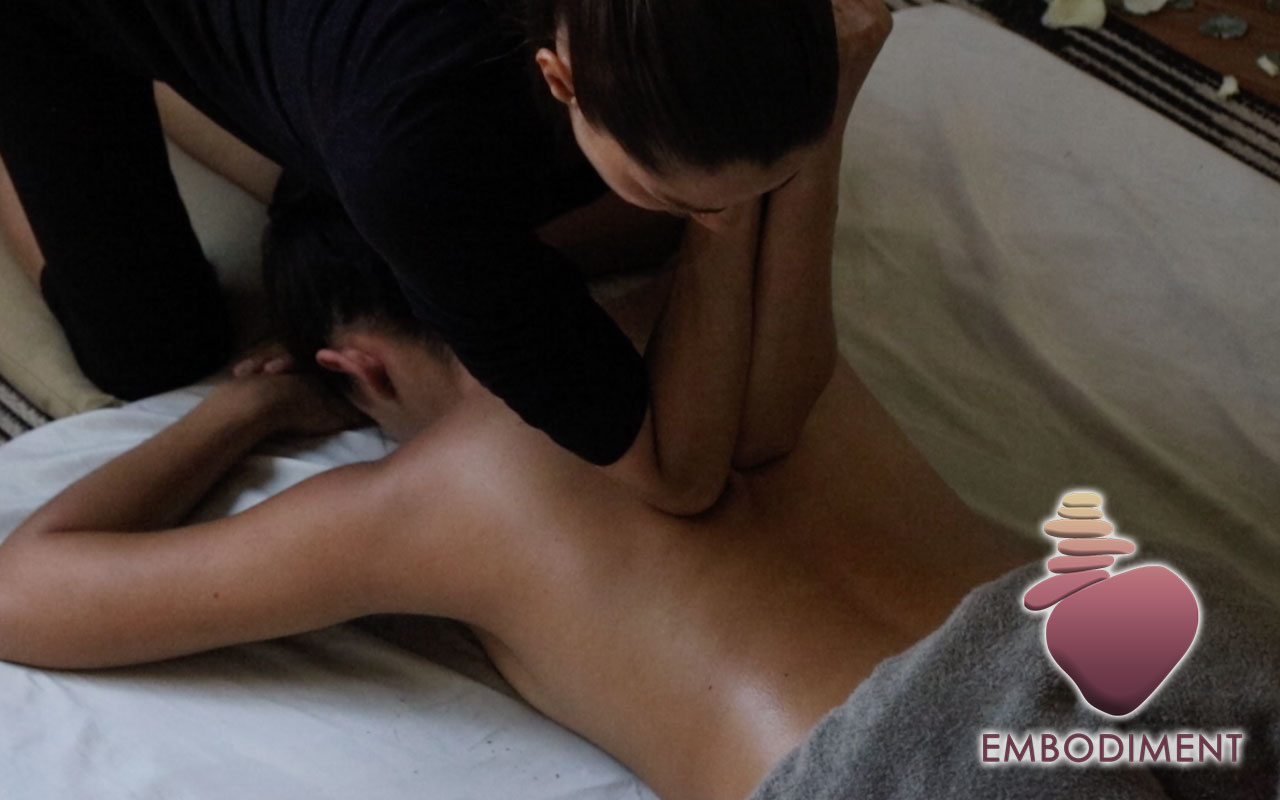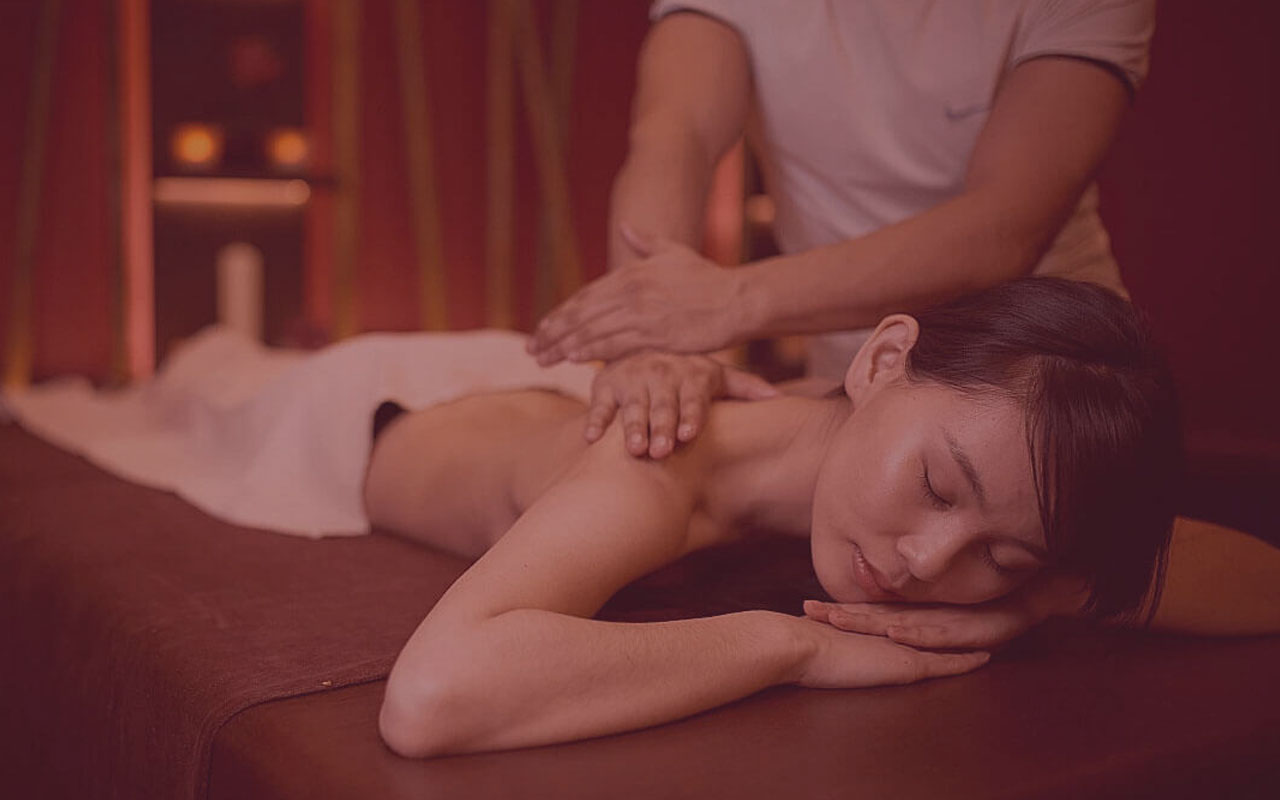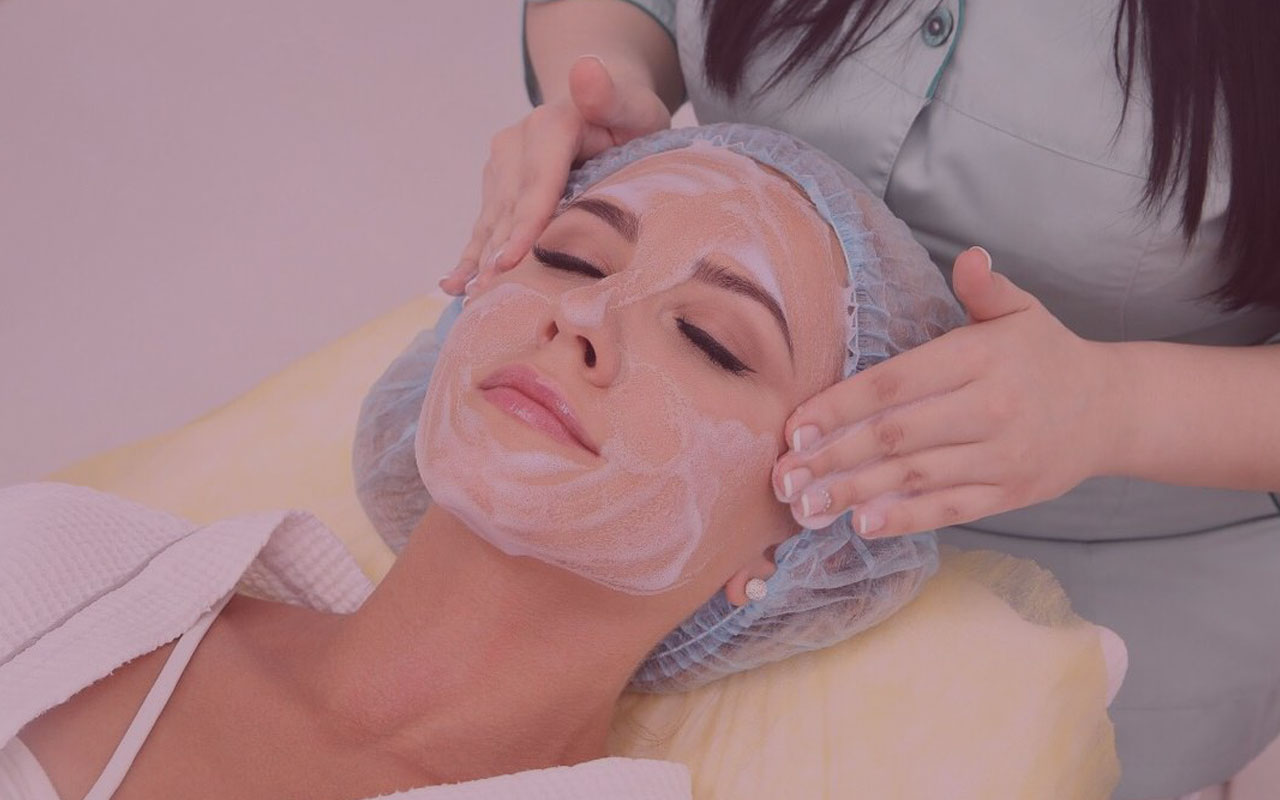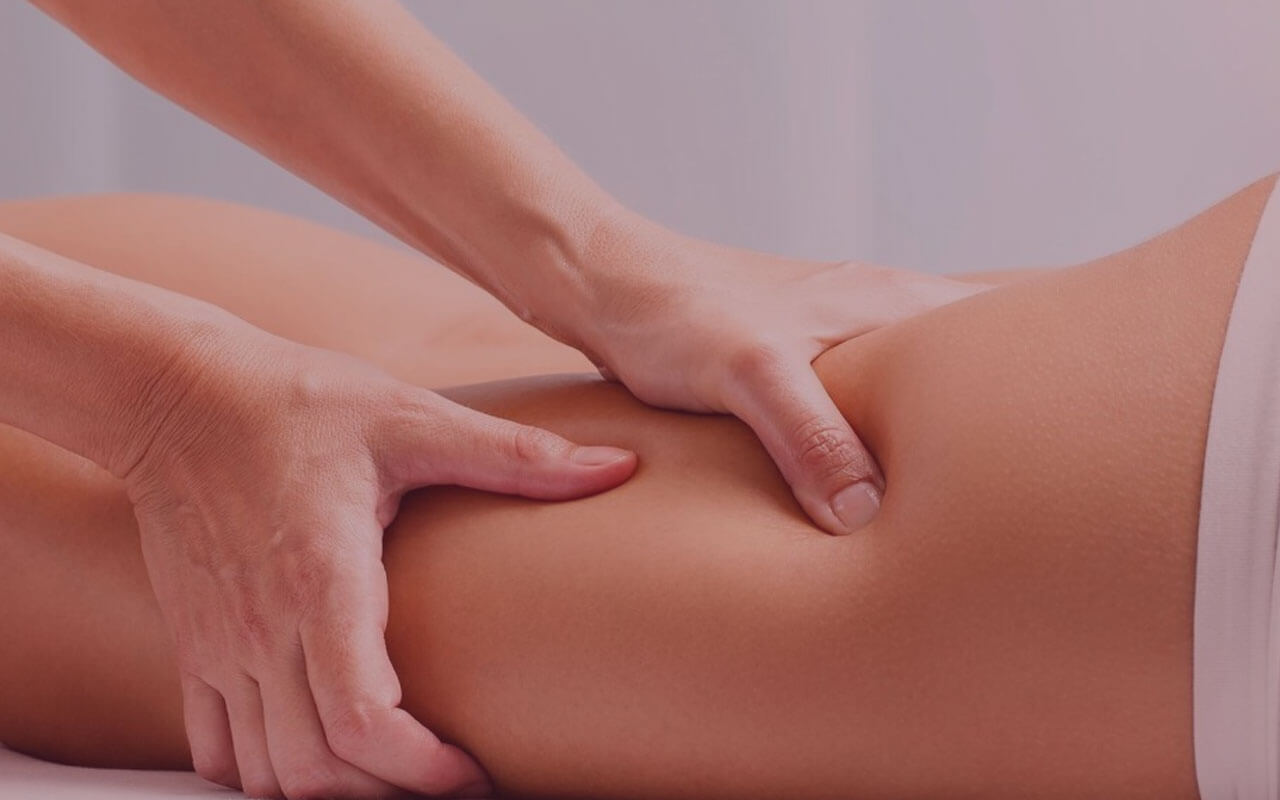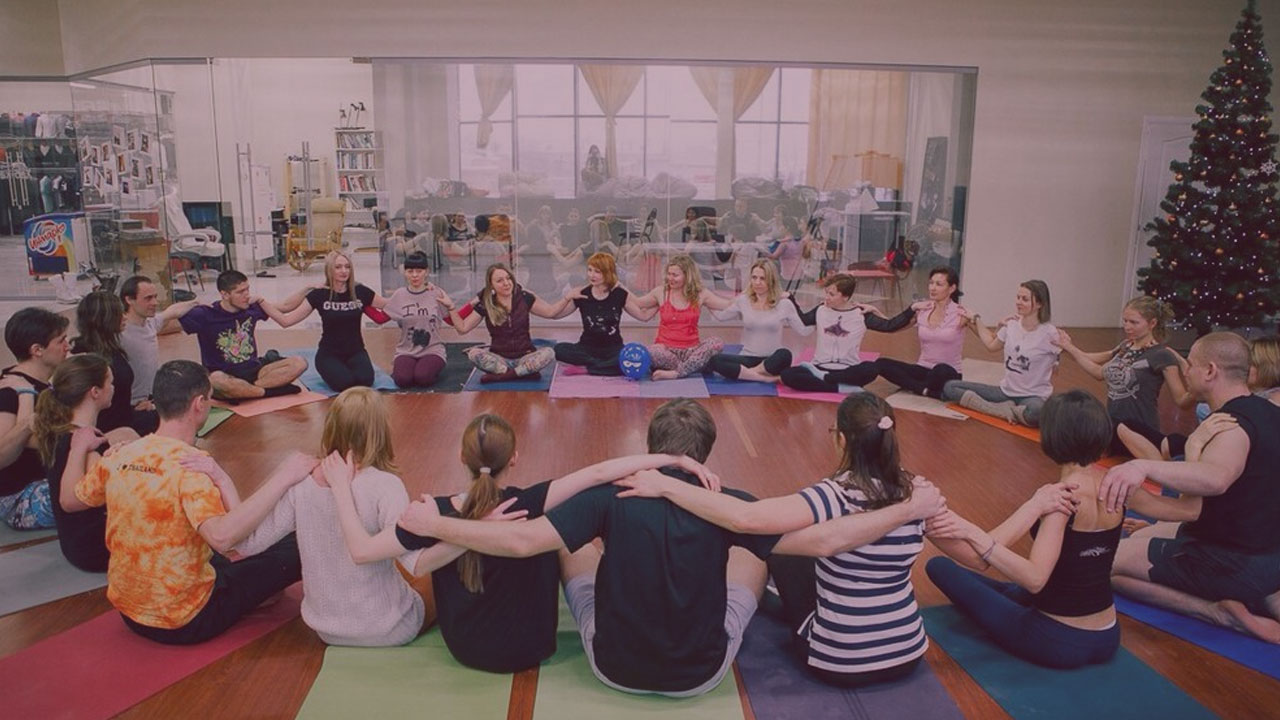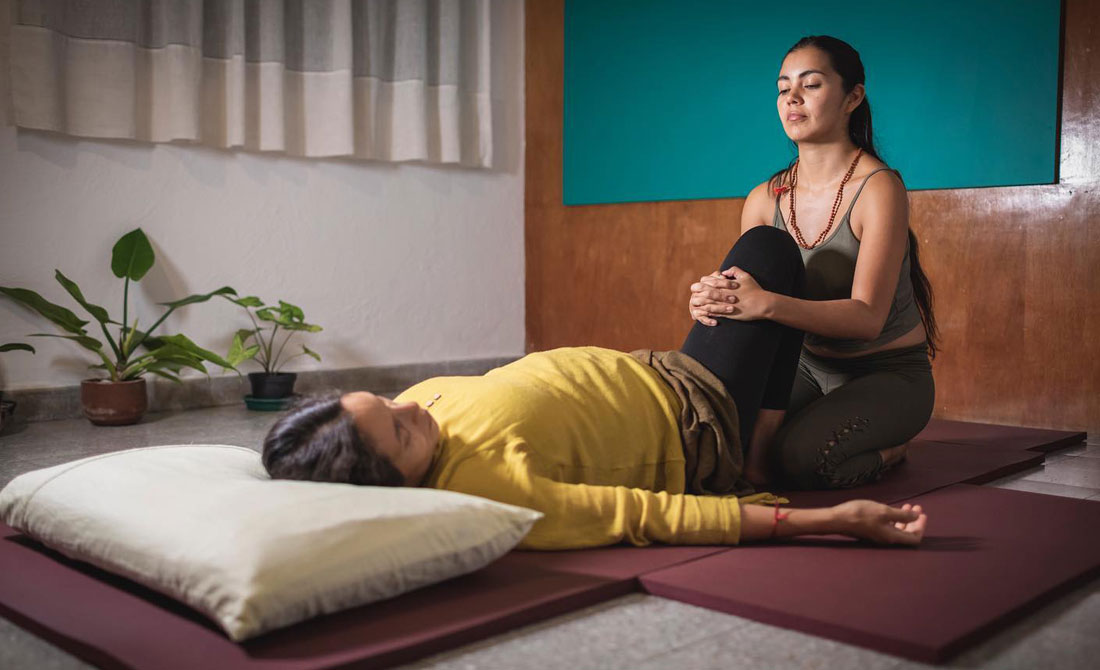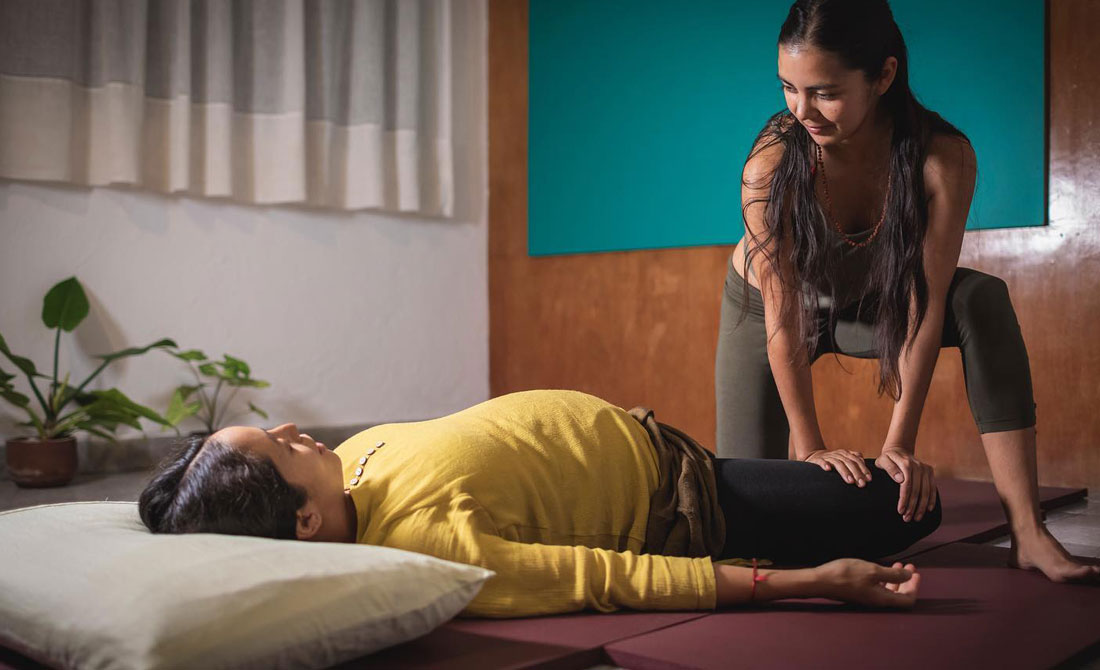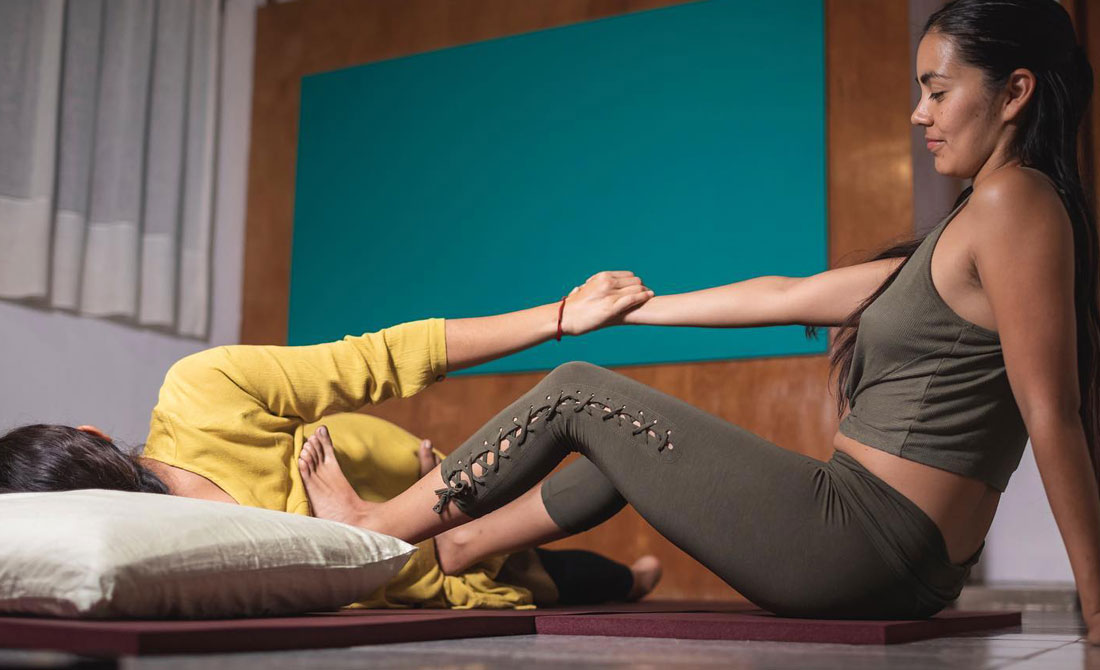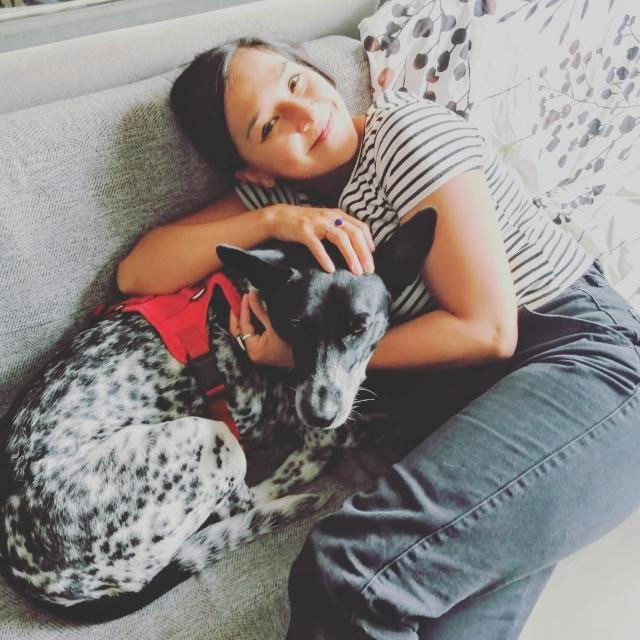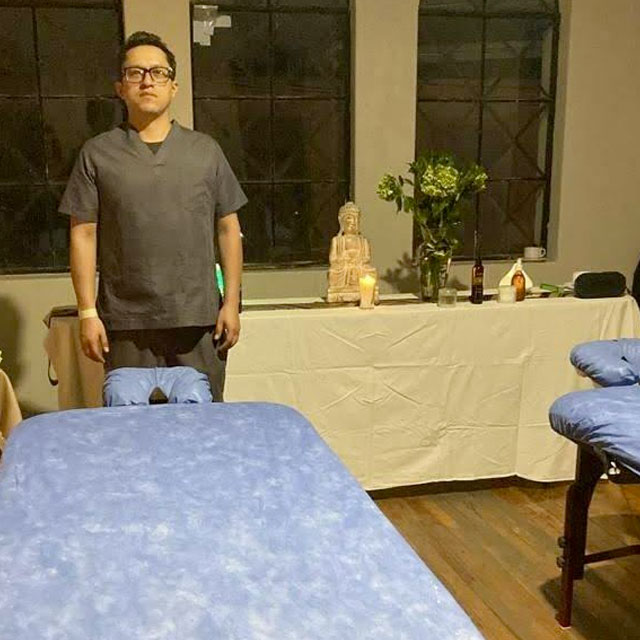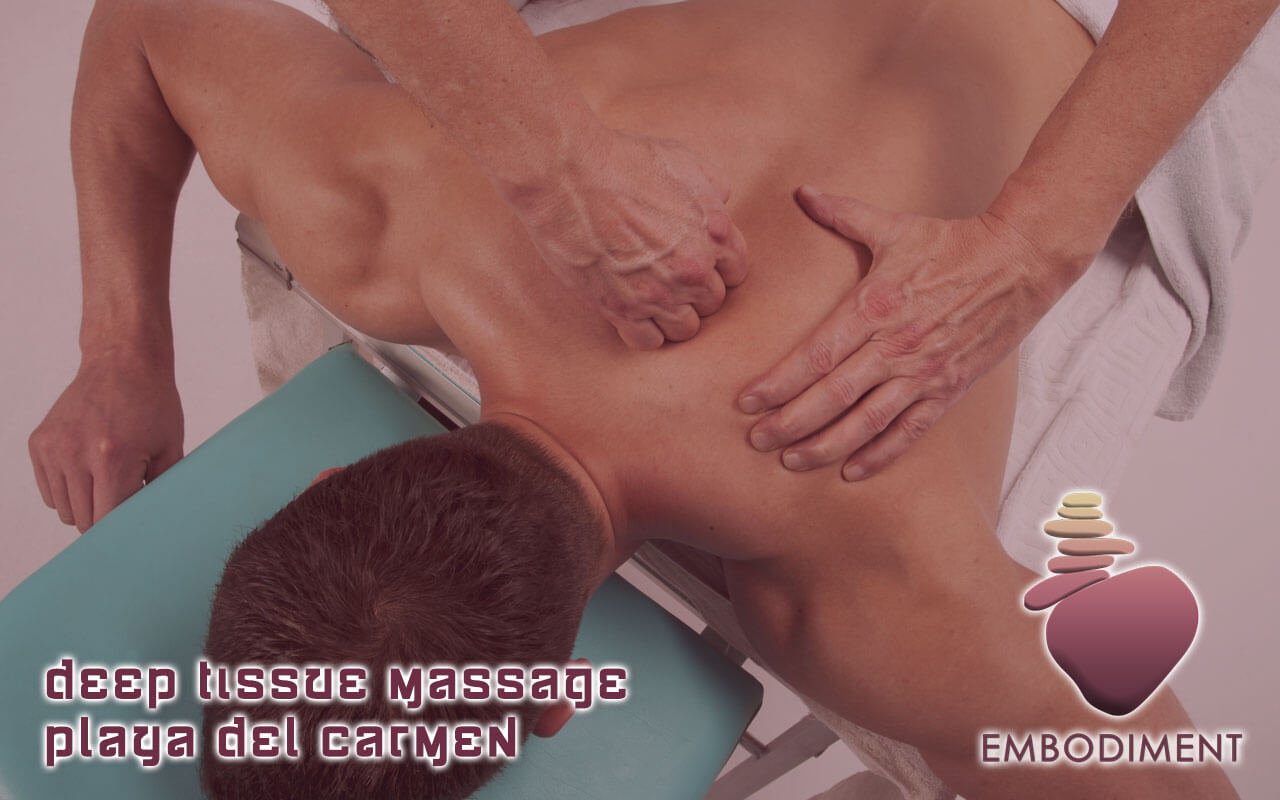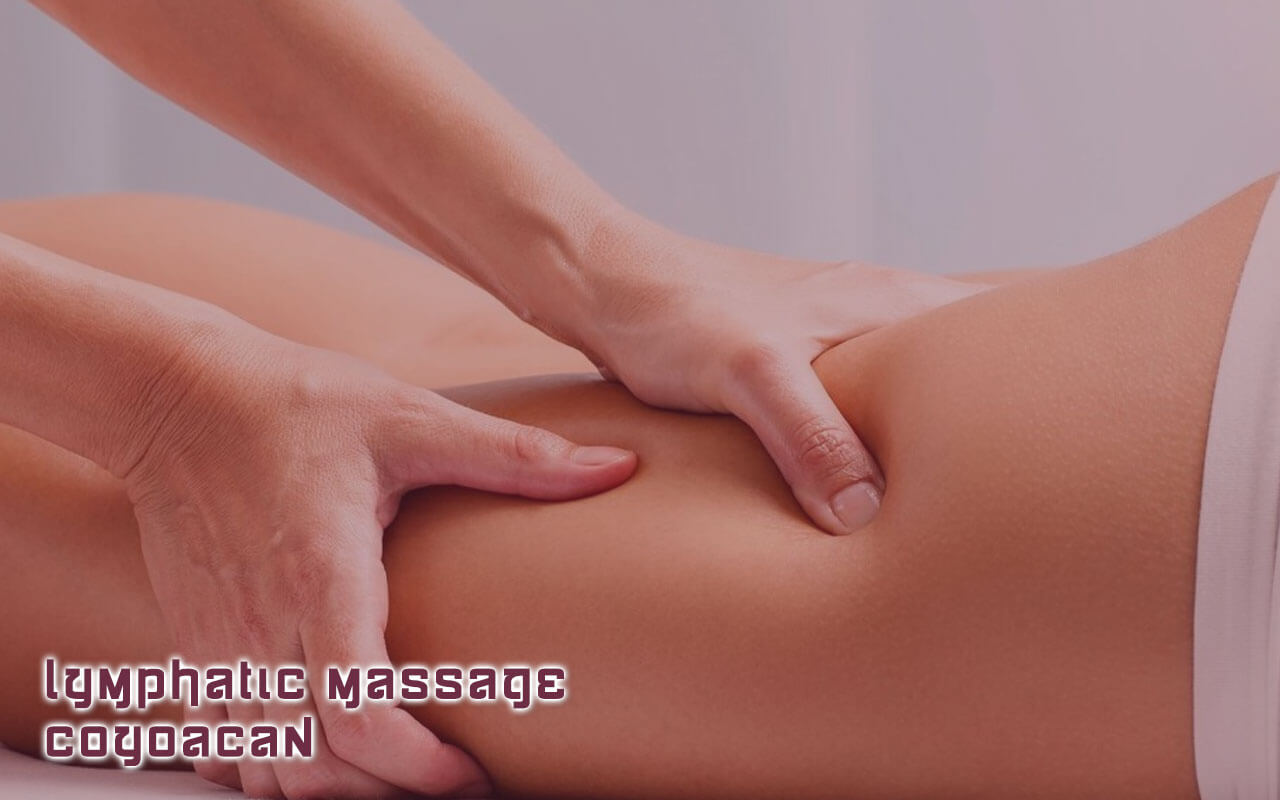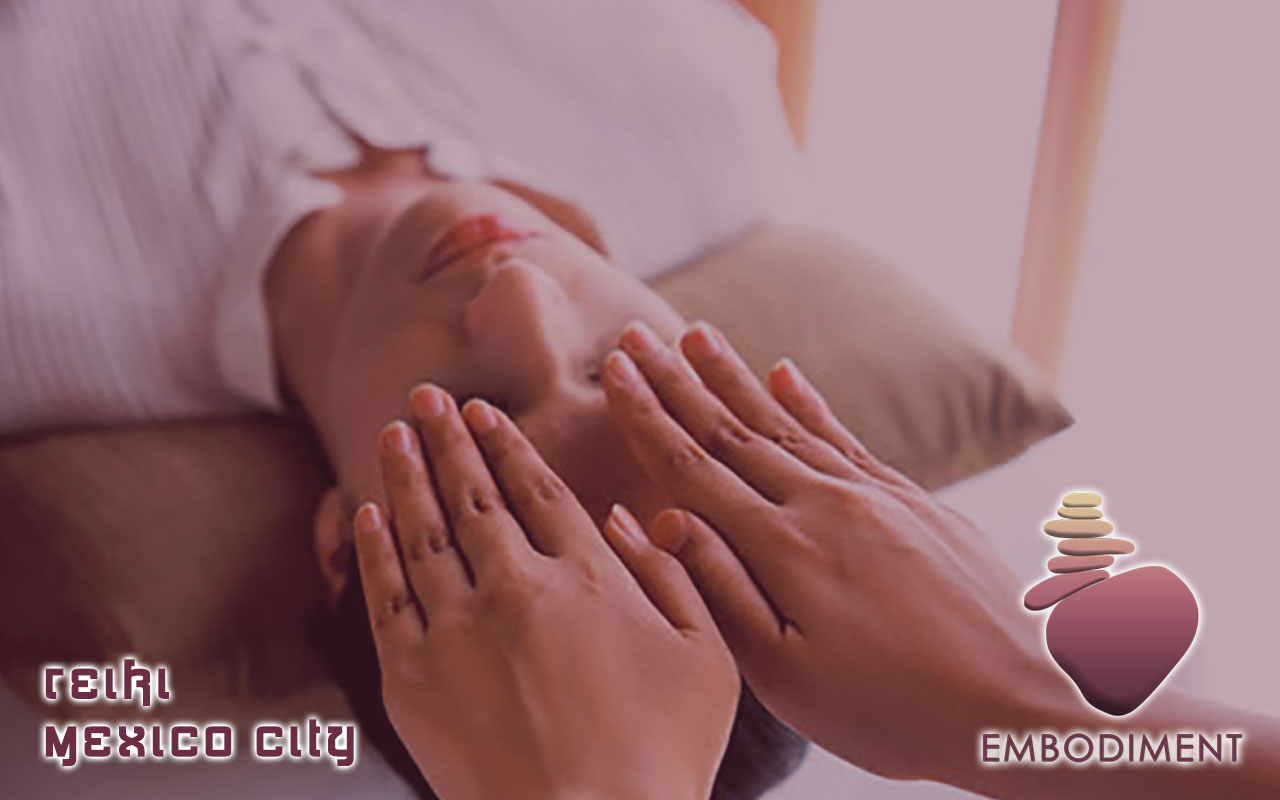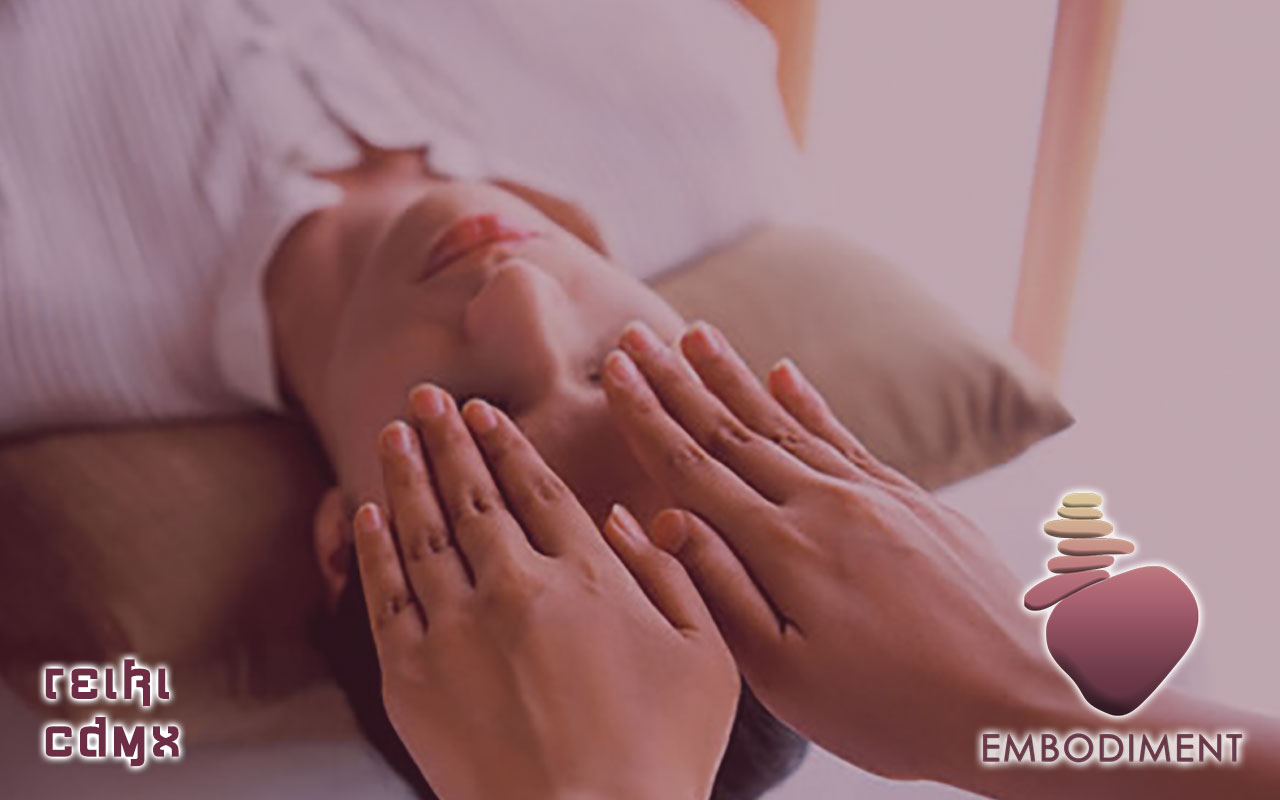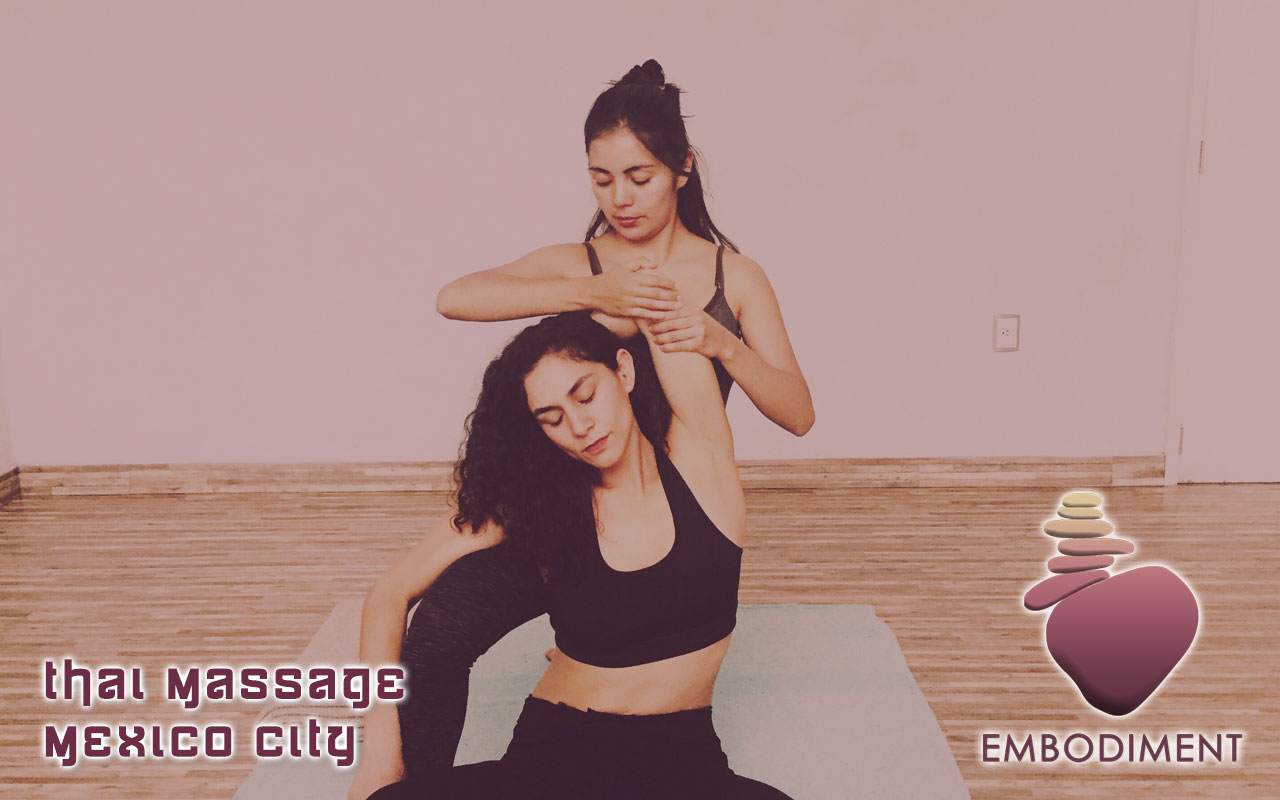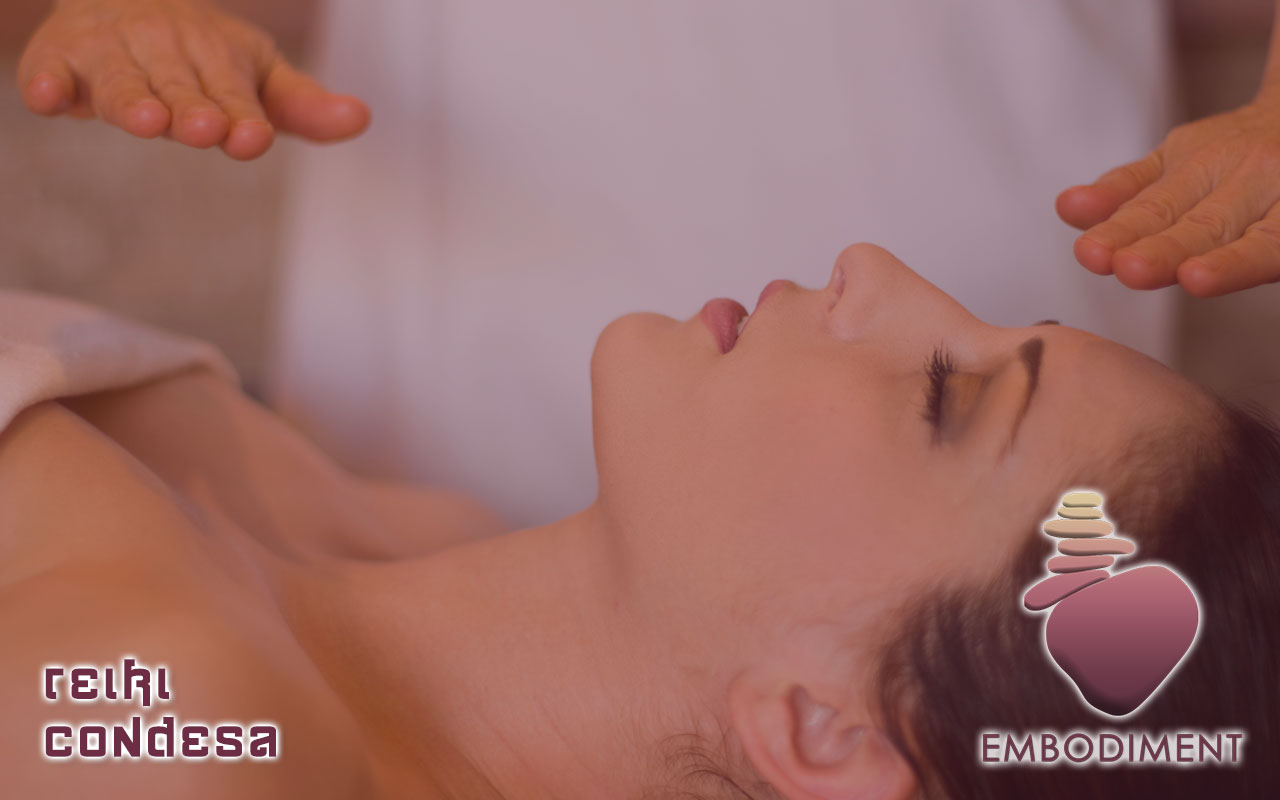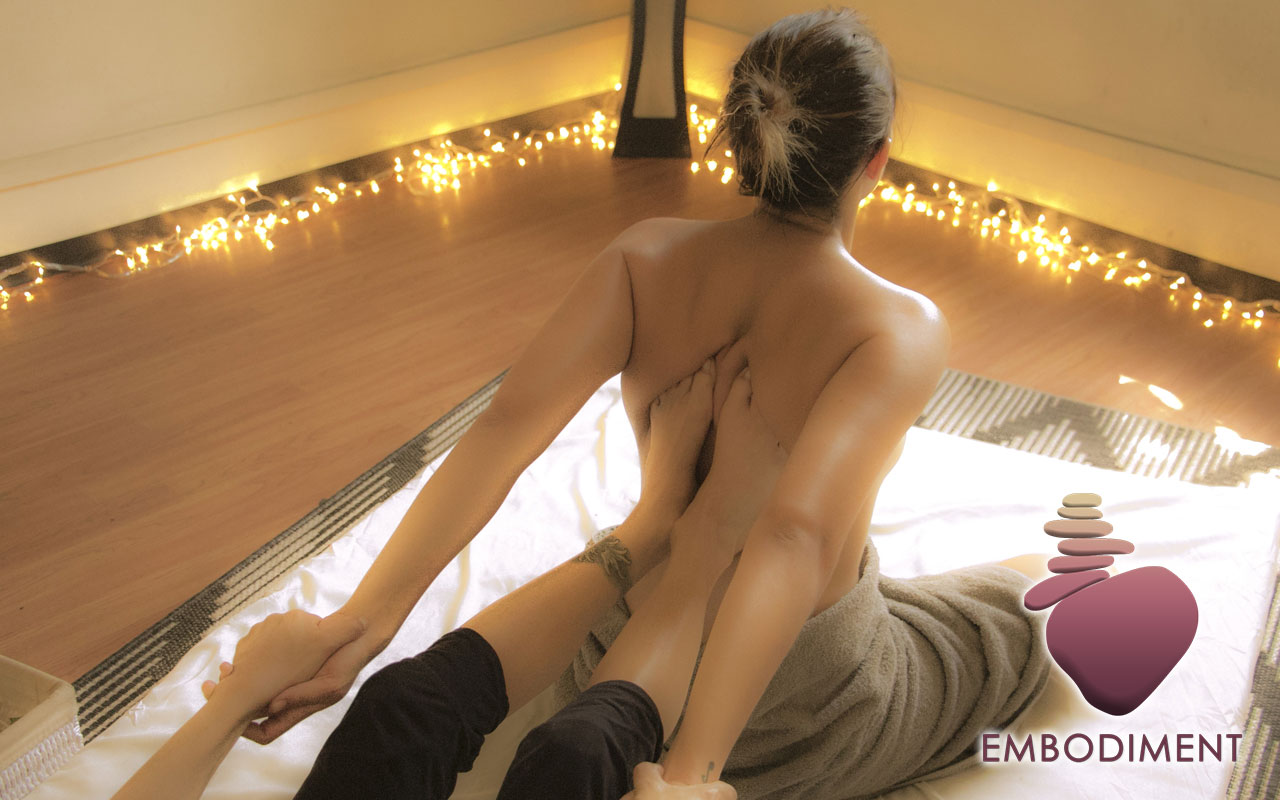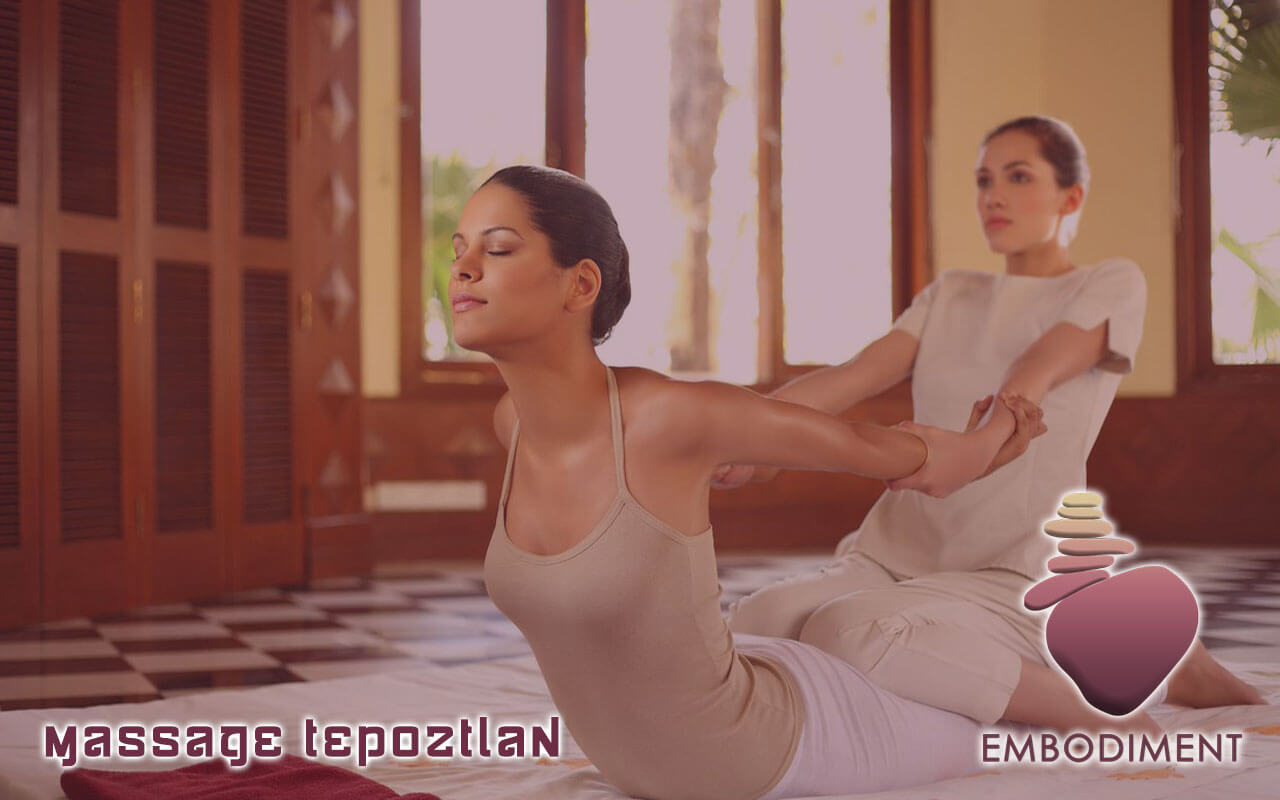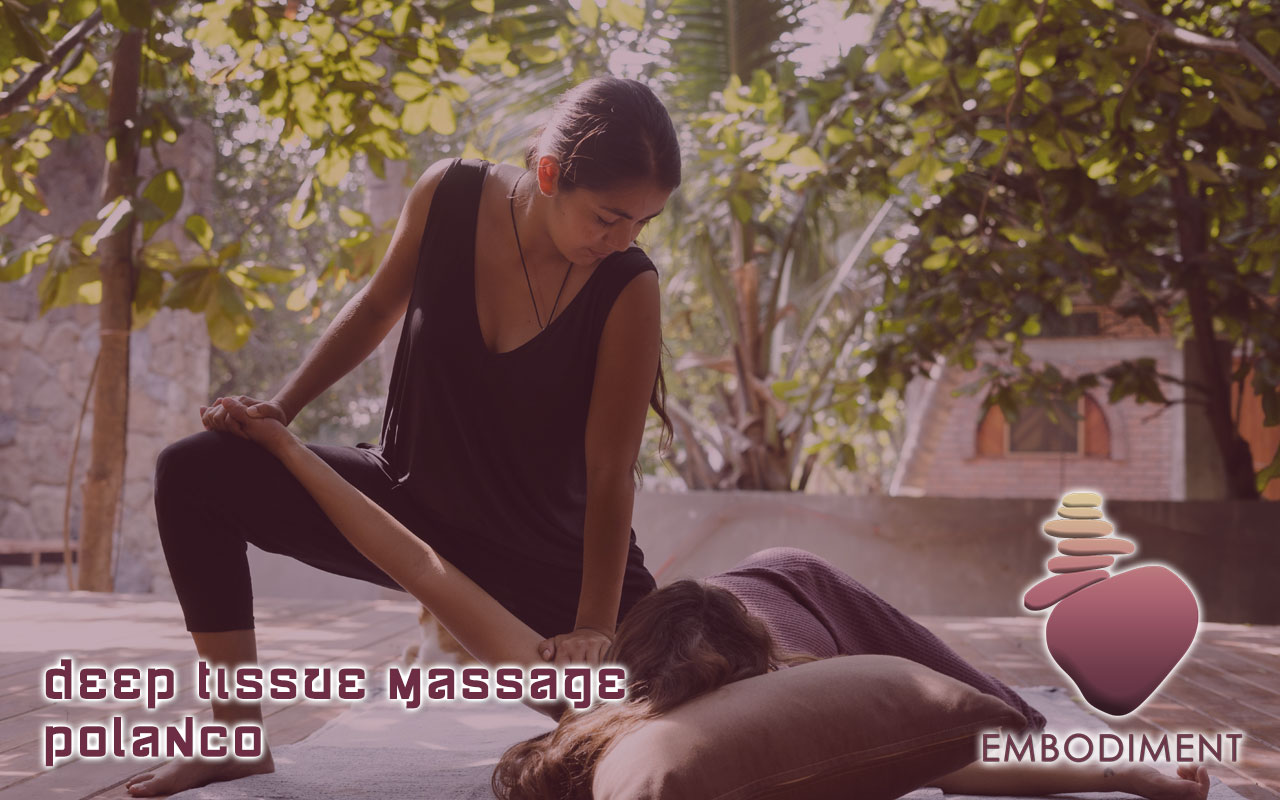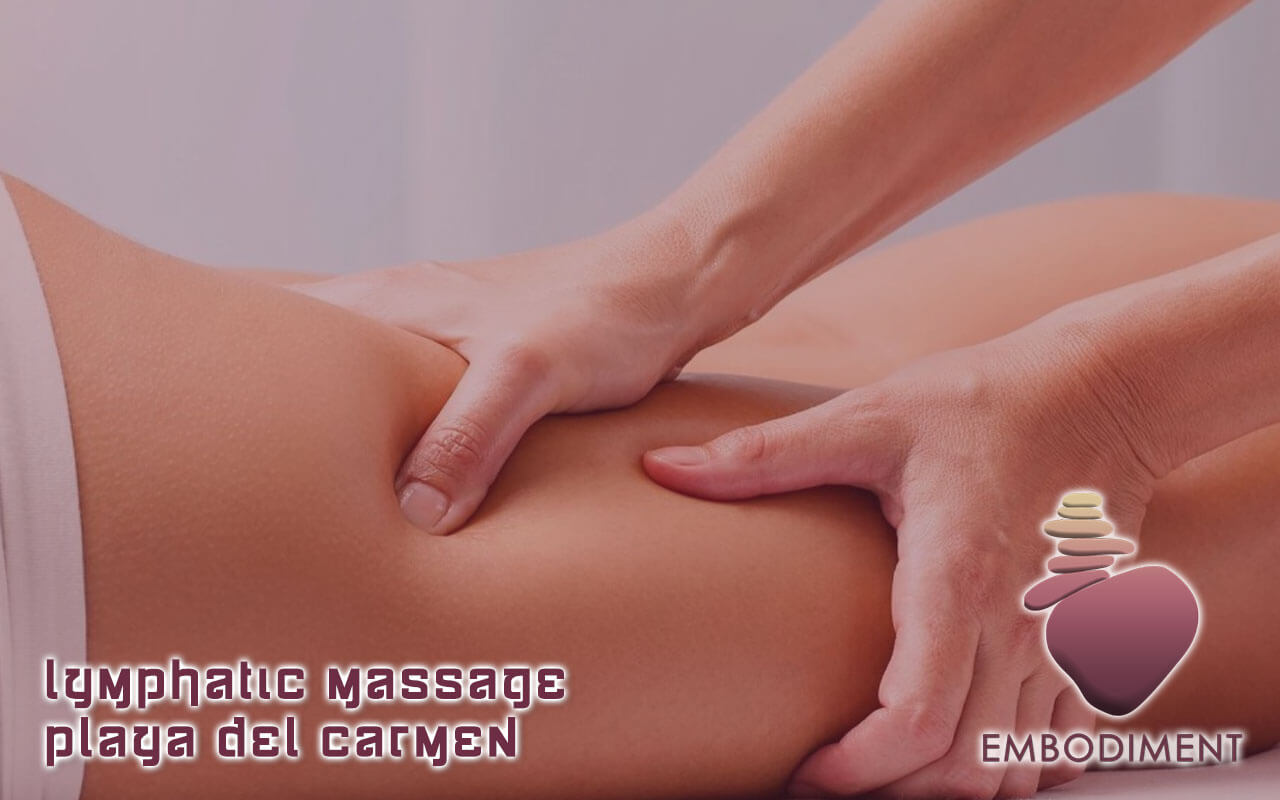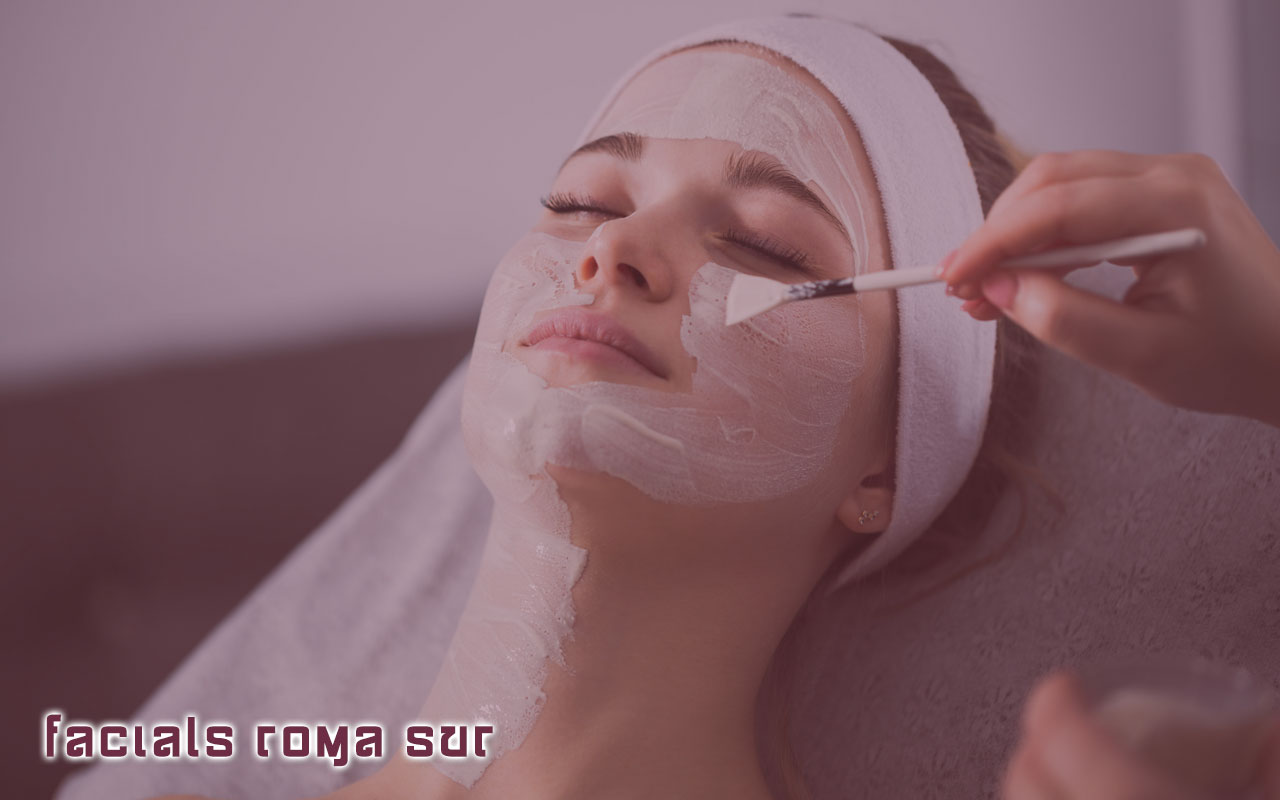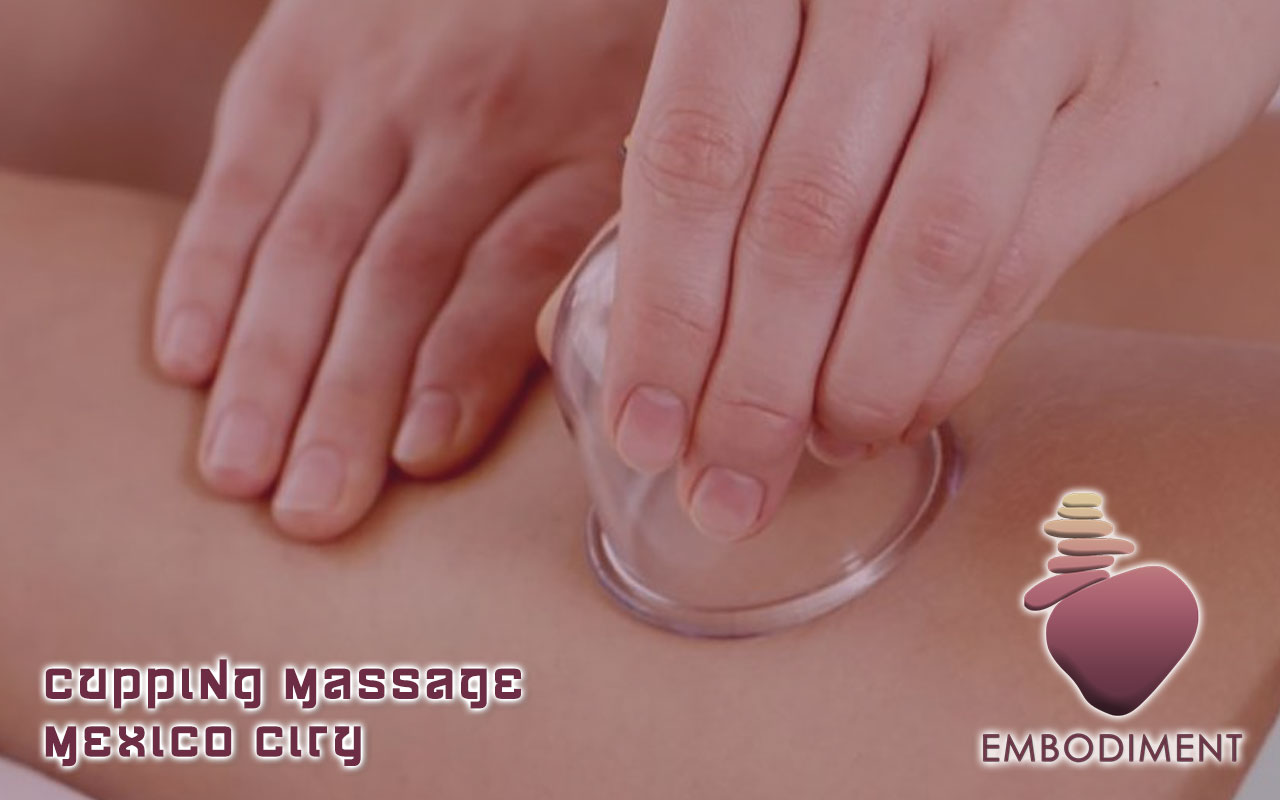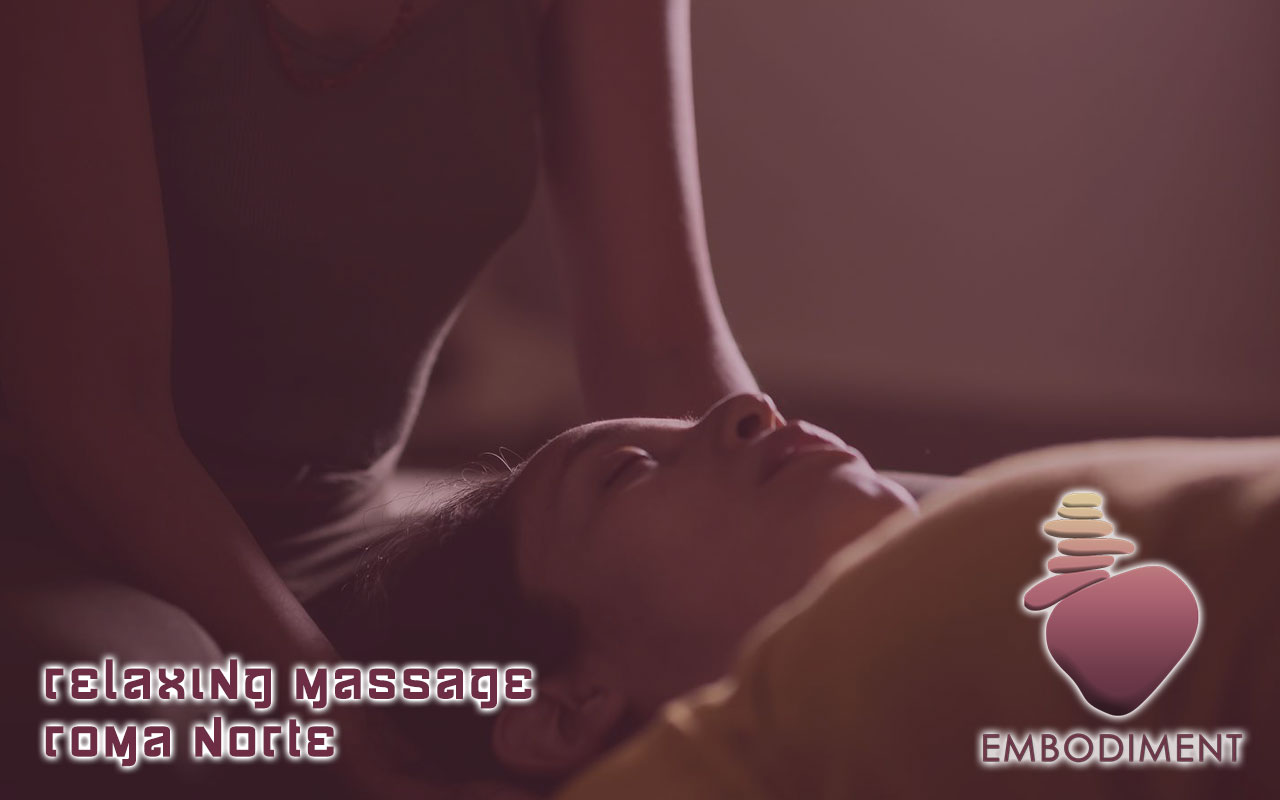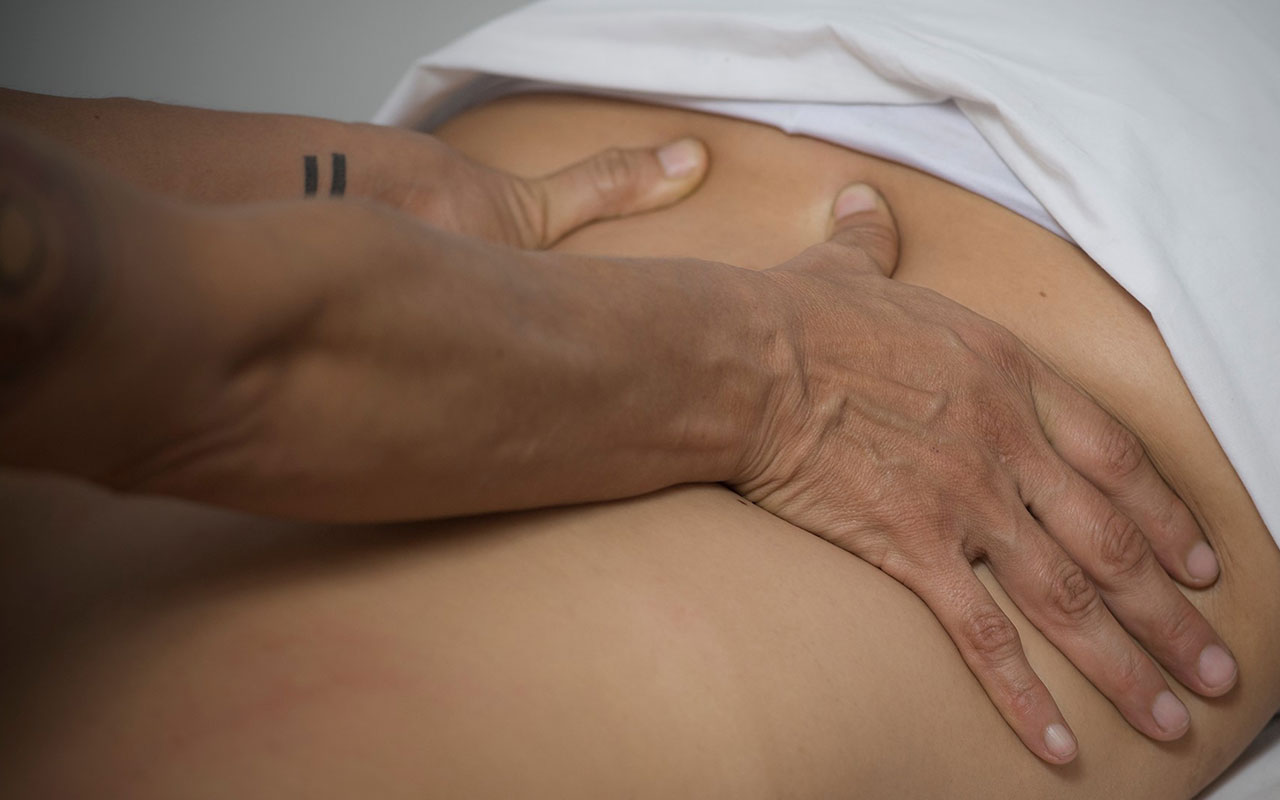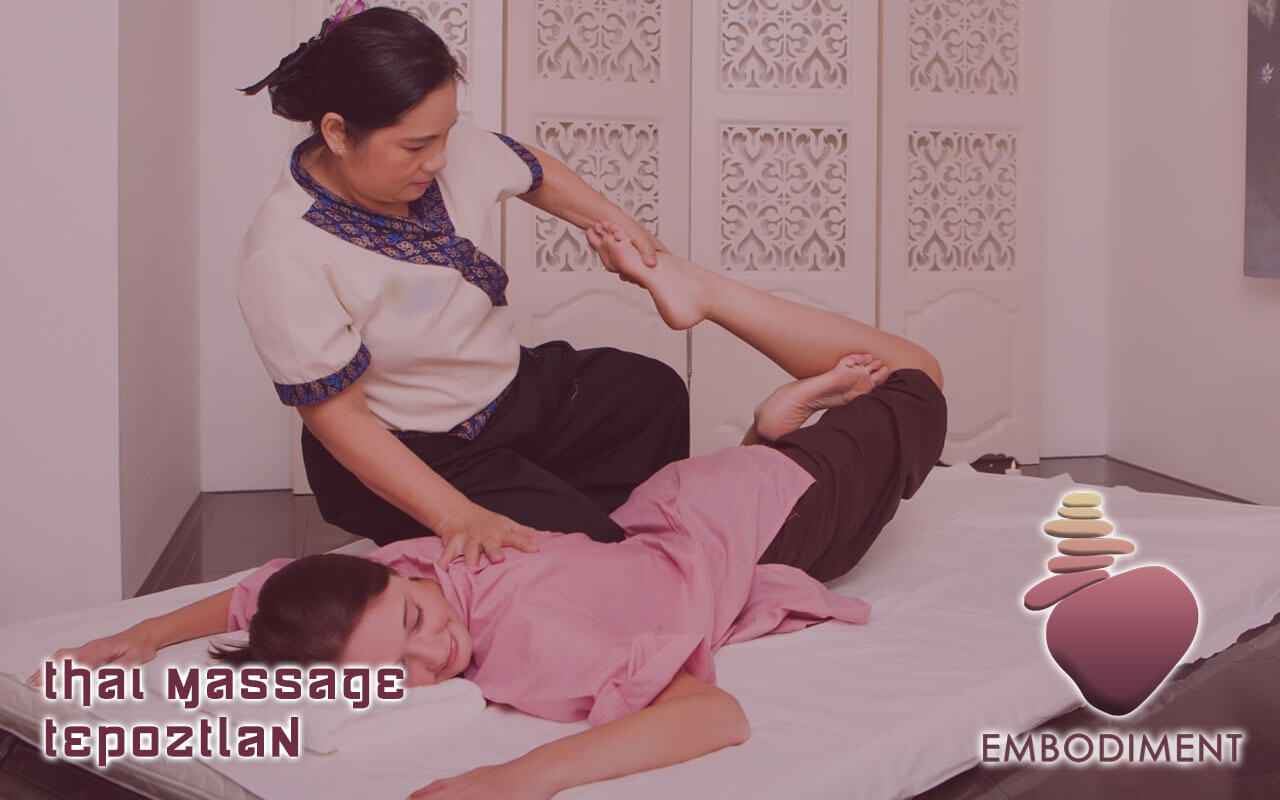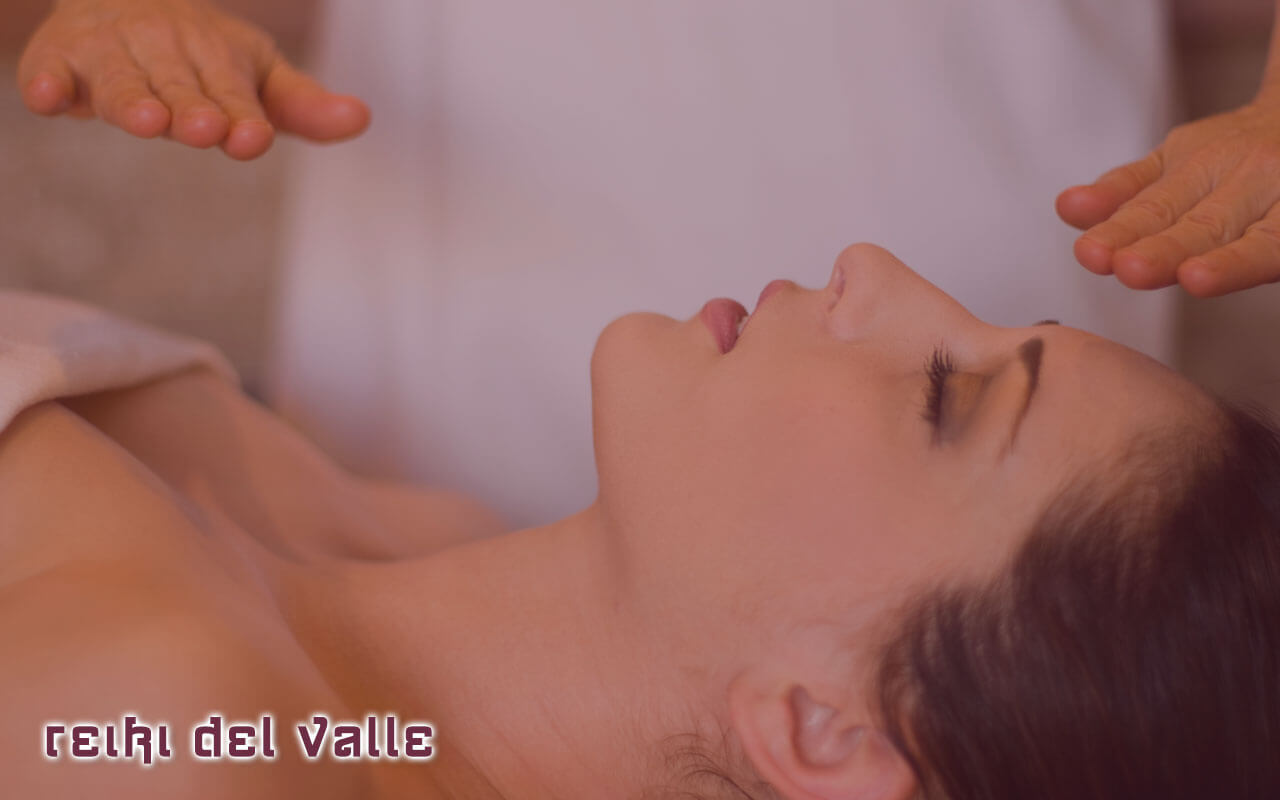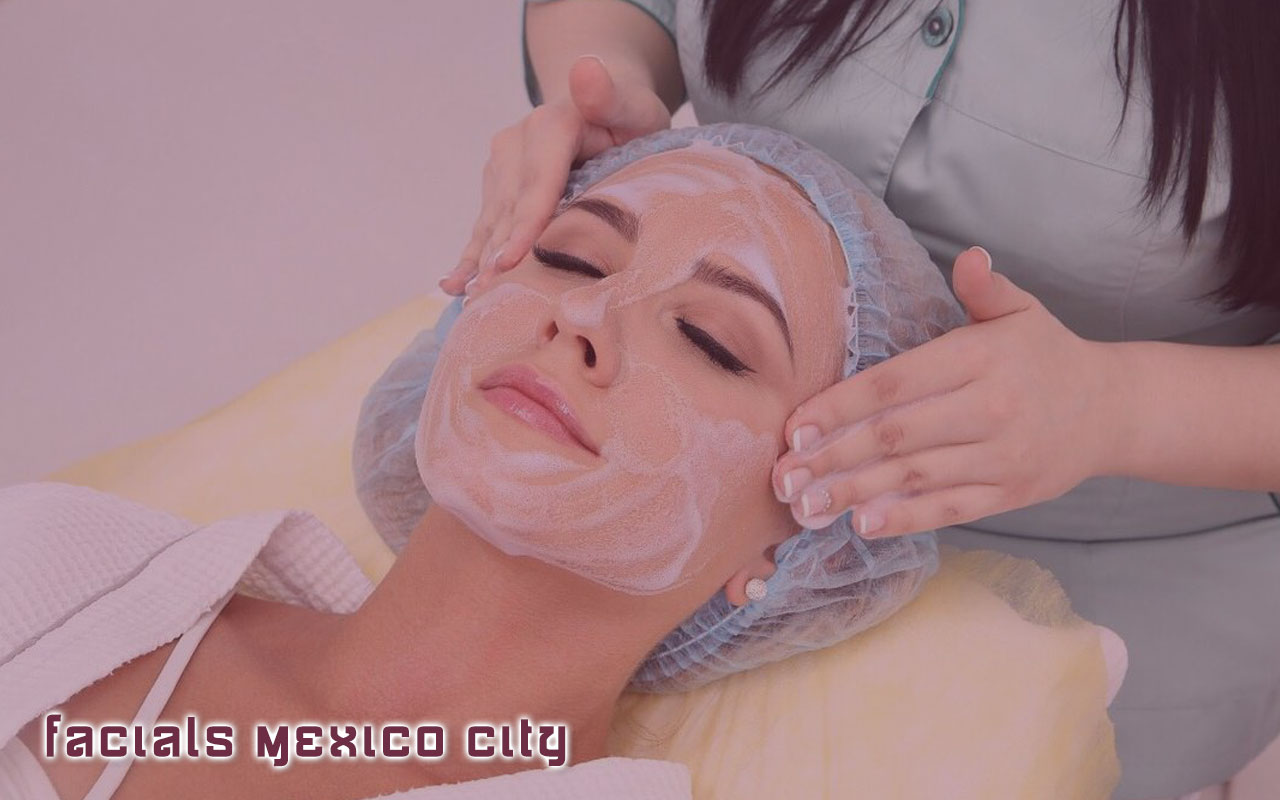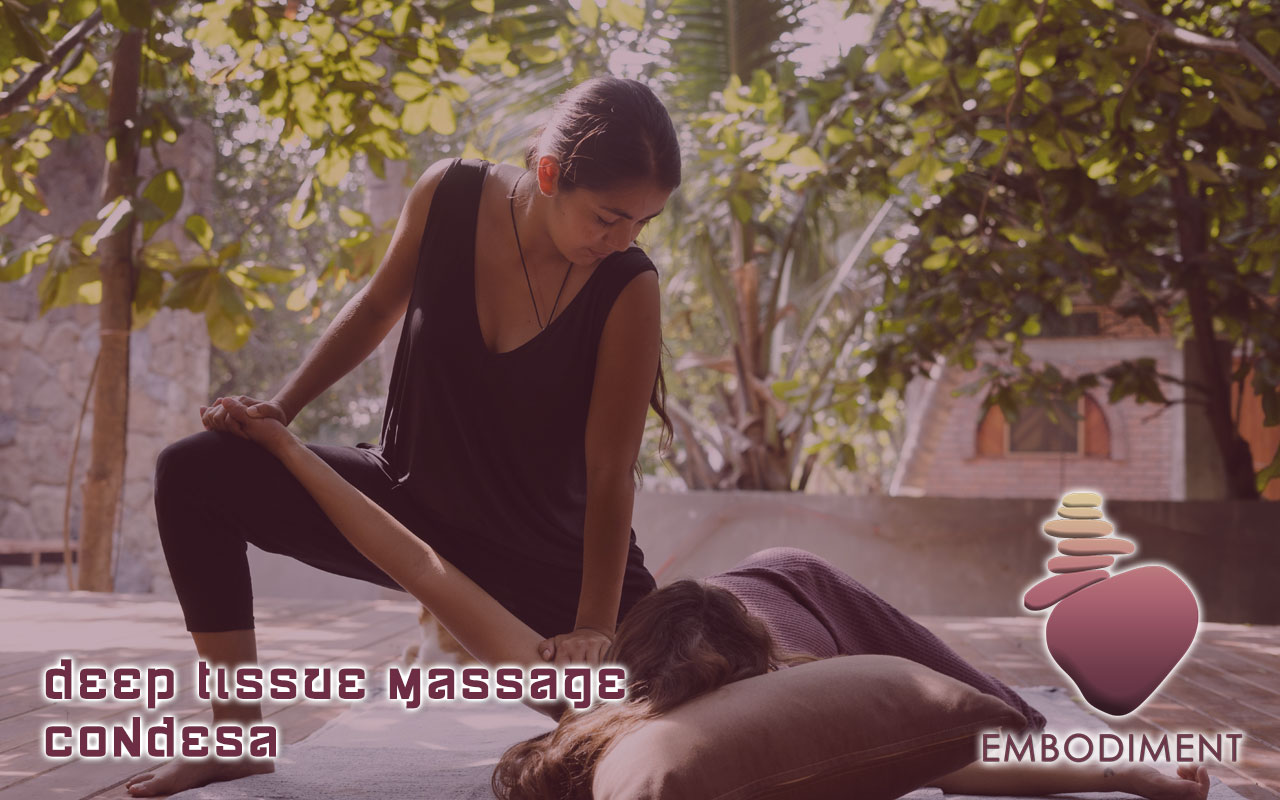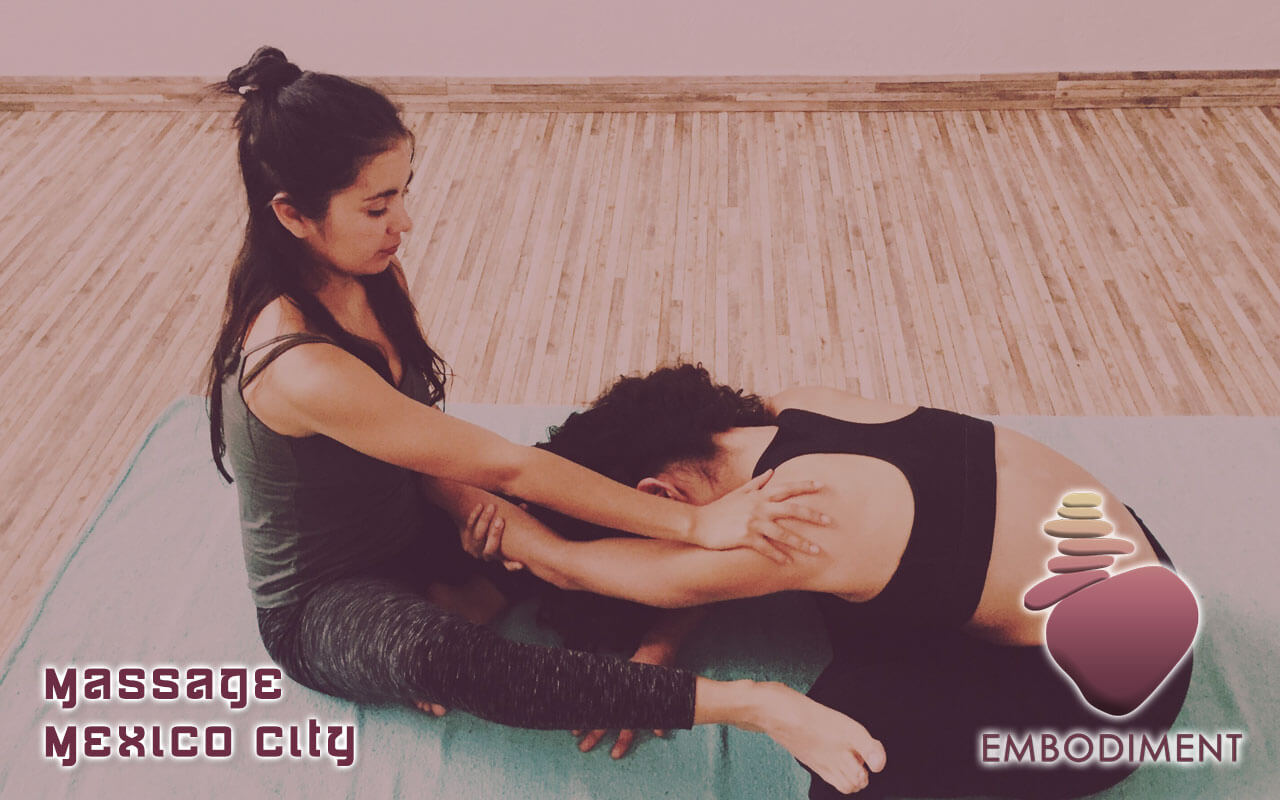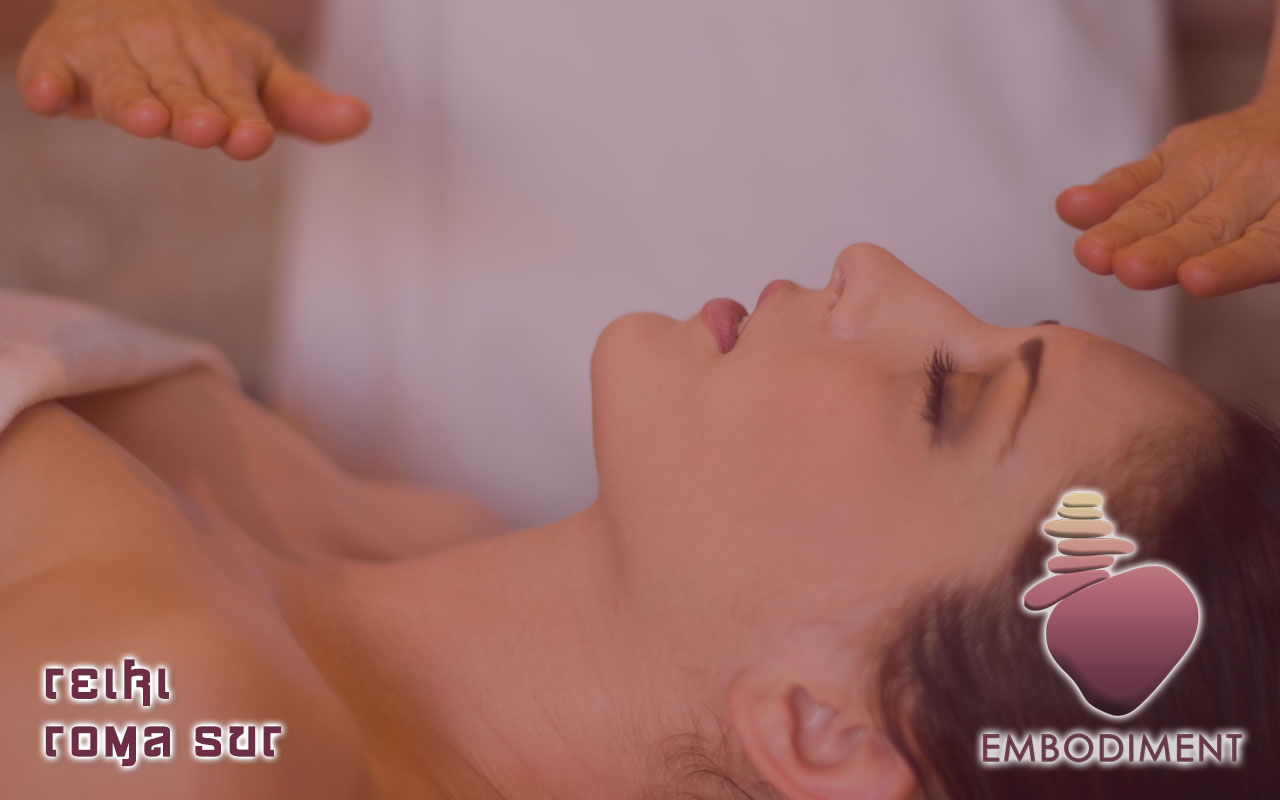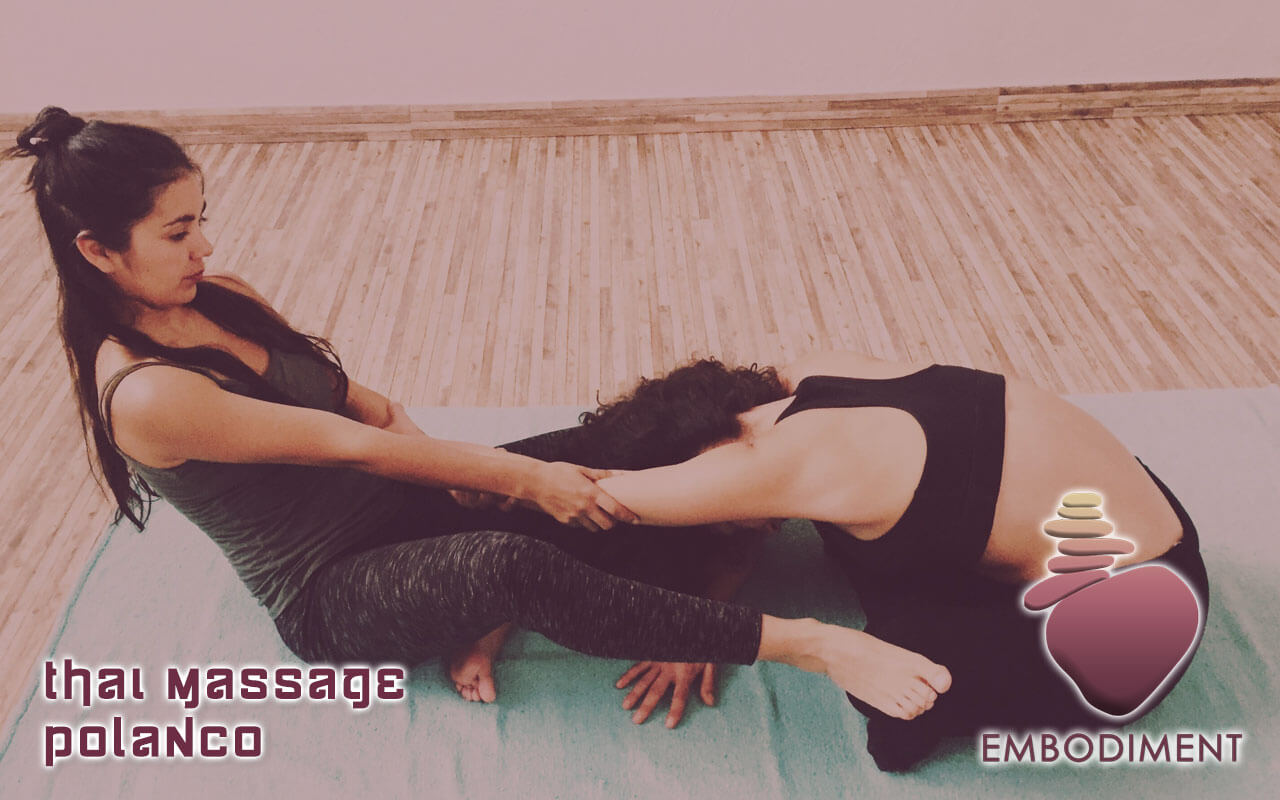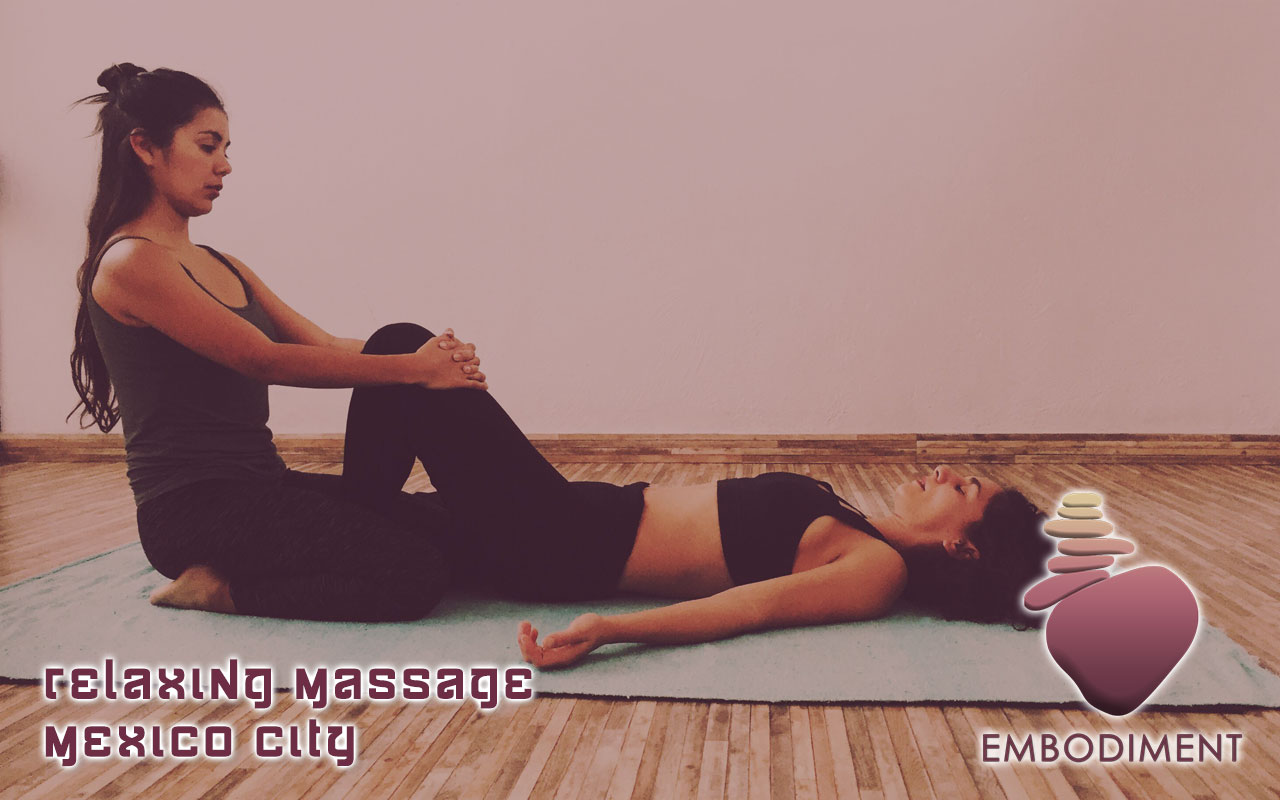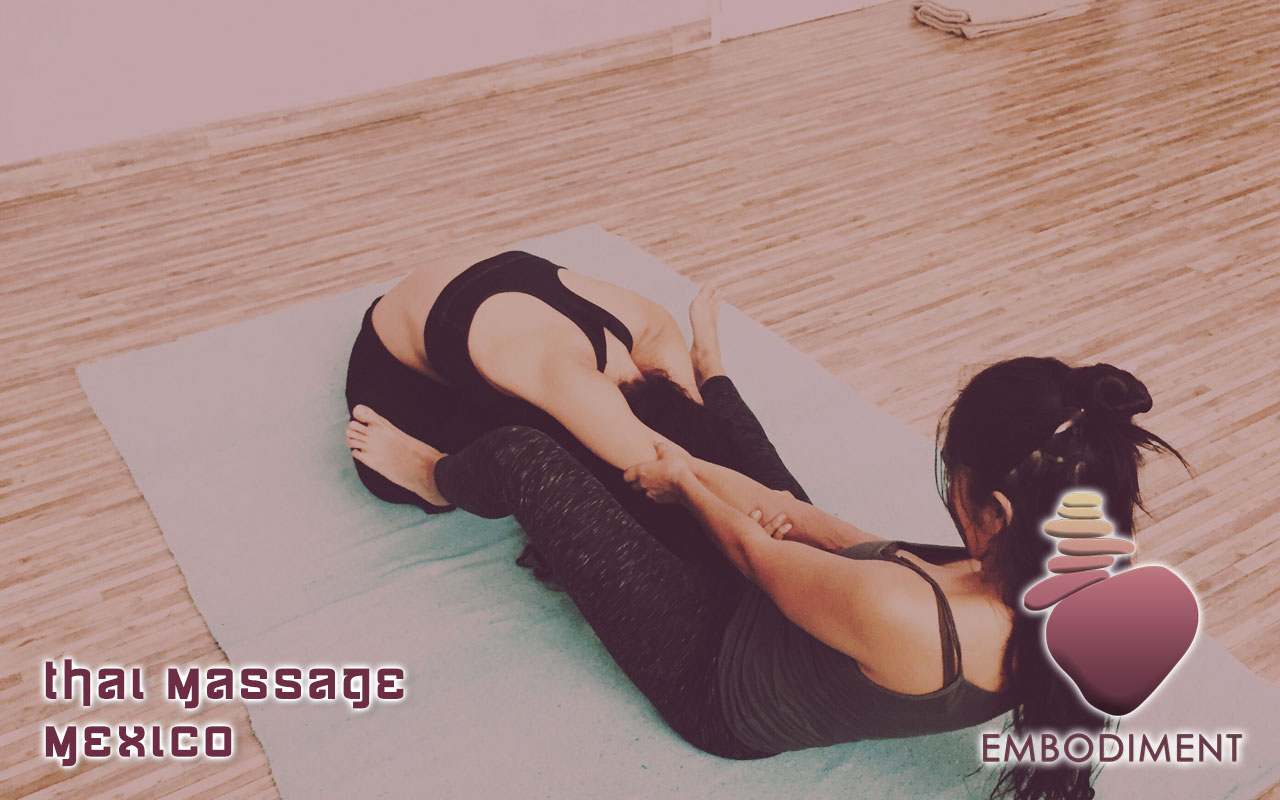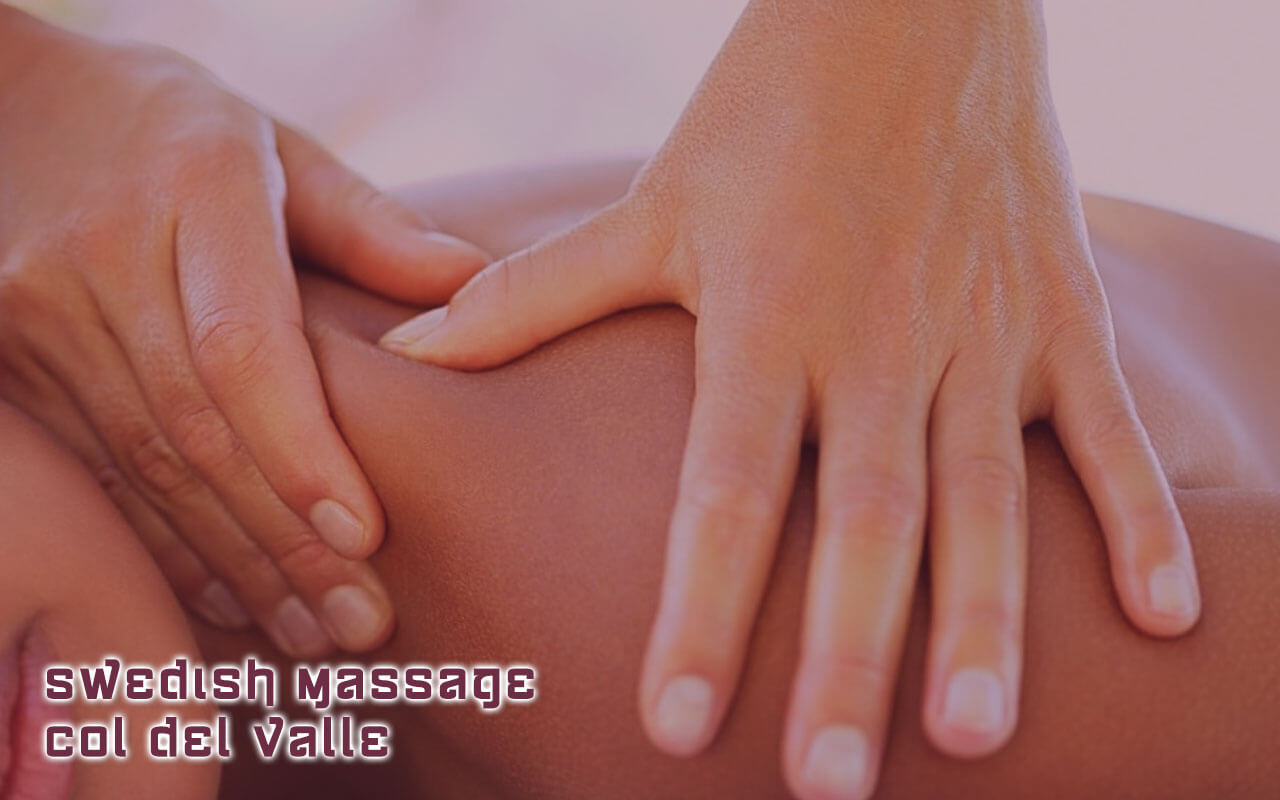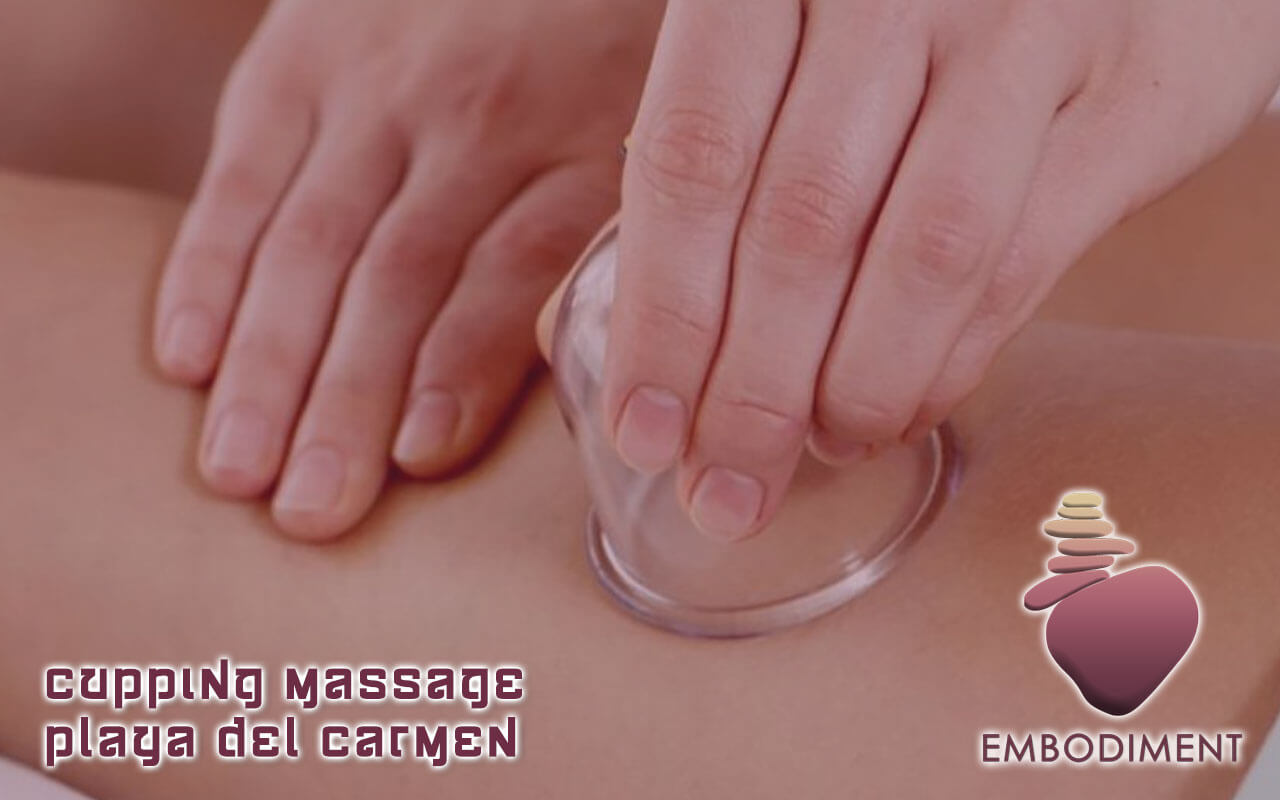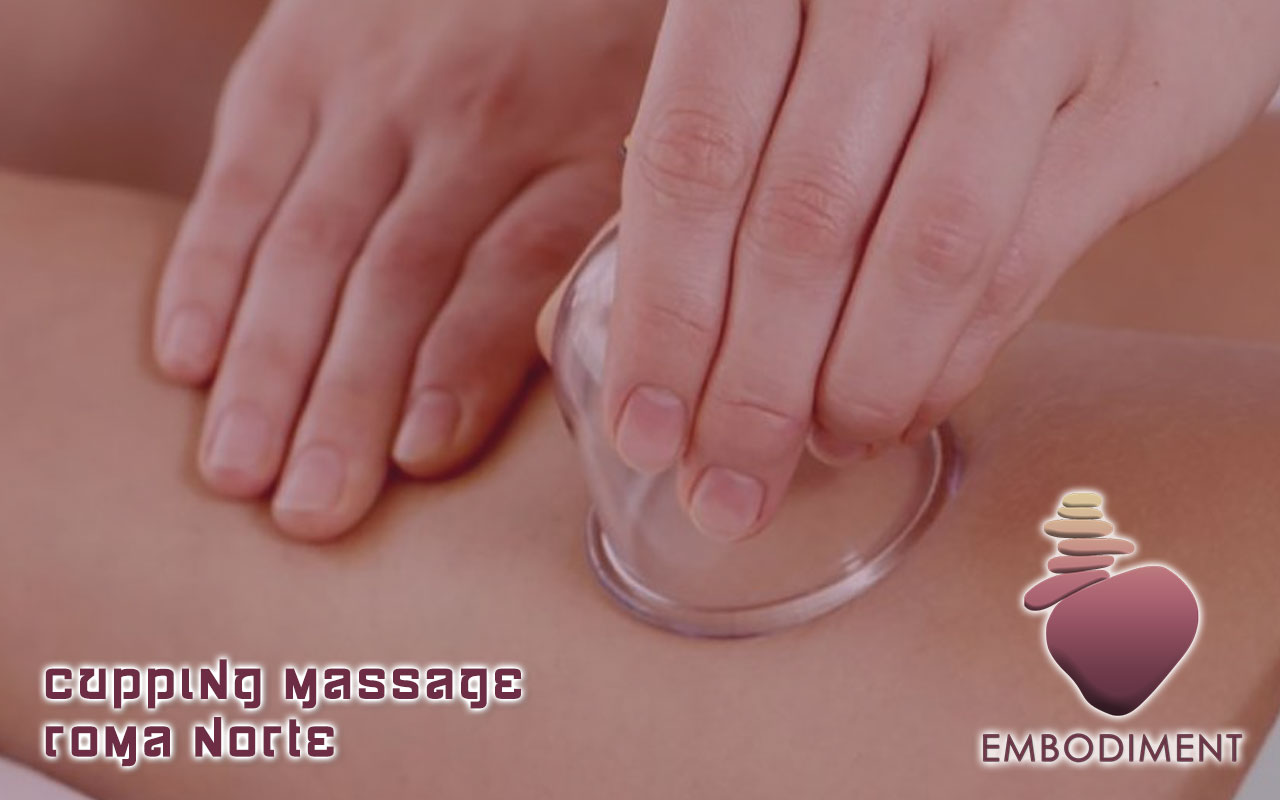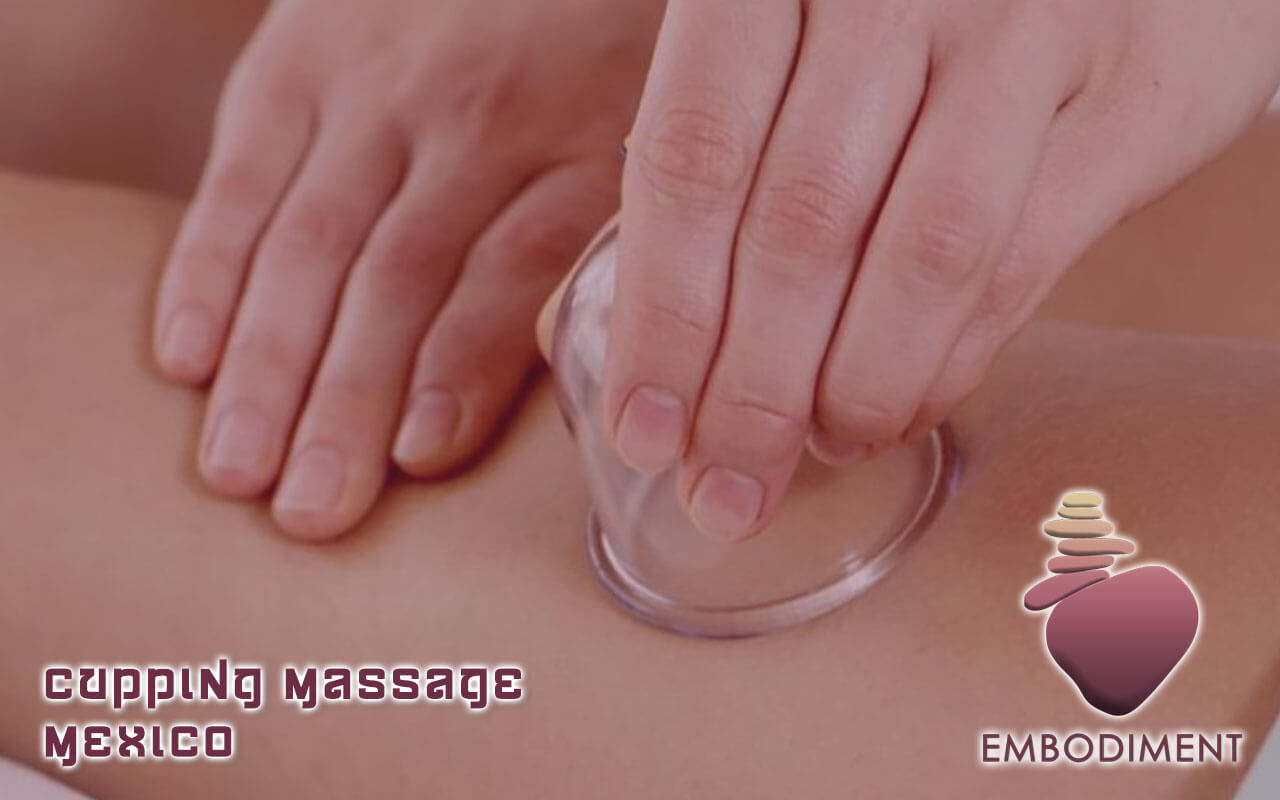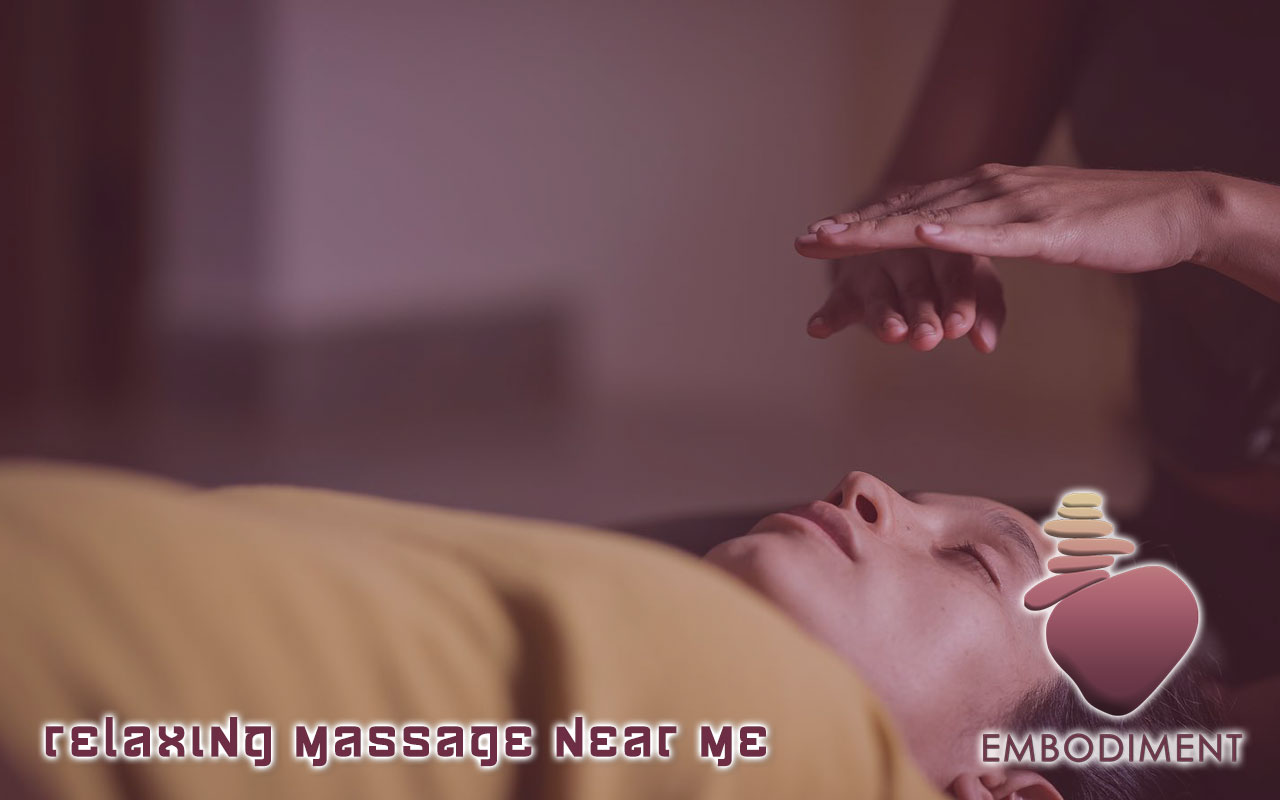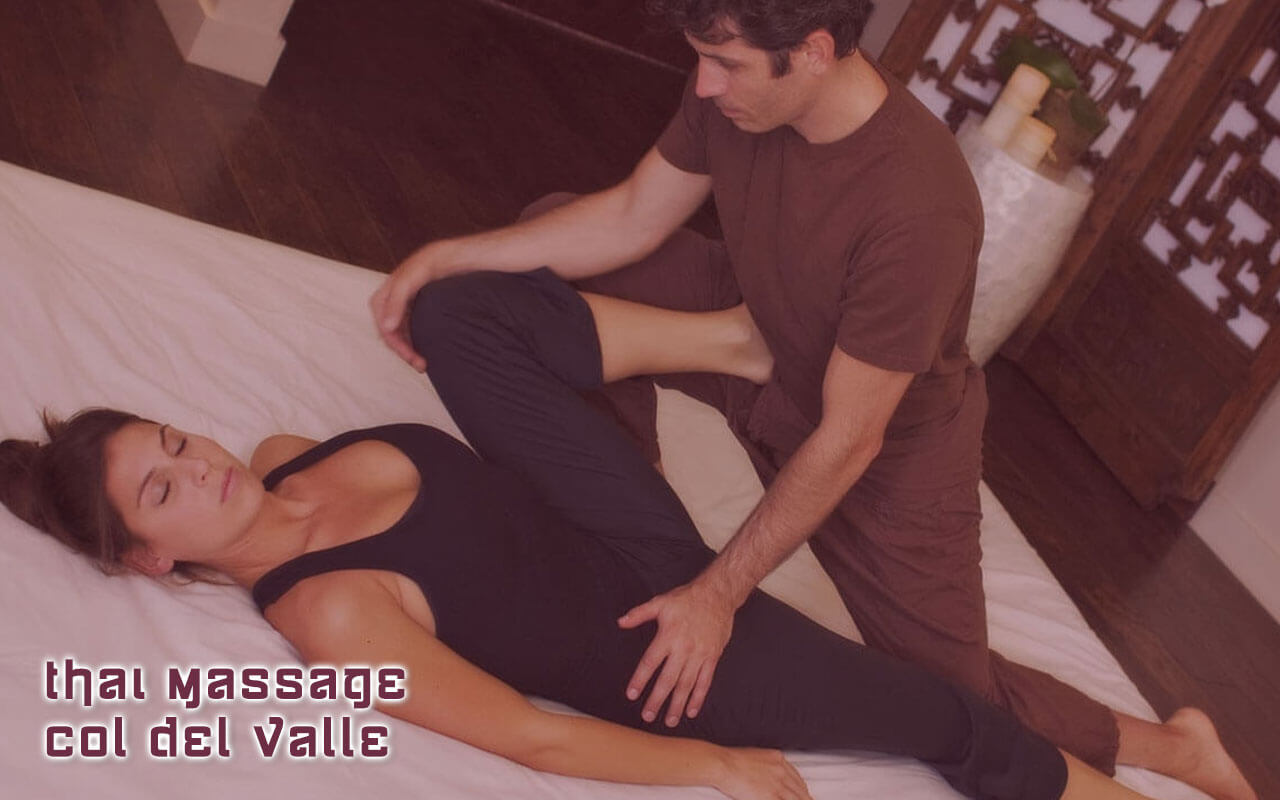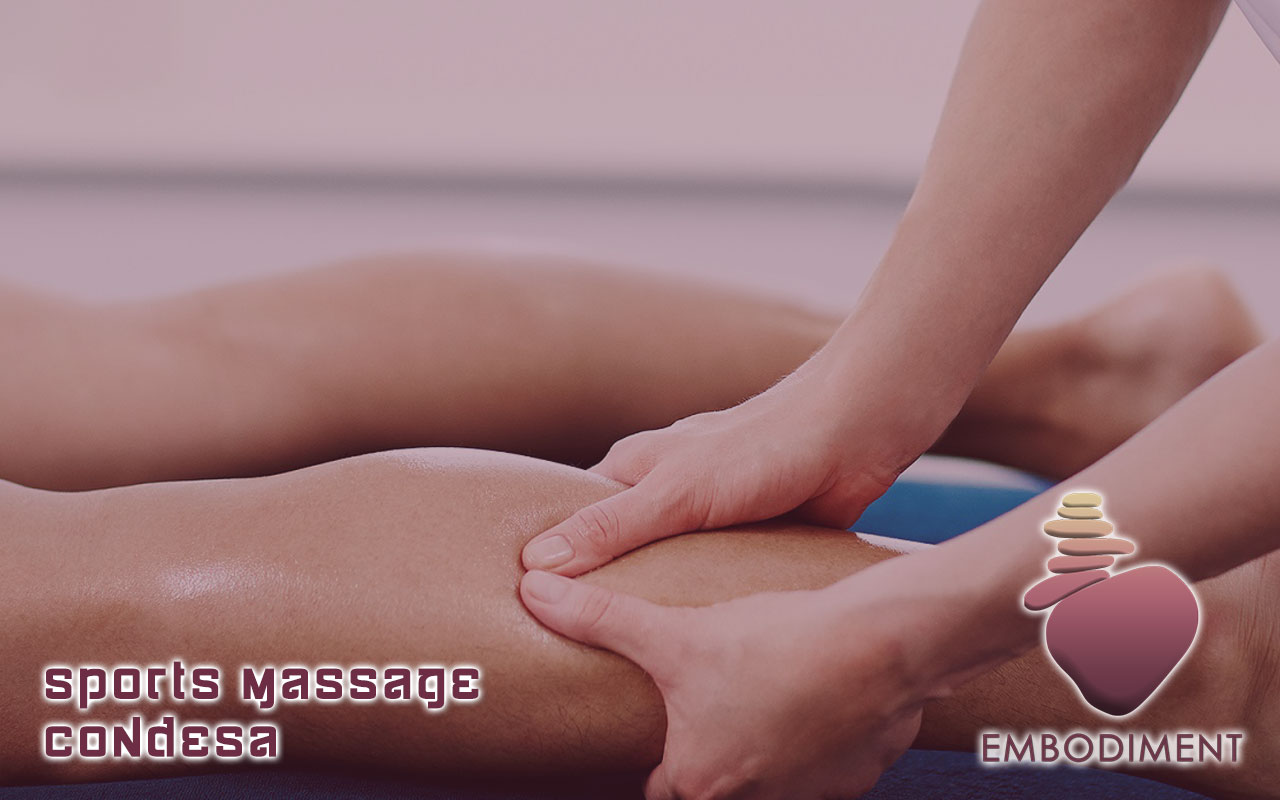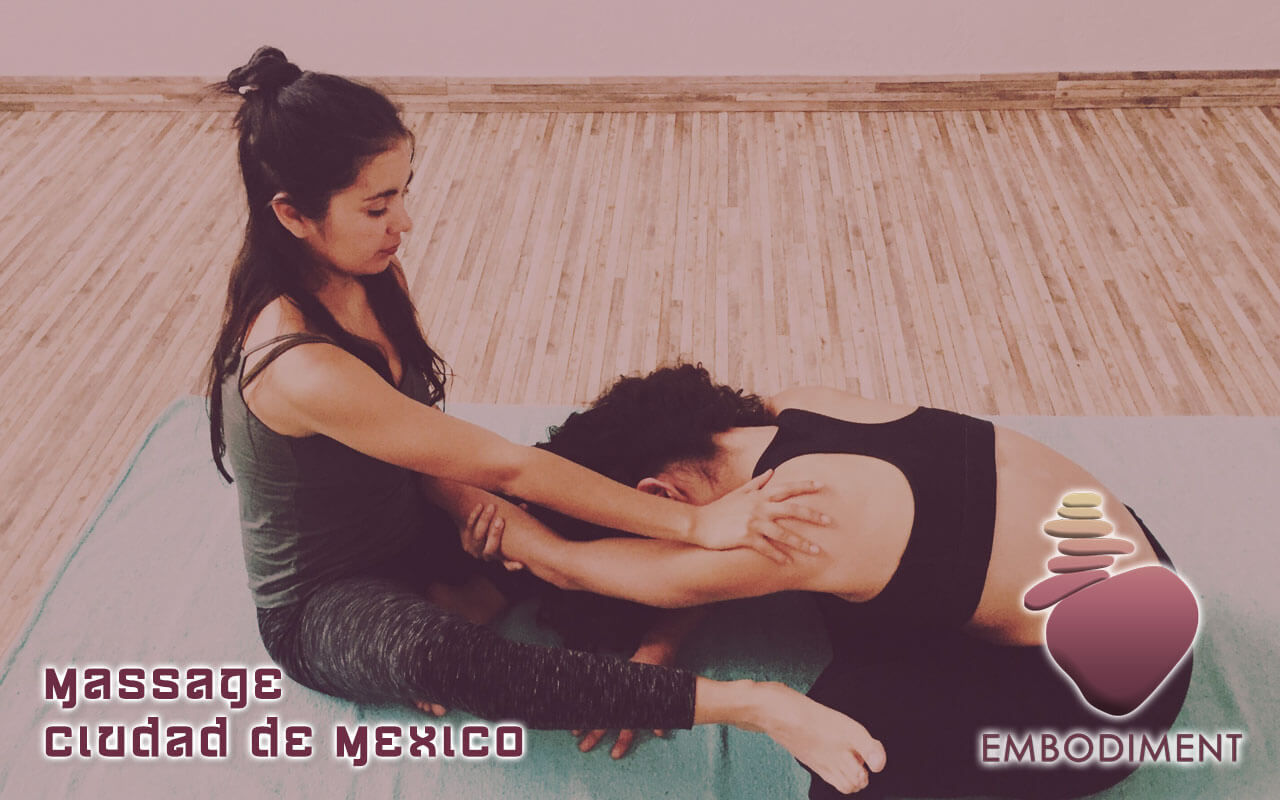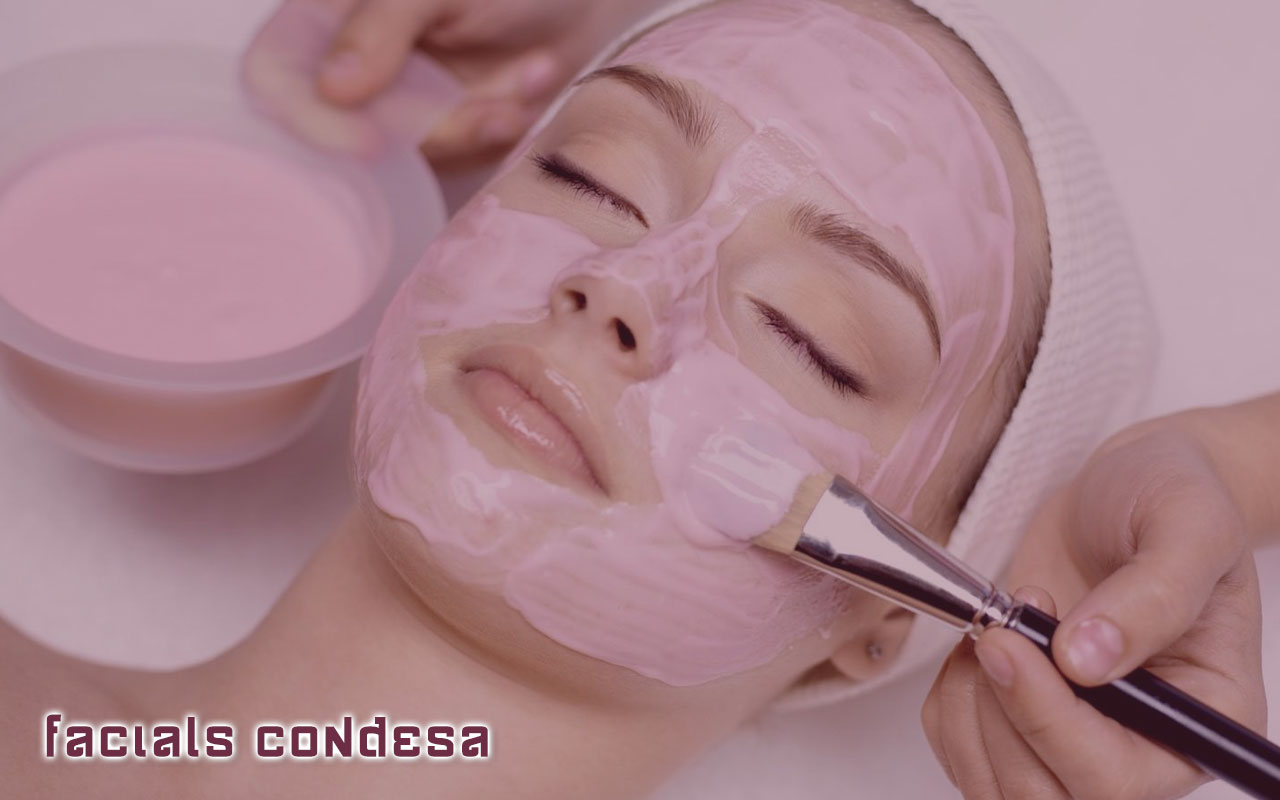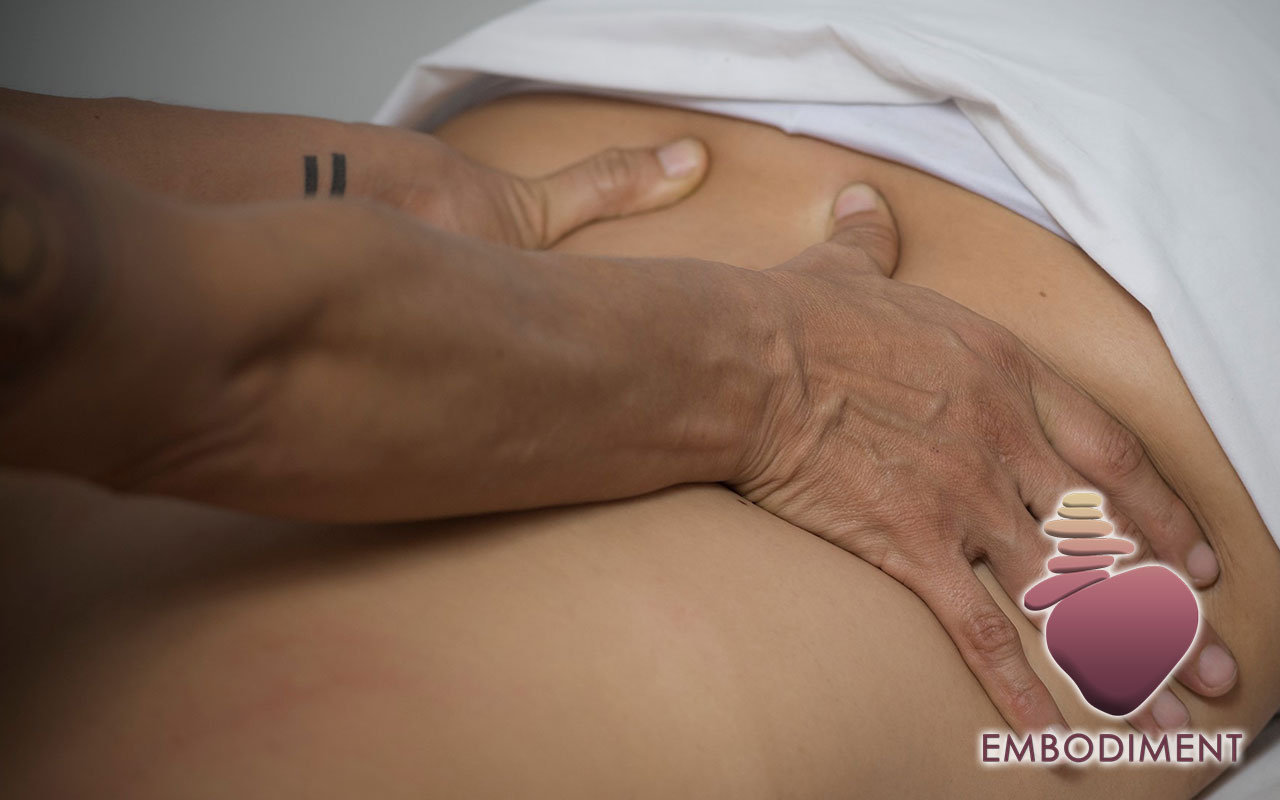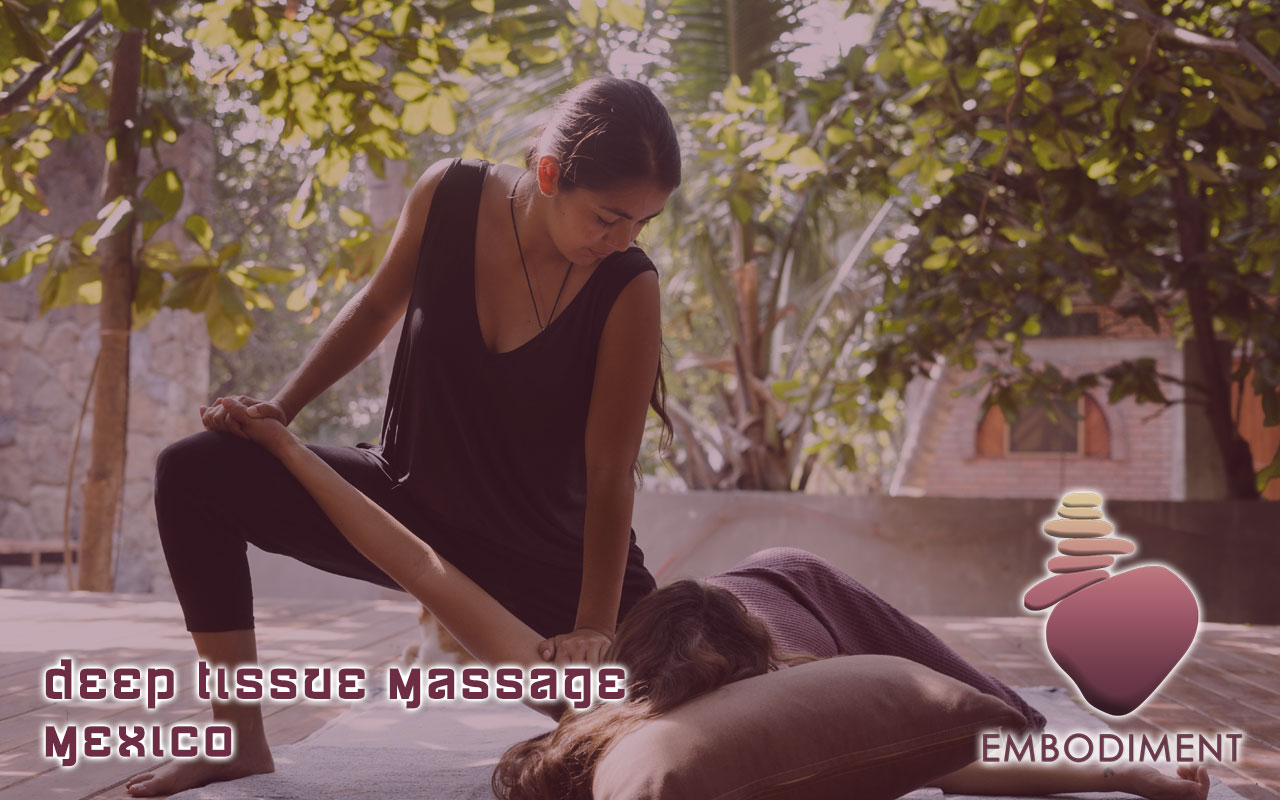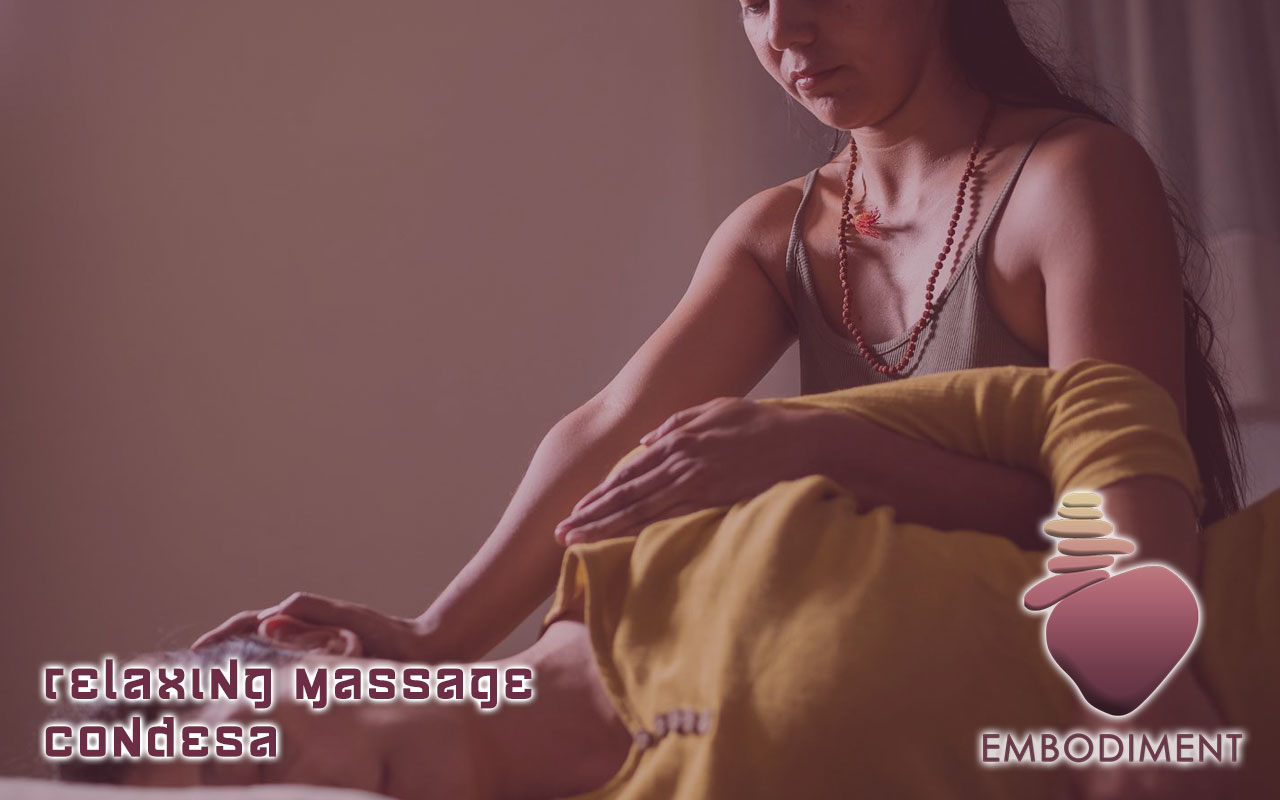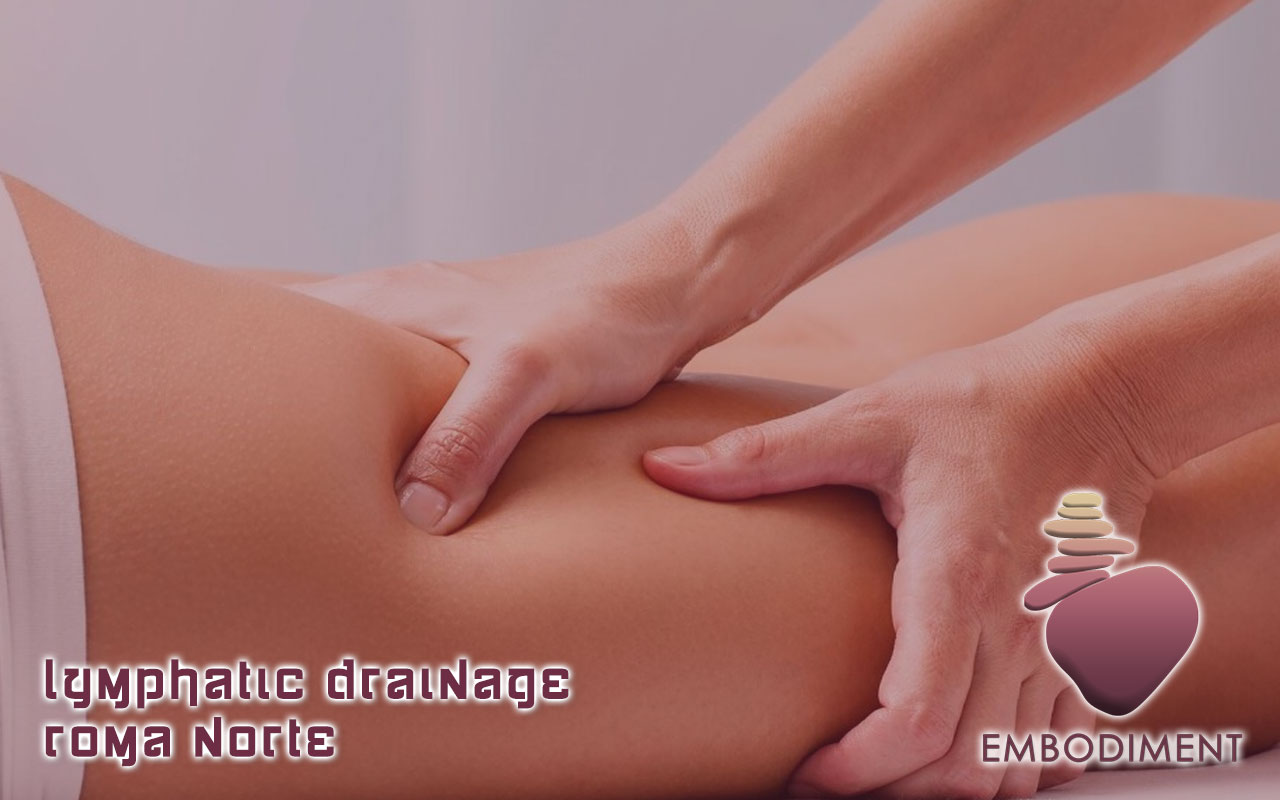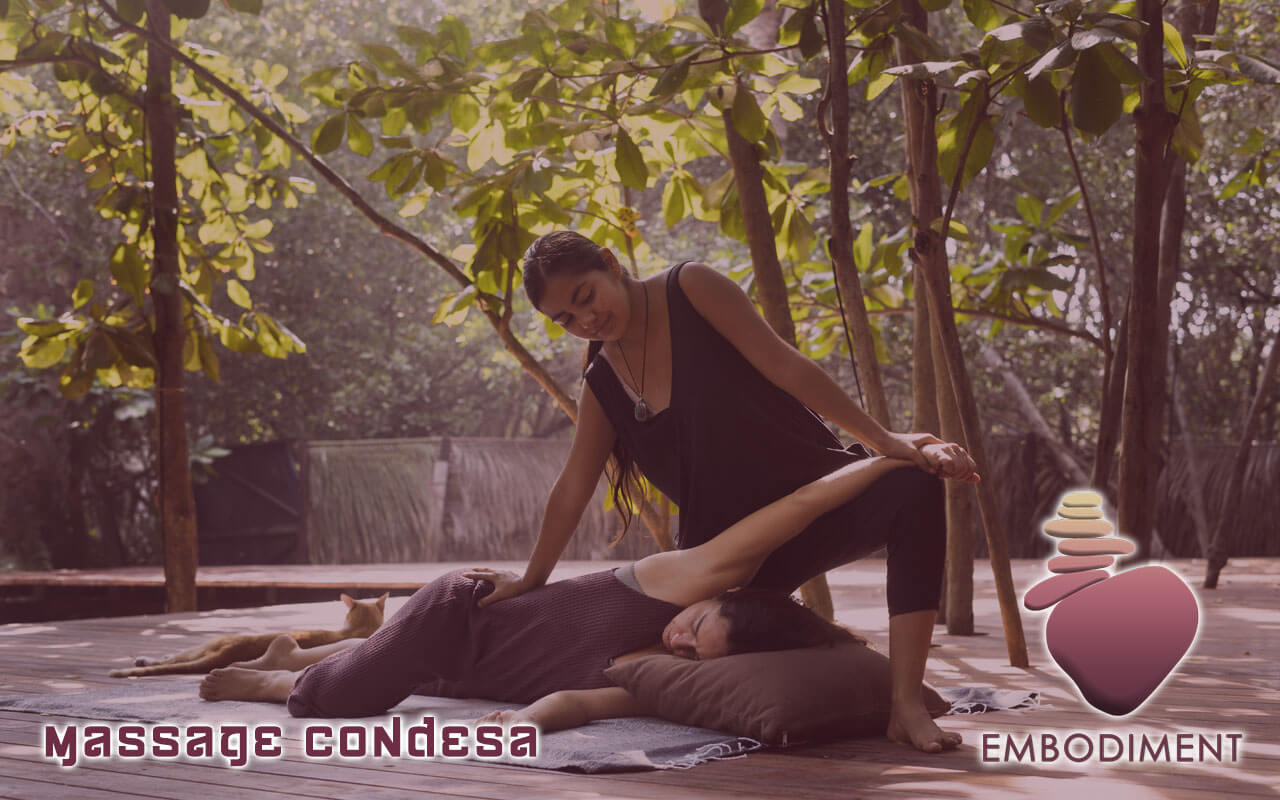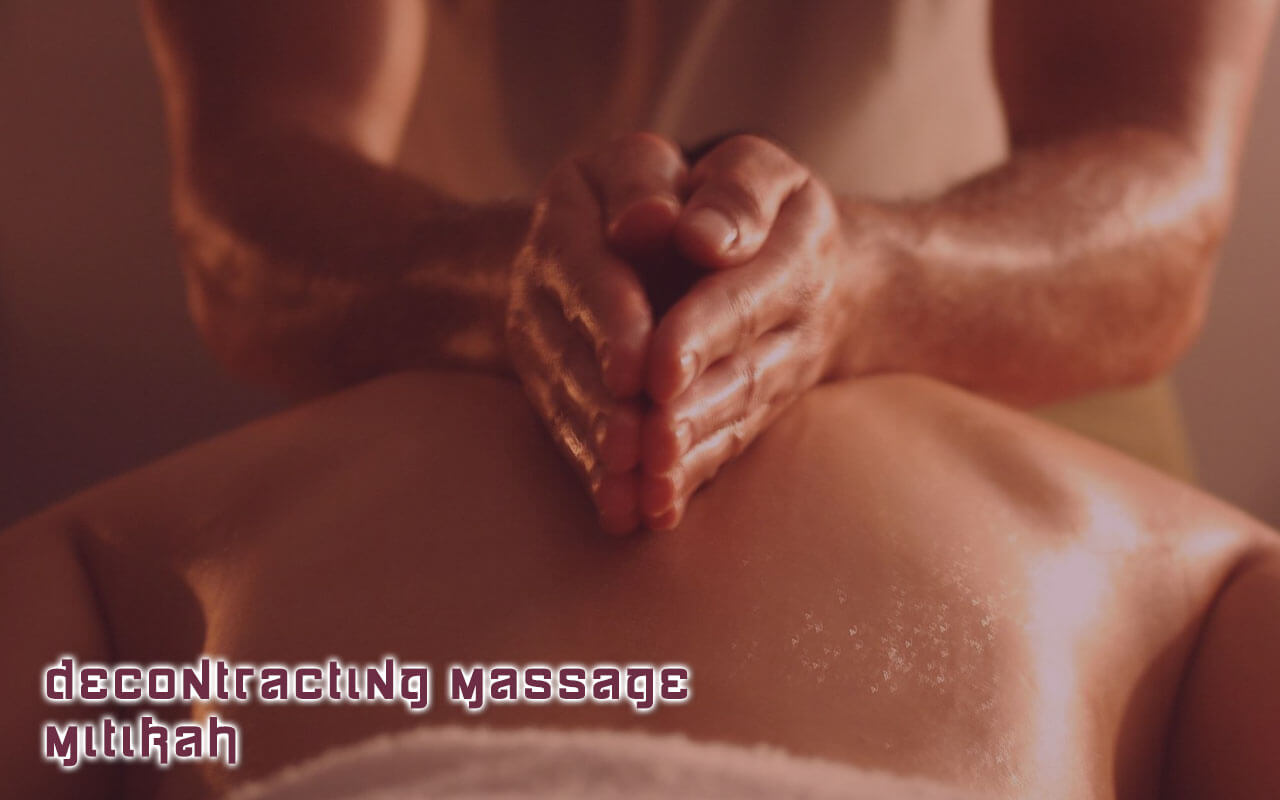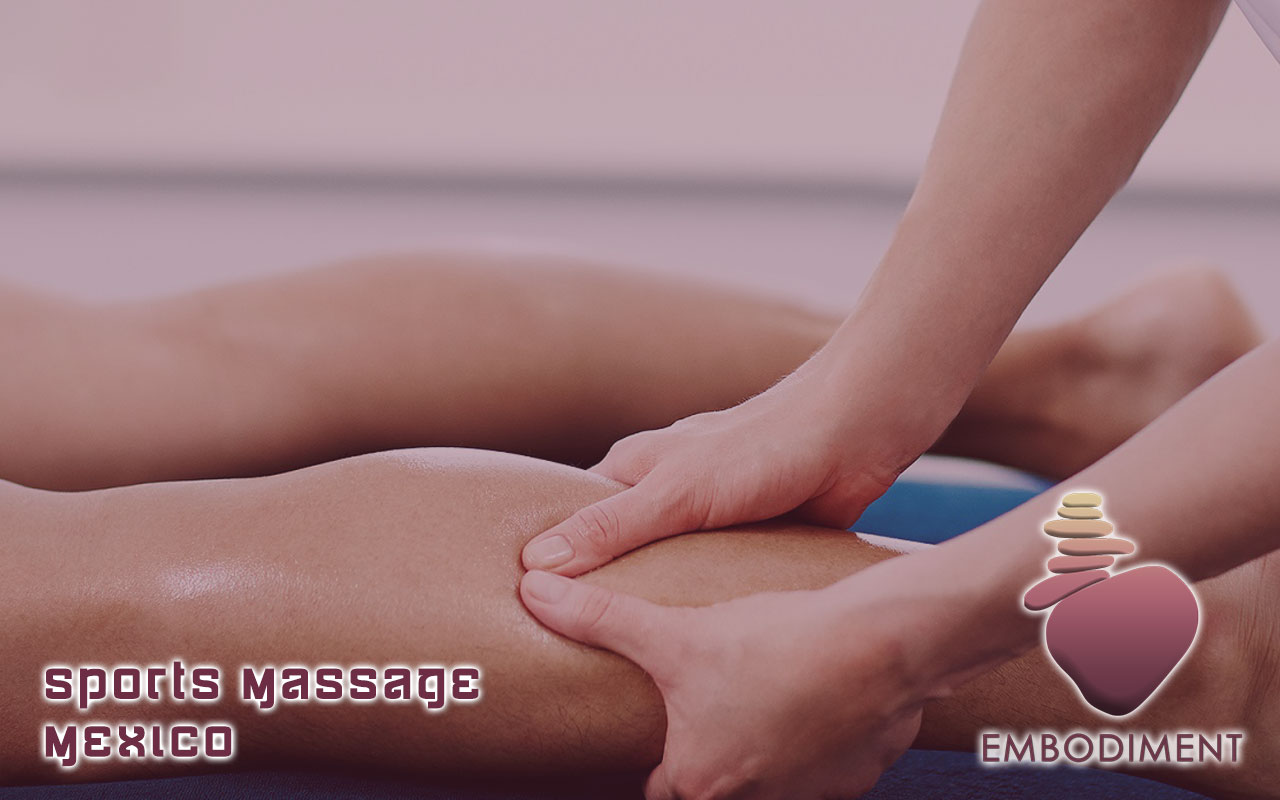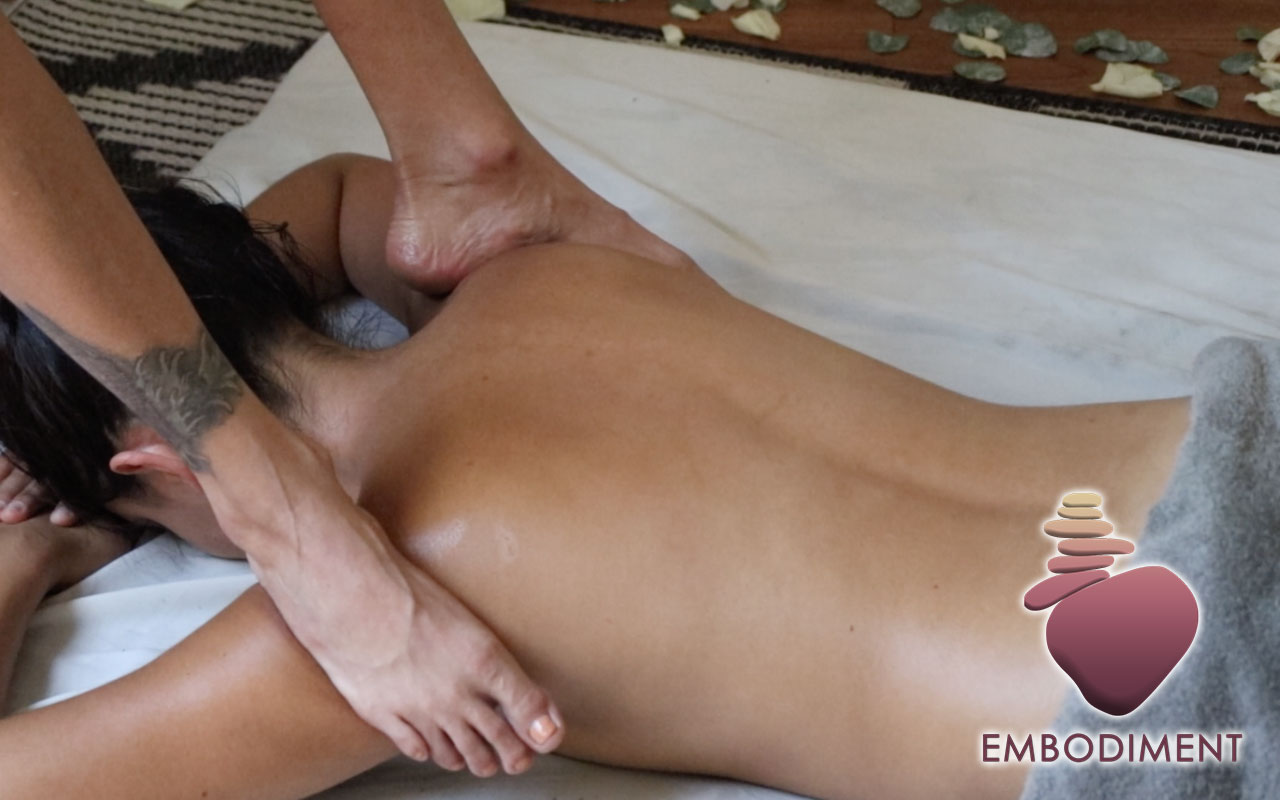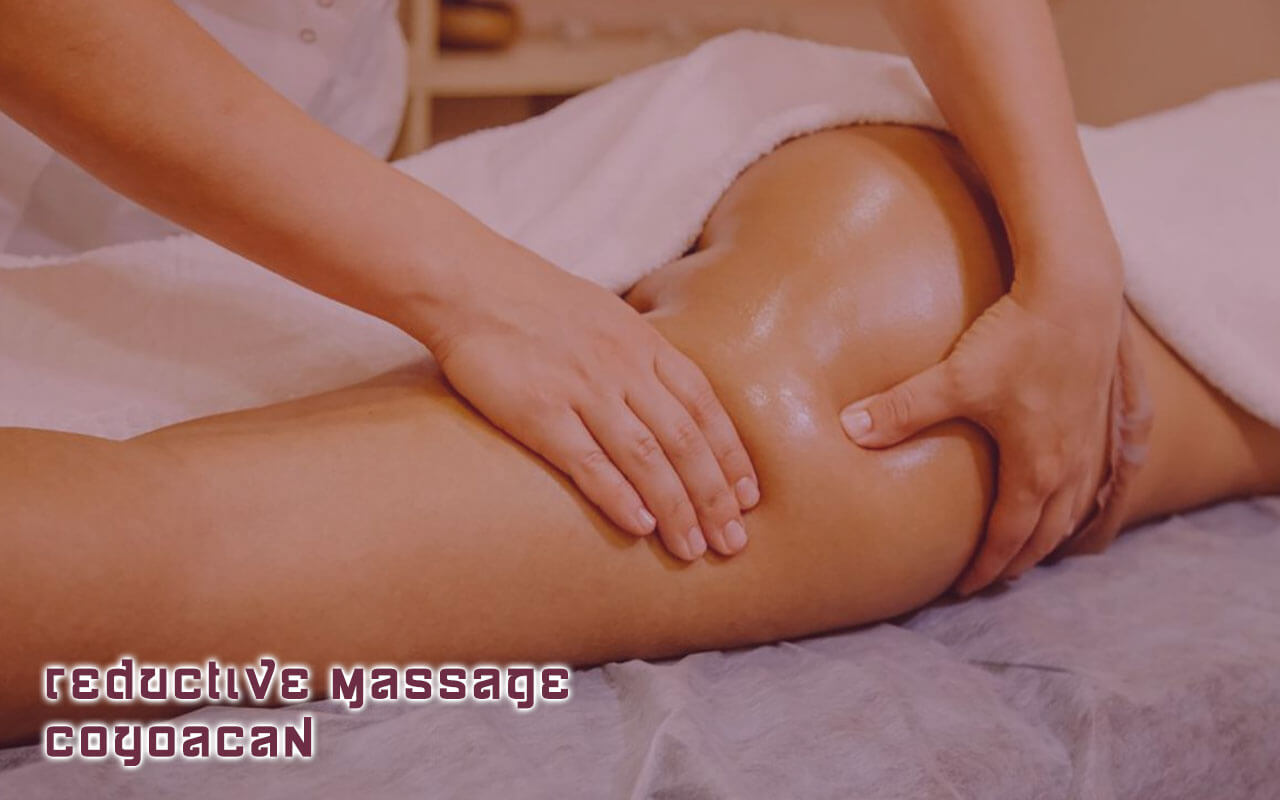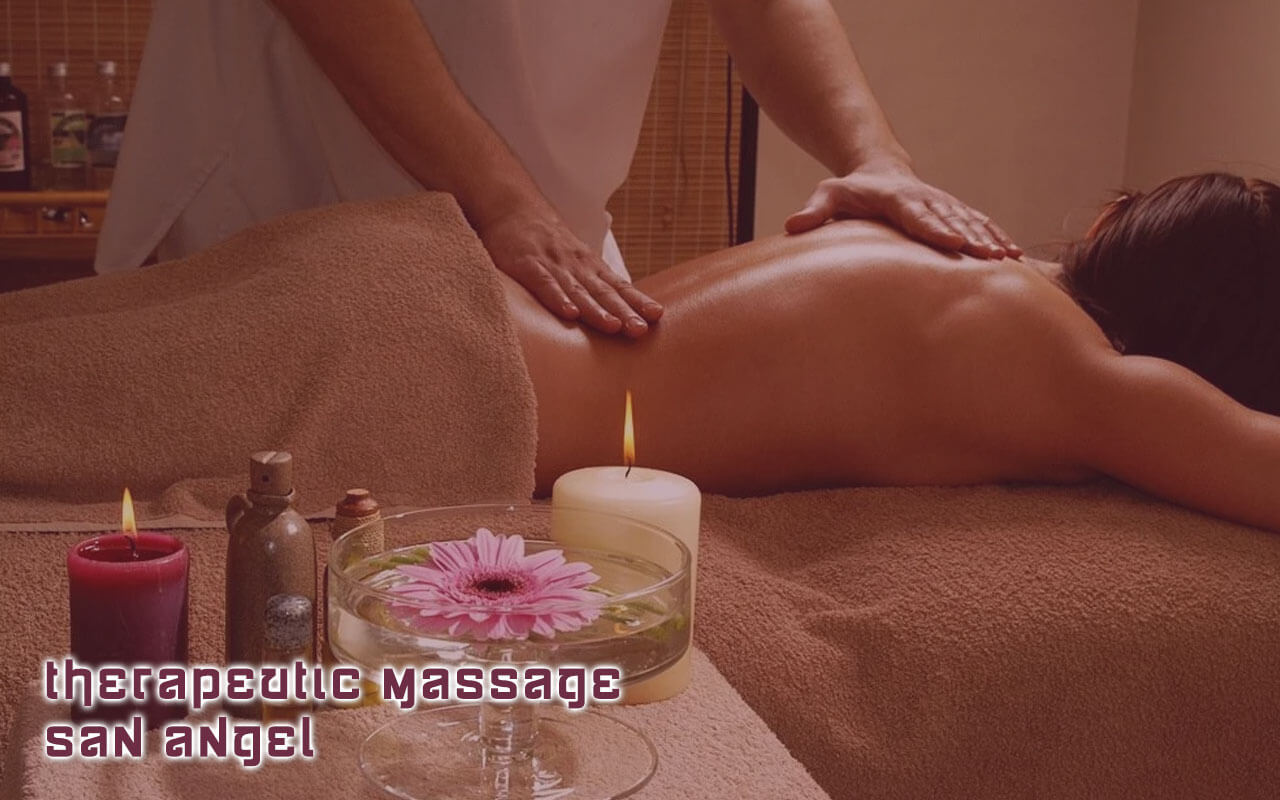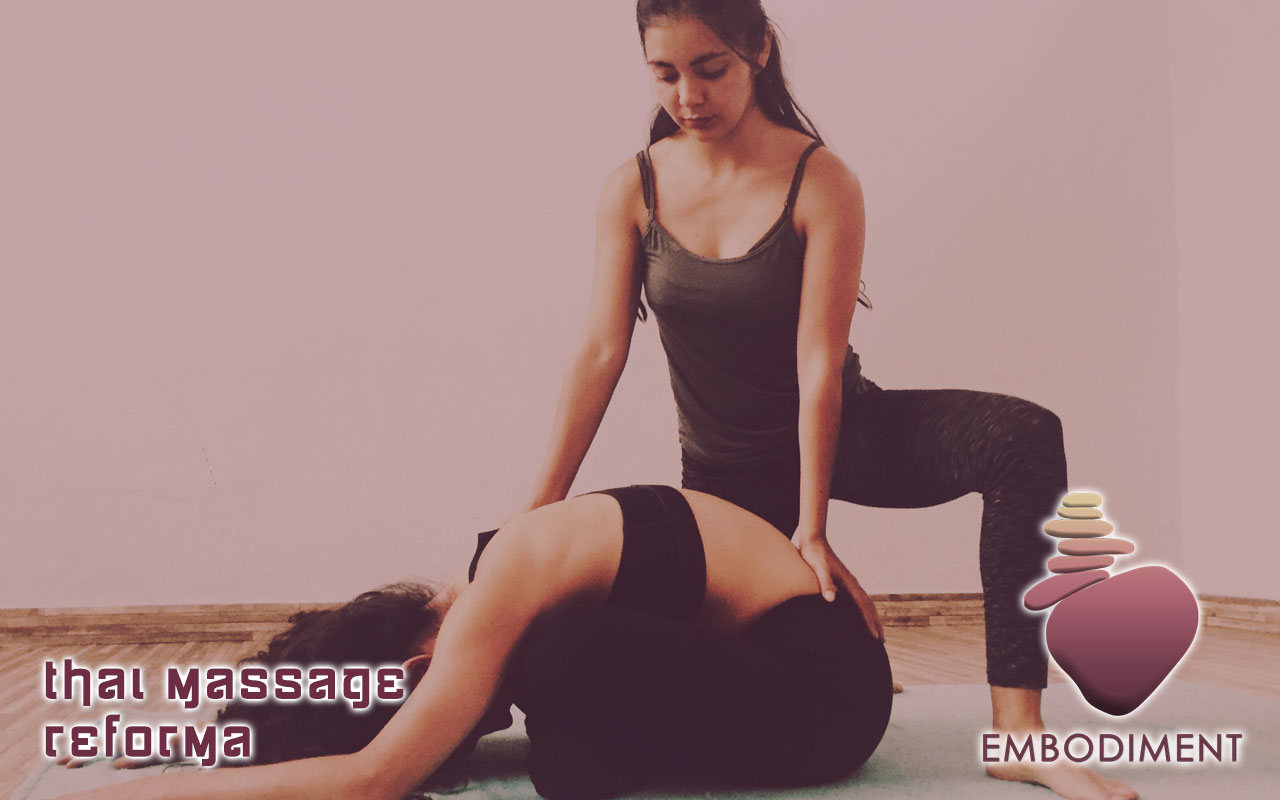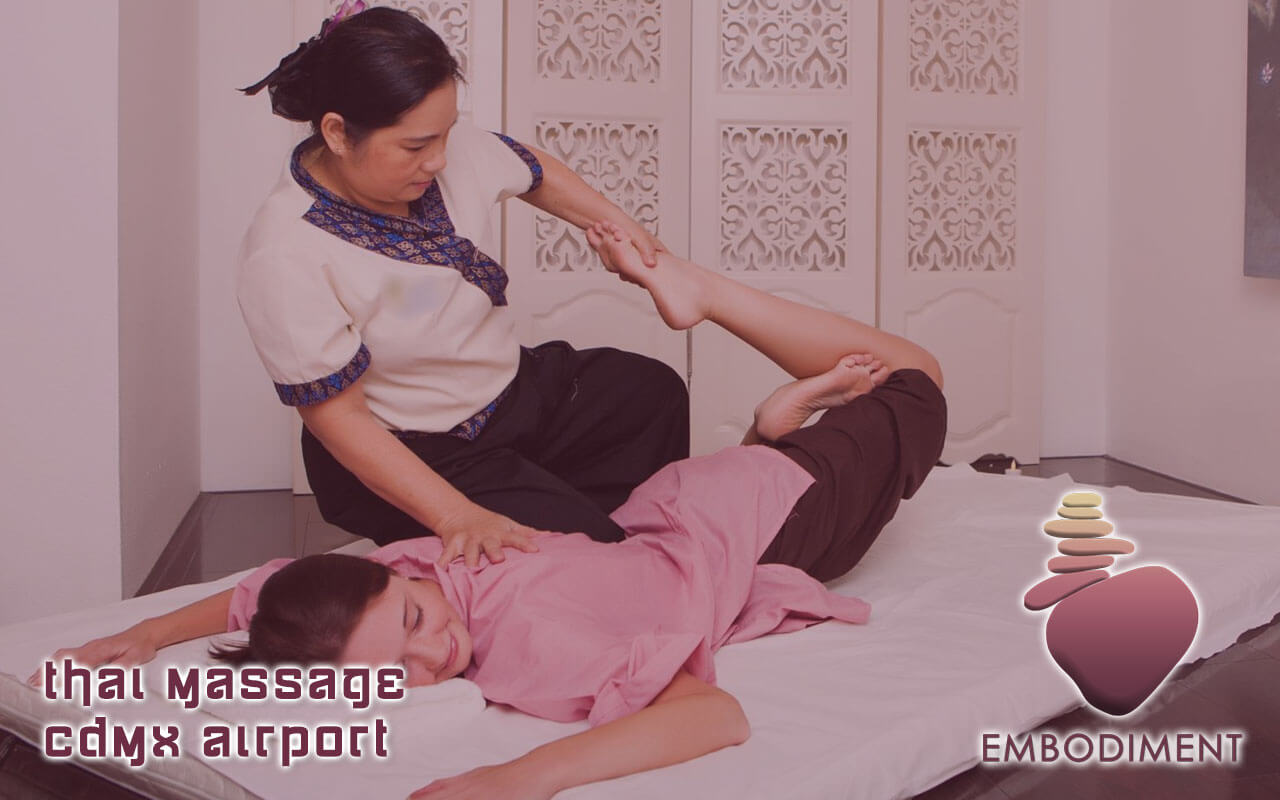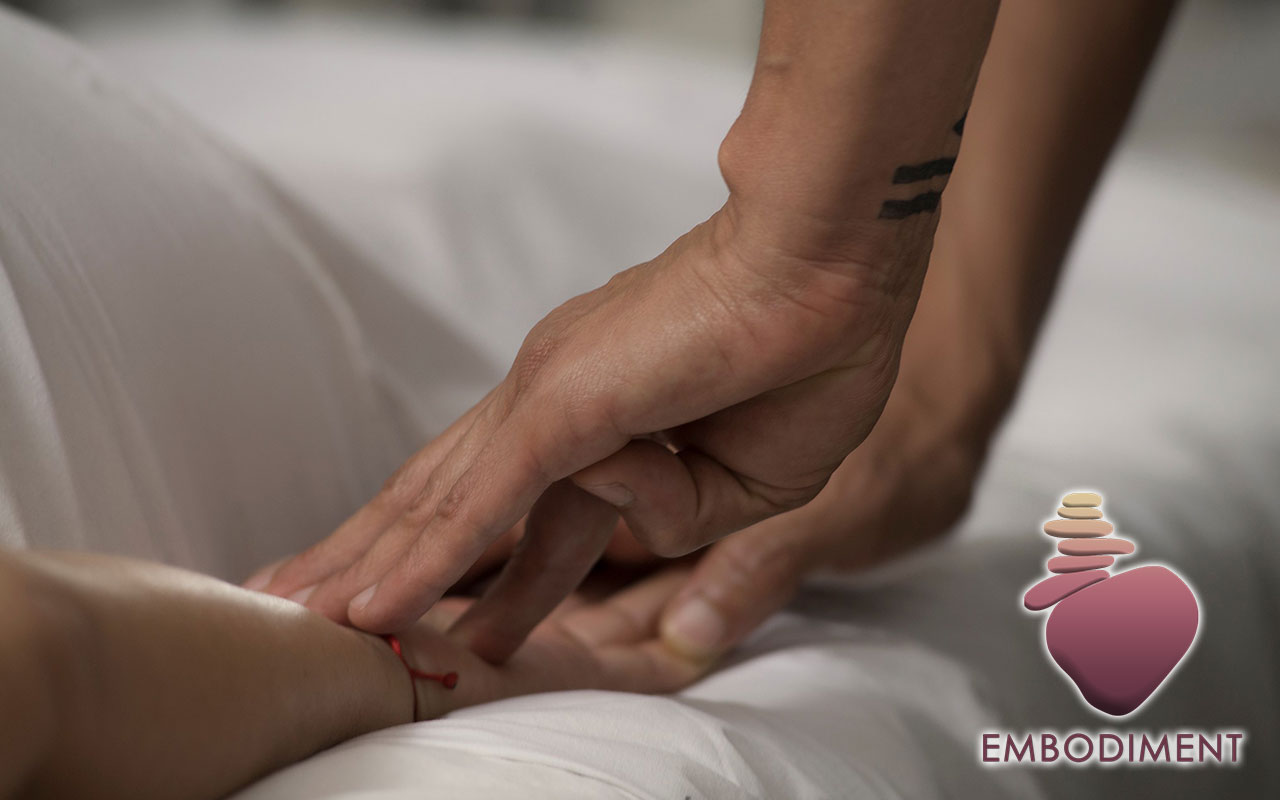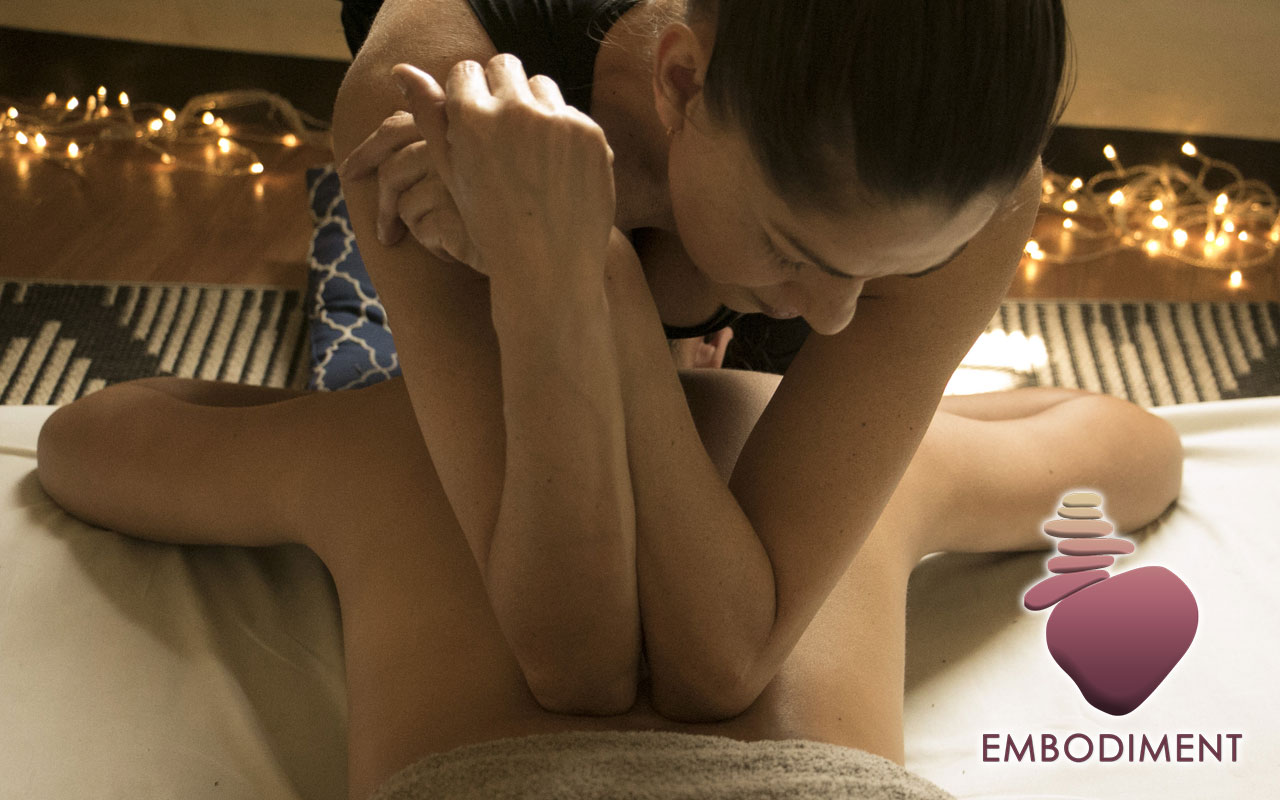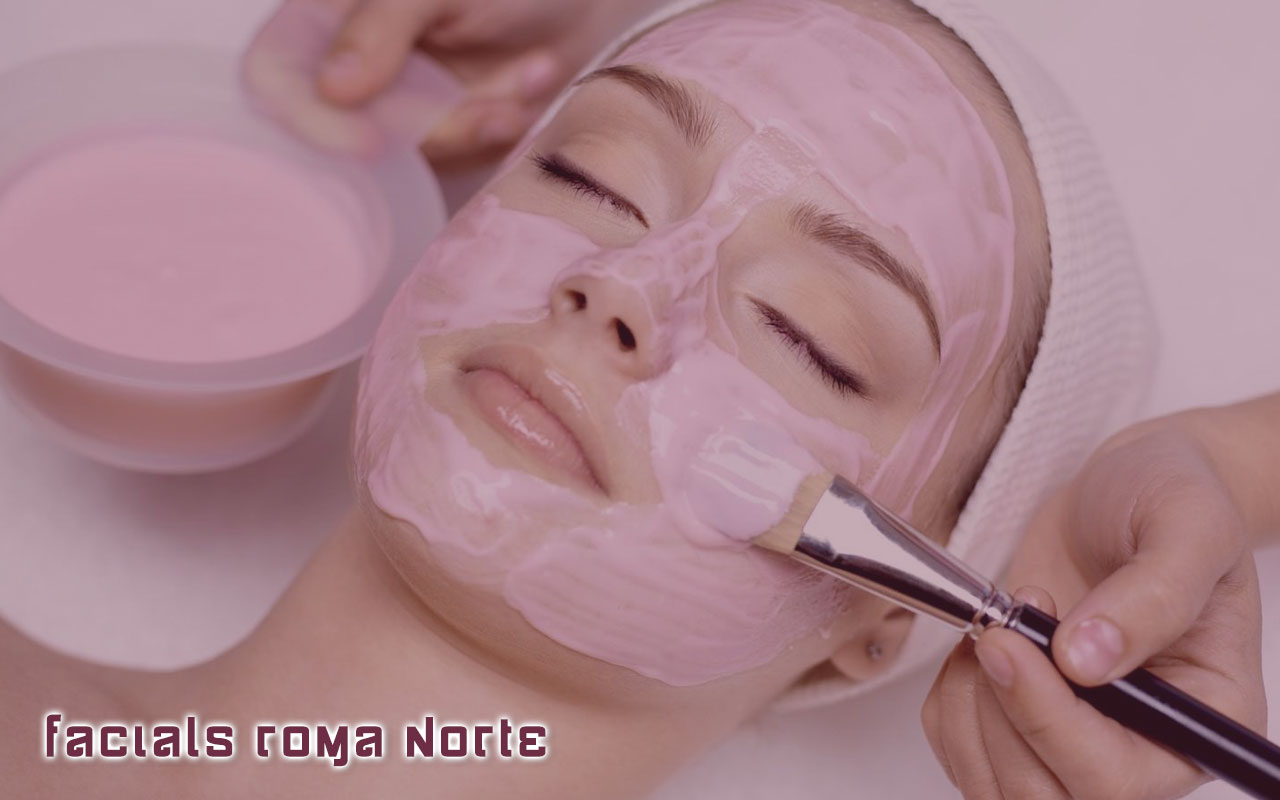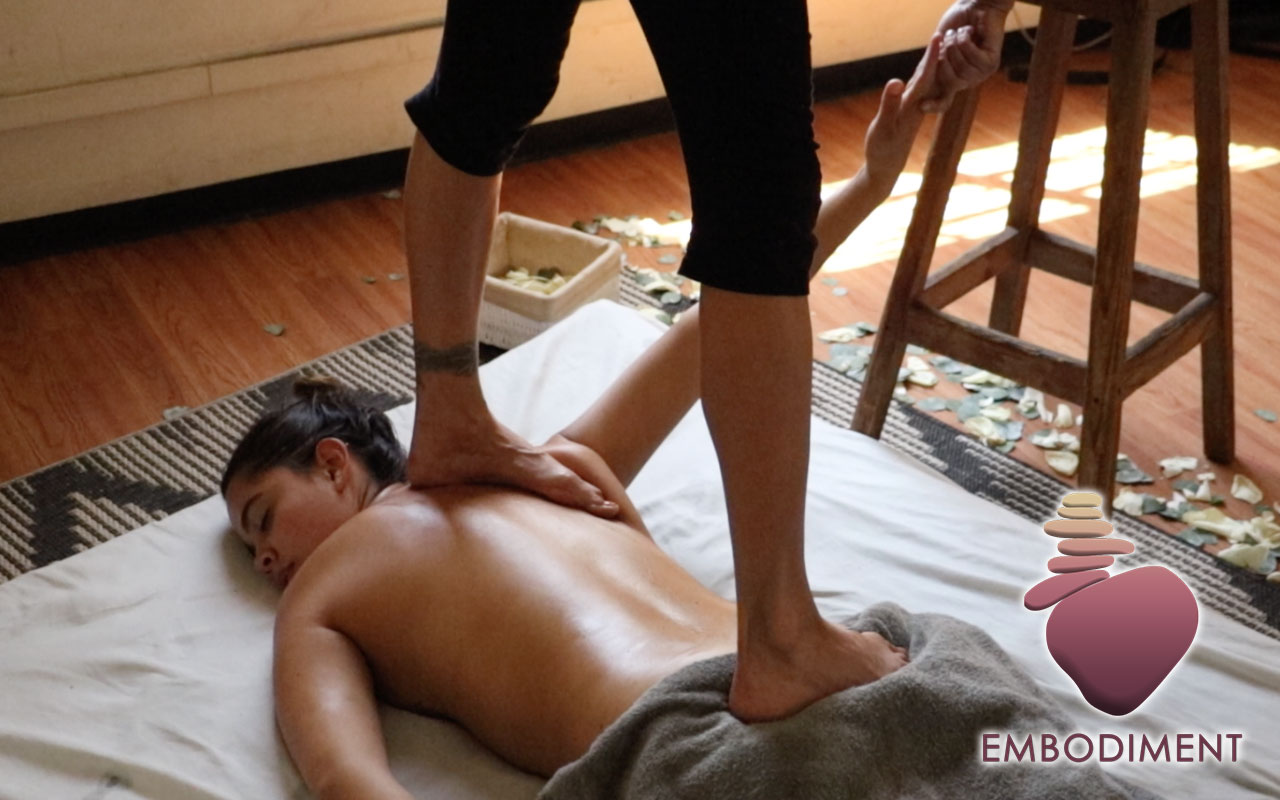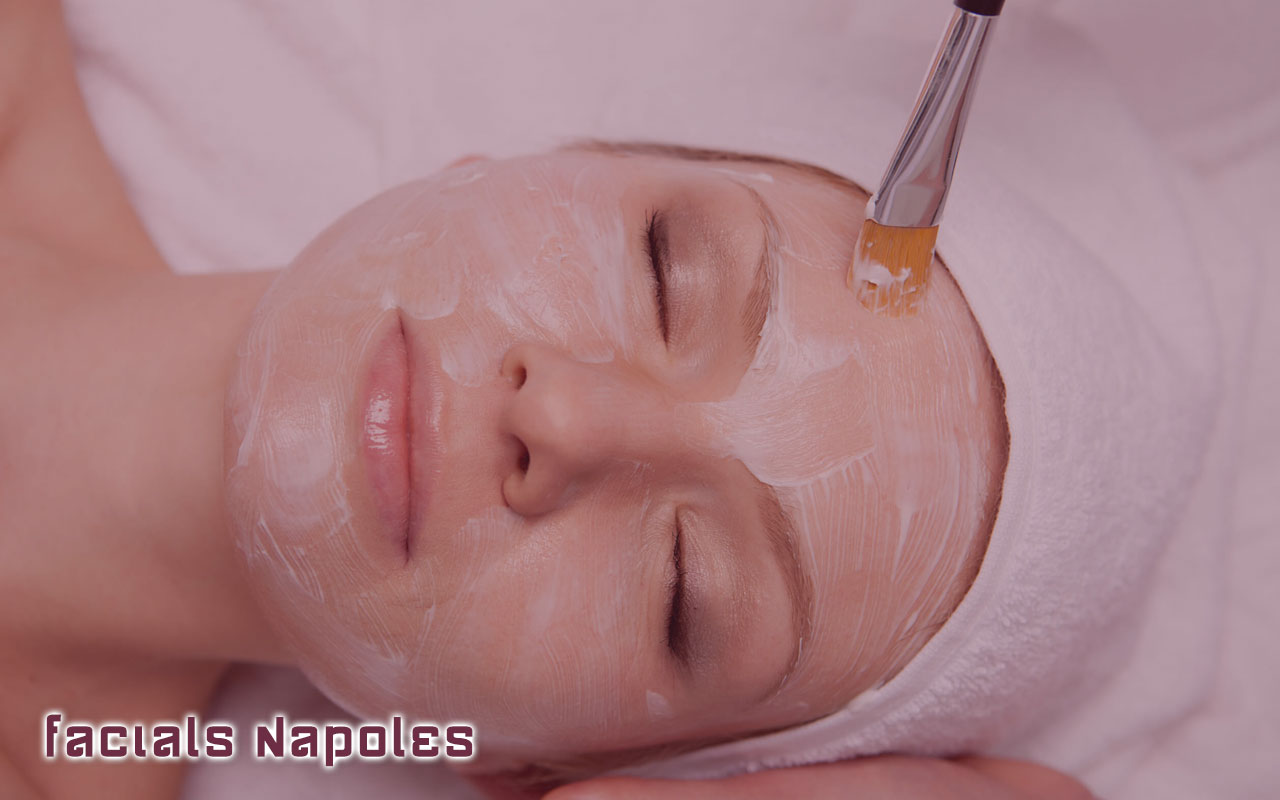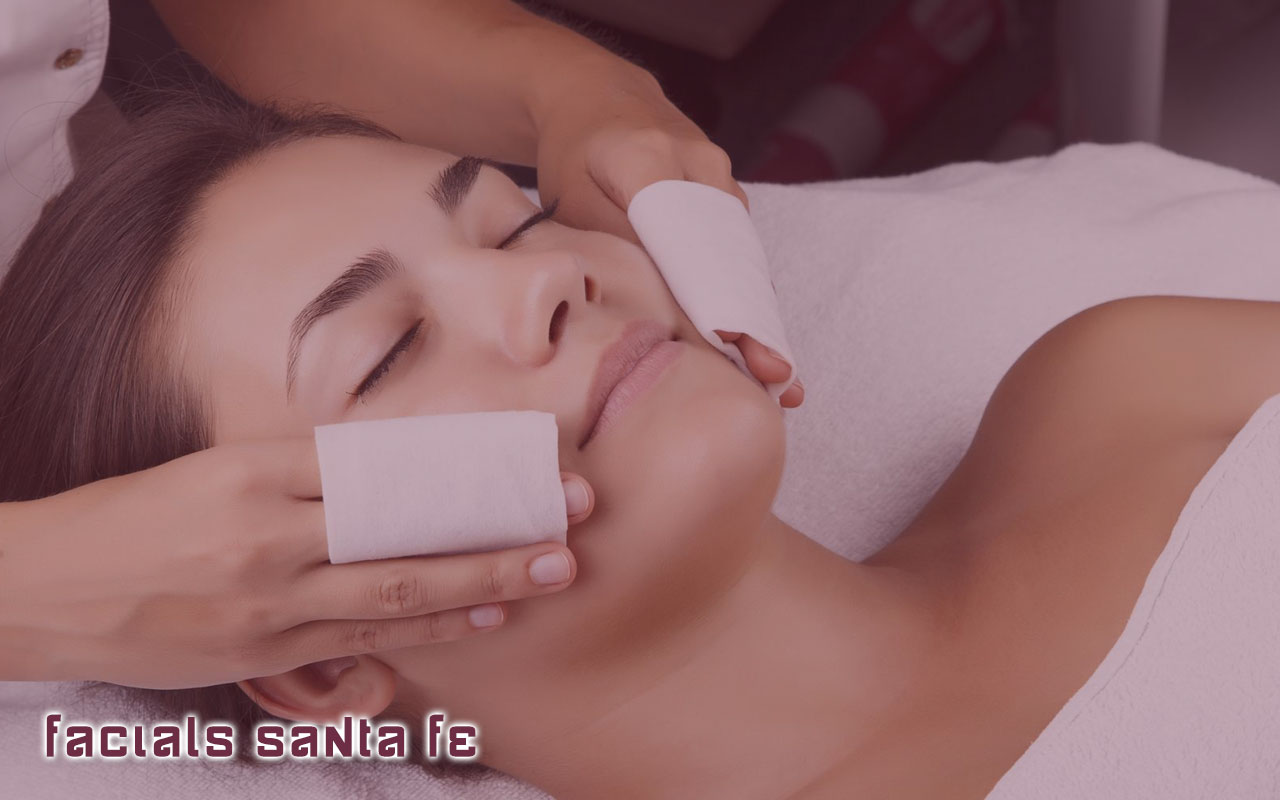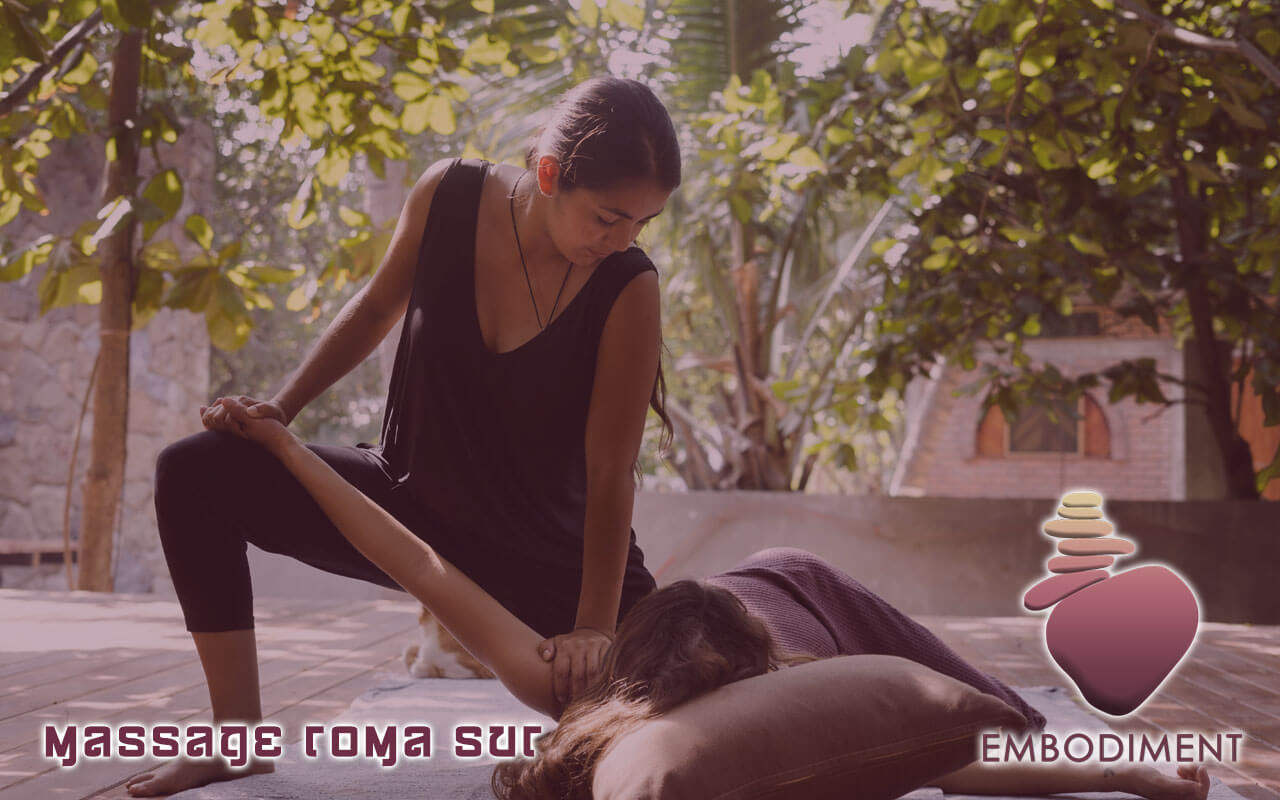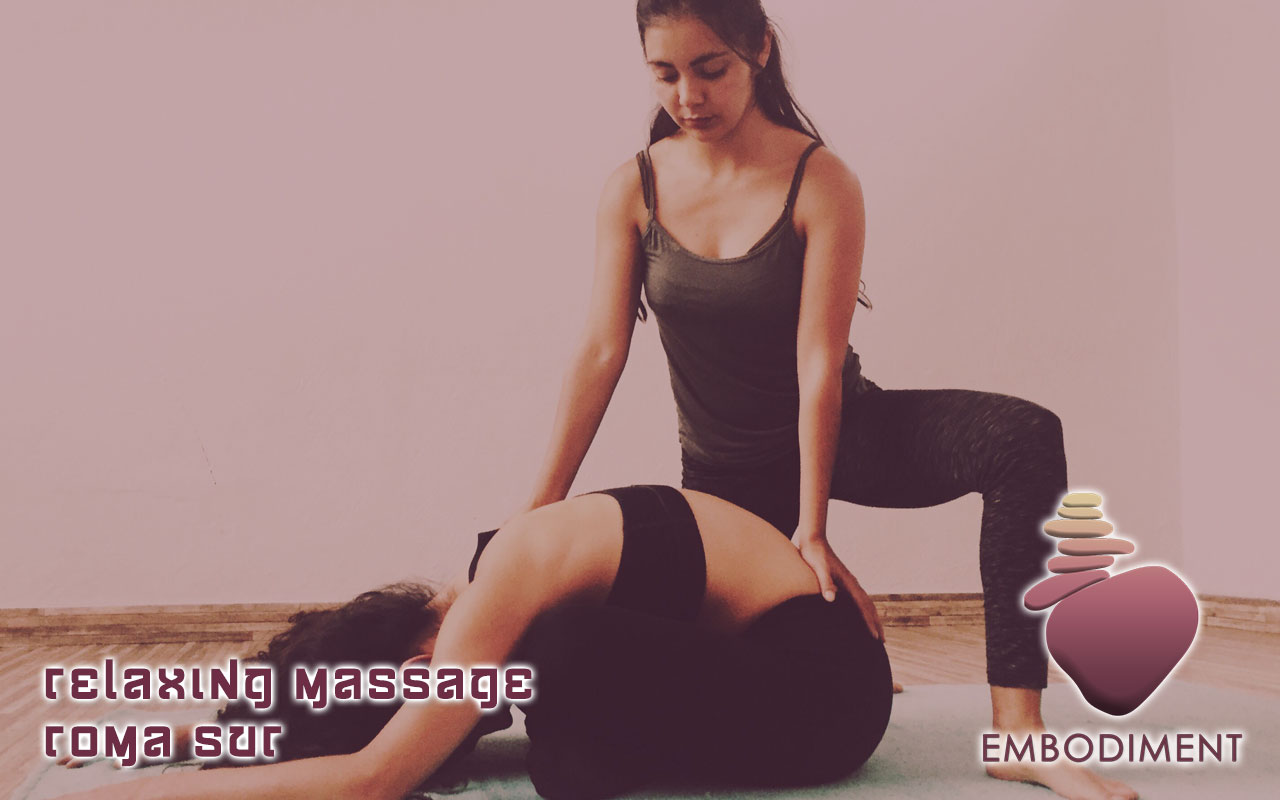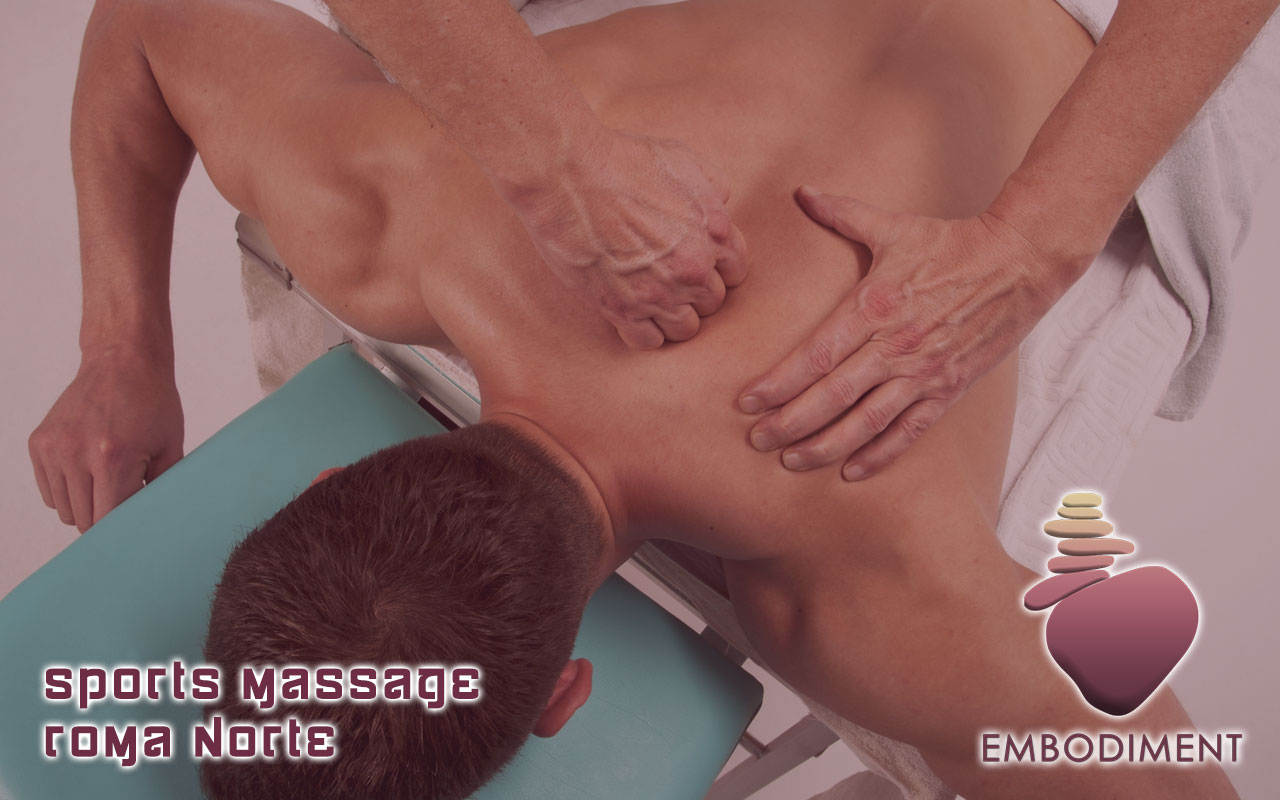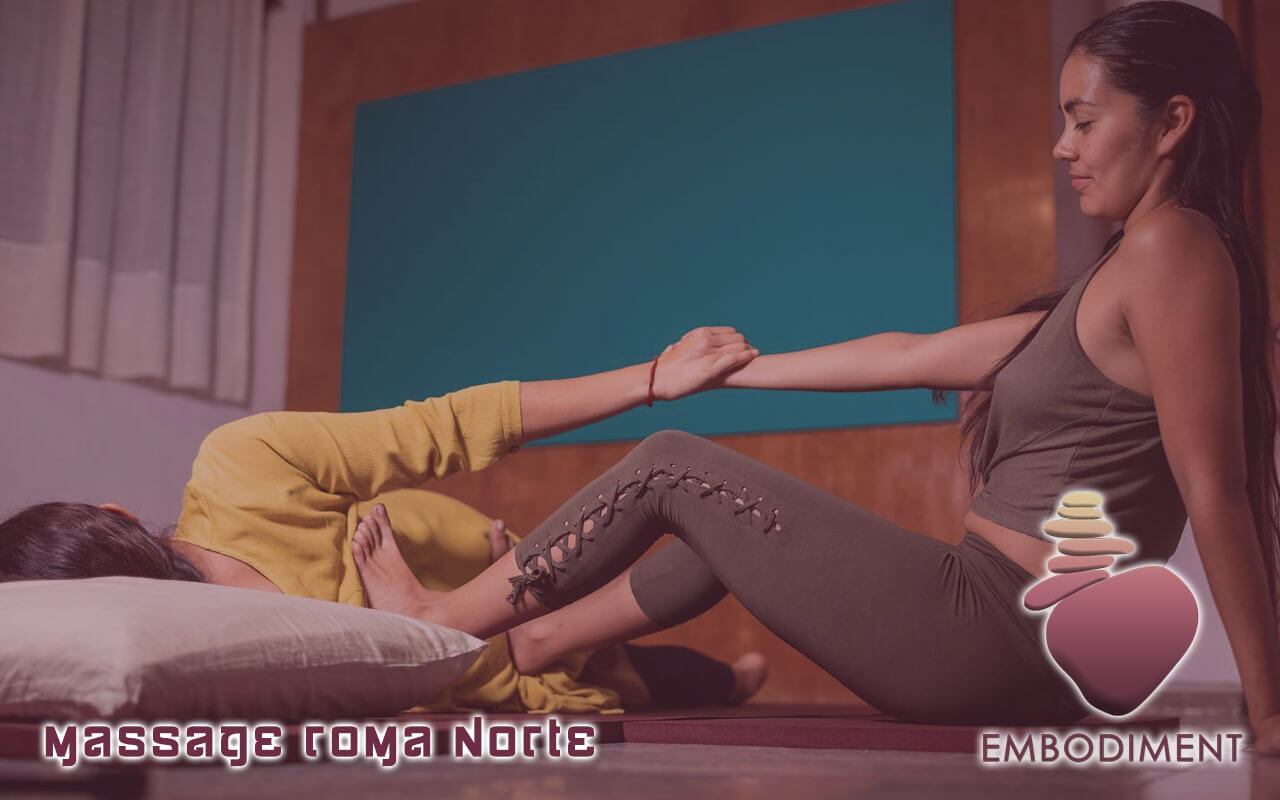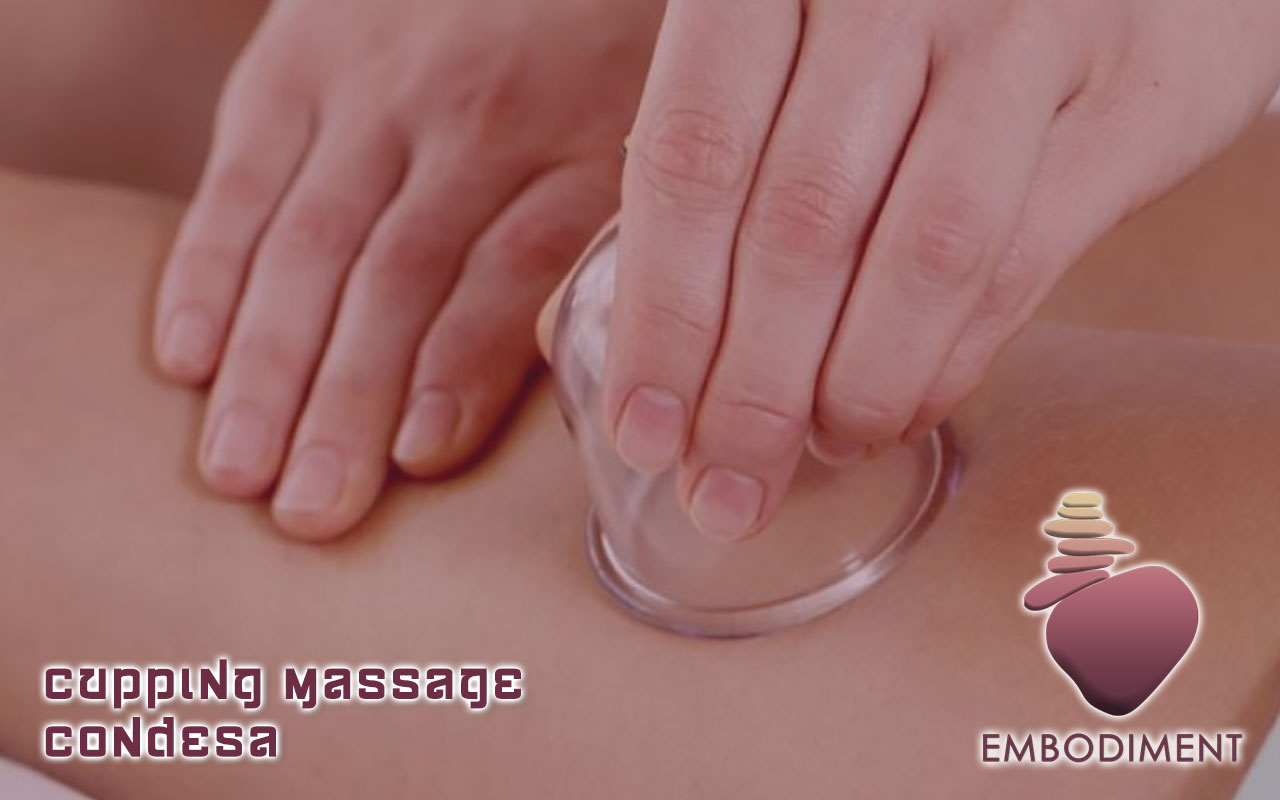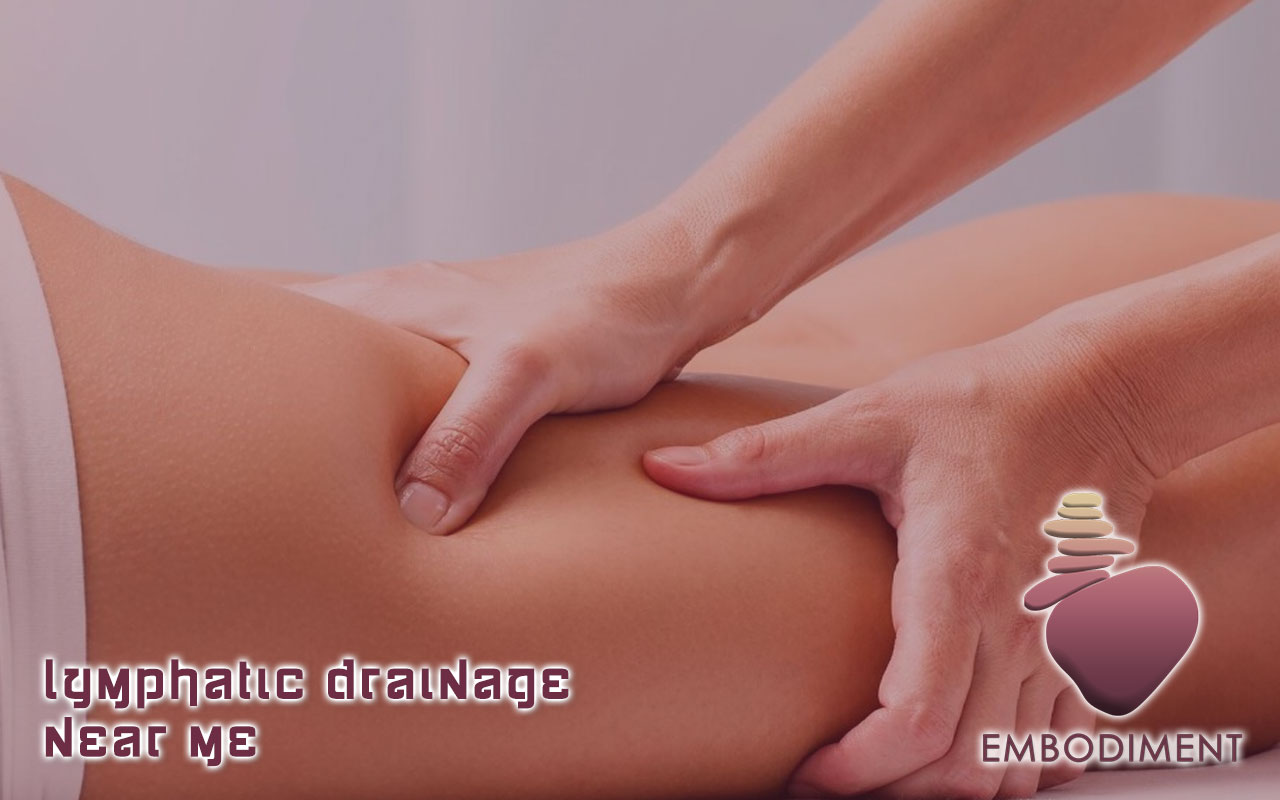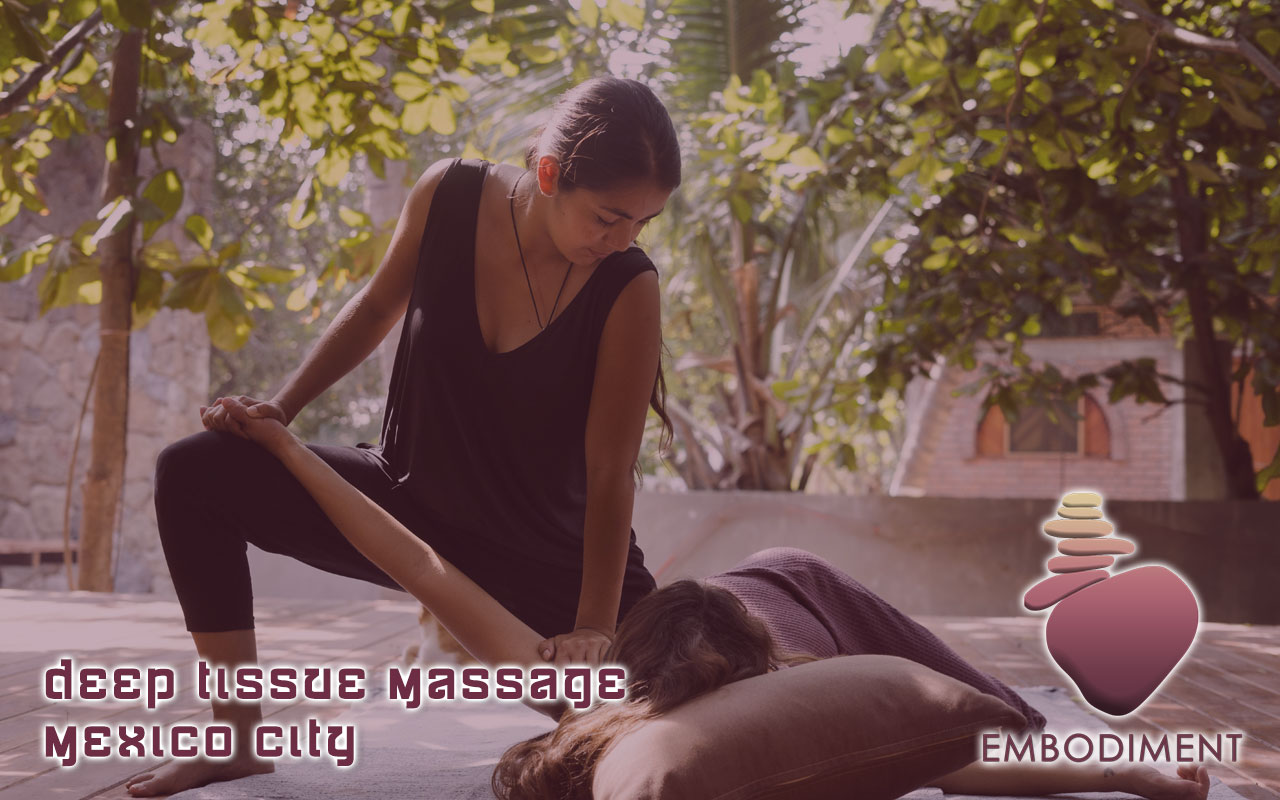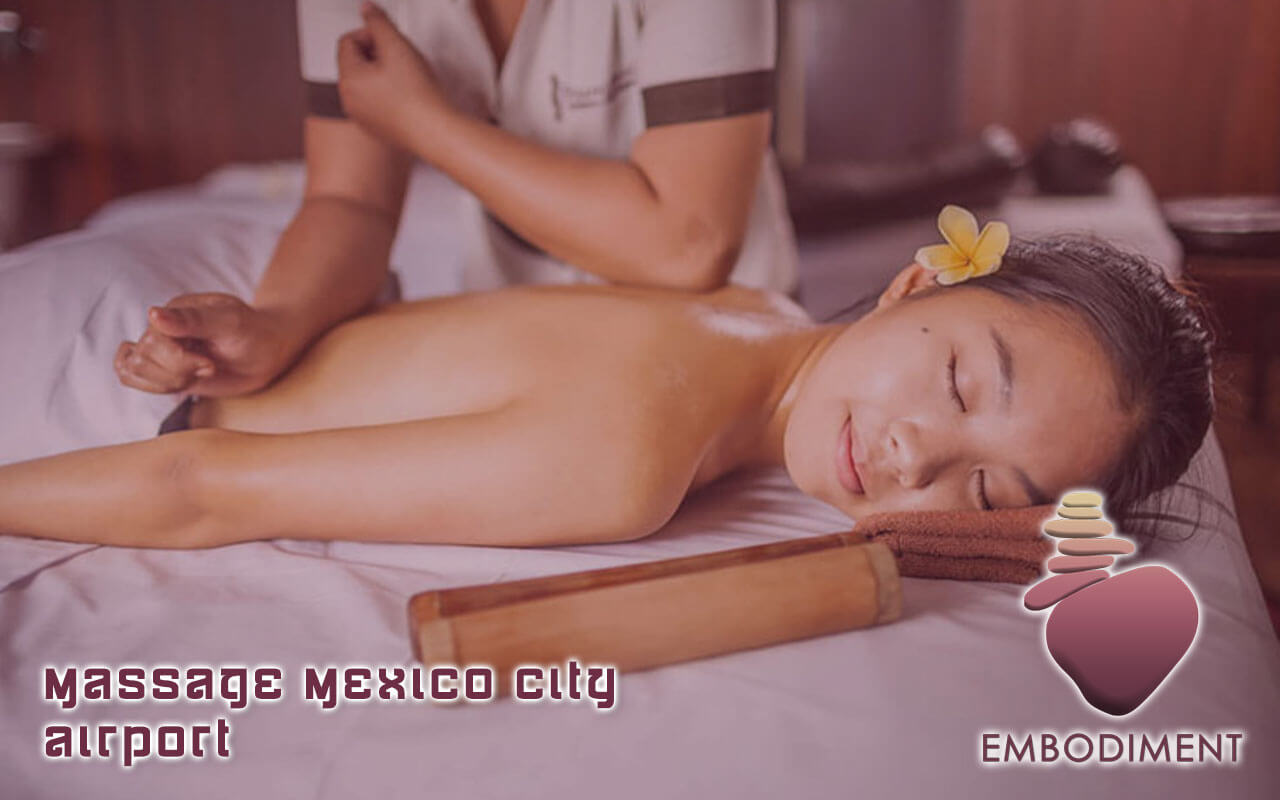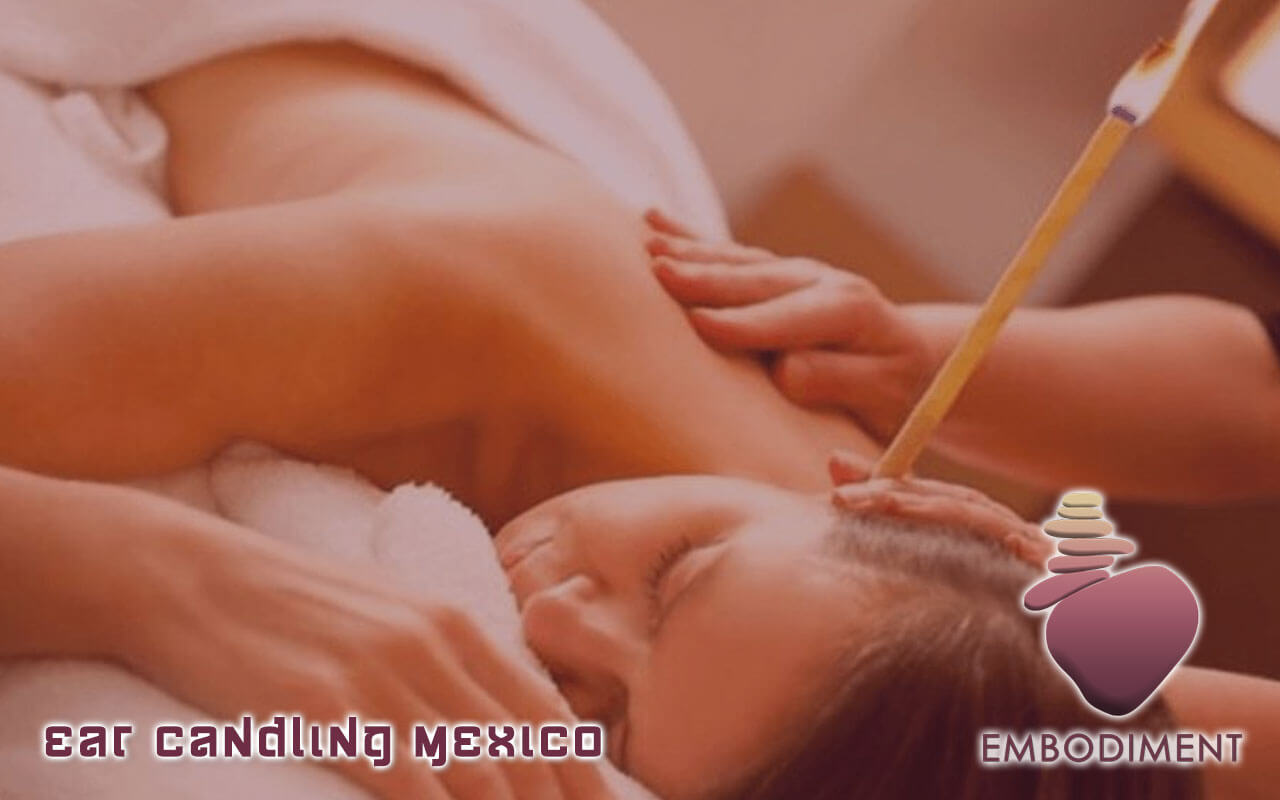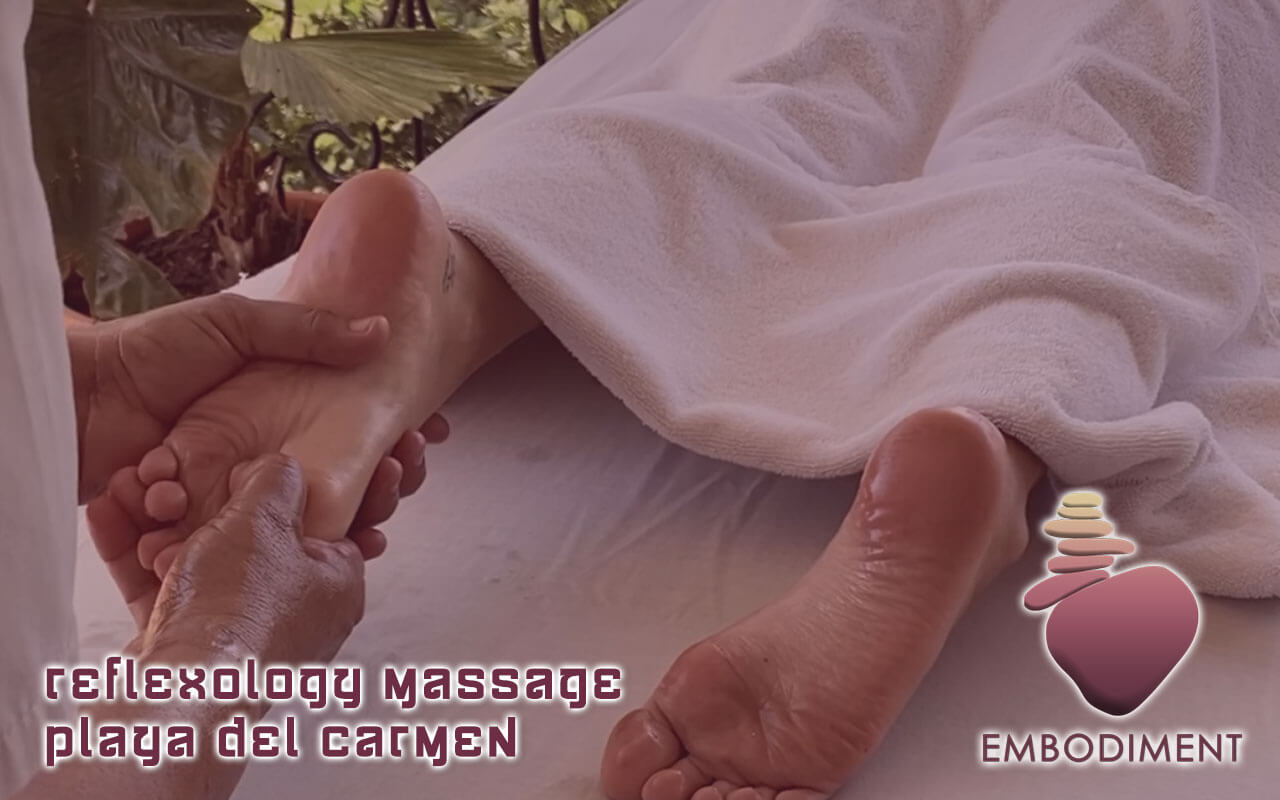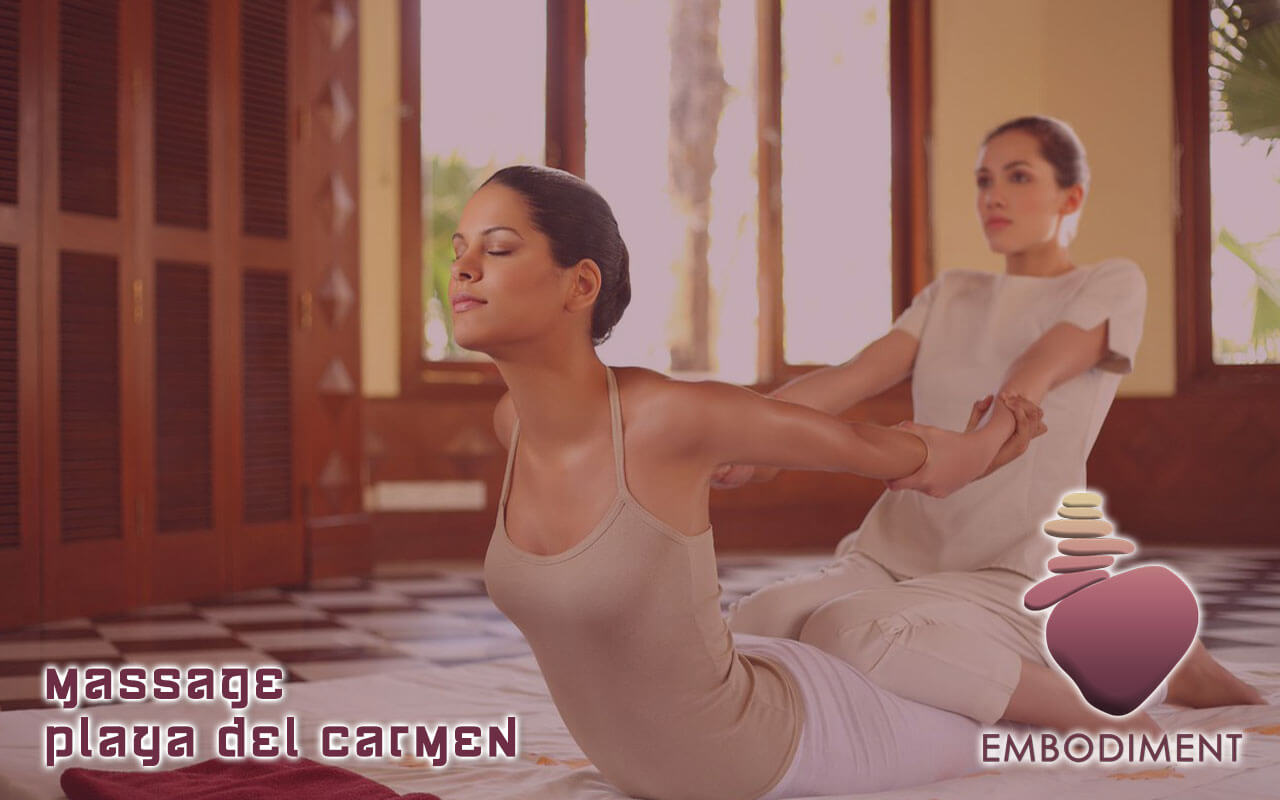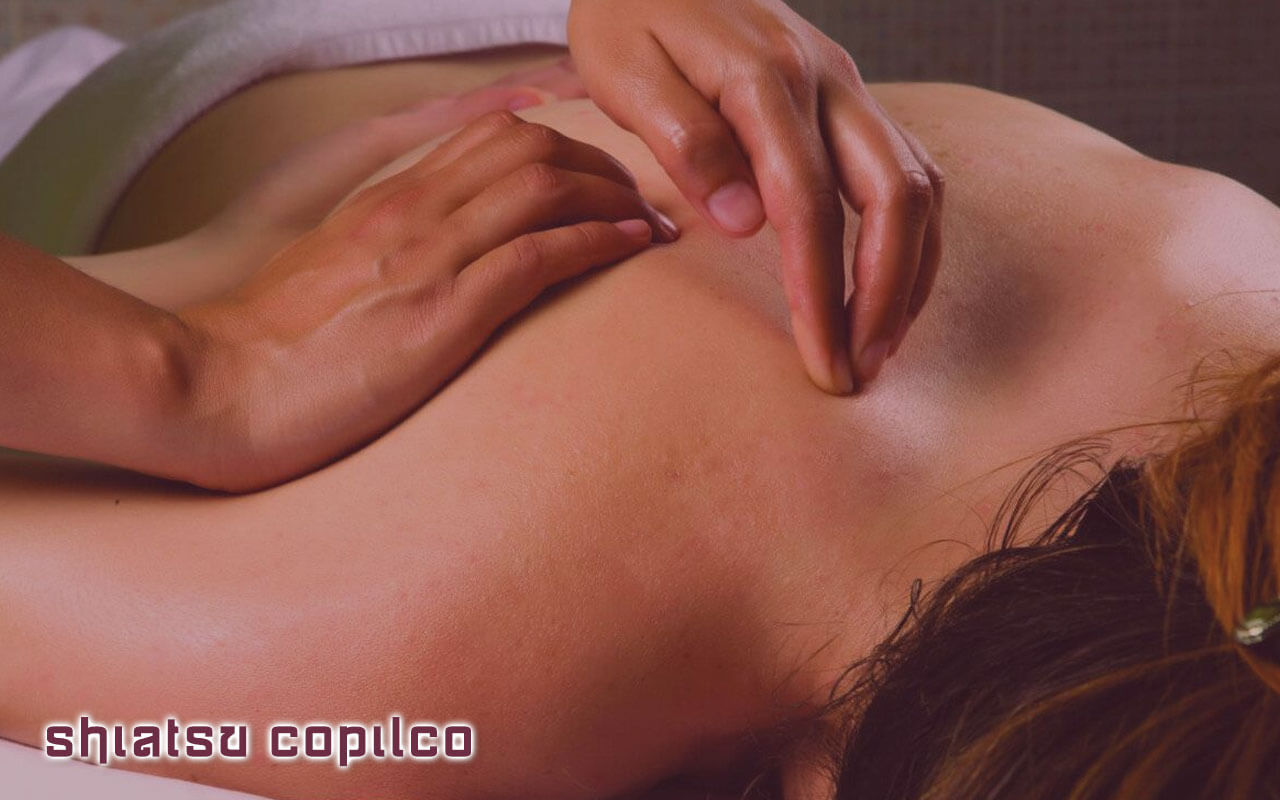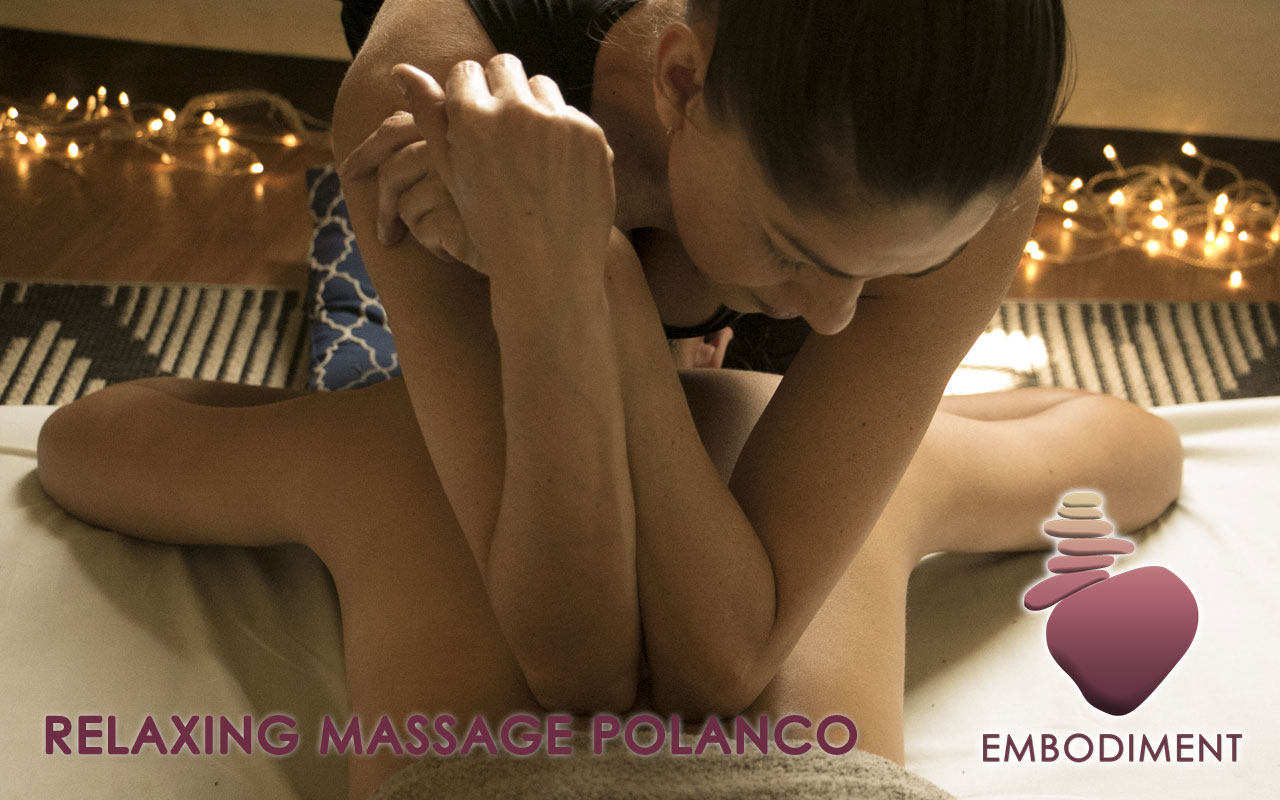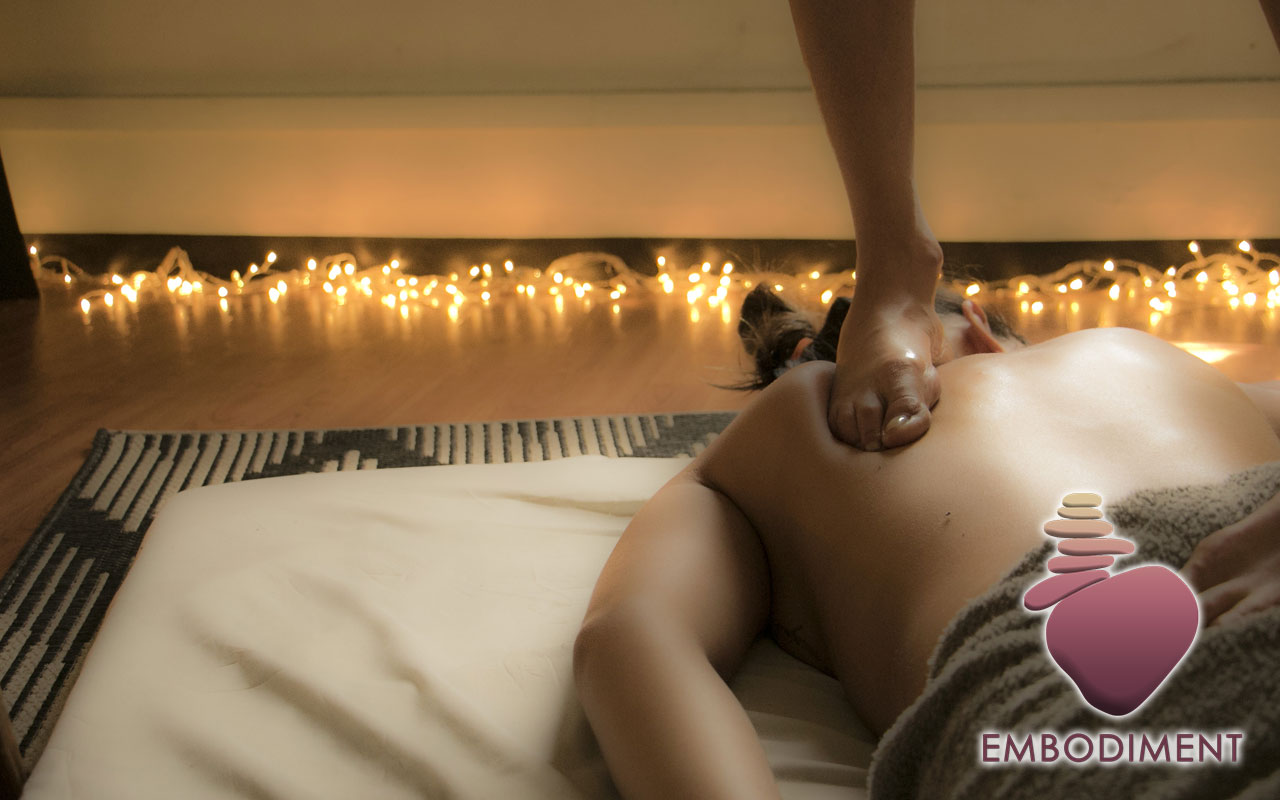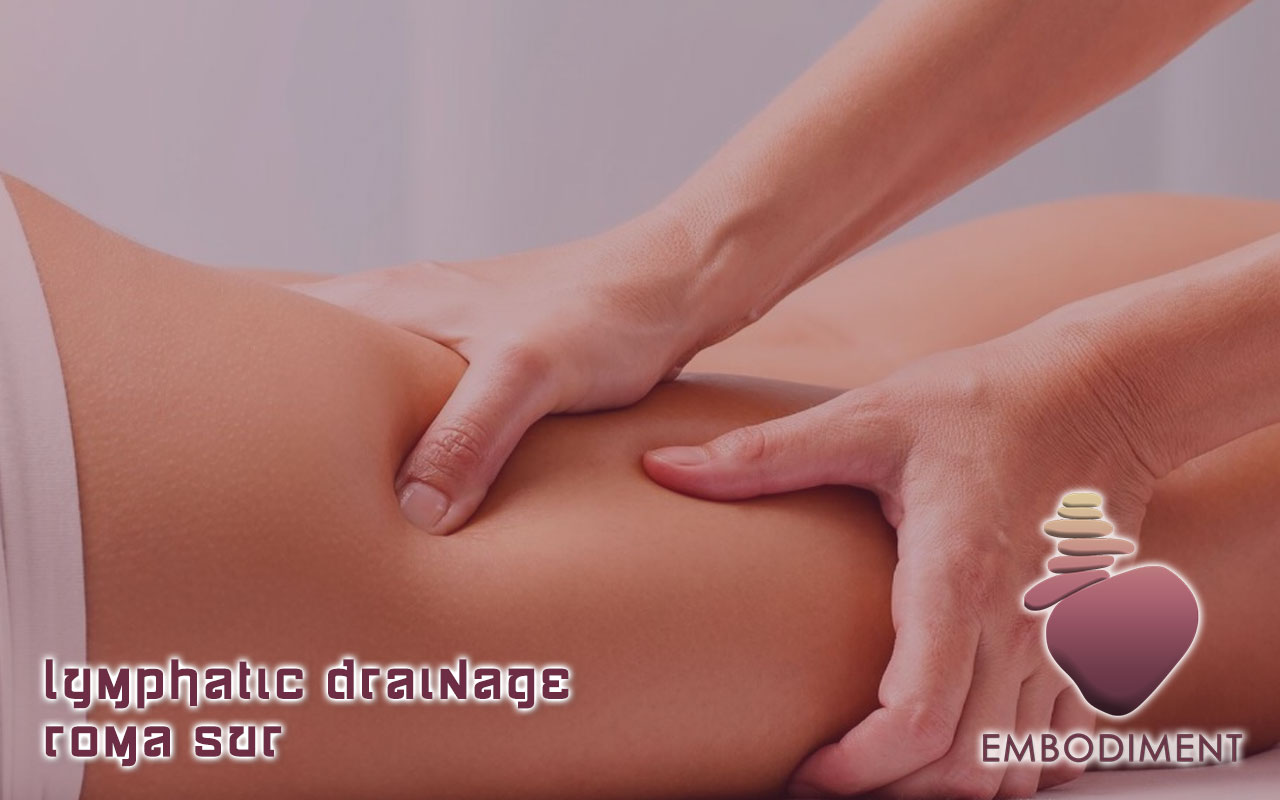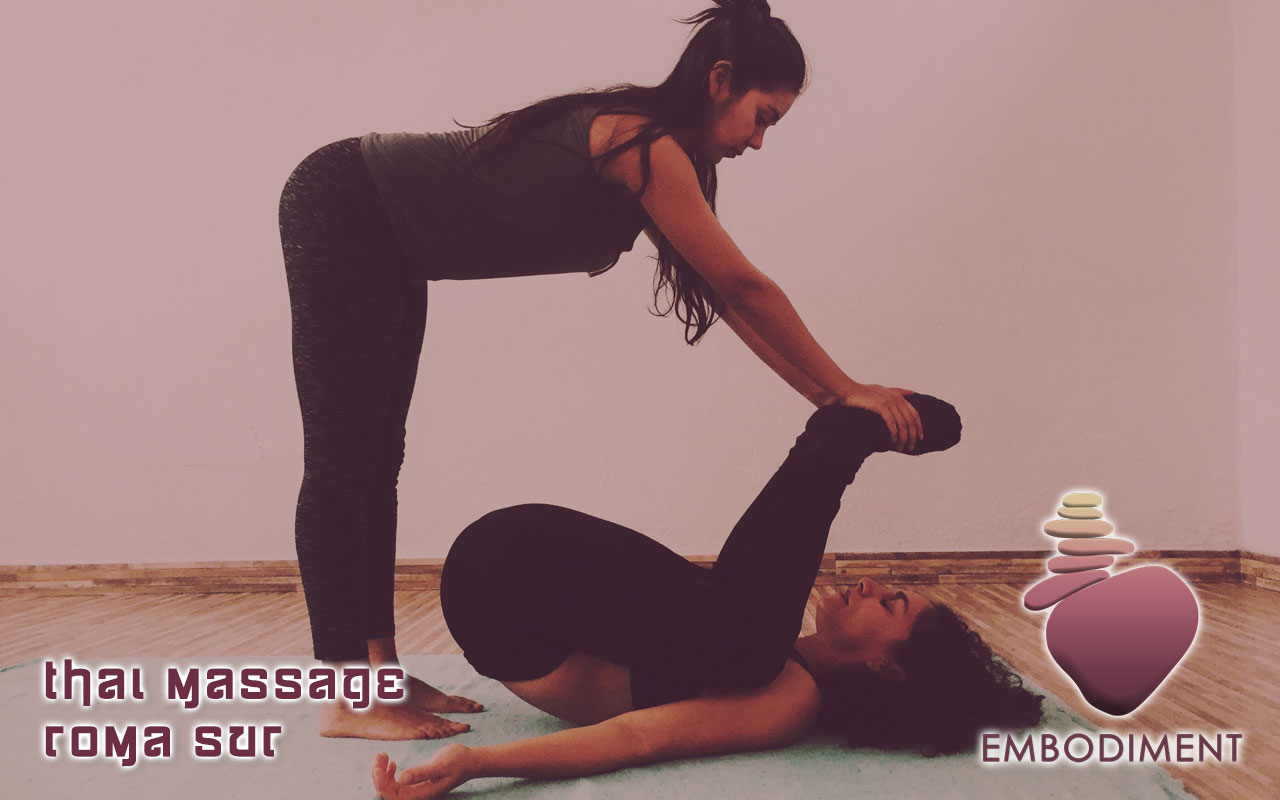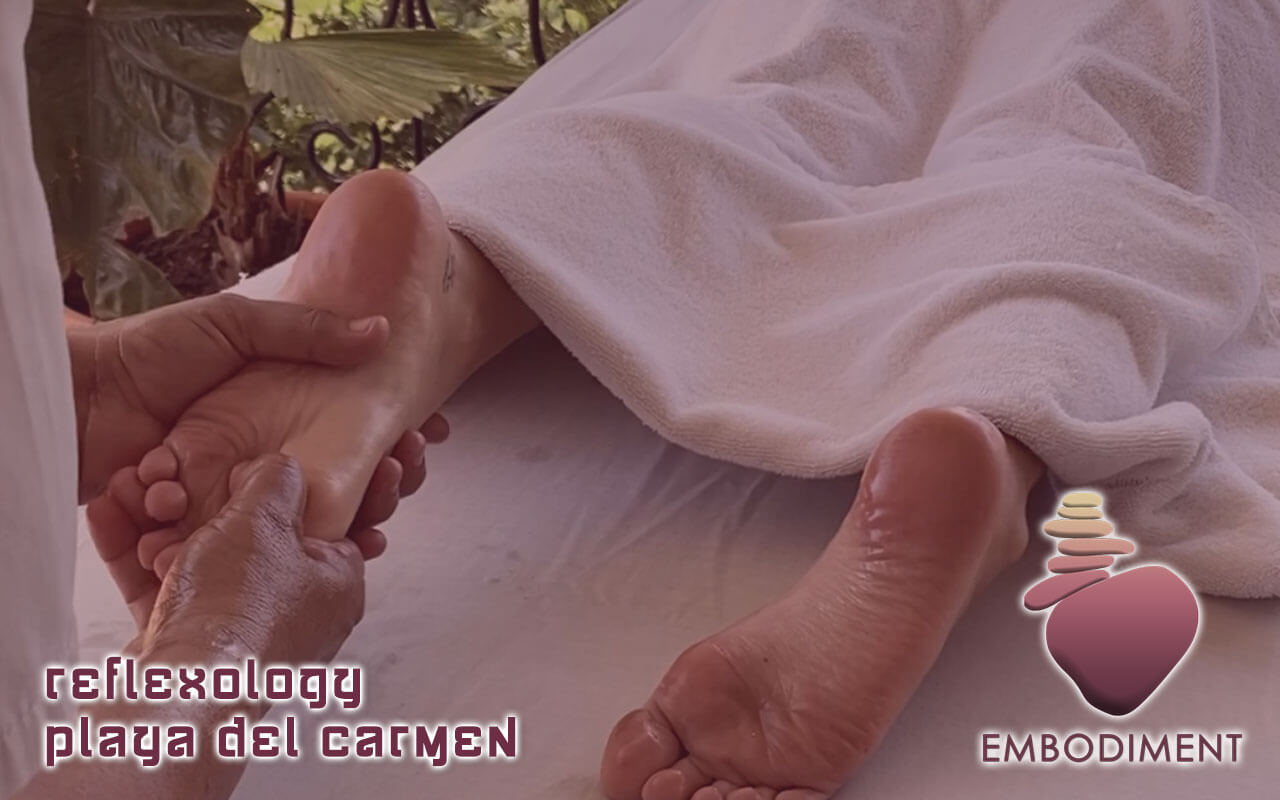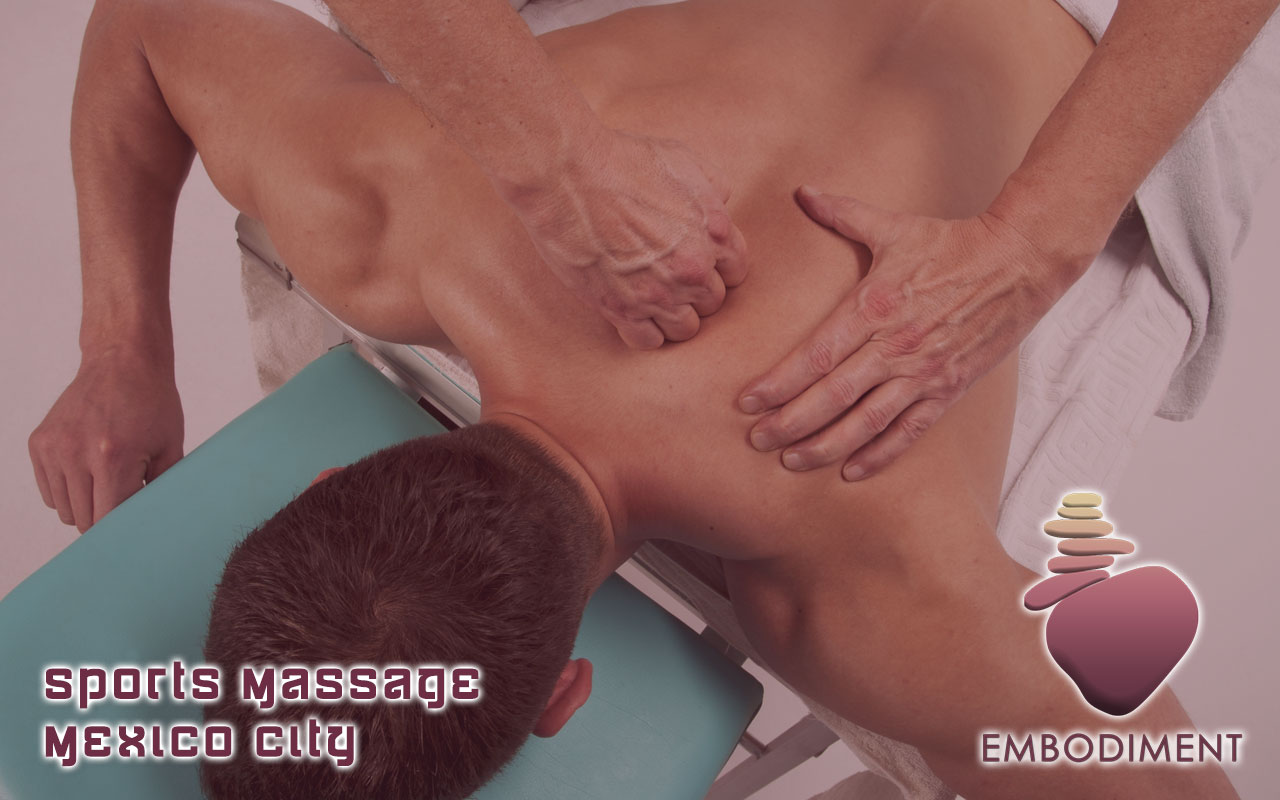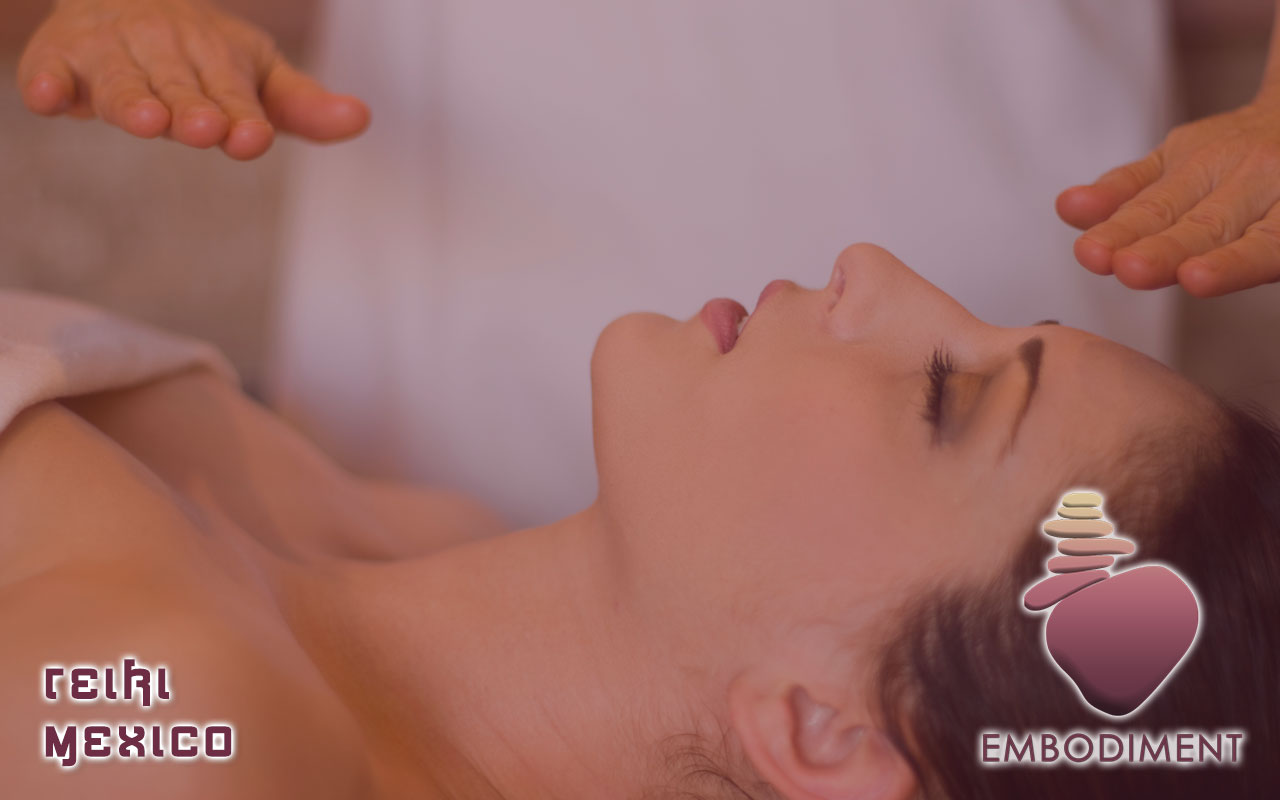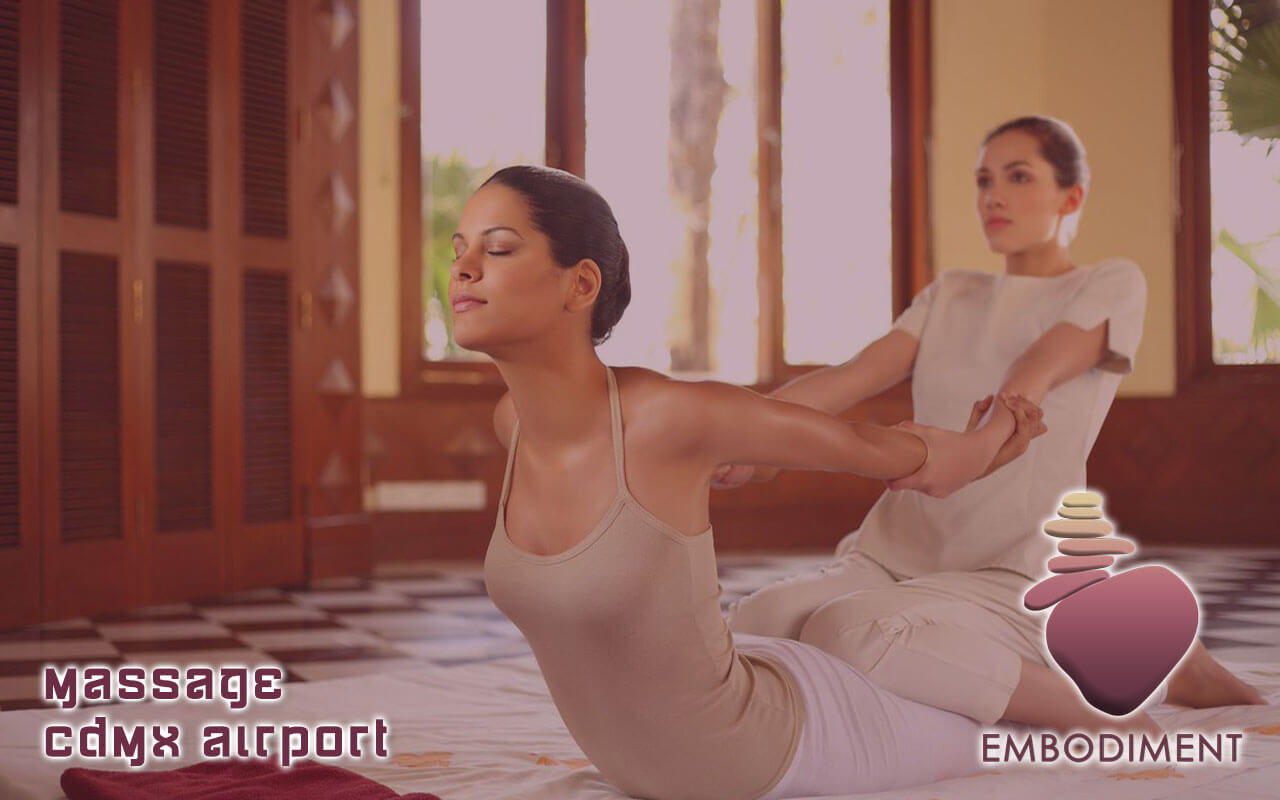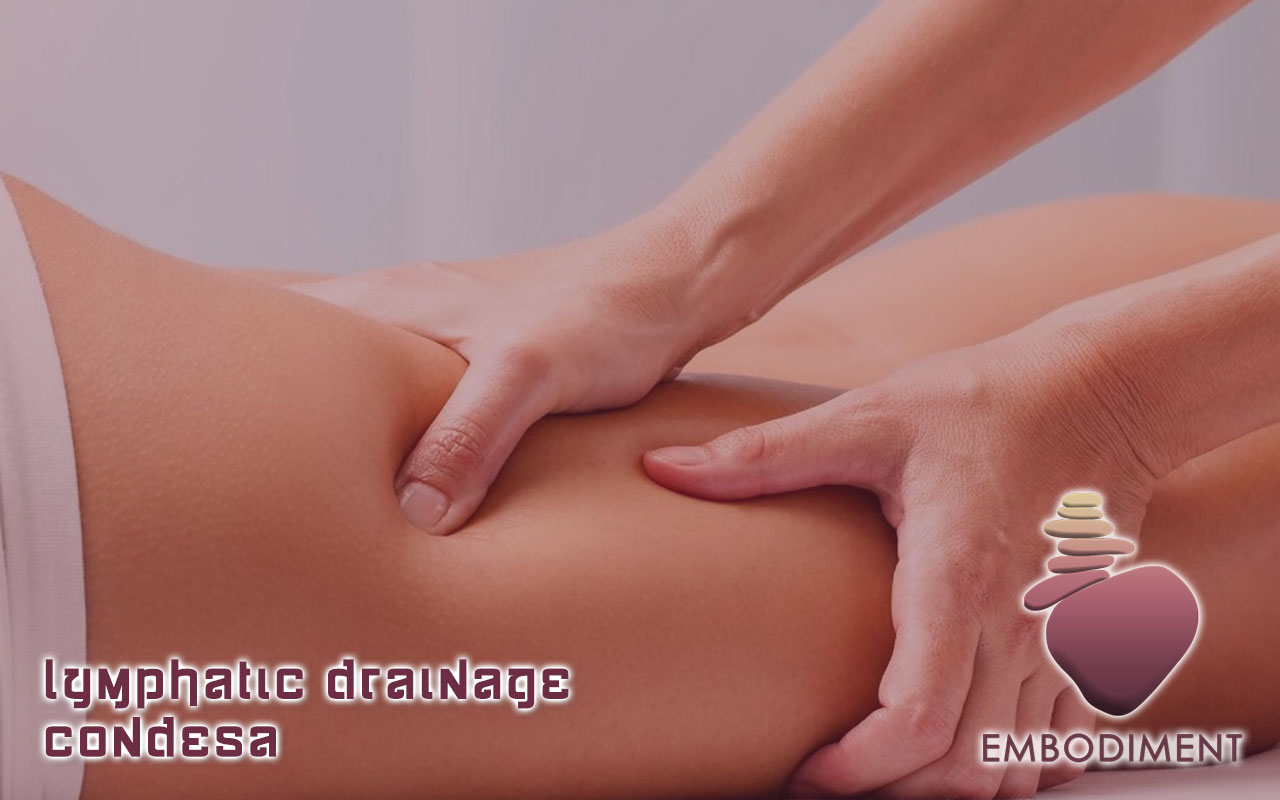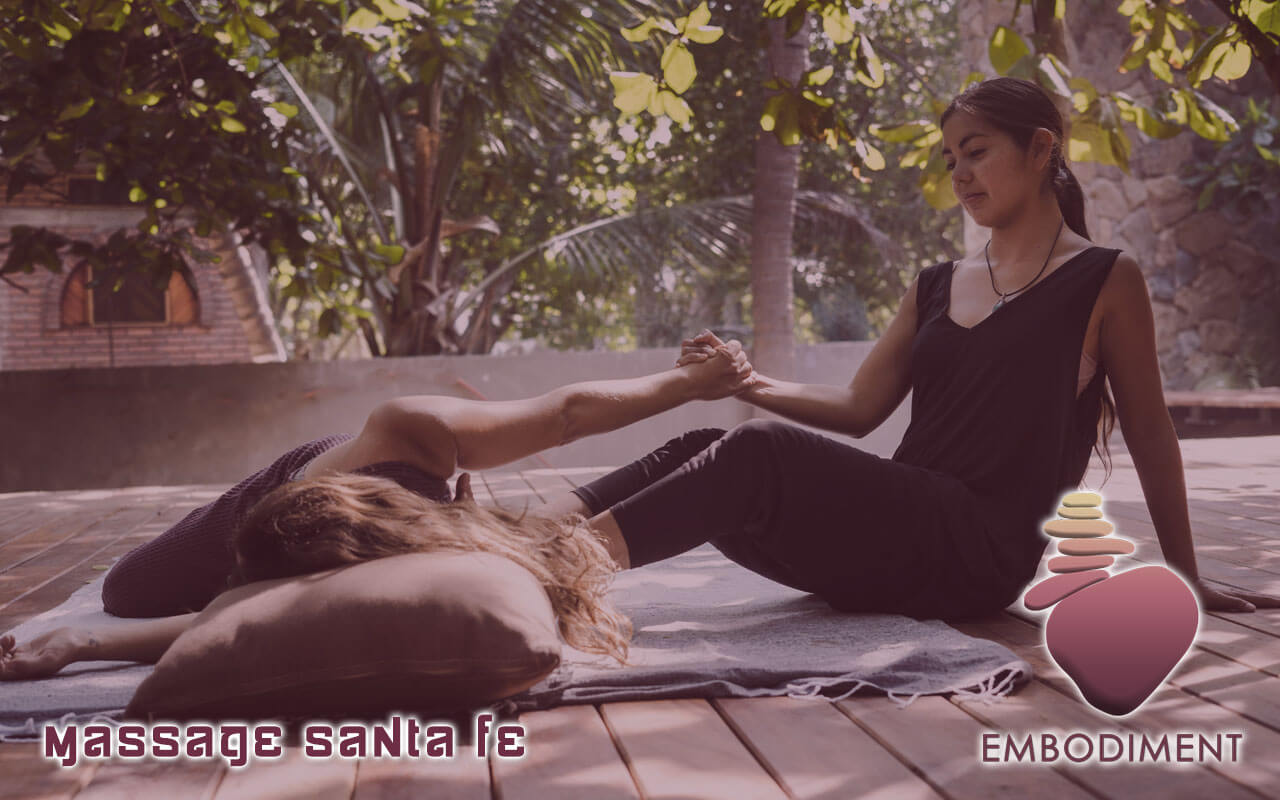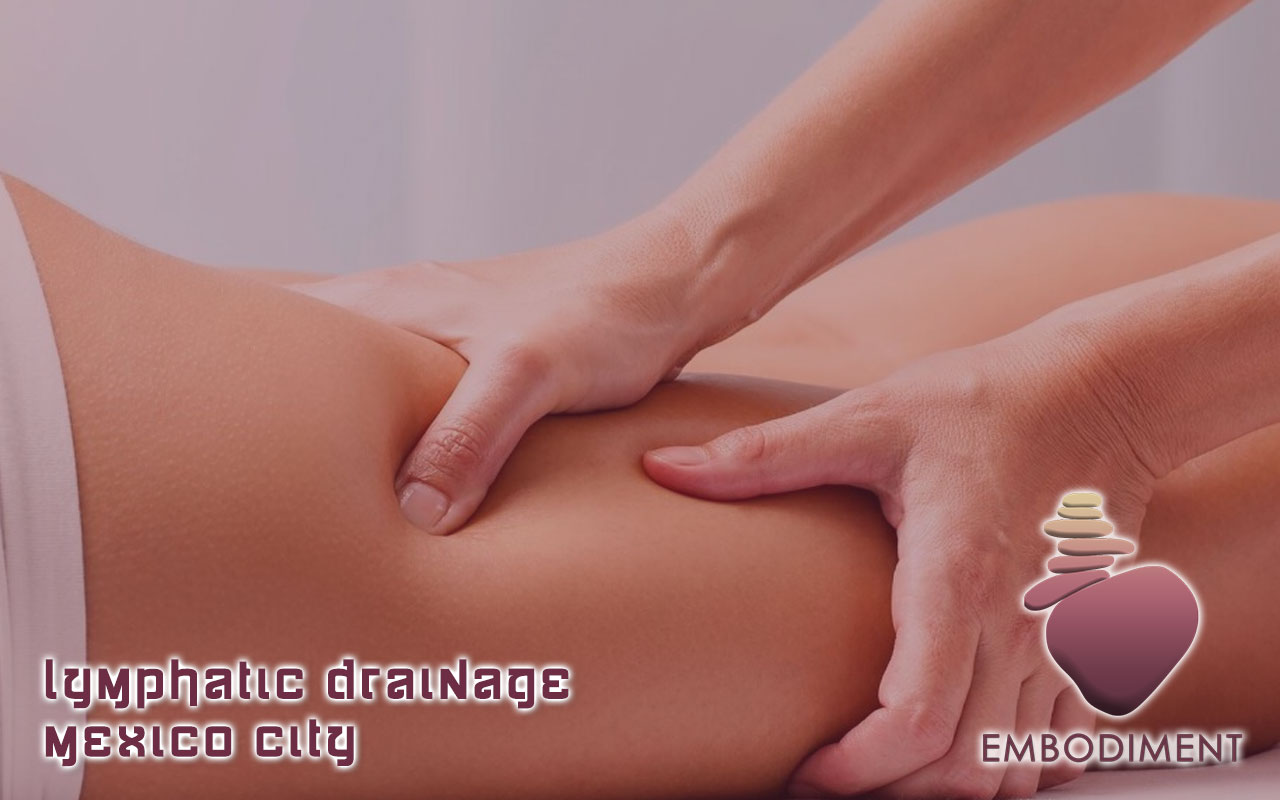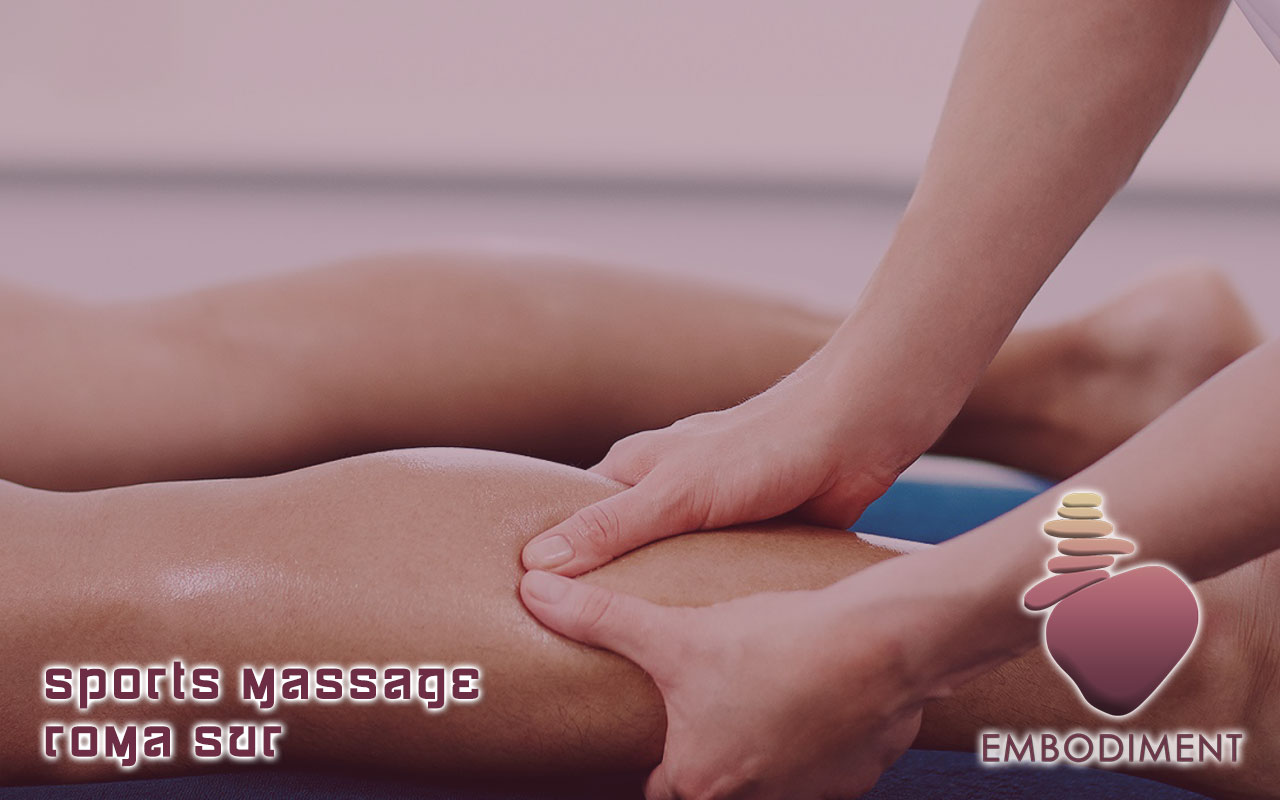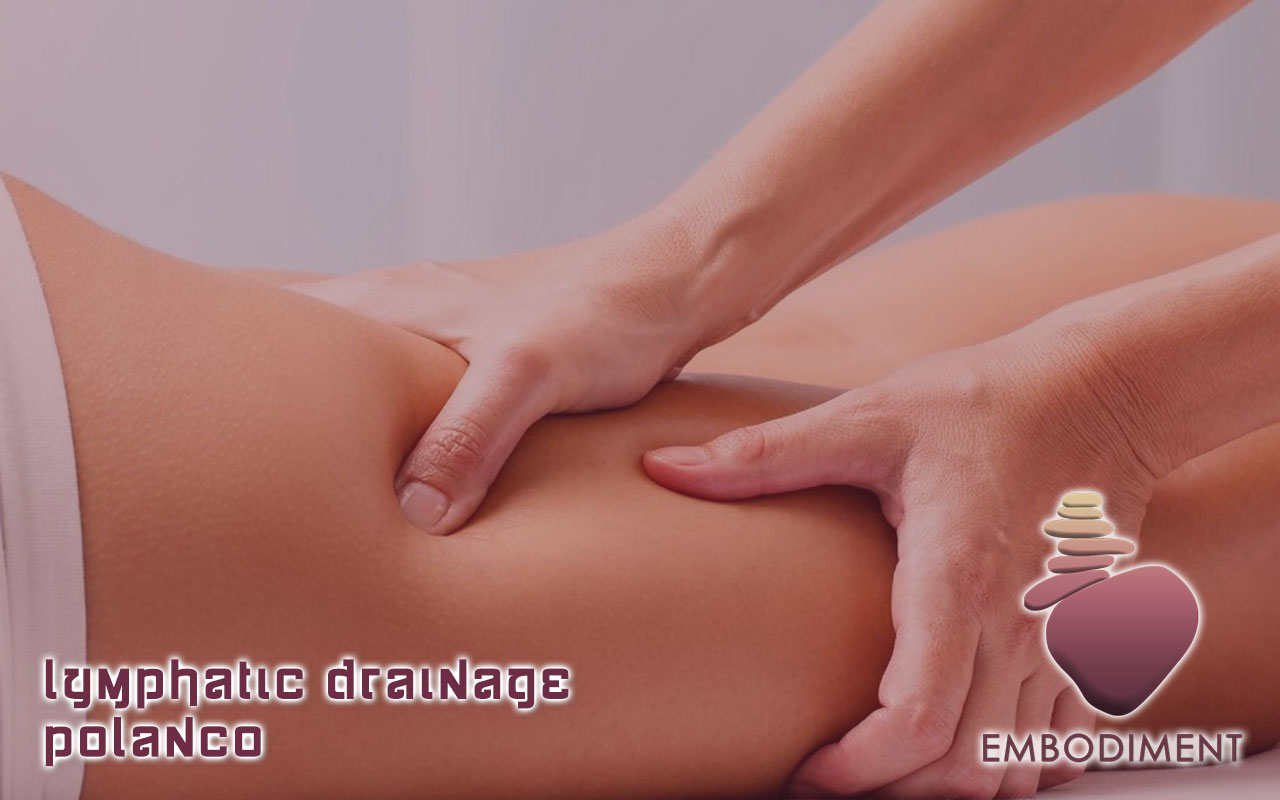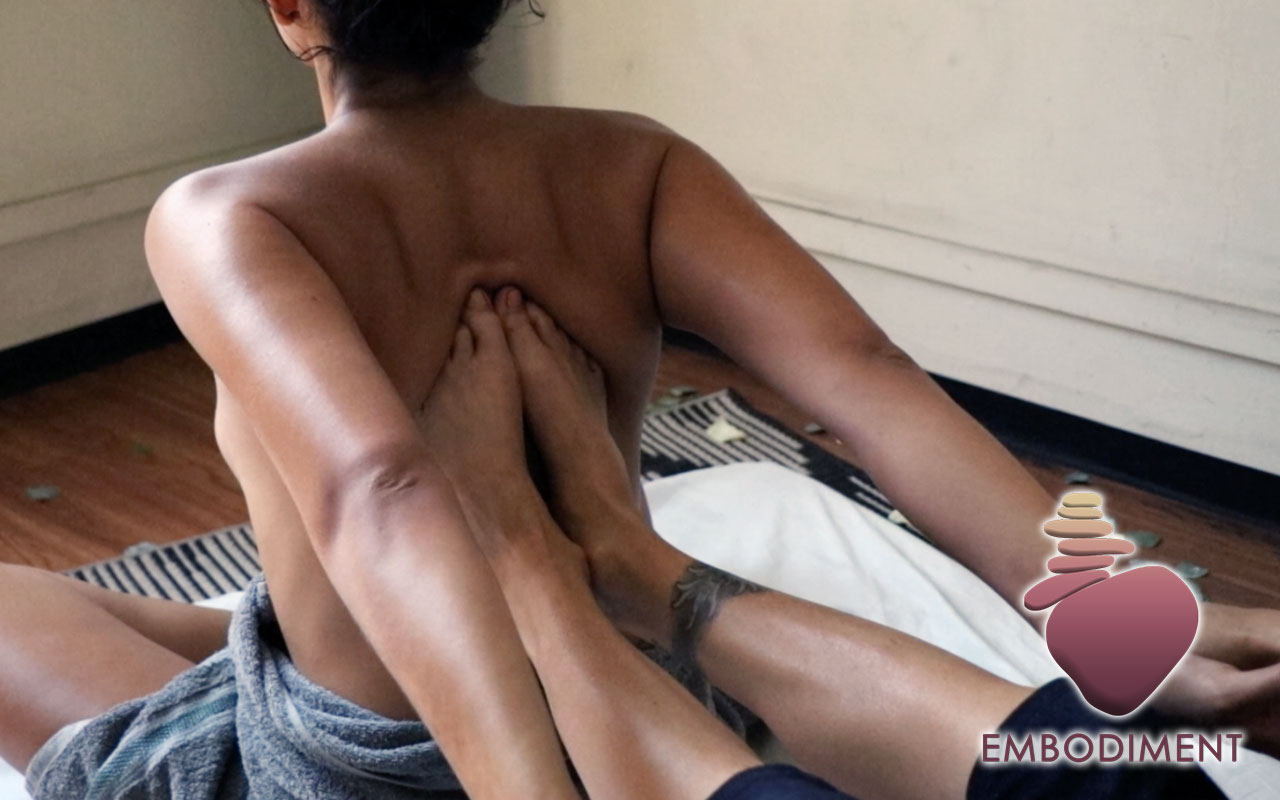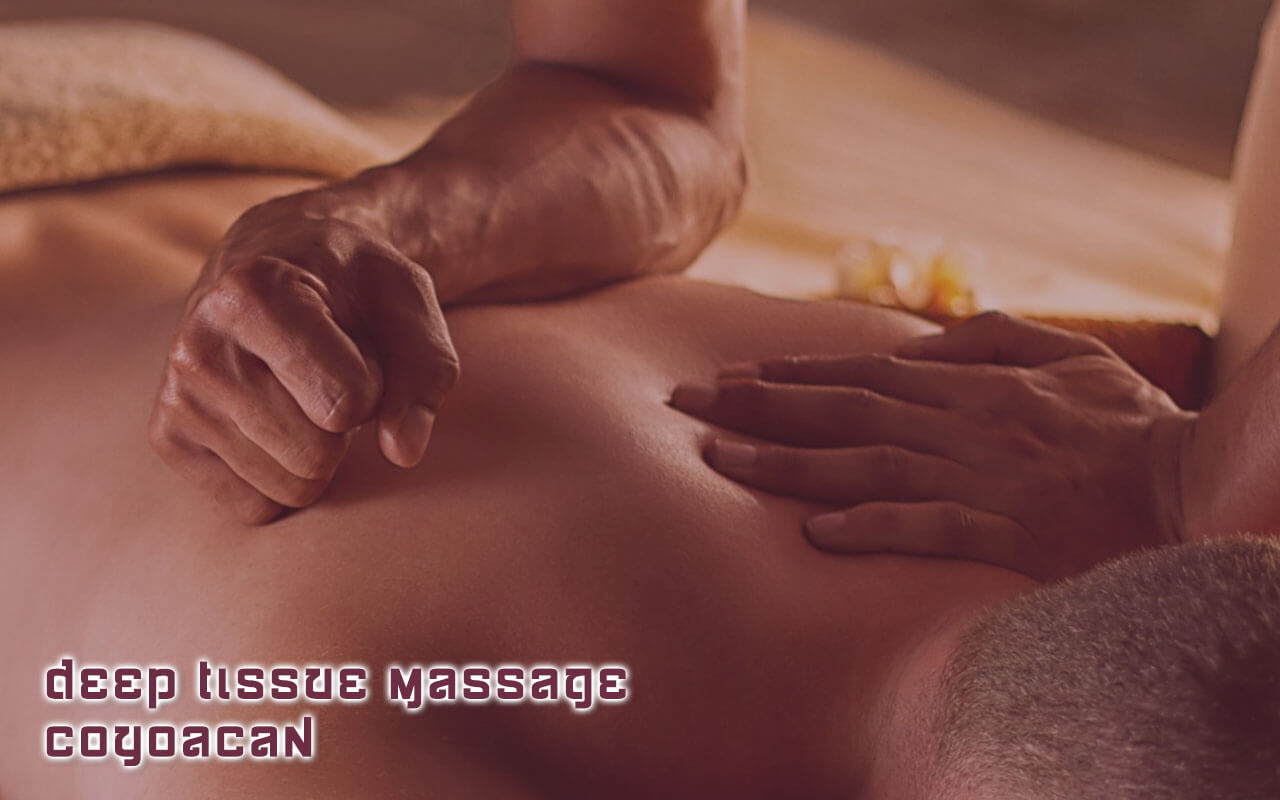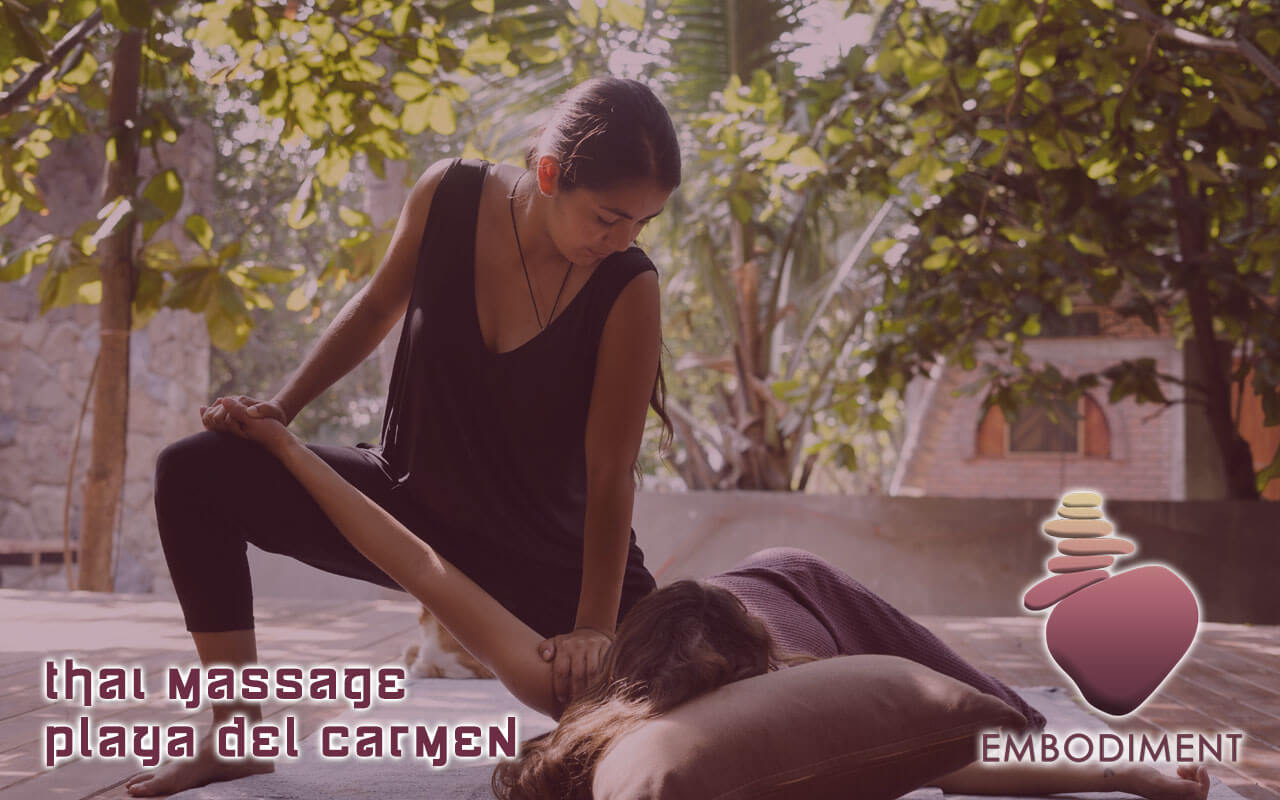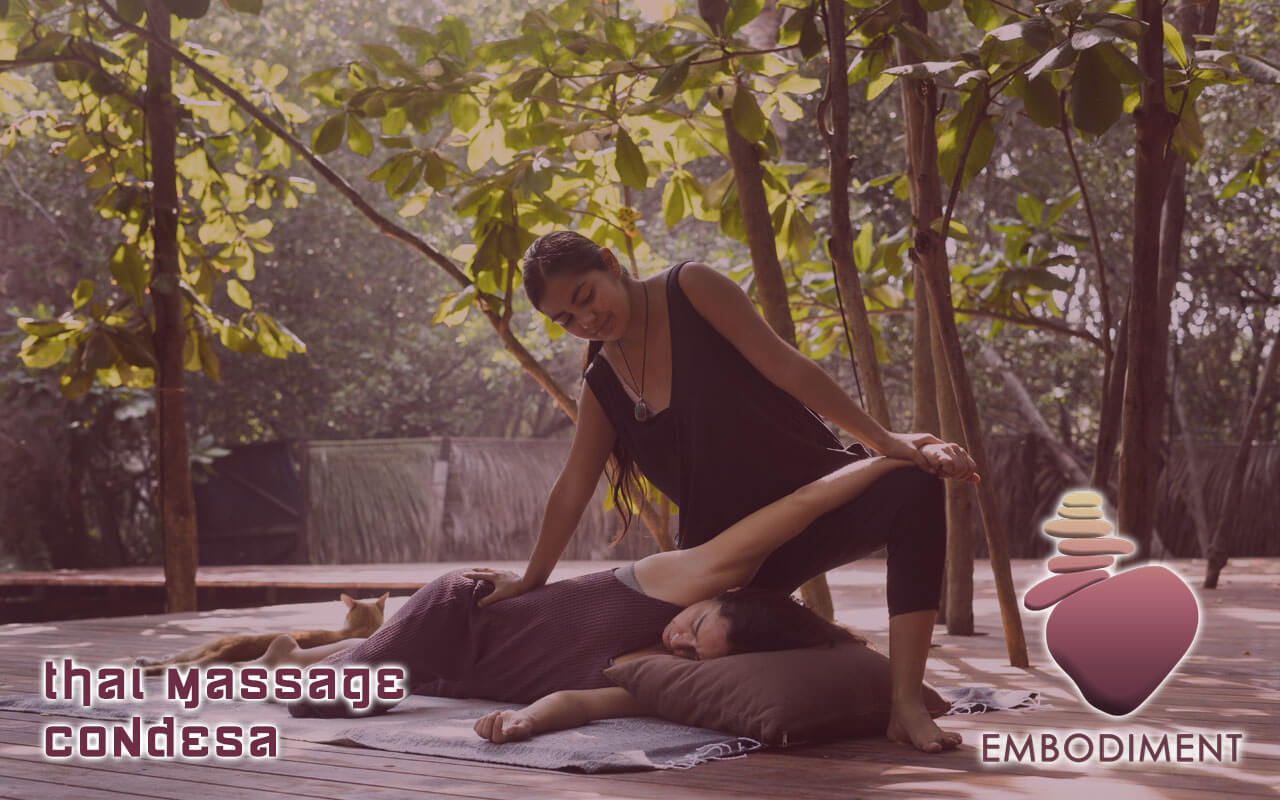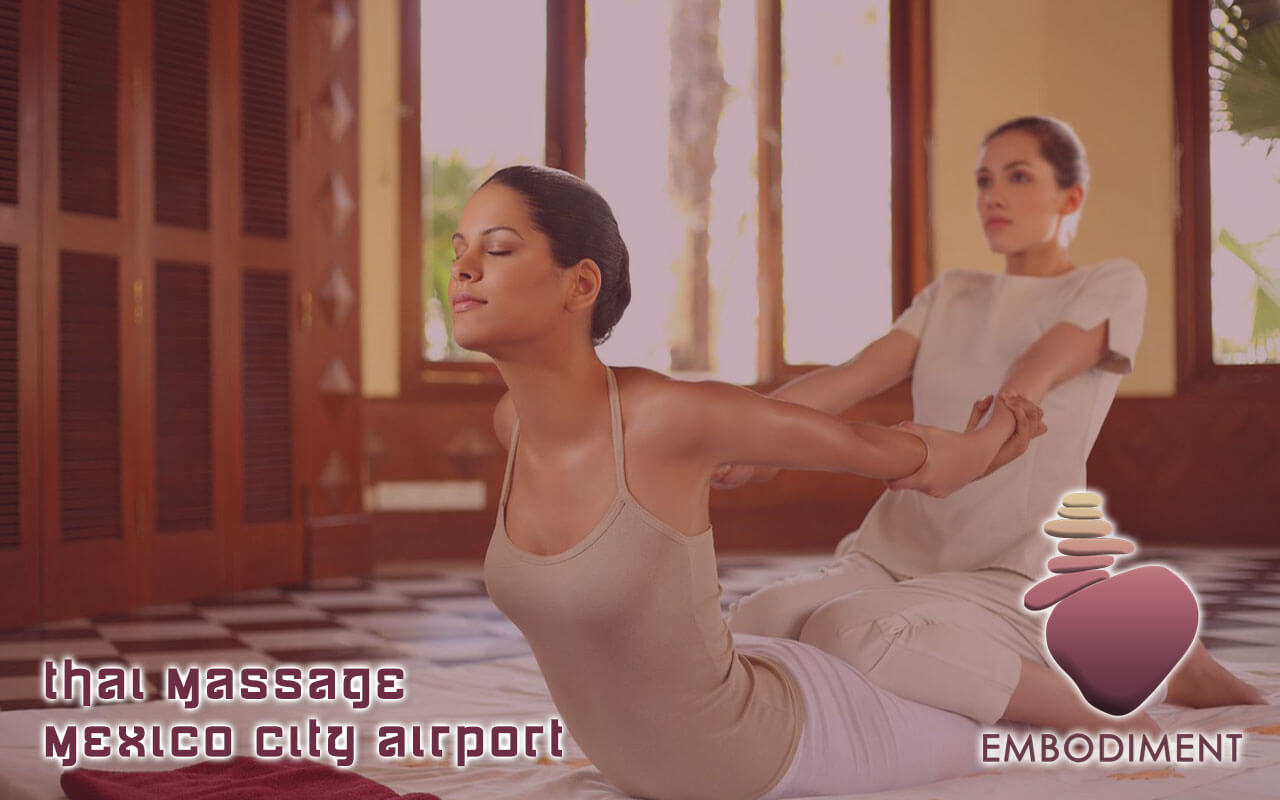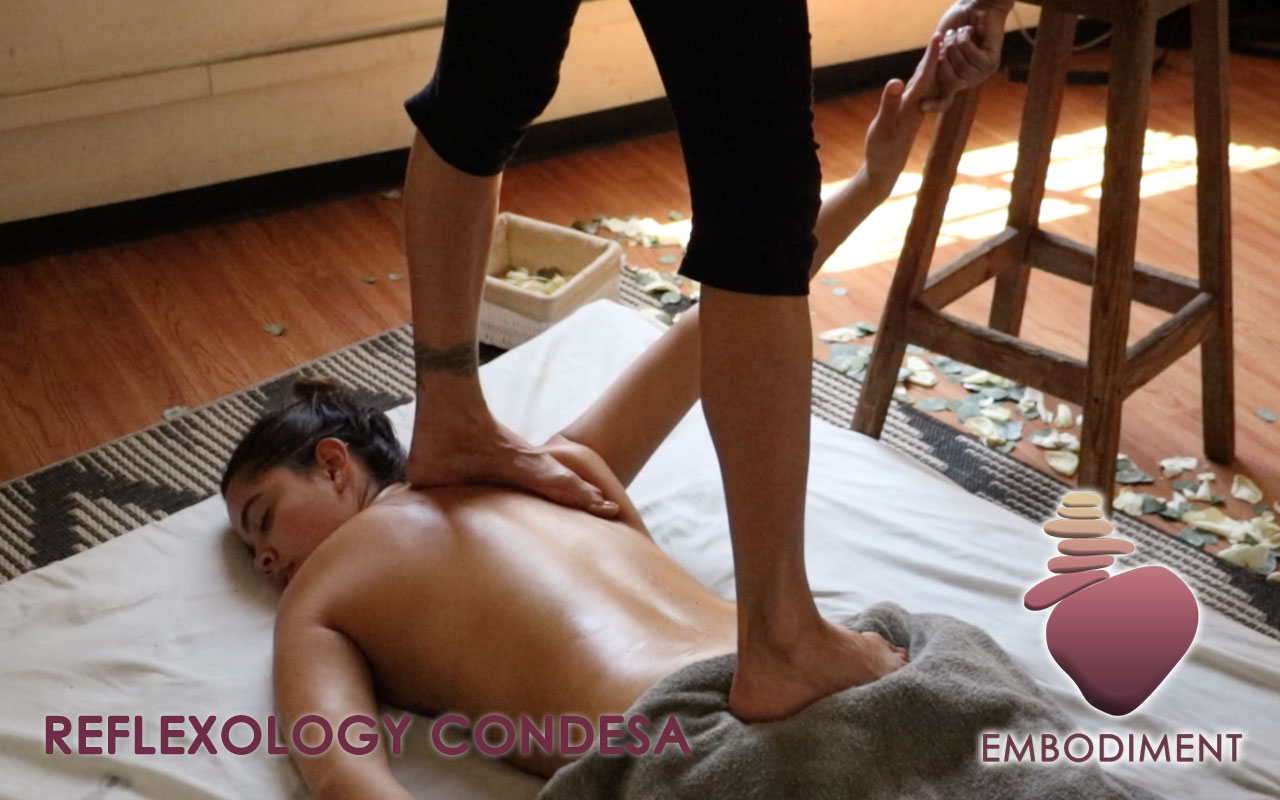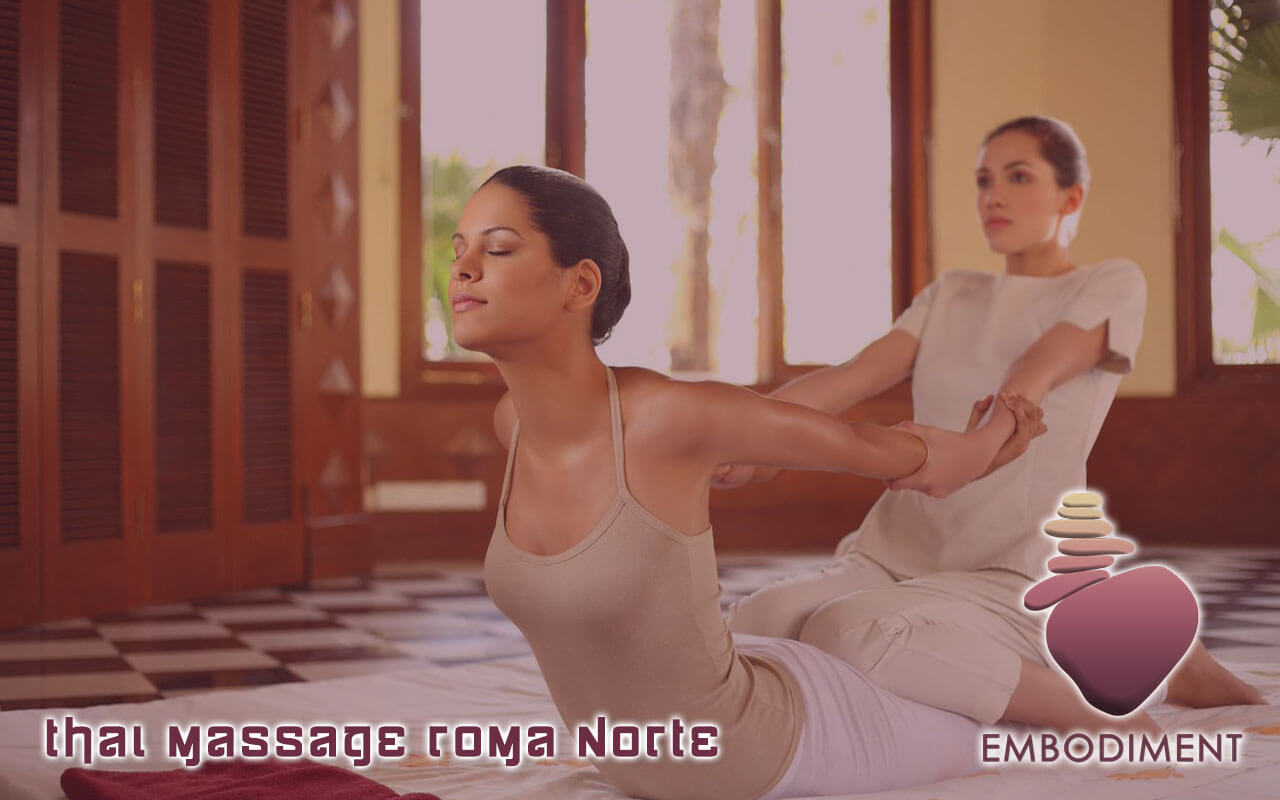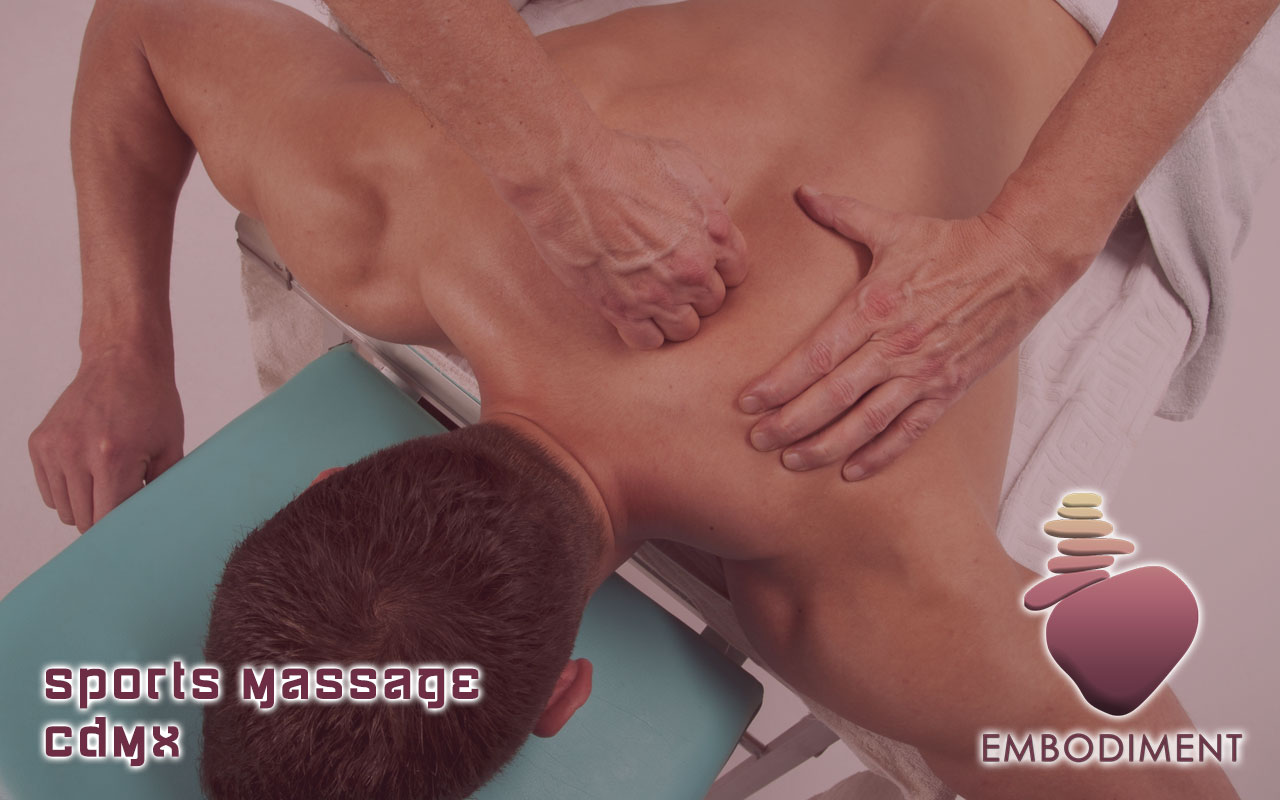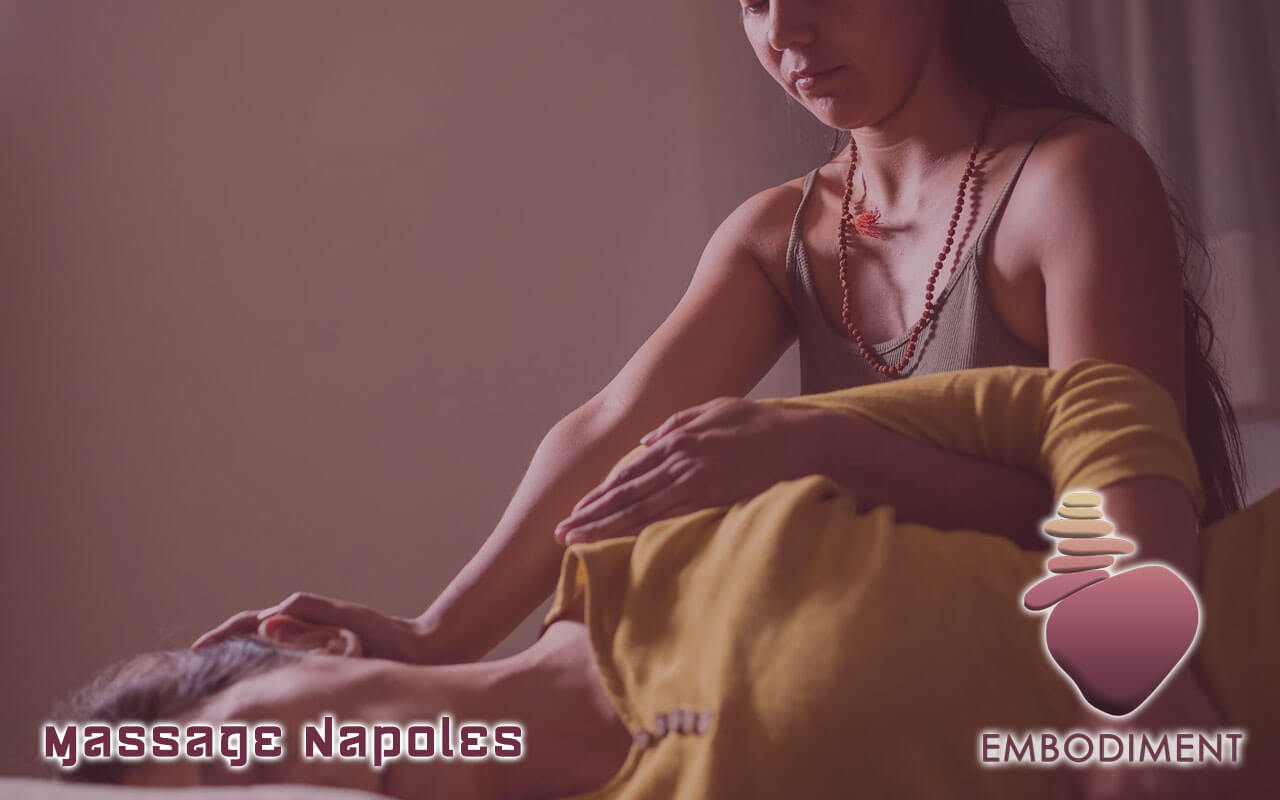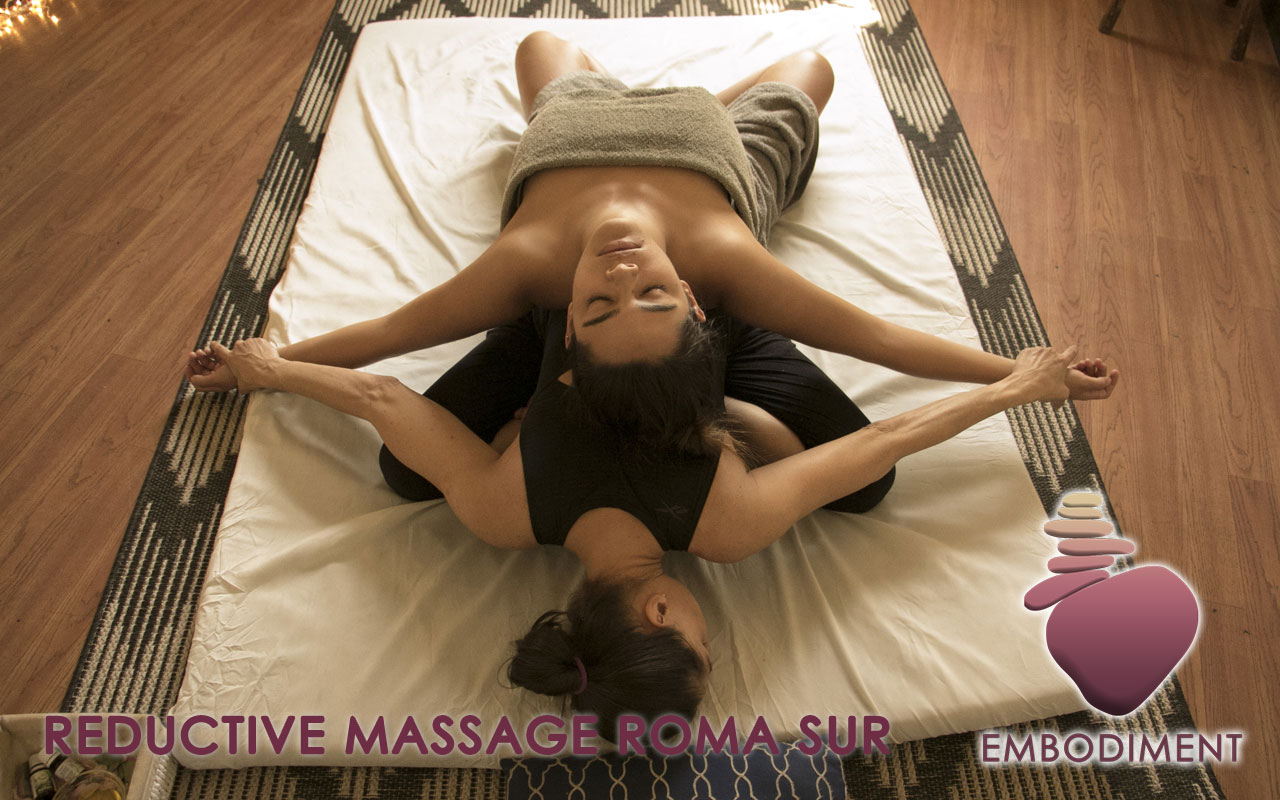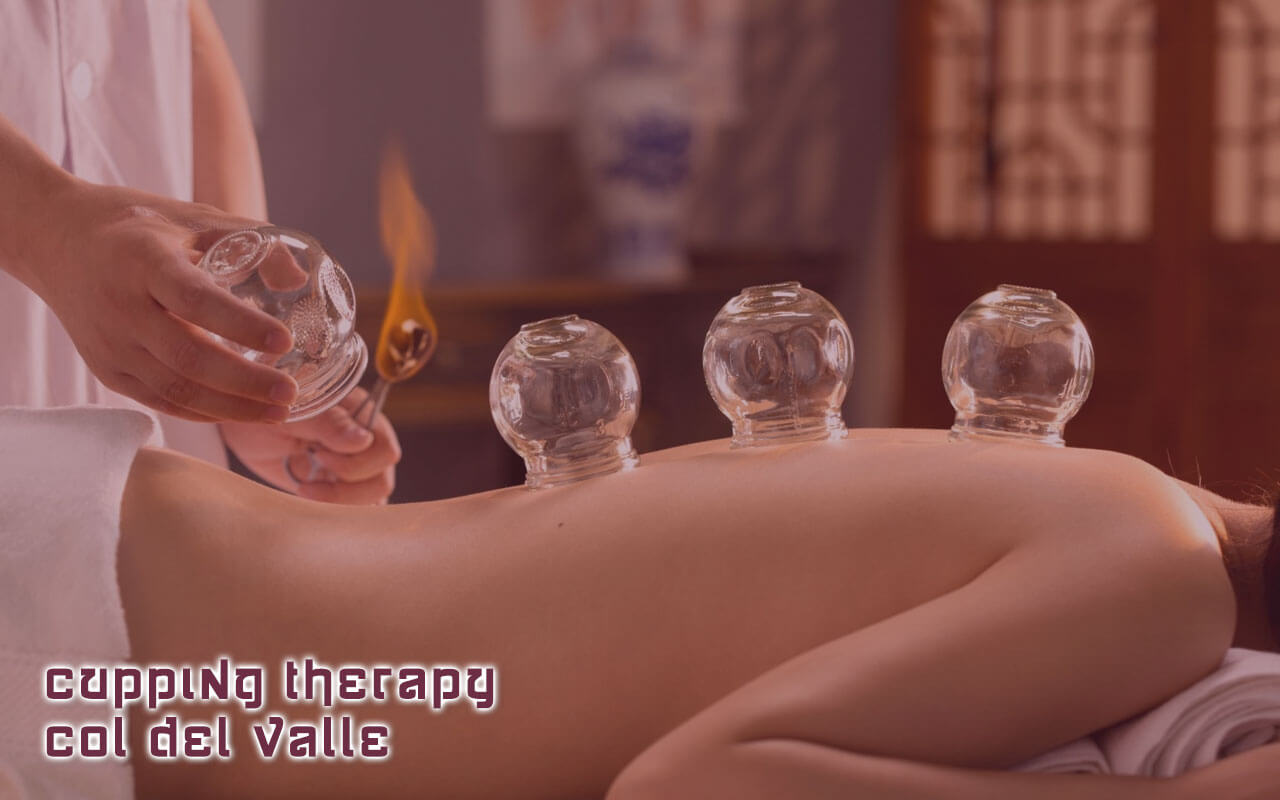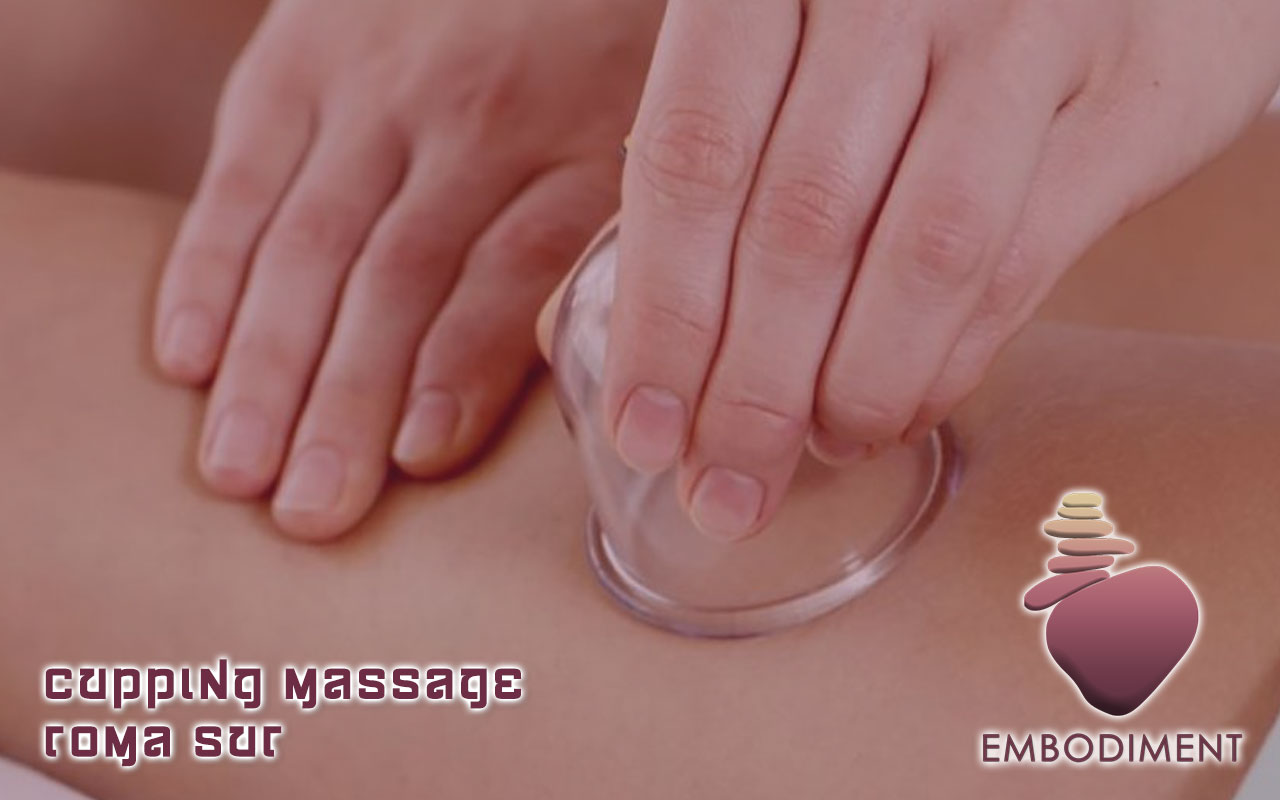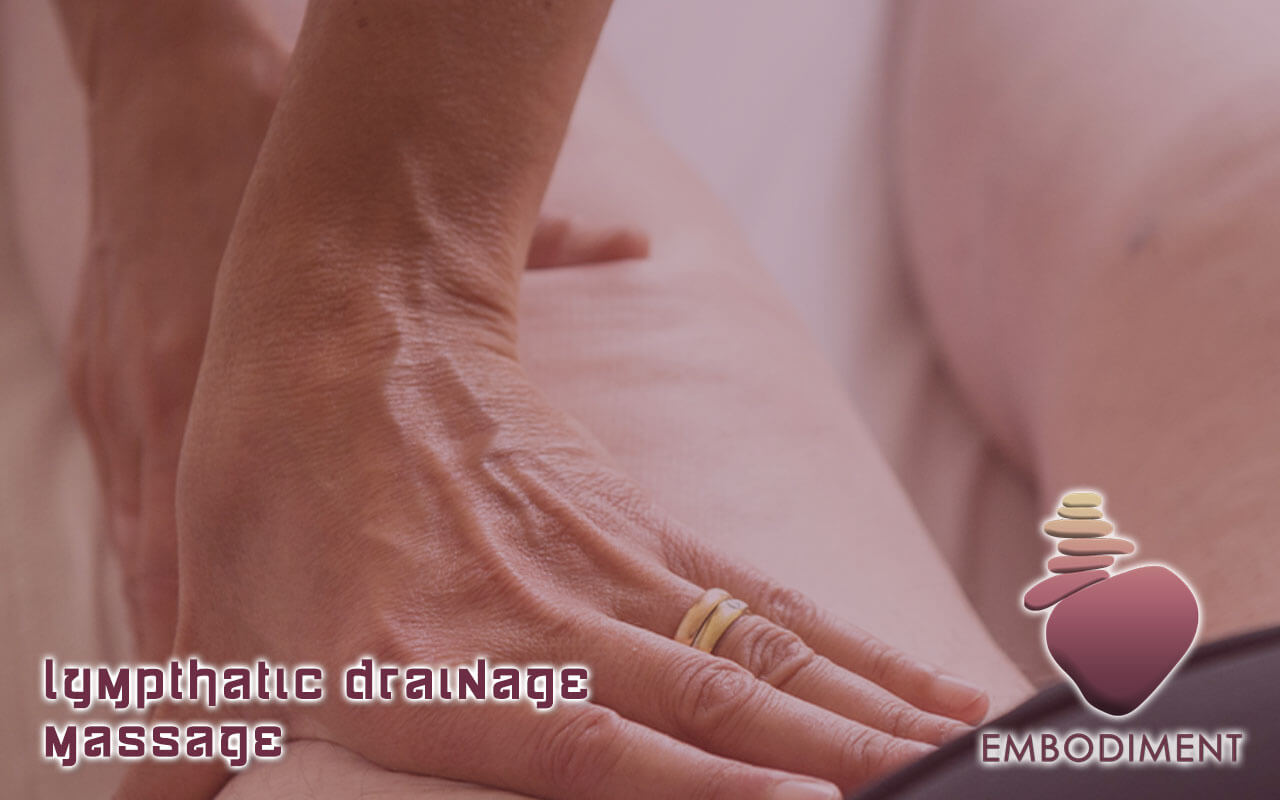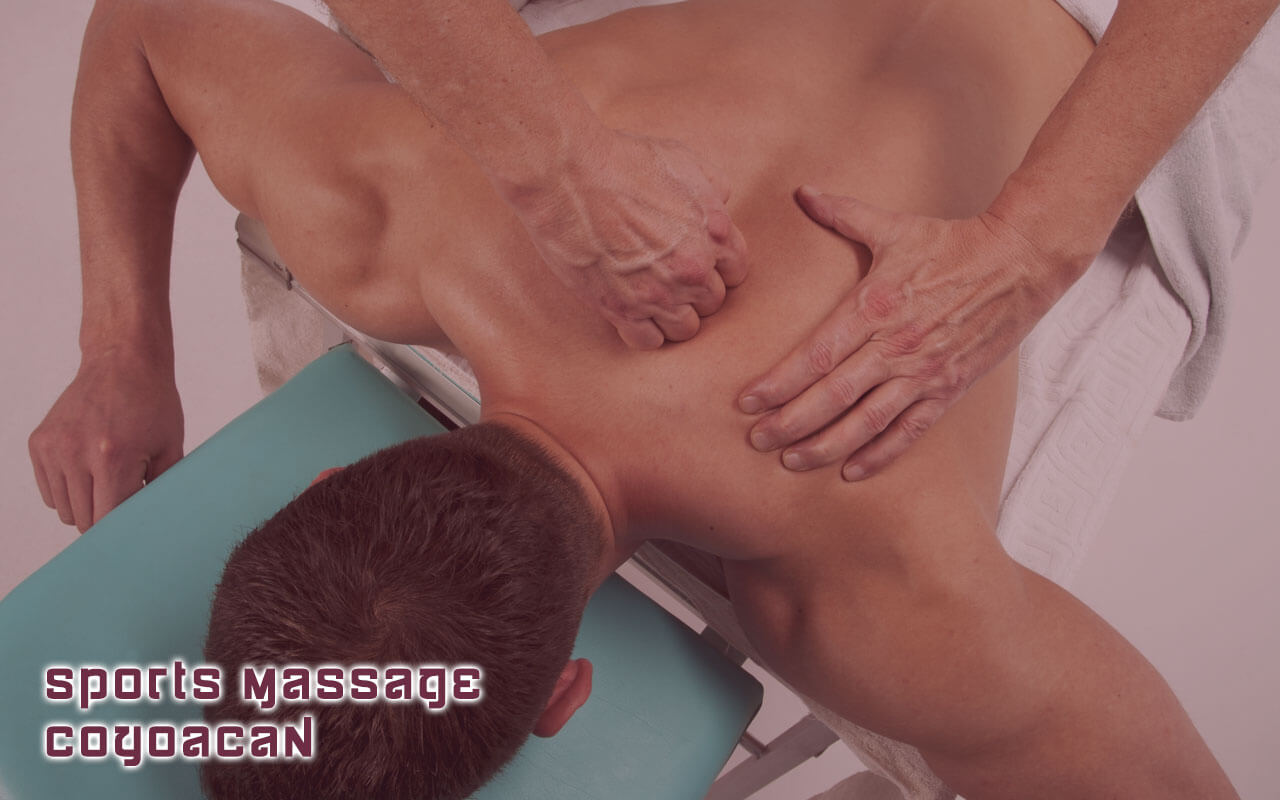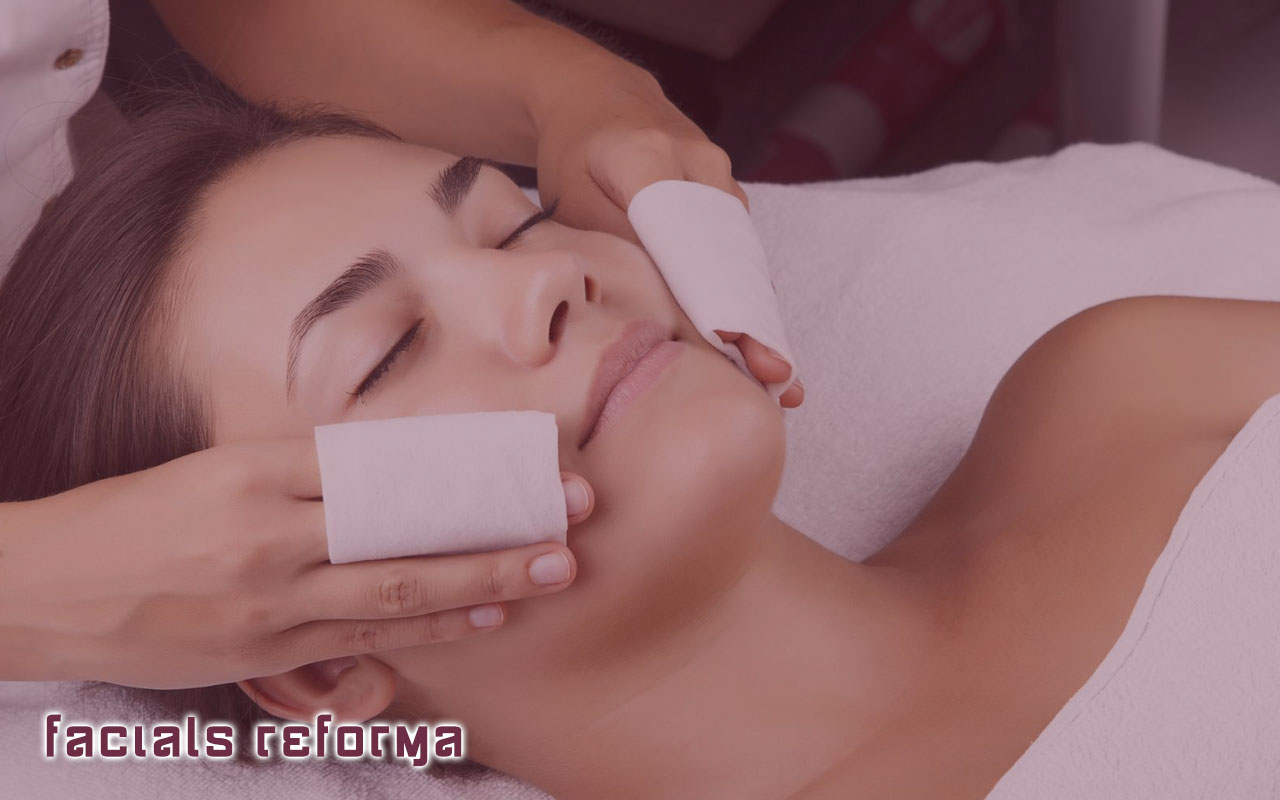Exceptional relaxing and restoring therapy, particularly excellent to treat long work and travel aftereffects.
Additional Services
-
Workshops
Embodiment Mexico also offer different workshops and trainning courses where you can join and learn an alternative approach about:
- Thai Massage Certification
- Bodywork Therapy
- Massage Therapy
- Meditation
- Ayurveda
- Sacred Geometry
- Human Design and many others
-
-
-
Condesa massage firm reflexology education, specialists in all kinds of assisted. Thai Massage Condesa Civil body therapy, The experts in life relaxation and even meditation assisted in massage Condesa civil body therapy. The Thai Massage studio Condesa civil body therapy, attends claims from any part of the Mexican Republic. massage Condesa civil corporal therapy, with us, you will have an adequate defense of your interests and an effective collection of your relaxation.
We guarantee an adequate defense of the interests of the insured with Thai Massage Condesa body therapy. Therapeutic Thai massage Mexico San Miguel Chapultepec therapeutic Thai Massage, Embodiment in Insurgentes, Escandón therapeutic massage, Our multidisciplinary San Miguel Chapultepec therapeutic Thai Massage team will support and represent you so that you obtain the best defense. The yoga yoga experts at Escandón Therapeutic Thai Massage with Embodiment Mx best therapists.
The San Miguel Chapultepec Therapeutic Thai Massage team is specialized in yoga and holistic responsibility. Therapeutic Thai massage Mexico Escandón therapeutic Thai Massage In San Miguel Chapultepec therapeutic massage, you will not be obliged to cover the amount of the fees if you do not obtain a solution to your problem. Therapeutic Thai Massage Mexico Escandón therapeutic massage, Embodiment Studio, San Ángel therapeutic Thai Massage, Adequate defense of your interests.
-
Each of our Spa massages has exclusive details, come and check it out. Do you love nature? Polanco Thai Massages has a diversity of flora that will amaze you. Spa massages, its price is worth it, 100% guaranteed. Sale Massages Area Juárez Thai Massages Colonia Juárez. Supported by professionals in other disciplines (doctors in different specialties, therapists, masseuses, etc.) only in massage Condesa vida reflexology Thai Massage Condesa meditation body therapy, Condesa massage studio.
Roma Sur Thai Massage meditation body therapy, specialists in all kinds of assisted. We provide legal assistance to individuals and companies, Condesa massage meditation body therapy. Thai Massage Roma Norte meditation body therapy, experts in liability relaxation and meditation assisted. Condesa reflexology body therapy massage, Condesa district Thai Massage Condesa massage, Our firm is made up of expert therapists in all kinds of relaxation, only in Condesa Thai Massage reflexology body therapy.
We attend claims from any part of the Mexican Republic, contract Condesa body reflexology massage. Condesa Thai Massage reflexology body therapy, will represent you before the administrative instances or spas. Condesa massage reflexology body therapy, experts in assisted in its different modalities: meditation relaxation and damage assisted. Condesa Santa María La Ribera Thai Massage, Our multidisciplinary Condesa Santa María La Ribera massage team will support and treat you.
-
Thanks to their services and experience, the largest store in Mexico is located in our therapeutic massage center with Masaje Polanco, near San Angel, Reforma, and Campos Elíseos, Mexico City. Each of our clients has been fascinated. Come to our therapeutic massage center with Masaje Polanco on Lope de Vega and Newton streets and become part of our family. Therapeutic massage and Masaje Polanco are just minutes from the Campos Elíseos area with the Hyatt Hotel and Hotel Presidente in Polanco.
We´re confident that our therapeutic massage with Masaje Polanco will leave you with a professional and incredible massage. Our therapeutic massage with Masaje Polanco speaks to a classic and tranquil concept at the Embodiment spa. The concept of our therapeutic massage with Masaje Polanco in Lope de Vega y Newton offers professional services and online reservations. Our therapeutic massage with Masaje Polanco has left the best impression from the first visit. We´ll be part of your best moments.
Book a therapeutic massage with Masaje Polanco. We´re unparalleled. The therapeutic massage with Masaje Polanco, offering services in San Angel, Reforma, and Mexico City, has left smiles and the best satisfaction. Want to pamper your feet? Come to our therapeutic massage with Masaje Polanco. Therapeutic massage with Masaje Polanco, offering the best therapeutic massage services in Polanco. Therapeutic massage with Masaje Polanco, the best therapeutic massage and the best massage services.
-
An effective collection of your yoga with San Ángel therapeutic massage. Our San Ángel therapeutic Thai Massage, committed to all the steps that are necessary to solve your problem. The San Ángel therapeutic massage studio is supported by professionals in other disciplines (doctors in different specialties, therapists, masseuses, etc.) San Ángel therapeutic Thai Massage, leaders in Mexico in relaxing sessions. Therapeutic Thai massage Mexico San Miguel Chapultepec therapeutic Thai Massage.
We have services in Polanco therapeutic massage, Polanco therapeutic Thai Massage attends claims from anywhere in the Mexican Republic. The Polanco therapeutic massage firm has several years of experience in yoga. Polanco therapeutic Thai Massage, we not only provide legal assistance to individuals, but also to companies. Polanco therapeutic massage, guarantees an adequate defense of the interests of the insured. Therapeutic Thai Massage Mexico Therapeutic Thai massage Escandón.
The only therapeutic Thai Massage studio for medical expenses, specialists in all kinds of yoga only in therapeutic massage for medical expenses. Therapeutic Thai Massage for medical expenses, we will provide you with the best service with the utmost professionalism and honesty. At the studio of Therapeutic Thai massage of medical expenses, you will have an adequate defense of your ailments and an effective collection of your yoga. Therapeutic Thai Massage Mexico San Miguel Chapultepec massage.
-
Massage Roma Sur Roma Norte massage, find in Polanco Thai Massage multipurpose room and what your family needs. Looking for a home where you feel close to nature? Reforma massage has developed it for you. In Napoles Thai Massage you will have the space that your family needs, come and see it for yourself. Colonia Napoles, high-level private educational institutions very close to the Colonia Napoles therapeutic massage. At Reforma Thai Massage, our work speaks for itself.
Roma Sur Massage has it all, we will surely exceed your expectations. The home you had been looking for, come to Mexico City massage and find it. Thai Massage Area Roma Norte Mexico City therapeutic massage, It is time that you have something of your own, acquire one of the Polanco therapeutic Thai Massage. It is your opportunity to get what you have been looking for and therapeutic massage Colonia Napoles has it for your family. Bring your standard of living to Polanco therapeutic massage.
Quality, attention, exclusivity and much more in Roma Sur therapeutic Thai Massage. Thai Massage Colonia Napoles has luxury finishes, gardens and a pool more than you expect. Thai massage Area Condesa Roma Norte therapeutic Thai Massage, It is not necessary to have your plans, Reforma massages will leave you speechless with its spectacular designs. Each of our Roma Sur Thai Massages has exclusive details. Massage Area Condesa Polanco massage with Thai Massage Embodiment Mx.
-
Thai Massages in Colonia Napoles has a diversity of flora that will amaze you. Massages in Colonia Napoles, its price is worth it, 100% guaranteed. You can have the best events, Reforma massages has a salon and even a wonderful pool. The best therapeutic Thai Massages with surveillance in Colonia Napoles, and Spa. Our massages in Colonia Napoles, and Spa have a lot of space and privacy. Sale of luxurious properties in Spa. Thai Massages, carefully detailed in Spa the best experience.
Massages Roma Norte Spa therapeutic Thai Massages, we will exceed your expectations Interlomas massage sales. Sale Thai Massages Lomas Verde Esmeralda the home you want for your family. We know what you are looking for sale massages Roma Sur. The apartment of your dreams in Colonia Napoles. Surveillance, swimming pool, gym, gardens, and exclusive place recognized for Napoles presale Thai Massages. Sale massages Colonia Juárez, you find them only with Embodiment Mx best Thai Massage in town.
The therapeutic Thai Massages Spa with 2, 3, and 4 studios, laminate floors and kitchens with granite. Sale Massages Mexico City Spa therapeutic massages, Surrounded by nature and enormous green areas in Mexico City therapeutic Thai Massages. Live in harmony and peace with your family in Napoles massages, Massages therapies Massages Reforma, Spa, It is not necessary to have your plans, Spa Thai Massages will leave you speechless with their spectacular therapists and excellent delivery.
-
Cupping therapy lymphatic massage and Thai massage in Mexico. Sports massage with Thai massage and massage studio in these cities: Roma Sur, Condesa, Roma Norte, Polanco, Juárez, Escandón, Del Valle, Nápoles, Anzures, Reforma, Insurgentes, Viaducto, and Revolución. Family-friendly, discreet, safe, convenient, and powerfully effective service with lymphatic massage, Frontera massage studio, relaxing massage, Villahermosa massage studio, and Yucatán massage studio.
We´re on the lips of true massage experts in Polanco and around the world. Looking for the best? Looking for a massage in Polanco? You´re definitely looking for us. Embodiment is your first choice. Are you familiar with high-end spas for men and women? And don´t know where to go? Come to Embodiment, one of the best massages in Polanco. Embodiment is known as one of the best among our massage spas in Polanco, thanks to its splendid service and attentive staff.
The best Polanco Massage on Lope de Vega and Newton Streets. The only spa with 20 years of experience in Polanco Massage. The best option in Polanco Massage where you can organize your time to relax. From the only Polanco Massage spa that respects and values Mexican products, our suppliers are 100% local. The owners of Embodiment offer you one of the best concepts in therapeutic massage with a contemporary American massage that you can only experience at Polanco Massage.
-
We offer the best services and the most exclusive therapeutic massages at Masaje Polanco. Therapeutic Massage Polanco with Massage, most mentioned for its excellent service and quality, don´t miss it, come and try it for yourself, near Reforma in Mexico City. We have been praised by the national press as the best of our Massage Polanco, and proclaimed as the very essence of elegance at the Embodiment spa. Our Massage Polanco does not offer a traditional therapeutic massage.
We offer you the best in Latin America. We know that when you´ve decided to come to one of the best therapeutic massages with Masaje Polanco, near Reforma in Mexico City, you´ve chosen the best of the best, and why not? You deserve it! A place with an excellent, welcoming atmosphere, located and renowned for our therapeutic massages at Masaje Polanco. Our therapeutic massages with Masaje Polanco, the most classic and modern place in Mexico, are part of us. Embodiment is best in Polanco massage.
The best music awaits you, and therapeutic massages with Masaje Polanco, Lope de Vega, and Newton have the best reputation. Contemporary architecture and a welcoming atmosphere are what we have for you to experience the best therapeutic massages with Masaje Polanco, near the Hyatt and Hotel Presidente on Campos Elíseos, Polanco. Spa with Masaje Polanco, the best location in all of Mexico City. Embodiment, the Spa with Masaje Polanco, has become the best of the best.
-
Quality and the atmosphere you´re looking for, therapeutic massage with Masaje Polanco, which has this and more. At our therapeutic massages with Masaje Polanco, therapeutic massage treatments are performed with high-quality products following the strictest hygiene standards. At our therapeutic massages with Masaje Polanco, we use the most hydrating products to exfoliate and hydrate your feet and hands to perfection. At our therapeutic massages with Masaje Polanco, you´ll receive the best attention and service you deserve.
The best with Massage Polanco, only with experts, we are at your service. The best in therapeutic massage with Massage Polanco, we release tension in specific areas through a relaxing foot and hand massage, emphasizing cuticle care. We will pamper you at the Embodiment Spa of Massage Polanco. We are waiting for your online reservation for your appointment at Massage Polanco. Our massage in Polanco includes cutting, filing, and polishing with oil products.
Finished with Phenomen oil. Not only will it be a great experience, our therapeutic massage with Masaje Polanco will exceed your expectations. At Masaje Polanco, we look forward to hosting your celebration with us. Therapeutic massage with Masaje Polanco: a tranquil experience, and much more awaits you. We offer you the best and most exclusive therapeutic massage with Masaje Polanco. Thanks to their services and experience, the best massage in Mexico.
-
We attend claims from any part of the Mexican Republic, hire Mexico Ayurveda therapeutic Thai Massage. Ayurveda Mexico therapeutic massage, will represent you before the administrative instances or spas. The best option with services for family and companies in yoga assisted with protection in Mexico yoga therapeutic Thai Massage, Medical Expenses therapeutic massage, Autos Mexico therapeutic Thai Massage, Educational therapeutic massage, Ayurveda therapeutic Thai Massage Mexico.
Holistic therapeutic massage Mexico, in therapeutic Thai Massage Mexico, San Miguel Chapultepec therapeutic massage, Insurgentes therapeutic Thai Massage, San Ángel therapeutic massage, Roma Norte therapeutic Thai Massage, and Polanco therapeutic massage. Ayurveda therapeutic Thai Massage Mexico, experts in yoga in its different modalities: auto yoga and thai yoga massage with Embodiment trained therapists the best option in Mexico City, Roma Sur, Roma Norte and Condesa in CDMX.
Therapeutic Thai massage Mexico Therapeutic Thai Massage Escandón, Therapeutic Thai massage Mexico, is specialized in yoga and holistic responsibility. We guarantee an adequate defense of the interests of the insured only with therapeutic Thai Massage Mexico. Go with Therapeutic Massage Mexico, in the event that the yoga company refuses to fulfill its obligations. Mexico therapeutic massage, we have yoga yoga experts. Therapeutic Thai Massage Mexico San Miguel Chapultepec therapeutic massage.
-
The Condesa Technical Massage Firm of Alexander has several years of experience in relaxation matters. Roma Sur technical Thai Massage of Alexander, we not only provide legal assistance to individuals, but also to companies. district Condesa massage Roma Norte Thai Massage, In Embodiment, the technical Roma Sur massage studio of therapists, guarantees an adequate defense of the interests of the insured. Thai Massage Roma Norte of Medical, Specialists in all kinds of therapies.
Assisted only in massage Roma Sur of therapeutic expenses. Thai Massage Roma Norte of medical expenses, we will provide the best service with the utmost professionalism and honesty. district Condesa massage Condesa Thai Massage, With the medical expenses Condesa massage studio, you will have an adequate defense of your interests and an effective collection of your relaxation. Thai Massage Roma Sur of experts in assisted in its different modalities: reflexology relaxation and meditation assisted.
Roma Norte Massage Reflexology Education, Roma Sur Massage Reflexology Education, we will represent you before the administrative instances or spas. district Condesa massage Condesa Thai Massage, In Condesa reflexology education massage, you will not be obliged to cover the amount of the fees if you do not obtain a solution to your problem. Come to Condesa reflexology education Thai Massage, in case the relaxation company refuses to fulfill its sessions with Embodiment Mx in Roma Sur.
-
Therapeutic Thai Massage for medical expenses, experts in yoga in its different modalities: Ayurveda yoga and car yoga. Therapeutic Thai Massage Education with Embodiment in Mexico, Therapeutic Thai massage education, we will represent you before the administrative instances or spas. Therapeutic Thai Massage Mexico Therapeutic Thai massage Escandón, Yoga Mexico therapists, It is important to have a Therapeutic yoga Thai Massage Mexico firm, since insurers usually deny claims.
With Mexico yoga therapeutic massage, the services provided will be provided with the greatest honesty and experience. Supported by professionals in other disciplines (doctors in different specialties, therapists, masseuses, etc.) only in Mexico yoga therapeutic Thai Massage. Therapeutic Thai massage Mexico San Miguel Chapultepec therapeutic Thai Massage, Embodiment, therapeutic massage Autos Mexico. Auto Mexico therapeutic Thai Massage studio, is a leader in Mexico in relaxing sessions.
Therapeutic massage muscles Mexico, specialists in all kinds of yoga. Therapeutic Thai Massage Mexico Escandón therapeutic massage, We provide legal assistance to individuals and companies, Therapeutic Thai Massage muscles Mexico. Therapeutic Thai massage muscles Mexico, experts in holistic responsibility yoga and car yoga. Ayurveda therapeutic Thai Massage Mexico, Our firm is made up of expert therapists in all kinds of yoga, only in Ayurveda therapeutic massage Mexico.
-
Embodiment Mx and Thai massage provide greater control over their patients thanks to relaxing massages, Thai massages in Mexico, massage studios in Roma Sur, home massages in Mexico, and deep tissue massages for fatigue symptoms, Thai massages, pain treatment, physical discomfort treatment, massage studios, lymphatic massages in Mexico, pain treatment, home massages, psychiatric clinics in Cancun, Thai massages, and deep tissue massages in Mexico, which allow them to identify muscle deviations.
We specialize in relaxing massages, Thai massages in Mexico, home massages, psychiatric clinics in Cancun, and deep tissue massages. Thai massages in Mexico | Sports massages, with extensive experience in pain management, cell phone treatment, and relaxing massages. Decontracting massages, types, and relaxing massages, with cutting-edge technology in massage studio equipment. The only company with involuntary psychiatric hospitalizations with lymphatic massages, relaxing massages and home massages.
Fatigue symptoms, and home massages in Mexico. Massage studio, vehicle locator, now with relaxing massage, massage studio Merida, massage at home Mexico, massage at home Mexico and deep massage, Thai massage Mexico, fatigue symptoms, Thai massage, pain treatment, physical discomfort treatment, massage studio, Thai massage Mexico, pain treatment, massage at home, massage clinics Cancun, deep massage, lymphatic massage Puebla and relaxing massage. Most popular for pain, symptoms: relaxing massage.
-
The experts in life relaxation in Thai Massage Condesa Santa María La Ribera. The Condesa Santa María La Ribera massage team is specialized in assisted and civil liability. The best option with services for families and companies in life relaxation with protection in CDMX Thai Massage, Condesa Medical Expenses massage, Condesa Mexico meditation Thai Massage, Condesa Educacion massage, Condesa reflexology Mexico City Thai Massage, CDMX ayurveda massage, in Condesa district Thai Massage.
Condesa massage, Condesa body therapy Thai Massage, Condesa Santa María La Ribera massage, Roma Sur Thai Massage, and Roma Norte Polanco massage. In Condesa Santa María La Ribera Thai Massage, you will not be obliged to cover the amount of the fees if you do not obtain a solution to your problem. Condesa massage, Adequate defense of your interests and an effective collection of your assisted with Condesa Thai Massage. district Condesa massage Roma Sur, is a leader in Mexico in relaxing sessions.
Thai Massage Alexander technique, Our Roma Norte massage, committed to all the steps that are necessary to solve your problem. The Condesa Thai Massage studio is supported by professionals in other disciplines (doctors in different specialties, therapists, masseuses, etc.) Condesa massage, leaders in Mexico in relaxing sessions. Technical Roma Sur Thai Massage of Alexander, Roma Norte technical massage of Alexander attends claims from any part of the Mexican Republic.
-
Massage studio Puebla, massage at home Mexico, massage at home Mexico and deep massage, fatigue, symptoms, Thai massage, pain, treatment, physical discomfort, treatment, massage studio, Thai massage Mexico, pain, treatment, massage at home, psychiatric clinics Cancun and deep massage, and Thai cupping therapy massage. We also have services in these cities: Mexico City, Thai Massage Puebla | Relaxing massage, locate your therapist or studio with Thai massage Oaxaca, lymphatic massage Champotón.
Thai massage Mexico, Thai massage Yucatán, massage at home Merida, Thai massage Chiapas, lymphatic massage Minatitlán, Thai massage Veracruz, Thai massage Querétaro, Thai massage Campeche, lymphatic massage Toluca, Thai massage Polanco, Thai massage Querétaro, deep massage, Thai massage Tabasco, lymphatic massage Calkini, Thai massage Yucatán, Thai massage Merida, Thai massage Quintana Roo, sciatica treatment, massage studio, lymphatic massage Cancun, relaxing massage Thai massage Mexico.
Massage studio Puebla Roma Sur, massage at home Mexico, massage at home Mexico, deep massage, and fatigue symptoms. Thai massage, ache treatment, physical discomfort treatment, massage studio, Thai massage Mexico, ache treatment, massage at home, psychiatric clinics in Cancun, deep massage, cupping therapy, and lymphatic massage. Thai Massage Mexico | Sports massage, SOS emergency call with Thai massage, and massage studio in these cities: Roma Sur, Condesa, Roma Norte, Polanco, Juárez, Escandón.
-
The services provided by Insurgentes therapeutic Thai Massage, will be provided with the utmost professionalism and honesty. Insurgentes therapeutic massage, we are the best in medical expenses yoga. In Insurgentes therapeutic Thai Massage, we are committed to all the steps that are necessary to solve your problem. Insurgentes therapeutic massage, we have several years of experience in yoga. Insurgentes therapeutic Thai Massage Therapeutic Thai massage San Ángel, Therapeutic Thai Massage Condesa.
The multidisciplinary team of Therapeutic Thai massage Mexico City, will support and represent you so that you obtain the best defense. In Condesa Therapeutic Thai Massage, you will not be obliged to cover the amount of the fees if you do not obtain a solution to your problem. Therapeutic Thai Massage Condesa, experts in different modalities such as gifted yoga and even educational yoga. The only company in Insurgentes Escandón with services of therapeutic yoga massage Mexico.
Therapeutic Thai Massage of Medical Expenses, therapeutic massage Spas Mexico, therapeutic Thai Massage Education, therapeutic massage ayurveda Mexico, therapeutic Thai Massage holistic Mexico, in therapeutic massage Mexico, therapeutic Thai Massage Escandón, therapeutic massage Insurgentes, San Ángel therapeutic Thai Massage, Roma Norte therapeutic massage, and Polanco therapeutic Thai Massage. You are not only hiring a Polanco massage studio, but you are also hiring a team of specialist therapists.
-
-
-
We attend claims from any part of the Mexican Republic, hire Mexico Ayurveda therapeutic Thai Massage. Ayurveda Mexico therapeutic massage, will represent you before the administrative instances or spas. The best option with services for family and companies in yoga assisted with protection in Mexico yoga therapeutic Thai Massage, Medical Expenses therapeutic massage, Autos Mexico therapeutic Thai Massage, Educational therapeutic massage, Ayurveda therapeutic Thai Massage Mexico.
Holistic therapeutic massage Mexico, in therapeutic Thai Massage Mexico, San Miguel Chapultepec therapeutic massage, Insurgentes therapeutic Thai Massage, San Ángel therapeutic massage, Roma Norte therapeutic Thai Massage, and Polanco therapeutic massage. Ayurveda therapeutic Thai Massage Mexico, experts in yoga in its different modalities: auto yoga and thai yoga massage with Embodiment trained therapists the best option in Mexico City, Roma Sur, Roma Norte and Condesa in CDMX.
Therapeutic Thai massage Mexico Therapeutic Thai Massage Escandón, Therapeutic Thai massage Mexico, is specialized in yoga and holistic responsibility. We guarantee an adequate defense of the interests of the insured only with therapeutic Thai Massage Mexico. Go with Therapeutic Massage Mexico, in the event that the yoga company refuses to fulfill its obligations. Mexico therapeutic massage, we have yoga yoga experts. Therapeutic Thai Massage Mexico San Miguel Chapultepec therapeutic massage.
-
Therapeutic Thai Massage for medical expenses, experts in yoga in its different modalities: Ayurveda yoga and car yoga. Therapeutic Thai Massage Education with Embodiment in Mexico, Therapeutic Thai massage education, we will represent you before the administrative instances or spas. Therapeutic Thai Massage Mexico Therapeutic Thai massage Escandón, Yoga Mexico therapists, It is important to have a Therapeutic yoga Thai Massage Mexico firm, since insurers usually deny claims.
With Mexico yoga therapeutic massage, the services provided will be provided with the greatest honesty and experience. Supported by professionals in other disciplines (doctors in different specialties, therapists, masseuses, etc.) only in Mexico yoga therapeutic Thai Massage. Therapeutic Thai massage Mexico San Miguel Chapultepec therapeutic Thai Massage, Embodiment, therapeutic massage Autos Mexico. Auto Mexico therapeutic Thai Massage studio, is a leader in Mexico in relaxing sessions.
Therapeutic massage muscles Mexico, specialists in all kinds of yoga. Therapeutic Thai Massage Mexico Escandón therapeutic massage, We provide legal assistance to individuals and companies, Therapeutic Thai Massage muscles Mexico. Therapeutic Thai massage muscles Mexico, experts in holistic responsibility yoga and car yoga. Ayurveda therapeutic Thai Massage Mexico, Our firm is made up of expert therapists in all kinds of yoga, only in Ayurveda therapeutic massage Mexico.
-
Thai Massages in Colonia Napoles has a diversity of flora that will amaze you. Massages in Colonia Napoles, its price is worth it, 100% guaranteed. You can have the best events, Reforma massages has a salon and even a wonderful pool. The best therapeutic Thai Massages with surveillance in Colonia Napoles, and Spa. Our massages in Colonia Napoles, and Spa have a lot of space and privacy. Sale of luxurious properties in Spa. Thai Massages, carefully detailed in Spa the best experience.
Massages Roma Norte Spa therapeutic Thai Massages, we will exceed your expectations Interlomas massage sales. Sale Thai Massages Lomas Verde Esmeralda the home you want for your family. We know what you are looking for sale massages Roma Sur. The apartment of your dreams in Colonia Napoles. Surveillance, swimming pool, gym, gardens, and exclusive place recognized for Napoles presale Thai Massages. Sale massages Colonia Juárez, you find them only with Embodiment Mx best Thai Massage in town.
The therapeutic Thai Massages Spa with 2, 3, and 4 studios, laminate floors and kitchens with granite. Sale Massages Mexico City Spa therapeutic massages, Surrounded by nature and enormous green areas in Mexico City therapeutic Thai Massages. Live in harmony and peace with your family in Napoles massages, Massages therapies Massages Reforma, Spa, It is not necessary to have your plans, Spa Thai Massages will leave you speechless with their spectacular therapists and excellent delivery.
-
Massage Roma Sur Roma Norte massage, find in Polanco Thai Massage multipurpose room and what your family needs. Looking for a home where you feel close to nature? Reforma massage has developed it for you. In Napoles Thai Massage you will have the space that your family needs, come and see it for yourself. Colonia Napoles, high-level private educational institutions very close to the Colonia Napoles therapeutic massage. At Reforma Thai Massage, our work speaks for itself.
Roma Sur Massage has it all, we will surely exceed your expectations. The home you had been looking for, come to Mexico City massage and find it. Thai Massage Area Roma Norte Mexico City therapeutic massage, It is time that you have something of your own, acquire one of the Polanco therapeutic Thai Massage. It is your opportunity to get what you have been looking for and therapeutic massage Colonia Napoles has it for your family. Bring your standard of living to Polanco therapeutic massage.
Quality, attention, exclusivity and much more in Roma Sur therapeutic Thai Massage. Thai Massage Colonia Napoles has luxury finishes, gardens and a pool more than you expect. Thai massage Area Condesa Roma Norte therapeutic Thai Massage, It is not necessary to have your plans, Reforma massages will leave you speechless with its spectacular designs. Each of our Roma Sur Thai Massages has exclusive details. Massage Area Condesa Polanco massage with Thai Massage Embodiment Mx.
-
Thanks to their services and experience, the largest store in Mexico is located in our therapeutic massage center with Masaje Polanco, near San Angel, Reforma, and Campos Elíseos, Mexico City. Each of our clients has been fascinated. Come to our therapeutic massage center with Masaje Polanco on Lope de Vega and Newton streets and become part of our family. Therapeutic massage and Masaje Polanco are just minutes from the Campos Elíseos area with the Hyatt Hotel and Hotel Presidente in Polanco.
We´re confident that our therapeutic massage with Masaje Polanco will leave you with a professional and incredible massage. Our therapeutic massage with Masaje Polanco speaks to a classic and tranquil concept at the Embodiment spa. The concept of our therapeutic massage with Masaje Polanco in Lope de Vega y Newton offers professional services and online reservations. Our therapeutic massage with Masaje Polanco has left the best impression from the first visit. We´ll be part of your best moments.
Book a therapeutic massage with Masaje Polanco. We´re unparalleled. The therapeutic massage with Masaje Polanco, offering services in San Angel, Reforma, and Mexico City, has left smiles and the best satisfaction. Want to pamper your feet? Come to our therapeutic massage with Masaje Polanco. Therapeutic massage with Masaje Polanco, offering the best therapeutic massage services in Polanco. Therapeutic massage with Masaje Polanco, the best therapeutic massage and the best massage services.
-
Massage studio Puebla, massage at home Mexico, massage at home Mexico and deep massage, fatigue, symptoms, Thai massage, pain, treatment, physical discomfort, treatment, massage studio, Thai massage Mexico, pain, treatment, massage at home, psychiatric clinics Cancun and deep massage, and Thai cupping therapy massage. We also have services in these cities: Mexico City, Thai Massage Puebla | Relaxing massage, locate your therapist or studio with Thai massage Oaxaca, lymphatic massage Champotón.
Thai massage Mexico, Thai massage Yucatán, massage at home Merida, Thai massage Chiapas, lymphatic massage Minatitlán, Thai massage Veracruz, Thai massage Querétaro, Thai massage Campeche, lymphatic massage Toluca, Thai massage Polanco, Thai massage Querétaro, deep massage, Thai massage Tabasco, lymphatic massage Calkini, Thai massage Yucatán, Thai massage Merida, Thai massage Quintana Roo, sciatica treatment, massage studio, lymphatic massage Cancun, relaxing massage Thai massage Mexico.
Massage studio Puebla Roma Sur, massage at home Mexico, massage at home Mexico, deep massage, and fatigue symptoms. Thai massage, ache treatment, physical discomfort treatment, massage studio, Thai massage Mexico, ache treatment, massage at home, psychiatric clinics in Cancun, deep massage, cupping therapy, and lymphatic massage. Thai Massage Mexico | Sports massage, SOS emergency call with Thai massage, and massage studio in these cities: Roma Sur, Condesa, Roma Norte, Polanco, Juárez, Escandón.
-
The Condesa Technical Massage Firm of Alexander has several years of experience in relaxation matters. Roma Sur technical Thai Massage of Alexander, we not only provide legal assistance to individuals, but also to companies. district Condesa massage Roma Norte Thai Massage, In Embodiment, the technical Roma Sur massage studio of therapists, guarantees an adequate defense of the interests of the insured. Thai Massage Roma Norte of Medical, Specialists in all kinds of therapies.
Assisted only in massage Roma Sur of therapeutic expenses. Thai Massage Roma Norte of medical expenses, we will provide the best service with the utmost professionalism and honesty. district Condesa massage Condesa Thai Massage, With the medical expenses Condesa massage studio, you will have an adequate defense of your interests and an effective collection of your relaxation. Thai Massage Roma Sur of experts in assisted in its different modalities: reflexology relaxation and meditation assisted.
Roma Norte Massage Reflexology Education, Roma Sur Massage Reflexology Education, we will represent you before the administrative instances or spas. district Condesa massage Condesa Thai Massage, In Condesa reflexology education massage, you will not be obliged to cover the amount of the fees if you do not obtain a solution to your problem. Come to Condesa reflexology education Thai Massage, in case the relaxation company refuses to fulfill its sessions with Embodiment Mx in Roma Sur.
-
The services provided by Insurgentes therapeutic Thai Massage, will be provided with the utmost professionalism and honesty. Insurgentes therapeutic massage, we are the best in medical expenses yoga. In Insurgentes therapeutic Thai Massage, we are committed to all the steps that are necessary to solve your problem. Insurgentes therapeutic massage, we have several years of experience in yoga. Insurgentes therapeutic Thai Massage Therapeutic Thai massage San Ángel, Therapeutic Thai Massage Condesa.
The multidisciplinary team of Therapeutic Thai massage Mexico City, will support and represent you so that you obtain the best defense. In Condesa Therapeutic Thai Massage, you will not be obliged to cover the amount of the fees if you do not obtain a solution to your problem. Therapeutic Thai Massage Condesa, experts in different modalities such as gifted yoga and even educational yoga. The only company in Insurgentes Escandón with services of therapeutic yoga massage Mexico.
Therapeutic Thai Massage of Medical Expenses, therapeutic massage Spas Mexico, therapeutic Thai Massage Education, therapeutic massage ayurveda Mexico, therapeutic Thai Massage holistic Mexico, in therapeutic massage Mexico, therapeutic Thai Massage Escandón, therapeutic massage Insurgentes, San Ángel therapeutic Thai Massage, Roma Norte therapeutic massage, and Polanco therapeutic Thai Massage. You are not only hiring a Polanco massage studio, but you are also hiring a team of specialist therapists.
-
Embodiment Mx and Thai massage provide greater control over their patients thanks to relaxing massages, Thai massages in Mexico, massage studios in Roma Sur, home massages in Mexico, and deep tissue massages for fatigue symptoms, Thai massages, pain treatment, physical discomfort treatment, massage studios, lymphatic massages in Mexico, pain treatment, home massages, psychiatric clinics in Cancun, Thai massages, and deep tissue massages in Mexico, which allow them to identify muscle deviations.
We specialize in relaxing massages, Thai massages in Mexico, home massages, psychiatric clinics in Cancun, and deep tissue massages. Thai massages in Mexico | Sports massages, with extensive experience in pain management, cell phone treatment, and relaxing massages. Decontracting massages, types, and relaxing massages, with cutting-edge technology in massage studio equipment. The only company with involuntary psychiatric hospitalizations with lymphatic massages, relaxing massages and home massages.
Fatigue symptoms, and home massages in Mexico. Massage studio, vehicle locator, now with relaxing massage, massage studio Merida, massage at home Mexico, massage at home Mexico and deep massage, Thai massage Mexico, fatigue symptoms, Thai massage, pain treatment, physical discomfort treatment, massage studio, Thai massage Mexico, pain treatment, massage at home, massage clinics Cancun, deep massage, lymphatic massage Puebla and relaxing massage. Most popular for pain, symptoms: relaxing massage.
-
Each of our Spa massages has exclusive details, come and check it out. Do you love nature? Polanco Thai Massages has a diversity of flora that will amaze you. Spa massages, its price is worth it, 100% guaranteed. Sale Massages Area Juárez Thai Massages Colonia Juárez. Supported by professionals in other disciplines (doctors in different specialties, therapists, masseuses, etc.) only in massage Condesa vida reflexology Thai Massage Condesa meditation body therapy, Condesa massage studio.
Roma Sur Thai Massage meditation body therapy, specialists in all kinds of assisted. We provide legal assistance to individuals and companies, Condesa massage meditation body therapy. Thai Massage Roma Norte meditation body therapy, experts in liability relaxation and meditation assisted. Condesa reflexology body therapy massage, Condesa district Thai Massage Condesa massage, Our firm is made up of expert therapists in all kinds of relaxation, only in Condesa Thai Massage reflexology body therapy.
We attend claims from any part of the Mexican Republic, contract Condesa body reflexology massage. Condesa Thai Massage reflexology body therapy, will represent you before the administrative instances or spas. Condesa massage reflexology body therapy, experts in assisted in its different modalities: meditation relaxation and damage assisted. Condesa Santa María La Ribera Thai Massage, Our multidisciplinary Condesa Santa María La Ribera massage team will support and treat you.
-
An effective collection of your yoga with San Ángel therapeutic massage. Our San Ángel therapeutic Thai Massage, committed to all the steps that are necessary to solve your problem. The San Ángel therapeutic massage studio is supported by professionals in other disciplines (doctors in different specialties, therapists, masseuses, etc.) San Ángel therapeutic Thai Massage, leaders in Mexico in relaxing sessions. Therapeutic Thai massage Mexico San Miguel Chapultepec therapeutic Thai Massage.
We have services in Polanco therapeutic massage, Polanco therapeutic Thai Massage attends claims from anywhere in the Mexican Republic. The Polanco therapeutic massage firm has several years of experience in yoga. Polanco therapeutic Thai Massage, we not only provide legal assistance to individuals, but also to companies. Polanco therapeutic massage, guarantees an adequate defense of the interests of the insured. Therapeutic Thai Massage Mexico Therapeutic Thai massage Escandón.
The only therapeutic Thai Massage studio for medical expenses, specialists in all kinds of yoga only in therapeutic massage for medical expenses. Therapeutic Thai Massage for medical expenses, we will provide you with the best service with the utmost professionalism and honesty. At the studio of Therapeutic Thai massage of medical expenses, you will have an adequate defense of your ailments and an effective collection of your yoga. Therapeutic Thai Massage Mexico San Miguel Chapultepec massage.
-
Condesa massage firm reflexology education, specialists in all kinds of assisted. Thai Massage Condesa Civil body therapy, The experts in life relaxation and even meditation assisted in massage Condesa civil body therapy. The Thai Massage studio Condesa civil body therapy, attends claims from any part of the Mexican Republic. massage Condesa civil corporal therapy, with us, you will have an adequate defense of your interests and an effective collection of your relaxation.
We guarantee an adequate defense of the interests of the insured with Thai Massage Condesa body therapy. Therapeutic Thai massage Mexico San Miguel Chapultepec therapeutic Thai Massage, Embodiment in Insurgentes, Escandón therapeutic massage, Our multidisciplinary San Miguel Chapultepec therapeutic Thai Massage team will support and represent you so that you obtain the best defense. The yoga yoga experts at Escandón Therapeutic Thai Massage with Embodiment Mx best therapists.
The San Miguel Chapultepec Therapeutic Thai Massage team is specialized in yoga and holistic responsibility. Therapeutic Thai massage Mexico Escandón therapeutic Thai Massage In San Miguel Chapultepec therapeutic massage, you will not be obliged to cover the amount of the fees if you do not obtain a solution to your problem. Therapeutic Thai Massage Mexico Escandón therapeutic massage, Embodiment Studio, San Ángel therapeutic Thai Massage, Adequate defense of your interests.
-
We offer the best services and the most exclusive therapeutic massages at Masaje Polanco. Therapeutic Massage Polanco with Massage, most mentioned for its excellent service and quality, don´t miss it, come and try it for yourself, near Reforma in Mexico City. We have been praised by the national press as the best of our Massage Polanco, and proclaimed as the very essence of elegance at the Embodiment spa. Our Massage Polanco does not offer a traditional therapeutic massage.
We offer you the best in Latin America. We know that when you´ve decided to come to one of the best therapeutic massages with Masaje Polanco, near Reforma in Mexico City, you´ve chosen the best of the best, and why not? You deserve it! A place with an excellent, welcoming atmosphere, located and renowned for our therapeutic massages at Masaje Polanco. Our therapeutic massages with Masaje Polanco, the most classic and modern place in Mexico, are part of us. Embodiment is best in Polanco massage.
The best music awaits you, and therapeutic massages with Masaje Polanco, Lope de Vega, and Newton have the best reputation. Contemporary architecture and a welcoming atmosphere are what we have for you to experience the best therapeutic massages with Masaje Polanco, near the Hyatt and Hotel Presidente on Campos Elíseos, Polanco. Spa with Masaje Polanco, the best location in all of Mexico City. Embodiment, the Spa with Masaje Polanco, has become the best of the best.
-
Cupping therapy lymphatic massage and Thai massage in Mexico. Sports massage with Thai massage and massage studio in these cities: Roma Sur, Condesa, Roma Norte, Polanco, Juárez, Escandón, Del Valle, Nápoles, Anzures, Reforma, Insurgentes, Viaducto, and Revolución. Family-friendly, discreet, safe, convenient, and powerfully effective service with lymphatic massage, Frontera massage studio, relaxing massage, Villahermosa massage studio, and Yucatán massage studio.
We´re on the lips of true massage experts in Polanco and around the world. Looking for the best? Looking for a massage in Polanco? You´re definitely looking for us. Embodiment is your first choice. Are you familiar with high-end spas for men and women? And don´t know where to go? Come to Embodiment, one of the best massages in Polanco. Embodiment is known as one of the best among our massage spas in Polanco, thanks to its splendid service and attentive staff.
The best Polanco Massage on Lope de Vega and Newton Streets. The only spa with 20 years of experience in Polanco Massage. The best option in Polanco Massage where you can organize your time to relax. From the only Polanco Massage spa that respects and values Mexican products, our suppliers are 100% local. The owners of Embodiment offer you one of the best concepts in therapeutic massage with a contemporary American massage that you can only experience at Polanco Massage.
-
Quality and the atmosphere you´re looking for, therapeutic massage with Masaje Polanco, which has this and more. At our therapeutic massages with Masaje Polanco, therapeutic massage treatments are performed with high-quality products following the strictest hygiene standards. At our therapeutic massages with Masaje Polanco, we use the most hydrating products to exfoliate and hydrate your feet and hands to perfection. At our therapeutic massages with Masaje Polanco, you´ll receive the best attention and service you deserve.
The best with Massage Polanco, only with experts, we are at your service. The best in therapeutic massage with Massage Polanco, we release tension in specific areas through a relaxing foot and hand massage, emphasizing cuticle care. We will pamper you at the Embodiment Spa of Massage Polanco. We are waiting for your online reservation for your appointment at Massage Polanco. Our massage in Polanco includes cutting, filing, and polishing with oil products.
Finished with Phenomen oil. Not only will it be a great experience, our therapeutic massage with Masaje Polanco will exceed your expectations. At Masaje Polanco, we look forward to hosting your celebration with us. Therapeutic massage with Masaje Polanco: a tranquil experience, and much more awaits you. We offer you the best and most exclusive therapeutic massage with Masaje Polanco. Thanks to their services and experience, the best massage in Mexico.
-
The experts in life relaxation in Thai Massage Condesa Santa María La Ribera. The Condesa Santa María La Ribera massage team is specialized in assisted and civil liability. The best option with services for families and companies in life relaxation with protection in CDMX Thai Massage, Condesa Medical Expenses massage, Condesa Mexico meditation Thai Massage, Condesa Educacion massage, Condesa reflexology Mexico City Thai Massage, CDMX ayurveda massage, in Condesa district Thai Massage.
Condesa massage, Condesa body therapy Thai Massage, Condesa Santa María La Ribera massage, Roma Sur Thai Massage, and Roma Norte Polanco massage. In Condesa Santa María La Ribera Thai Massage, you will not be obliged to cover the amount of the fees if you do not obtain a solution to your problem. Condesa massage, Adequate defense of your interests and an effective collection of your assisted with Condesa Thai Massage. district Condesa massage Roma Sur, is a leader in Mexico in relaxing sessions.
Thai Massage Alexander technique, Our Roma Norte massage, committed to all the steps that are necessary to solve your problem. The Condesa Thai Massage studio is supported by professionals in other disciplines (doctors in different specialties, therapists, masseuses, etc.) Condesa massage, leaders in Mexico in relaxing sessions. Technical Roma Sur Thai Massage of Alexander, Roma Norte technical massage of Alexander attends claims from any part of the Mexican Republic.
-
-
-
Condesa massage firm reflexology education, specialists in all kinds of assisted. Thai Massage Condesa Civil body therapy, The experts in life relaxation and even meditation assisted in massage Condesa civil body therapy. The Thai Massage studio Condesa civil body therapy, attends claims from any part of the Mexican Republic. massage Condesa civil corporal therapy, with us, you will have an adequate defense of your interests and an effective collection of your relaxation.
We guarantee an adequate defense of the interests of the insured with Thai Massage Condesa body therapy. Therapeutic Thai massage Mexico San Miguel Chapultepec therapeutic Thai Massage, Embodiment in Insurgentes, Escandón therapeutic massage, Our multidisciplinary San Miguel Chapultepec therapeutic Thai Massage team will support and represent you so that you obtain the best defense. The yoga yoga experts at Escandón Therapeutic Thai Massage with Embodiment Mx best therapists.
The San Miguel Chapultepec Therapeutic Thai Massage team is specialized in yoga and holistic responsibility. Therapeutic Thai massage Mexico Escandón therapeutic Thai Massage In San Miguel Chapultepec therapeutic massage, you will not be obliged to cover the amount of the fees if you do not obtain a solution to your problem. Therapeutic Thai Massage Mexico Escandón therapeutic massage, Embodiment Studio, San Ángel therapeutic Thai Massage, Adequate defense of your interests.
-
Massage Roma Sur Roma Norte massage, find in Polanco Thai Massage multipurpose room and what your family needs. Looking for a home where you feel close to nature? Reforma massage has developed it for you. In Napoles Thai Massage you will have the space that your family needs, come and see it for yourself. Colonia Napoles, high-level private educational institutions very close to the Colonia Napoles therapeutic massage. At Reforma Thai Massage, our work speaks for itself.
Roma Sur Massage has it all, we will surely exceed your expectations. The home you had been looking for, come to Mexico City massage and find it. Thai Massage Area Roma Norte Mexico City therapeutic massage, It is time that you have something of your own, acquire one of the Polanco therapeutic Thai Massage. It is your opportunity to get what you have been looking for and therapeutic massage Colonia Napoles has it for your family. Bring your standard of living to Polanco therapeutic massage.
Quality, attention, exclusivity and much more in Roma Sur therapeutic Thai Massage. Thai Massage Colonia Napoles has luxury finishes, gardens and a pool more than you expect. Thai massage Area Condesa Roma Norte therapeutic Thai Massage, It is not necessary to have your plans, Reforma massages will leave you speechless with its spectacular designs. Each of our Roma Sur Thai Massages has exclusive details. Massage Area Condesa Polanco massage with Thai Massage Embodiment Mx.
-
Thanks to their services and experience, the largest store in Mexico is located in our therapeutic massage center with Masaje Polanco, near San Angel, Reforma, and Campos Elíseos, Mexico City. Each of our clients has been fascinated. Come to our therapeutic massage center with Masaje Polanco on Lope de Vega and Newton streets and become part of our family. Therapeutic massage and Masaje Polanco are just minutes from the Campos Elíseos area with the Hyatt Hotel and Hotel Presidente in Polanco.
We´re confident that our therapeutic massage with Masaje Polanco will leave you with a professional and incredible massage. Our therapeutic massage with Masaje Polanco speaks to a classic and tranquil concept at the Embodiment spa. The concept of our therapeutic massage with Masaje Polanco in Lope de Vega y Newton offers professional services and online reservations. Our therapeutic massage with Masaje Polanco has left the best impression from the first visit. We´ll be part of your best moments.
Book a therapeutic massage with Masaje Polanco. We´re unparalleled. The therapeutic massage with Masaje Polanco, offering services in San Angel, Reforma, and Mexico City, has left smiles and the best satisfaction. Want to pamper your feet? Come to our therapeutic massage with Masaje Polanco. Therapeutic massage with Masaje Polanco, offering the best therapeutic massage services in Polanco. Therapeutic massage with Masaje Polanco, the best therapeutic massage and the best massage services.
-
Cupping therapy lymphatic massage and Thai massage in Mexico. Sports massage with Thai massage and massage studio in these cities: Roma Sur, Condesa, Roma Norte, Polanco, Juárez, Escandón, Del Valle, Nápoles, Anzures, Reforma, Insurgentes, Viaducto, and Revolución. Family-friendly, discreet, safe, convenient, and powerfully effective service with lymphatic massage, Frontera massage studio, relaxing massage, Villahermosa massage studio, and Yucatán massage studio.
We´re on the lips of true massage experts in Polanco and around the world. Looking for the best? Looking for a massage in Polanco? You´re definitely looking for us. Embodiment is your first choice. Are you familiar with high-end spas for men and women? And don´t know where to go? Come to Embodiment, one of the best massages in Polanco. Embodiment is known as one of the best among our massage spas in Polanco, thanks to its splendid service and attentive staff.
The best Polanco Massage on Lope de Vega and Newton Streets. The only spa with 20 years of experience in Polanco Massage. The best option in Polanco Massage where you can organize your time to relax. From the only Polanco Massage spa that respects and values Mexican products, our suppliers are 100% local. The owners of Embodiment offer you one of the best concepts in therapeutic massage with a contemporary American massage that you can only experience at Polanco Massage.
-
The services provided by Insurgentes therapeutic Thai Massage, will be provided with the utmost professionalism and honesty. Insurgentes therapeutic massage, we are the best in medical expenses yoga. In Insurgentes therapeutic Thai Massage, we are committed to all the steps that are necessary to solve your problem. Insurgentes therapeutic massage, we have several years of experience in yoga. Insurgentes therapeutic Thai Massage Therapeutic Thai massage San Ángel, Therapeutic Thai Massage Condesa.
The multidisciplinary team of Therapeutic Thai massage Mexico City, will support and represent you so that you obtain the best defense. In Condesa Therapeutic Thai Massage, you will not be obliged to cover the amount of the fees if you do not obtain a solution to your problem. Therapeutic Thai Massage Condesa, experts in different modalities such as gifted yoga and even educational yoga. The only company in Insurgentes Escandón with services of therapeutic yoga massage Mexico.
Therapeutic Thai Massage of Medical Expenses, therapeutic massage Spas Mexico, therapeutic Thai Massage Education, therapeutic massage ayurveda Mexico, therapeutic Thai Massage holistic Mexico, in therapeutic massage Mexico, therapeutic Thai Massage Escandón, therapeutic massage Insurgentes, San Ángel therapeutic Thai Massage, Roma Norte therapeutic massage, and Polanco therapeutic Thai Massage. You are not only hiring a Polanco massage studio, but you are also hiring a team of specialist therapists.
-
Therapeutic Thai Massage for medical expenses, experts in yoga in its different modalities: Ayurveda yoga and car yoga. Therapeutic Thai Massage Education with Embodiment in Mexico, Therapeutic Thai massage education, we will represent you before the administrative instances or spas. Therapeutic Thai Massage Mexico Therapeutic Thai massage Escandón, Yoga Mexico therapists, It is important to have a Therapeutic yoga Thai Massage Mexico firm, since insurers usually deny claims.
With Mexico yoga therapeutic massage, the services provided will be provided with the greatest honesty and experience. Supported by professionals in other disciplines (doctors in different specialties, therapists, masseuses, etc.) only in Mexico yoga therapeutic Thai Massage. Therapeutic Thai massage Mexico San Miguel Chapultepec therapeutic Thai Massage, Embodiment, therapeutic massage Autos Mexico. Auto Mexico therapeutic Thai Massage studio, is a leader in Mexico in relaxing sessions.
Therapeutic massage muscles Mexico, specialists in all kinds of yoga. Therapeutic Thai Massage Mexico Escandón therapeutic massage, We provide legal assistance to individuals and companies, Therapeutic Thai Massage muscles Mexico. Therapeutic Thai massage muscles Mexico, experts in holistic responsibility yoga and car yoga. Ayurveda therapeutic Thai Massage Mexico, Our firm is made up of expert therapists in all kinds of yoga, only in Ayurveda therapeutic massage Mexico.
-
Massage studio Puebla, massage at home Mexico, massage at home Mexico and deep massage, fatigue, symptoms, Thai massage, pain, treatment, physical discomfort, treatment, massage studio, Thai massage Mexico, pain, treatment, massage at home, psychiatric clinics Cancun and deep massage, and Thai cupping therapy massage. We also have services in these cities: Mexico City, Thai Massage Puebla | Relaxing massage, locate your therapist or studio with Thai massage Oaxaca, lymphatic massage Champotón.
Thai massage Mexico, Thai massage Yucatán, massage at home Merida, Thai massage Chiapas, lymphatic massage Minatitlán, Thai massage Veracruz, Thai massage Querétaro, Thai massage Campeche, lymphatic massage Toluca, Thai massage Polanco, Thai massage Querétaro, deep massage, Thai massage Tabasco, lymphatic massage Calkini, Thai massage Yucatán, Thai massage Merida, Thai massage Quintana Roo, sciatica treatment, massage studio, lymphatic massage Cancun, relaxing massage Thai massage Mexico.
Massage studio Puebla Roma Sur, massage at home Mexico, massage at home Mexico, deep massage, and fatigue symptoms. Thai massage, ache treatment, physical discomfort treatment, massage studio, Thai massage Mexico, ache treatment, massage at home, psychiatric clinics in Cancun, deep massage, cupping therapy, and lymphatic massage. Thai Massage Mexico | Sports massage, SOS emergency call with Thai massage, and massage studio in these cities: Roma Sur, Condesa, Roma Norte, Polanco, Juárez, Escandón.
-
Each of our Spa massages has exclusive details, come and check it out. Do you love nature? Polanco Thai Massages has a diversity of flora that will amaze you. Spa massages, its price is worth it, 100% guaranteed. Sale Massages Area Juárez Thai Massages Colonia Juárez. Supported by professionals in other disciplines (doctors in different specialties, therapists, masseuses, etc.) only in massage Condesa vida reflexology Thai Massage Condesa meditation body therapy, Condesa massage studio.
Roma Sur Thai Massage meditation body therapy, specialists in all kinds of assisted. We provide legal assistance to individuals and companies, Condesa massage meditation body therapy. Thai Massage Roma Norte meditation body therapy, experts in liability relaxation and meditation assisted. Condesa reflexology body therapy massage, Condesa district Thai Massage Condesa massage, Our firm is made up of expert therapists in all kinds of relaxation, only in Condesa Thai Massage reflexology body therapy.
We attend claims from any part of the Mexican Republic, contract Condesa body reflexology massage. Condesa Thai Massage reflexology body therapy, will represent you before the administrative instances or spas. Condesa massage reflexology body therapy, experts in assisted in its different modalities: meditation relaxation and damage assisted. Condesa Santa María La Ribera Thai Massage, Our multidisciplinary Condesa Santa María La Ribera massage team will support and treat you.
-
An effective collection of your yoga with San Ángel therapeutic massage. Our San Ángel therapeutic Thai Massage, committed to all the steps that are necessary to solve your problem. The San Ángel therapeutic massage studio is supported by professionals in other disciplines (doctors in different specialties, therapists, masseuses, etc.) San Ángel therapeutic Thai Massage, leaders in Mexico in relaxing sessions. Therapeutic Thai massage Mexico San Miguel Chapultepec therapeutic Thai Massage.
We have services in Polanco therapeutic massage, Polanco therapeutic Thai Massage attends claims from anywhere in the Mexican Republic. The Polanco therapeutic massage firm has several years of experience in yoga. Polanco therapeutic Thai Massage, we not only provide legal assistance to individuals, but also to companies. Polanco therapeutic massage, guarantees an adequate defense of the interests of the insured. Therapeutic Thai Massage Mexico Therapeutic Thai massage Escandón.
The only therapeutic Thai Massage studio for medical expenses, specialists in all kinds of yoga only in therapeutic massage for medical expenses. Therapeutic Thai Massage for medical expenses, we will provide you with the best service with the utmost professionalism and honesty. At the studio of Therapeutic Thai massage of medical expenses, you will have an adequate defense of your ailments and an effective collection of your yoga. Therapeutic Thai Massage Mexico San Miguel Chapultepec massage.
-
The experts in life relaxation in Thai Massage Condesa Santa María La Ribera. The Condesa Santa María La Ribera massage team is specialized in assisted and civil liability. The best option with services for families and companies in life relaxation with protection in CDMX Thai Massage, Condesa Medical Expenses massage, Condesa Mexico meditation Thai Massage, Condesa Educacion massage, Condesa reflexology Mexico City Thai Massage, CDMX ayurveda massage, in Condesa district Thai Massage.
Condesa massage, Condesa body therapy Thai Massage, Condesa Santa María La Ribera massage, Roma Sur Thai Massage, and Roma Norte Polanco massage. In Condesa Santa María La Ribera Thai Massage, you will not be obliged to cover the amount of the fees if you do not obtain a solution to your problem. Condesa massage, Adequate defense of your interests and an effective collection of your assisted with Condesa Thai Massage. district Condesa massage Roma Sur, is a leader in Mexico in relaxing sessions.
Thai Massage Alexander technique, Our Roma Norte massage, committed to all the steps that are necessary to solve your problem. The Condesa Thai Massage studio is supported by professionals in other disciplines (doctors in different specialties, therapists, masseuses, etc.) Condesa massage, leaders in Mexico in relaxing sessions. Technical Roma Sur Thai Massage of Alexander, Roma Norte technical massage of Alexander attends claims from any part of the Mexican Republic.
-
Embodiment Mx and Thai massage provide greater control over their patients thanks to relaxing massages, Thai massages in Mexico, massage studios in Roma Sur, home massages in Mexico, and deep tissue massages for fatigue symptoms, Thai massages, pain treatment, physical discomfort treatment, massage studios, lymphatic massages in Mexico, pain treatment, home massages, psychiatric clinics in Cancun, Thai massages, and deep tissue massages in Mexico, which allow them to identify muscle deviations.
We specialize in relaxing massages, Thai massages in Mexico, home massages, psychiatric clinics in Cancun, and deep tissue massages. Thai massages in Mexico | Sports massages, with extensive experience in pain management, cell phone treatment, and relaxing massages. Decontracting massages, types, and relaxing massages, with cutting-edge technology in massage studio equipment. The only company with involuntary psychiatric hospitalizations with lymphatic massages, relaxing massages and home massages.
Fatigue symptoms, and home massages in Mexico. Massage studio, vehicle locator, now with relaxing massage, massage studio Merida, massage at home Mexico, massage at home Mexico and deep massage, Thai massage Mexico, fatigue symptoms, Thai massage, pain treatment, physical discomfort treatment, massage studio, Thai massage Mexico, pain treatment, massage at home, massage clinics Cancun, deep massage, lymphatic massage Puebla and relaxing massage. Most popular for pain, symptoms: relaxing massage.
-
We offer the best services and the most exclusive therapeutic massages at Masaje Polanco. Therapeutic Massage Polanco with Massage, most mentioned for its excellent service and quality, don´t miss it, come and try it for yourself, near Reforma in Mexico City. We have been praised by the national press as the best of our Massage Polanco, and proclaimed as the very essence of elegance at the Embodiment spa. Our Massage Polanco does not offer a traditional therapeutic massage.
We offer you the best in Latin America. We know that when you´ve decided to come to one of the best therapeutic massages with Masaje Polanco, near Reforma in Mexico City, you´ve chosen the best of the best, and why not? You deserve it! A place with an excellent, welcoming atmosphere, located and renowned for our therapeutic massages at Masaje Polanco. Our therapeutic massages with Masaje Polanco, the most classic and modern place in Mexico, are part of us. Embodiment is best in Polanco massage.
The best music awaits you, and therapeutic massages with Masaje Polanco, Lope de Vega, and Newton have the best reputation. Contemporary architecture and a welcoming atmosphere are what we have for you to experience the best therapeutic massages with Masaje Polanco, near the Hyatt and Hotel Presidente on Campos Elíseos, Polanco. Spa with Masaje Polanco, the best location in all of Mexico City. Embodiment, the Spa with Masaje Polanco, has become the best of the best.
-
The Condesa Technical Massage Firm of Alexander has several years of experience in relaxation matters. Roma Sur technical Thai Massage of Alexander, we not only provide legal assistance to individuals, but also to companies. district Condesa massage Roma Norte Thai Massage, In Embodiment, the technical Roma Sur massage studio of therapists, guarantees an adequate defense of the interests of the insured. Thai Massage Roma Norte of Medical, Specialists in all kinds of therapies.
Assisted only in massage Roma Sur of therapeutic expenses. Thai Massage Roma Norte of medical expenses, we will provide the best service with the utmost professionalism and honesty. district Condesa massage Condesa Thai Massage, With the medical expenses Condesa massage studio, you will have an adequate defense of your interests and an effective collection of your relaxation. Thai Massage Roma Sur of experts in assisted in its different modalities: reflexology relaxation and meditation assisted.
Roma Norte Massage Reflexology Education, Roma Sur Massage Reflexology Education, we will represent you before the administrative instances or spas. district Condesa massage Condesa Thai Massage, In Condesa reflexology education massage, you will not be obliged to cover the amount of the fees if you do not obtain a solution to your problem. Come to Condesa reflexology education Thai Massage, in case the relaxation company refuses to fulfill its sessions with Embodiment Mx in Roma Sur.
-
Thai Massages in Colonia Napoles has a diversity of flora that will amaze you. Massages in Colonia Napoles, its price is worth it, 100% guaranteed. You can have the best events, Reforma massages has a salon and even a wonderful pool. The best therapeutic Thai Massages with surveillance in Colonia Napoles, and Spa. Our massages in Colonia Napoles, and Spa have a lot of space and privacy. Sale of luxurious properties in Spa. Thai Massages, carefully detailed in Spa the best experience.
Massages Roma Norte Spa therapeutic Thai Massages, we will exceed your expectations Interlomas massage sales. Sale Thai Massages Lomas Verde Esmeralda the home you want for your family. We know what you are looking for sale massages Roma Sur. The apartment of your dreams in Colonia Napoles. Surveillance, swimming pool, gym, gardens, and exclusive place recognized for Napoles presale Thai Massages. Sale massages Colonia Juárez, you find them only with Embodiment Mx best Thai Massage in town.
The therapeutic Thai Massages Spa with 2, 3, and 4 studios, laminate floors and kitchens with granite. Sale Massages Mexico City Spa therapeutic massages, Surrounded by nature and enormous green areas in Mexico City therapeutic Thai Massages. Live in harmony and peace with your family in Napoles massages, Massages therapies Massages Reforma, Spa, It is not necessary to have your plans, Spa Thai Massages will leave you speechless with their spectacular therapists and excellent delivery.
-
Quality and the atmosphere you´re looking for, therapeutic massage with Masaje Polanco, which has this and more. At our therapeutic massages with Masaje Polanco, therapeutic massage treatments are performed with high-quality products following the strictest hygiene standards. At our therapeutic massages with Masaje Polanco, we use the most hydrating products to exfoliate and hydrate your feet and hands to perfection. At our therapeutic massages with Masaje Polanco, you´ll receive the best attention and service you deserve.
The best with Massage Polanco, only with experts, we are at your service. The best in therapeutic massage with Massage Polanco, we release tension in specific areas through a relaxing foot and hand massage, emphasizing cuticle care. We will pamper you at the Embodiment Spa of Massage Polanco. We are waiting for your online reservation for your appointment at Massage Polanco. Our massage in Polanco includes cutting, filing, and polishing with oil products.
Finished with Phenomen oil. Not only will it be a great experience, our therapeutic massage with Masaje Polanco will exceed your expectations. At Masaje Polanco, we look forward to hosting your celebration with us. Therapeutic massage with Masaje Polanco: a tranquil experience, and much more awaits you. We offer you the best and most exclusive therapeutic massage with Masaje Polanco. Thanks to their services and experience, the best massage in Mexico.
-
We attend claims from any part of the Mexican Republic, hire Mexico Ayurveda therapeutic Thai Massage. Ayurveda Mexico therapeutic massage, will represent you before the administrative instances or spas. The best option with services for family and companies in yoga assisted with protection in Mexico yoga therapeutic Thai Massage, Medical Expenses therapeutic massage, Autos Mexico therapeutic Thai Massage, Educational therapeutic massage, Ayurveda therapeutic Thai Massage Mexico.
Holistic therapeutic massage Mexico, in therapeutic Thai Massage Mexico, San Miguel Chapultepec therapeutic massage, Insurgentes therapeutic Thai Massage, San Ángel therapeutic massage, Roma Norte therapeutic Thai Massage, and Polanco therapeutic massage. Ayurveda therapeutic Thai Massage Mexico, experts in yoga in its different modalities: auto yoga and thai yoga massage with Embodiment trained therapists the best option in Mexico City, Roma Sur, Roma Norte and Condesa in CDMX.
Therapeutic Thai massage Mexico Therapeutic Thai Massage Escandón, Therapeutic Thai massage Mexico, is specialized in yoga and holistic responsibility. We guarantee an adequate defense of the interests of the insured only with therapeutic Thai Massage Mexico. Go with Therapeutic Massage Mexico, in the event that the yoga company refuses to fulfill its obligations. Mexico therapeutic massage, we have yoga yoga experts. Therapeutic Thai Massage Mexico San Miguel Chapultepec therapeutic massage.
-
-
-
Thanks to their services and experience, the largest store in Mexico is located in our therapeutic massage center with Masaje Polanco, near San Angel, Reforma, and Campos Elíseos, Mexico City. Each of our clients has been fascinated. Come to our therapeutic massage center with Masaje Polanco on Lope de Vega and Newton streets and become part of our family. Therapeutic massage and Masaje Polanco are just minutes from the Campos Elíseos area with the Hyatt Hotel and Hotel Presidente in Polanco.
We´re confident that our therapeutic massage with Masaje Polanco will leave you with a professional and incredible massage. Our therapeutic massage with Masaje Polanco speaks to a classic and tranquil concept at the Embodiment spa. The concept of our therapeutic massage with Masaje Polanco in Lope de Vega y Newton offers professional services and online reservations. Our therapeutic massage with Masaje Polanco has left the best impression from the first visit. We´ll be part of your best moments.
Book a therapeutic massage with Masaje Polanco. We´re unparalleled. The therapeutic massage with Masaje Polanco, offering services in San Angel, Reforma, and Mexico City, has left smiles and the best satisfaction. Want to pamper your feet? Come to our therapeutic massage with Masaje Polanco. Therapeutic massage with Masaje Polanco, offering the best therapeutic massage services in Polanco. Therapeutic massage with Masaje Polanco, the best therapeutic massage and the best massage services.
-
An effective collection of your yoga with San Ángel therapeutic massage. Our San Ángel therapeutic Thai Massage, committed to all the steps that are necessary to solve your problem. The San Ángel therapeutic massage studio is supported by professionals in other disciplines (doctors in different specialties, therapists, masseuses, etc.) San Ángel therapeutic Thai Massage, leaders in Mexico in relaxing sessions. Therapeutic Thai massage Mexico San Miguel Chapultepec therapeutic Thai Massage.
We have services in Polanco therapeutic massage, Polanco therapeutic Thai Massage attends claims from anywhere in the Mexican Republic. The Polanco therapeutic massage firm has several years of experience in yoga. Polanco therapeutic Thai Massage, we not only provide legal assistance to individuals, but also to companies. Polanco therapeutic massage, guarantees an adequate defense of the interests of the insured. Therapeutic Thai Massage Mexico Therapeutic Thai massage Escandón.
The only therapeutic Thai Massage studio for medical expenses, specialists in all kinds of yoga only in therapeutic massage for medical expenses. Therapeutic Thai Massage for medical expenses, we will provide you with the best service with the utmost professionalism and honesty. At the studio of Therapeutic Thai massage of medical expenses, you will have an adequate defense of your ailments and an effective collection of your yoga. Therapeutic Thai Massage Mexico San Miguel Chapultepec massage.
-
The services provided by Insurgentes therapeutic Thai Massage, will be provided with the utmost professionalism and honesty. Insurgentes therapeutic massage, we are the best in medical expenses yoga. In Insurgentes therapeutic Thai Massage, we are committed to all the steps that are necessary to solve your problem. Insurgentes therapeutic massage, we have several years of experience in yoga. Insurgentes therapeutic Thai Massage Therapeutic Thai massage San Ángel, Therapeutic Thai Massage Condesa.
The multidisciplinary team of Therapeutic Thai massage Mexico City, will support and represent you so that you obtain the best defense. In Condesa Therapeutic Thai Massage, you will not be obliged to cover the amount of the fees if you do not obtain a solution to your problem. Therapeutic Thai Massage Condesa, experts in different modalities such as gifted yoga and even educational yoga. The only company in Insurgentes Escandón with services of therapeutic yoga massage Mexico.
Therapeutic Thai Massage of Medical Expenses, therapeutic massage Spas Mexico, therapeutic Thai Massage Education, therapeutic massage ayurveda Mexico, therapeutic Thai Massage holistic Mexico, in therapeutic massage Mexico, therapeutic Thai Massage Escandón, therapeutic massage Insurgentes, San Ángel therapeutic Thai Massage, Roma Norte therapeutic massage, and Polanco therapeutic Thai Massage. You are not only hiring a Polanco massage studio, but you are also hiring a team of specialist therapists.
-
Embodiment Mx and Thai massage provide greater control over their patients thanks to relaxing massages, Thai massages in Mexico, massage studios in Roma Sur, home massages in Mexico, and deep tissue massages for fatigue symptoms, Thai massages, pain treatment, physical discomfort treatment, massage studios, lymphatic massages in Mexico, pain treatment, home massages, psychiatric clinics in Cancun, Thai massages, and deep tissue massages in Mexico, which allow them to identify muscle deviations.
We specialize in relaxing massages, Thai massages in Mexico, home massages, psychiatric clinics in Cancun, and deep tissue massages. Thai massages in Mexico | Sports massages, with extensive experience in pain management, cell phone treatment, and relaxing massages. Decontracting massages, types, and relaxing massages, with cutting-edge technology in massage studio equipment. The only company with involuntary psychiatric hospitalizations with lymphatic massages, relaxing massages and home massages.
Fatigue symptoms, and home massages in Mexico. Massage studio, vehicle locator, now with relaxing massage, massage studio Merida, massage at home Mexico, massage at home Mexico and deep massage, Thai massage Mexico, fatigue symptoms, Thai massage, pain treatment, physical discomfort treatment, massage studio, Thai massage Mexico, pain treatment, massage at home, massage clinics Cancun, deep massage, lymphatic massage Puebla and relaxing massage. Most popular for pain, symptoms: relaxing massage.
-
Each of our Spa massages has exclusive details, come and check it out. Do you love nature? Polanco Thai Massages has a diversity of flora that will amaze you. Spa massages, its price is worth it, 100% guaranteed. Sale Massages Area Juárez Thai Massages Colonia Juárez. Supported by professionals in other disciplines (doctors in different specialties, therapists, masseuses, etc.) only in massage Condesa vida reflexology Thai Massage Condesa meditation body therapy, Condesa massage studio.
Roma Sur Thai Massage meditation body therapy, specialists in all kinds of assisted. We provide legal assistance to individuals and companies, Condesa massage meditation body therapy. Thai Massage Roma Norte meditation body therapy, experts in liability relaxation and meditation assisted. Condesa reflexology body therapy massage, Condesa district Thai Massage Condesa massage, Our firm is made up of expert therapists in all kinds of relaxation, only in Condesa Thai Massage reflexology body therapy.
We attend claims from any part of the Mexican Republic, contract Condesa body reflexology massage. Condesa Thai Massage reflexology body therapy, will represent you before the administrative instances or spas. Condesa massage reflexology body therapy, experts in assisted in its different modalities: meditation relaxation and damage assisted. Condesa Santa María La Ribera Thai Massage, Our multidisciplinary Condesa Santa María La Ribera massage team will support and treat you.
-
Massage Roma Sur Roma Norte massage, find in Polanco Thai Massage multipurpose room and what your family needs. Looking for a home where you feel close to nature? Reforma massage has developed it for you. In Napoles Thai Massage you will have the space that your family needs, come and see it for yourself. Colonia Napoles, high-level private educational institutions very close to the Colonia Napoles therapeutic massage. At Reforma Thai Massage, our work speaks for itself.
Roma Sur Massage has it all, we will surely exceed your expectations. The home you had been looking for, come to Mexico City massage and find it. Thai Massage Area Roma Norte Mexico City therapeutic massage, It is time that you have something of your own, acquire one of the Polanco therapeutic Thai Massage. It is your opportunity to get what you have been looking for and therapeutic massage Colonia Napoles has it for your family. Bring your standard of living to Polanco therapeutic massage.
Quality, attention, exclusivity and much more in Roma Sur therapeutic Thai Massage. Thai Massage Colonia Napoles has luxury finishes, gardens and a pool more than you expect. Thai massage Area Condesa Roma Norte therapeutic Thai Massage, It is not necessary to have your plans, Reforma massages will leave you speechless with its spectacular designs. Each of our Roma Sur Thai Massages has exclusive details. Massage Area Condesa Polanco massage with Thai Massage Embodiment Mx.
-
We attend claims from any part of the Mexican Republic, hire Mexico Ayurveda therapeutic Thai Massage. Ayurveda Mexico therapeutic massage, will represent you before the administrative instances or spas. The best option with services for family and companies in yoga assisted with protection in Mexico yoga therapeutic Thai Massage, Medical Expenses therapeutic massage, Autos Mexico therapeutic Thai Massage, Educational therapeutic massage, Ayurveda therapeutic Thai Massage Mexico.
Holistic therapeutic massage Mexico, in therapeutic Thai Massage Mexico, San Miguel Chapultepec therapeutic massage, Insurgentes therapeutic Thai Massage, San Ángel therapeutic massage, Roma Norte therapeutic Thai Massage, and Polanco therapeutic massage. Ayurveda therapeutic Thai Massage Mexico, experts in yoga in its different modalities: auto yoga and thai yoga massage with Embodiment trained therapists the best option in Mexico City, Roma Sur, Roma Norte and Condesa in CDMX.
Therapeutic Thai massage Mexico Therapeutic Thai Massage Escandón, Therapeutic Thai massage Mexico, is specialized in yoga and holistic responsibility. We guarantee an adequate defense of the interests of the insured only with therapeutic Thai Massage Mexico. Go with Therapeutic Massage Mexico, in the event that the yoga company refuses to fulfill its obligations. Mexico therapeutic massage, we have yoga yoga experts. Therapeutic Thai Massage Mexico San Miguel Chapultepec therapeutic massage.
-
The experts in life relaxation in Thai Massage Condesa Santa María La Ribera. The Condesa Santa María La Ribera massage team is specialized in assisted and civil liability. The best option with services for families and companies in life relaxation with protection in CDMX Thai Massage, Condesa Medical Expenses massage, Condesa Mexico meditation Thai Massage, Condesa Educacion massage, Condesa reflexology Mexico City Thai Massage, CDMX ayurveda massage, in Condesa district Thai Massage.
Condesa massage, Condesa body therapy Thai Massage, Condesa Santa María La Ribera massage, Roma Sur Thai Massage, and Roma Norte Polanco massage. In Condesa Santa María La Ribera Thai Massage, you will not be obliged to cover the amount of the fees if you do not obtain a solution to your problem. Condesa massage, Adequate defense of your interests and an effective collection of your assisted with Condesa Thai Massage. district Condesa massage Roma Sur, is a leader in Mexico in relaxing sessions.
Thai Massage Alexander technique, Our Roma Norte massage, committed to all the steps that are necessary to solve your problem. The Condesa Thai Massage studio is supported by professionals in other disciplines (doctors in different specialties, therapists, masseuses, etc.) Condesa massage, leaders in Mexico in relaxing sessions. Technical Roma Sur Thai Massage of Alexander, Roma Norte technical massage of Alexander attends claims from any part of the Mexican Republic.
-
Quality and the atmosphere you´re looking for, therapeutic massage with Masaje Polanco, which has this and more. At our therapeutic massages with Masaje Polanco, therapeutic massage treatments are performed with high-quality products following the strictest hygiene standards. At our therapeutic massages with Masaje Polanco, we use the most hydrating products to exfoliate and hydrate your feet and hands to perfection. At our therapeutic massages with Masaje Polanco, you´ll receive the best attention and service you deserve.
The best with Massage Polanco, only with experts, we are at your service. The best in therapeutic massage with Massage Polanco, we release tension in specific areas through a relaxing foot and hand massage, emphasizing cuticle care. We will pamper you at the Embodiment Spa of Massage Polanco. We are waiting for your online reservation for your appointment at Massage Polanco. Our massage in Polanco includes cutting, filing, and polishing with oil products.
Finished with Phenomen oil. Not only will it be a great experience, our therapeutic massage with Masaje Polanco will exceed your expectations. At Masaje Polanco, we look forward to hosting your celebration with us. Therapeutic massage with Masaje Polanco: a tranquil experience, and much more awaits you. We offer you the best and most exclusive therapeutic massage with Masaje Polanco. Thanks to their services and experience, the best massage in Mexico.
-
The Condesa Technical Massage Firm of Alexander has several years of experience in relaxation matters. Roma Sur technical Thai Massage of Alexander, we not only provide legal assistance to individuals, but also to companies. district Condesa massage Roma Norte Thai Massage, In Embodiment, the technical Roma Sur massage studio of therapists, guarantees an adequate defense of the interests of the insured. Thai Massage Roma Norte of Medical, Specialists in all kinds of therapies.
Assisted only in massage Roma Sur of therapeutic expenses. Thai Massage Roma Norte of medical expenses, we will provide the best service with the utmost professionalism and honesty. district Condesa massage Condesa Thai Massage, With the medical expenses Condesa massage studio, you will have an adequate defense of your interests and an effective collection of your relaxation. Thai Massage Roma Sur of experts in assisted in its different modalities: reflexology relaxation and meditation assisted.
Roma Norte Massage Reflexology Education, Roma Sur Massage Reflexology Education, we will represent you before the administrative instances or spas. district Condesa massage Condesa Thai Massage, In Condesa reflexology education massage, you will not be obliged to cover the amount of the fees if you do not obtain a solution to your problem. Come to Condesa reflexology education Thai Massage, in case the relaxation company refuses to fulfill its sessions with Embodiment Mx in Roma Sur.
-
Condesa massage firm reflexology education, specialists in all kinds of assisted. Thai Massage Condesa Civil body therapy, The experts in life relaxation and even meditation assisted in massage Condesa civil body therapy. The Thai Massage studio Condesa civil body therapy, attends claims from any part of the Mexican Republic. massage Condesa civil corporal therapy, with us, you will have an adequate defense of your interests and an effective collection of your relaxation.
We guarantee an adequate defense of the interests of the insured with Thai Massage Condesa body therapy. Therapeutic Thai massage Mexico San Miguel Chapultepec therapeutic Thai Massage, Embodiment in Insurgentes, Escandón therapeutic massage, Our multidisciplinary San Miguel Chapultepec therapeutic Thai Massage team will support and represent you so that you obtain the best defense. The yoga yoga experts at Escandón Therapeutic Thai Massage with Embodiment Mx best therapists.
The San Miguel Chapultepec Therapeutic Thai Massage team is specialized in yoga and holistic responsibility. Therapeutic Thai massage Mexico Escandón therapeutic Thai Massage In San Miguel Chapultepec therapeutic massage, you will not be obliged to cover the amount of the fees if you do not obtain a solution to your problem. Therapeutic Thai Massage Mexico Escandón therapeutic massage, Embodiment Studio, San Ángel therapeutic Thai Massage, Adequate defense of your interests.
-
Massage studio Puebla, massage at home Mexico, massage at home Mexico and deep massage, fatigue, symptoms, Thai massage, pain, treatment, physical discomfort, treatment, massage studio, Thai massage Mexico, pain, treatment, massage at home, psychiatric clinics Cancun and deep massage, and Thai cupping therapy massage. We also have services in these cities: Mexico City, Thai Massage Puebla | Relaxing massage, locate your therapist or studio with Thai massage Oaxaca, lymphatic massage Champotón.
Thai massage Mexico, Thai massage Yucatán, massage at home Merida, Thai massage Chiapas, lymphatic massage Minatitlán, Thai massage Veracruz, Thai massage Querétaro, Thai massage Campeche, lymphatic massage Toluca, Thai massage Polanco, Thai massage Querétaro, deep massage, Thai massage Tabasco, lymphatic massage Calkini, Thai massage Yucatán, Thai massage Merida, Thai massage Quintana Roo, sciatica treatment, massage studio, lymphatic massage Cancun, relaxing massage Thai massage Mexico.
Massage studio Puebla Roma Sur, massage at home Mexico, massage at home Mexico, deep massage, and fatigue symptoms. Thai massage, ache treatment, physical discomfort treatment, massage studio, Thai massage Mexico, ache treatment, massage at home, psychiatric clinics in Cancun, deep massage, cupping therapy, and lymphatic massage. Thai Massage Mexico | Sports massage, SOS emergency call with Thai massage, and massage studio in these cities: Roma Sur, Condesa, Roma Norte, Polanco, Juárez, Escandón.
-
Cupping therapy lymphatic massage and Thai massage in Mexico. Sports massage with Thai massage and massage studio in these cities: Roma Sur, Condesa, Roma Norte, Polanco, Juárez, Escandón, Del Valle, Nápoles, Anzures, Reforma, Insurgentes, Viaducto, and Revolución. Family-friendly, discreet, safe, convenient, and powerfully effective service with lymphatic massage, Frontera massage studio, relaxing massage, Villahermosa massage studio, and Yucatán massage studio.
We´re on the lips of true massage experts in Polanco and around the world. Looking for the best? Looking for a massage in Polanco? You´re definitely looking for us. Embodiment is your first choice. Are you familiar with high-end spas for men and women? And don´t know where to go? Come to Embodiment, one of the best massages in Polanco. Embodiment is known as one of the best among our massage spas in Polanco, thanks to its splendid service and attentive staff.
The best Polanco Massage on Lope de Vega and Newton Streets. The only spa with 20 years of experience in Polanco Massage. The best option in Polanco Massage where you can organize your time to relax. From the only Polanco Massage spa that respects and values Mexican products, our suppliers are 100% local. The owners of Embodiment offer you one of the best concepts in therapeutic massage with a contemporary American massage that you can only experience at Polanco Massage.
-
Therapeutic Thai Massage for medical expenses, experts in yoga in its different modalities: Ayurveda yoga and car yoga. Therapeutic Thai Massage Education with Embodiment in Mexico, Therapeutic Thai massage education, we will represent you before the administrative instances or spas. Therapeutic Thai Massage Mexico Therapeutic Thai massage Escandón, Yoga Mexico therapists, It is important to have a Therapeutic yoga Thai Massage Mexico firm, since insurers usually deny claims.
With Mexico yoga therapeutic massage, the services provided will be provided with the greatest honesty and experience. Supported by professionals in other disciplines (doctors in different specialties, therapists, masseuses, etc.) only in Mexico yoga therapeutic Thai Massage. Therapeutic Thai massage Mexico San Miguel Chapultepec therapeutic Thai Massage, Embodiment, therapeutic massage Autos Mexico. Auto Mexico therapeutic Thai Massage studio, is a leader in Mexico in relaxing sessions.
Therapeutic massage muscles Mexico, specialists in all kinds of yoga. Therapeutic Thai Massage Mexico Escandón therapeutic massage, We provide legal assistance to individuals and companies, Therapeutic Thai Massage muscles Mexico. Therapeutic Thai massage muscles Mexico, experts in holistic responsibility yoga and car yoga. Ayurveda therapeutic Thai Massage Mexico, Our firm is made up of expert therapists in all kinds of yoga, only in Ayurveda therapeutic massage Mexico.
-
We offer the best services and the most exclusive therapeutic massages at Masaje Polanco. Therapeutic Massage Polanco with Massage, most mentioned for its excellent service and quality, don´t miss it, come and try it for yourself, near Reforma in Mexico City. We have been praised by the national press as the best of our Massage Polanco, and proclaimed as the very essence of elegance at the Embodiment spa. Our Massage Polanco does not offer a traditional therapeutic massage.
We offer you the best in Latin America. We know that when you´ve decided to come to one of the best therapeutic massages with Masaje Polanco, near Reforma in Mexico City, you´ve chosen the best of the best, and why not? You deserve it! A place with an excellent, welcoming atmosphere, located and renowned for our therapeutic massages at Masaje Polanco. Our therapeutic massages with Masaje Polanco, the most classic and modern place in Mexico, are part of us. Embodiment is best in Polanco massage.
The best music awaits you, and therapeutic massages with Masaje Polanco, Lope de Vega, and Newton have the best reputation. Contemporary architecture and a welcoming atmosphere are what we have for you to experience the best therapeutic massages with Masaje Polanco, near the Hyatt and Hotel Presidente on Campos Elíseos, Polanco. Spa with Masaje Polanco, the best location in all of Mexico City. Embodiment, the Spa with Masaje Polanco, has become the best of the best.
-
Thai Massages in Colonia Napoles has a diversity of flora that will amaze you. Massages in Colonia Napoles, its price is worth it, 100% guaranteed. You can have the best events, Reforma massages has a salon and even a wonderful pool. The best therapeutic Thai Massages with surveillance in Colonia Napoles, and Spa. Our massages in Colonia Napoles, and Spa have a lot of space and privacy. Sale of luxurious properties in Spa. Thai Massages, carefully detailed in Spa the best experience.
Massages Roma Norte Spa therapeutic Thai Massages, we will exceed your expectations Interlomas massage sales. Sale Thai Massages Lomas Verde Esmeralda the home you want for your family. We know what you are looking for sale massages Roma Sur. The apartment of your dreams in Colonia Napoles. Surveillance, swimming pool, gym, gardens, and exclusive place recognized for Napoles presale Thai Massages. Sale massages Colonia Juárez, you find them only with Embodiment Mx best Thai Massage in town.
The therapeutic Thai Massages Spa with 2, 3, and 4 studios, laminate floors and kitchens with granite. Sale Massages Mexico City Spa therapeutic massages, Surrounded by nature and enormous green areas in Mexico City therapeutic Thai Massages. Live in harmony and peace with your family in Napoles massages, Massages therapies Massages Reforma, Spa, It is not necessary to have your plans, Spa Thai Massages will leave you speechless with their spectacular therapists and excellent delivery.
-
-
-
An effective collection of your yoga with San Ángel therapeutic massage. Our San Ángel therapeutic Thai Massage, committed to all the steps that are necessary to solve your problem. The San Ángel therapeutic massage studio is supported by professionals in other disciplines (doctors in different specialties, therapists, masseuses, etc.) San Ángel therapeutic Thai Massage, leaders in Mexico in relaxing sessions. Therapeutic Thai massage Mexico San Miguel Chapultepec therapeutic Thai Massage.
We have services in Polanco therapeutic massage, Polanco therapeutic Thai Massage attends claims from anywhere in the Mexican Republic. The Polanco therapeutic massage firm has several years of experience in yoga. Polanco therapeutic Thai Massage, we not only provide legal assistance to individuals, but also to companies. Polanco therapeutic massage, guarantees an adequate defense of the interests of the insured. Therapeutic Thai Massage Mexico Therapeutic Thai massage Escandón.
The only therapeutic Thai Massage studio for medical expenses, specialists in all kinds of yoga only in therapeutic massage for medical expenses. Therapeutic Thai Massage for medical expenses, we will provide you with the best service with the utmost professionalism and honesty. At the studio of Therapeutic Thai massage of medical expenses, you will have an adequate defense of your ailments and an effective collection of your yoga. Therapeutic Thai Massage Mexico San Miguel Chapultepec massage.
-
Massage studio Puebla, massage at home Mexico, massage at home Mexico and deep massage, fatigue, symptoms, Thai massage, pain, treatment, physical discomfort, treatment, massage studio, Thai massage Mexico, pain, treatment, massage at home, psychiatric clinics Cancun and deep massage, and Thai cupping therapy massage. We also have services in these cities: Mexico City, Thai Massage Puebla | Relaxing massage, locate your therapist or studio with Thai massage Oaxaca, lymphatic massage Champotón.
Thai massage Mexico, Thai massage Yucatán, massage at home Merida, Thai massage Chiapas, lymphatic massage Minatitlán, Thai massage Veracruz, Thai massage Querétaro, Thai massage Campeche, lymphatic massage Toluca, Thai massage Polanco, Thai massage Querétaro, deep massage, Thai massage Tabasco, lymphatic massage Calkini, Thai massage Yucatán, Thai massage Merida, Thai massage Quintana Roo, sciatica treatment, massage studio, lymphatic massage Cancun, relaxing massage Thai massage Mexico.
Massage studio Puebla Roma Sur, massage at home Mexico, massage at home Mexico, deep massage, and fatigue symptoms. Thai massage, ache treatment, physical discomfort treatment, massage studio, Thai massage Mexico, ache treatment, massage at home, psychiatric clinics in Cancun, deep massage, cupping therapy, and lymphatic massage. Thai Massage Mexico | Sports massage, SOS emergency call with Thai massage, and massage studio in these cities: Roma Sur, Condesa, Roma Norte, Polanco, Juárez, Escandón.
-
Thai Massages in Colonia Napoles has a diversity of flora that will amaze you. Massages in Colonia Napoles, its price is worth it, 100% guaranteed. You can have the best events, Reforma massages has a salon and even a wonderful pool. The best therapeutic Thai Massages with surveillance in Colonia Napoles, and Spa. Our massages in Colonia Napoles, and Spa have a lot of space and privacy. Sale of luxurious properties in Spa. Thai Massages, carefully detailed in Spa the best experience.
Massages Roma Norte Spa therapeutic Thai Massages, we will exceed your expectations Interlomas massage sales. Sale Thai Massages Lomas Verde Esmeralda the home you want for your family. We know what you are looking for sale massages Roma Sur. The apartment of your dreams in Colonia Napoles. Surveillance, swimming pool, gym, gardens, and exclusive place recognized for Napoles presale Thai Massages. Sale massages Colonia Juárez, you find them only with Embodiment Mx best Thai Massage in town.
The therapeutic Thai Massages Spa with 2, 3, and 4 studios, laminate floors and kitchens with granite. Sale Massages Mexico City Spa therapeutic massages, Surrounded by nature and enormous green areas in Mexico City therapeutic Thai Massages. Live in harmony and peace with your family in Napoles massages, Massages therapies Massages Reforma, Spa, It is not necessary to have your plans, Spa Thai Massages will leave you speechless with their spectacular therapists and excellent delivery.
-
Cupping therapy lymphatic massage and Thai massage in Mexico. Sports massage with Thai massage and massage studio in these cities: Roma Sur, Condesa, Roma Norte, Polanco, Juárez, Escandón, Del Valle, Nápoles, Anzures, Reforma, Insurgentes, Viaducto, and Revolución. Family-friendly, discreet, safe, convenient, and powerfully effective service with lymphatic massage, Frontera massage studio, relaxing massage, Villahermosa massage studio, and Yucatán massage studio.
We´re on the lips of true massage experts in Polanco and around the world. Looking for the best? Looking for a massage in Polanco? You´re definitely looking for us. Embodiment is your first choice. Are you familiar with high-end spas for men and women? And don´t know where to go? Come to Embodiment, one of the best massages in Polanco. Embodiment is known as one of the best among our massage spas in Polanco, thanks to its splendid service and attentive staff.
The best Polanco Massage on Lope de Vega and Newton Streets. The only spa with 20 years of experience in Polanco Massage. The best option in Polanco Massage where you can organize your time to relax. From the only Polanco Massage spa that respects and values Mexican products, our suppliers are 100% local. The owners of Embodiment offer you one of the best concepts in therapeutic massage with a contemporary American massage that you can only experience at Polanco Massage.
-
Embodiment Mx and Thai massage provide greater control over their patients thanks to relaxing massages, Thai massages in Mexico, massage studios in Roma Sur, home massages in Mexico, and deep tissue massages for fatigue symptoms, Thai massages, pain treatment, physical discomfort treatment, massage studios, lymphatic massages in Mexico, pain treatment, home massages, psychiatric clinics in Cancun, Thai massages, and deep tissue massages in Mexico, which allow them to identify muscle deviations.
We specialize in relaxing massages, Thai massages in Mexico, home massages, psychiatric clinics in Cancun, and deep tissue massages. Thai massages in Mexico | Sports massages, with extensive experience in pain management, cell phone treatment, and relaxing massages. Decontracting massages, types, and relaxing massages, with cutting-edge technology in massage studio equipment. The only company with involuntary psychiatric hospitalizations with lymphatic massages, relaxing massages and home massages.
Fatigue symptoms, and home massages in Mexico. Massage studio, vehicle locator, now with relaxing massage, massage studio Merida, massage at home Mexico, massage at home Mexico and deep massage, Thai massage Mexico, fatigue symptoms, Thai massage, pain treatment, physical discomfort treatment, massage studio, Thai massage Mexico, pain treatment, massage at home, massage clinics Cancun, deep massage, lymphatic massage Puebla and relaxing massage. Most popular for pain, symptoms: relaxing massage.
-
Quality and the atmosphere you´re looking for, therapeutic massage with Masaje Polanco, which has this and more. At our therapeutic massages with Masaje Polanco, therapeutic massage treatments are performed with high-quality products following the strictest hygiene standards. At our therapeutic massages with Masaje Polanco, we use the most hydrating products to exfoliate and hydrate your feet and hands to perfection. At our therapeutic massages with Masaje Polanco, you´ll receive the best attention and service you deserve.
The best with Massage Polanco, only with experts, we are at your service. The best in therapeutic massage with Massage Polanco, we release tension in specific areas through a relaxing foot and hand massage, emphasizing cuticle care. We will pamper you at the Embodiment Spa of Massage Polanco. We are waiting for your online reservation for your appointment at Massage Polanco. Our massage in Polanco includes cutting, filing, and polishing with oil products.
Finished with Phenomen oil. Not only will it be a great experience, our therapeutic massage with Masaje Polanco will exceed your expectations. At Masaje Polanco, we look forward to hosting your celebration with us. Therapeutic massage with Masaje Polanco: a tranquil experience, and much more awaits you. We offer you the best and most exclusive therapeutic massage with Masaje Polanco. Thanks to their services and experience, the best massage in Mexico.
-
The services provided by Insurgentes therapeutic Thai Massage, will be provided with the utmost professionalism and honesty. Insurgentes therapeutic massage, we are the best in medical expenses yoga. In Insurgentes therapeutic Thai Massage, we are committed to all the steps that are necessary to solve your problem. Insurgentes therapeutic massage, we have several years of experience in yoga. Insurgentes therapeutic Thai Massage Therapeutic Thai massage San Ángel, Therapeutic Thai Massage Condesa.
The multidisciplinary team of Therapeutic Thai massage Mexico City, will support and represent you so that you obtain the best defense. In Condesa Therapeutic Thai Massage, you will not be obliged to cover the amount of the fees if you do not obtain a solution to your problem. Therapeutic Thai Massage Condesa, experts in different modalities such as gifted yoga and even educational yoga. The only company in Insurgentes Escandón with services of therapeutic yoga massage Mexico.
Therapeutic Thai Massage of Medical Expenses, therapeutic massage Spas Mexico, therapeutic Thai Massage Education, therapeutic massage ayurveda Mexico, therapeutic Thai Massage holistic Mexico, in therapeutic massage Mexico, therapeutic Thai Massage Escandón, therapeutic massage Insurgentes, San Ángel therapeutic Thai Massage, Roma Norte therapeutic massage, and Polanco therapeutic Thai Massage. You are not only hiring a Polanco massage studio, but you are also hiring a team of specialist therapists.
-
The experts in life relaxation in Thai Massage Condesa Santa María La Ribera. The Condesa Santa María La Ribera massage team is specialized in assisted and civil liability. The best option with services for families and companies in life relaxation with protection in CDMX Thai Massage, Condesa Medical Expenses massage, Condesa Mexico meditation Thai Massage, Condesa Educacion massage, Condesa reflexology Mexico City Thai Massage, CDMX ayurveda massage, in Condesa district Thai Massage.
Condesa massage, Condesa body therapy Thai Massage, Condesa Santa María La Ribera massage, Roma Sur Thai Massage, and Roma Norte Polanco massage. In Condesa Santa María La Ribera Thai Massage, you will not be obliged to cover the amount of the fees if you do not obtain a solution to your problem. Condesa massage, Adequate defense of your interests and an effective collection of your assisted with Condesa Thai Massage. district Condesa massage Roma Sur, is a leader in Mexico in relaxing sessions.
Thai Massage Alexander technique, Our Roma Norte massage, committed to all the steps that are necessary to solve your problem. The Condesa Thai Massage studio is supported by professionals in other disciplines (doctors in different specialties, therapists, masseuses, etc.) Condesa massage, leaders in Mexico in relaxing sessions. Technical Roma Sur Thai Massage of Alexander, Roma Norte technical massage of Alexander attends claims from any part of the Mexican Republic.
-
Therapeutic Thai Massage for medical expenses, experts in yoga in its different modalities: Ayurveda yoga and car yoga. Therapeutic Thai Massage Education with Embodiment in Mexico, Therapeutic Thai massage education, we will represent you before the administrative instances or spas. Therapeutic Thai Massage Mexico Therapeutic Thai massage Escandón, Yoga Mexico therapists, It is important to have a Therapeutic yoga Thai Massage Mexico firm, since insurers usually deny claims.
With Mexico yoga therapeutic massage, the services provided will be provided with the greatest honesty and experience. Supported by professionals in other disciplines (doctors in different specialties, therapists, masseuses, etc.) only in Mexico yoga therapeutic Thai Massage. Therapeutic Thai massage Mexico San Miguel Chapultepec therapeutic Thai Massage, Embodiment, therapeutic massage Autos Mexico. Auto Mexico therapeutic Thai Massage studio, is a leader in Mexico in relaxing sessions.
Therapeutic massage muscles Mexico, specialists in all kinds of yoga. Therapeutic Thai Massage Mexico Escandón therapeutic massage, We provide legal assistance to individuals and companies, Therapeutic Thai Massage muscles Mexico. Therapeutic Thai massage muscles Mexico, experts in holistic responsibility yoga and car yoga. Ayurveda therapeutic Thai Massage Mexico, Our firm is made up of expert therapists in all kinds of yoga, only in Ayurveda therapeutic massage Mexico.
-
Thanks to their services and experience, the largest store in Mexico is located in our therapeutic massage center with Masaje Polanco, near San Angel, Reforma, and Campos Elíseos, Mexico City. Each of our clients has been fascinated. Come to our therapeutic massage center with Masaje Polanco on Lope de Vega and Newton streets and become part of our family. Therapeutic massage and Masaje Polanco are just minutes from the Campos Elíseos area with the Hyatt Hotel and Hotel Presidente in Polanco.
We´re confident that our therapeutic massage with Masaje Polanco will leave you with a professional and incredible massage. Our therapeutic massage with Masaje Polanco speaks to a classic and tranquil concept at the Embodiment spa. The concept of our therapeutic massage with Masaje Polanco in Lope de Vega y Newton offers professional services and online reservations. Our therapeutic massage with Masaje Polanco has left the best impression from the first visit. We´ll be part of your best moments.
Book a therapeutic massage with Masaje Polanco. We´re unparalleled. The therapeutic massage with Masaje Polanco, offering services in San Angel, Reforma, and Mexico City, has left smiles and the best satisfaction. Want to pamper your feet? Come to our therapeutic massage with Masaje Polanco. Therapeutic massage with Masaje Polanco, offering the best therapeutic massage services in Polanco. Therapeutic massage with Masaje Polanco, the best therapeutic massage and the best massage services.
-
Massage Roma Sur Roma Norte massage, find in Polanco Thai Massage multipurpose room and what your family needs. Looking for a home where you feel close to nature? Reforma massage has developed it for you. In Napoles Thai Massage you will have the space that your family needs, come and see it for yourself. Colonia Napoles, high-level private educational institutions very close to the Colonia Napoles therapeutic massage. At Reforma Thai Massage, our work speaks for itself.
Roma Sur Massage has it all, we will surely exceed your expectations. The home you had been looking for, come to Mexico City massage and find it. Thai Massage Area Roma Norte Mexico City therapeutic massage, It is time that you have something of your own, acquire one of the Polanco therapeutic Thai Massage. It is your opportunity to get what you have been looking for and therapeutic massage Colonia Napoles has it for your family. Bring your standard of living to Polanco therapeutic massage.
Quality, attention, exclusivity and much more in Roma Sur therapeutic Thai Massage. Thai Massage Colonia Napoles has luxury finishes, gardens and a pool more than you expect. Thai massage Area Condesa Roma Norte therapeutic Thai Massage, It is not necessary to have your plans, Reforma massages will leave you speechless with its spectacular designs. Each of our Roma Sur Thai Massages has exclusive details. Massage Area Condesa Polanco massage with Thai Massage Embodiment Mx.
-
We offer the best services and the most exclusive therapeutic massages at Masaje Polanco. Therapeutic Massage Polanco with Massage, most mentioned for its excellent service and quality, don´t miss it, come and try it for yourself, near Reforma in Mexico City. We have been praised by the national press as the best of our Massage Polanco, and proclaimed as the very essence of elegance at the Embodiment spa. Our Massage Polanco does not offer a traditional therapeutic massage.
We offer you the best in Latin America. We know that when you´ve decided to come to one of the best therapeutic massages with Masaje Polanco, near Reforma in Mexico City, you´ve chosen the best of the best, and why not? You deserve it! A place with an excellent, welcoming atmosphere, located and renowned for our therapeutic massages at Masaje Polanco. Our therapeutic massages with Masaje Polanco, the most classic and modern place in Mexico, are part of us. Embodiment is best in Polanco massage.
The best music awaits you, and therapeutic massages with Masaje Polanco, Lope de Vega, and Newton have the best reputation. Contemporary architecture and a welcoming atmosphere are what we have for you to experience the best therapeutic massages with Masaje Polanco, near the Hyatt and Hotel Presidente on Campos Elíseos, Polanco. Spa with Masaje Polanco, the best location in all of Mexico City. Embodiment, the Spa with Masaje Polanco, has become the best of the best.
-
Each of our Spa massages has exclusive details, come and check it out. Do you love nature? Polanco Thai Massages has a diversity of flora that will amaze you. Spa massages, its price is worth it, 100% guaranteed. Sale Massages Area Juárez Thai Massages Colonia Juárez. Supported by professionals in other disciplines (doctors in different specialties, therapists, masseuses, etc.) only in massage Condesa vida reflexology Thai Massage Condesa meditation body therapy, Condesa massage studio.
Roma Sur Thai Massage meditation body therapy, specialists in all kinds of assisted. We provide legal assistance to individuals and companies, Condesa massage meditation body therapy. Thai Massage Roma Norte meditation body therapy, experts in liability relaxation and meditation assisted. Condesa reflexology body therapy massage, Condesa district Thai Massage Condesa massage, Our firm is made up of expert therapists in all kinds of relaxation, only in Condesa Thai Massage reflexology body therapy.
We attend claims from any part of the Mexican Republic, contract Condesa body reflexology massage. Condesa Thai Massage reflexology body therapy, will represent you before the administrative instances or spas. Condesa massage reflexology body therapy, experts in assisted in its different modalities: meditation relaxation and damage assisted. Condesa Santa María La Ribera Thai Massage, Our multidisciplinary Condesa Santa María La Ribera massage team will support and treat you.
-
We attend claims from any part of the Mexican Republic, hire Mexico Ayurveda therapeutic Thai Massage. Ayurveda Mexico therapeutic massage, will represent you before the administrative instances or spas. The best option with services for family and companies in yoga assisted with protection in Mexico yoga therapeutic Thai Massage, Medical Expenses therapeutic massage, Autos Mexico therapeutic Thai Massage, Educational therapeutic massage, Ayurveda therapeutic Thai Massage Mexico.
Holistic therapeutic massage Mexico, in therapeutic Thai Massage Mexico, San Miguel Chapultepec therapeutic massage, Insurgentes therapeutic Thai Massage, San Ángel therapeutic massage, Roma Norte therapeutic Thai Massage, and Polanco therapeutic massage. Ayurveda therapeutic Thai Massage Mexico, experts in yoga in its different modalities: auto yoga and thai yoga massage with Embodiment trained therapists the best option in Mexico City, Roma Sur, Roma Norte and Condesa in CDMX.
Therapeutic Thai massage Mexico Therapeutic Thai Massage Escandón, Therapeutic Thai massage Mexico, is specialized in yoga and holistic responsibility. We guarantee an adequate defense of the interests of the insured only with therapeutic Thai Massage Mexico. Go with Therapeutic Massage Mexico, in the event that the yoga company refuses to fulfill its obligations. Mexico therapeutic massage, we have yoga yoga experts. Therapeutic Thai Massage Mexico San Miguel Chapultepec therapeutic massage.
-
Condesa massage firm reflexology education, specialists in all kinds of assisted. Thai Massage Condesa Civil body therapy, The experts in life relaxation and even meditation assisted in massage Condesa civil body therapy. The Thai Massage studio Condesa civil body therapy, attends claims from any part of the Mexican Republic. massage Condesa civil corporal therapy, with us, you will have an adequate defense of your interests and an effective collection of your relaxation.
We guarantee an adequate defense of the interests of the insured with Thai Massage Condesa body therapy. Therapeutic Thai massage Mexico San Miguel Chapultepec therapeutic Thai Massage, Embodiment in Insurgentes, Escandón therapeutic massage, Our multidisciplinary San Miguel Chapultepec therapeutic Thai Massage team will support and represent you so that you obtain the best defense. The yoga yoga experts at Escandón Therapeutic Thai Massage with Embodiment Mx best therapists.
The San Miguel Chapultepec Therapeutic Thai Massage team is specialized in yoga and holistic responsibility. Therapeutic Thai massage Mexico Escandón therapeutic Thai Massage In San Miguel Chapultepec therapeutic massage, you will not be obliged to cover the amount of the fees if you do not obtain a solution to your problem. Therapeutic Thai Massage Mexico Escandón therapeutic massage, Embodiment Studio, San Ángel therapeutic Thai Massage, Adequate defense of your interests.
-
The Condesa Technical Massage Firm of Alexander has several years of experience in relaxation matters. Roma Sur technical Thai Massage of Alexander, we not only provide legal assistance to individuals, but also to companies. district Condesa massage Roma Norte Thai Massage, In Embodiment, the technical Roma Sur massage studio of therapists, guarantees an adequate defense of the interests of the insured. Thai Massage Roma Norte of Medical, Specialists in all kinds of therapies.
Assisted only in massage Roma Sur of therapeutic expenses. Thai Massage Roma Norte of medical expenses, we will provide the best service with the utmost professionalism and honesty. district Condesa massage Condesa Thai Massage, With the medical expenses Condesa massage studio, you will have an adequate defense of your interests and an effective collection of your relaxation. Thai Massage Roma Sur of experts in assisted in its different modalities: reflexology relaxation and meditation assisted.
Roma Norte Massage Reflexology Education, Roma Sur Massage Reflexology Education, we will represent you before the administrative instances or spas. district Condesa massage Condesa Thai Massage, In Condesa reflexology education massage, you will not be obliged to cover the amount of the fees if you do not obtain a solution to your problem. Come to Condesa reflexology education Thai Massage, in case the relaxation company refuses to fulfill its sessions with Embodiment Mx in Roma Sur.
-
-
-
Thai Massages in Colonia Napoles has a diversity of flora that will amaze you. Massages in Colonia Napoles, its price is worth it, 100% guaranteed. You can have the best events, Reforma massages has a salon and even a wonderful pool. The best therapeutic Thai Massages with surveillance in Colonia Napoles, and Spa. Our massages in Colonia Napoles, and Spa have a lot of space and privacy. Sale of luxurious properties in Spa. Thai Massages, carefully detailed in Spa the best experience.
Massages Roma Norte Spa therapeutic Thai Massages, we will exceed your expectations Interlomas massage sales. Sale Thai Massages Lomas Verde Esmeralda the home you want for your family. We know what you are looking for sale massages Roma Sur. The apartment of your dreams in Colonia Napoles. Surveillance, swimming pool, gym, gardens, and exclusive place recognized for Napoles presale Thai Massages. Sale massages Colonia Juárez, you find them only with Embodiment Mx best Thai Massage in town.
The therapeutic Thai Massages Spa with 2, 3, and 4 studios, laminate floors and kitchens with granite. Sale Massages Mexico City Spa therapeutic massages, Surrounded by nature and enormous green areas in Mexico City therapeutic Thai Massages. Live in harmony and peace with your family in Napoles massages, Massages therapies Massages Reforma, Spa, It is not necessary to have your plans, Spa Thai Massages will leave you speechless with their spectacular therapists and excellent delivery.
-
Massage studio Puebla, massage at home Mexico, massage at home Mexico and deep massage, fatigue, symptoms, Thai massage, pain, treatment, physical discomfort, treatment, massage studio, Thai massage Mexico, pain, treatment, massage at home, psychiatric clinics Cancun and deep massage, and Thai cupping therapy massage. We also have services in these cities: Mexico City, Thai Massage Puebla | Relaxing massage, locate your therapist or studio with Thai massage Oaxaca, lymphatic massage Champotón.
Thai massage Mexico, Thai massage Yucatán, massage at home Merida, Thai massage Chiapas, lymphatic massage Minatitlán, Thai massage Veracruz, Thai massage Querétaro, Thai massage Campeche, lymphatic massage Toluca, Thai massage Polanco, Thai massage Querétaro, deep massage, Thai massage Tabasco, lymphatic massage Calkini, Thai massage Yucatán, Thai massage Merida, Thai massage Quintana Roo, sciatica treatment, massage studio, lymphatic massage Cancun, relaxing massage Thai massage Mexico.
Massage studio Puebla Roma Sur, massage at home Mexico, massage at home Mexico, deep massage, and fatigue symptoms. Thai massage, ache treatment, physical discomfort treatment, massage studio, Thai massage Mexico, ache treatment, massage at home, psychiatric clinics in Cancun, deep massage, cupping therapy, and lymphatic massage. Thai Massage Mexico | Sports massage, SOS emergency call with Thai massage, and massage studio in these cities: Roma Sur, Condesa, Roma Norte, Polanco, Juárez, Escandón.
-
Quality and the atmosphere you´re looking for, therapeutic massage with Masaje Polanco, which has this and more. At our therapeutic massages with Masaje Polanco, therapeutic massage treatments are performed with high-quality products following the strictest hygiene standards. At our therapeutic massages with Masaje Polanco, we use the most hydrating products to exfoliate and hydrate your feet and hands to perfection. At our therapeutic massages with Masaje Polanco, you´ll receive the best attention and service you deserve.
The best with Massage Polanco, only with experts, we are at your service. The best in therapeutic massage with Massage Polanco, we release tension in specific areas through a relaxing foot and hand massage, emphasizing cuticle care. We will pamper you at the Embodiment Spa of Massage Polanco. We are waiting for your online reservation for your appointment at Massage Polanco. Our massage in Polanco includes cutting, filing, and polishing with oil products.
Finished with Phenomen oil. Not only will it be a great experience, our therapeutic massage with Masaje Polanco will exceed your expectations. At Masaje Polanco, we look forward to hosting your celebration with us. Therapeutic massage with Masaje Polanco: a tranquil experience, and much more awaits you. We offer you the best and most exclusive therapeutic massage with Masaje Polanco. Thanks to their services and experience, the best massage in Mexico.
-
An effective collection of your yoga with San Ángel therapeutic massage. Our San Ángel therapeutic Thai Massage, committed to all the steps that are necessary to solve your problem. The San Ángel therapeutic massage studio is supported by professionals in other disciplines (doctors in different specialties, therapists, masseuses, etc.) San Ángel therapeutic Thai Massage, leaders in Mexico in relaxing sessions. Therapeutic Thai massage Mexico San Miguel Chapultepec therapeutic Thai Massage.
We have services in Polanco therapeutic massage, Polanco therapeutic Thai Massage attends claims from anywhere in the Mexican Republic. The Polanco therapeutic massage firm has several years of experience in yoga. Polanco therapeutic Thai Massage, we not only provide legal assistance to individuals, but also to companies. Polanco therapeutic massage, guarantees an adequate defense of the interests of the insured. Therapeutic Thai Massage Mexico Therapeutic Thai massage Escandón.
The only therapeutic Thai Massage studio for medical expenses, specialists in all kinds of yoga only in therapeutic massage for medical expenses. Therapeutic Thai Massage for medical expenses, we will provide you with the best service with the utmost professionalism and honesty. At the studio of Therapeutic Thai massage of medical expenses, you will have an adequate defense of your ailments and an effective collection of your yoga. Therapeutic Thai Massage Mexico San Miguel Chapultepec massage.
-
The services provided by Insurgentes therapeutic Thai Massage, will be provided with the utmost professionalism and honesty. Insurgentes therapeutic massage, we are the best in medical expenses yoga. In Insurgentes therapeutic Thai Massage, we are committed to all the steps that are necessary to solve your problem. Insurgentes therapeutic massage, we have several years of experience in yoga. Insurgentes therapeutic Thai Massage Therapeutic Thai massage San Ángel, Therapeutic Thai Massage Condesa.
The multidisciplinary team of Therapeutic Thai massage Mexico City, will support and represent you so that you obtain the best defense. In Condesa Therapeutic Thai Massage, you will not be obliged to cover the amount of the fees if you do not obtain a solution to your problem. Therapeutic Thai Massage Condesa, experts in different modalities such as gifted yoga and even educational yoga. The only company in Insurgentes Escandón with services of therapeutic yoga massage Mexico.
Therapeutic Thai Massage of Medical Expenses, therapeutic massage Spas Mexico, therapeutic Thai Massage Education, therapeutic massage ayurveda Mexico, therapeutic Thai Massage holistic Mexico, in therapeutic massage Mexico, therapeutic Thai Massage Escandón, therapeutic massage Insurgentes, San Ángel therapeutic Thai Massage, Roma Norte therapeutic massage, and Polanco therapeutic Thai Massage. You are not only hiring a Polanco massage studio, but you are also hiring a team of specialist therapists.
-
We attend claims from any part of the Mexican Republic, hire Mexico Ayurveda therapeutic Thai Massage. Ayurveda Mexico therapeutic massage, will represent you before the administrative instances or spas. The best option with services for family and companies in yoga assisted with protection in Mexico yoga therapeutic Thai Massage, Medical Expenses therapeutic massage, Autos Mexico therapeutic Thai Massage, Educational therapeutic massage, Ayurveda therapeutic Thai Massage Mexico.
Holistic therapeutic massage Mexico, in therapeutic Thai Massage Mexico, San Miguel Chapultepec therapeutic massage, Insurgentes therapeutic Thai Massage, San Ángel therapeutic massage, Roma Norte therapeutic Thai Massage, and Polanco therapeutic massage. Ayurveda therapeutic Thai Massage Mexico, experts in yoga in its different modalities: auto yoga and thai yoga massage with Embodiment trained therapists the best option in Mexico City, Roma Sur, Roma Norte and Condesa in CDMX.
Therapeutic Thai massage Mexico Therapeutic Thai Massage Escandón, Therapeutic Thai massage Mexico, is specialized in yoga and holistic responsibility. We guarantee an adequate defense of the interests of the insured only with therapeutic Thai Massage Mexico. Go with Therapeutic Massage Mexico, in the event that the yoga company refuses to fulfill its obligations. Mexico therapeutic massage, we have yoga yoga experts. Therapeutic Thai Massage Mexico San Miguel Chapultepec therapeutic massage.
-
We offer the best services and the most exclusive therapeutic massages at Masaje Polanco. Therapeutic Massage Polanco with Massage, most mentioned for its excellent service and quality, don´t miss it, come and try it for yourself, near Reforma in Mexico City. We have been praised by the national press as the best of our Massage Polanco, and proclaimed as the very essence of elegance at the Embodiment spa. Our Massage Polanco does not offer a traditional therapeutic massage.
We offer you the best in Latin America. We know that when you´ve decided to come to one of the best therapeutic massages with Masaje Polanco, near Reforma in Mexico City, you´ve chosen the best of the best, and why not? You deserve it! A place with an excellent, welcoming atmosphere, located and renowned for our therapeutic massages at Masaje Polanco. Our therapeutic massages with Masaje Polanco, the most classic and modern place in Mexico, are part of us. Embodiment is best in Polanco massage.
The best music awaits you, and therapeutic massages with Masaje Polanco, Lope de Vega, and Newton have the best reputation. Contemporary architecture and a welcoming atmosphere are what we have for you to experience the best therapeutic massages with Masaje Polanco, near the Hyatt and Hotel Presidente on Campos Elíseos, Polanco. Spa with Masaje Polanco, the best location in all of Mexico City. Embodiment, the Spa with Masaje Polanco, has become the best of the best.
-
Embodiment Mx and Thai massage provide greater control over their patients thanks to relaxing massages, Thai massages in Mexico, massage studios in Roma Sur, home massages in Mexico, and deep tissue massages for fatigue symptoms, Thai massages, pain treatment, physical discomfort treatment, massage studios, lymphatic massages in Mexico, pain treatment, home massages, psychiatric clinics in Cancun, Thai massages, and deep tissue massages in Mexico, which allow them to identify muscle deviations.
We specialize in relaxing massages, Thai massages in Mexico, home massages, psychiatric clinics in Cancun, and deep tissue massages. Thai massages in Mexico | Sports massages, with extensive experience in pain management, cell phone treatment, and relaxing massages. Decontracting massages, types, and relaxing massages, with cutting-edge technology in massage studio equipment. The only company with involuntary psychiatric hospitalizations with lymphatic massages, relaxing massages and home massages.
Fatigue symptoms, and home massages in Mexico. Massage studio, vehicle locator, now with relaxing massage, massage studio Merida, massage at home Mexico, massage at home Mexico and deep massage, Thai massage Mexico, fatigue symptoms, Thai massage, pain treatment, physical discomfort treatment, massage studio, Thai massage Mexico, pain treatment, massage at home, massage clinics Cancun, deep massage, lymphatic massage Puebla and relaxing massage. Most popular for pain, symptoms: relaxing massage.
-
Cupping therapy lymphatic massage and Thai massage in Mexico. Sports massage with Thai massage and massage studio in these cities: Roma Sur, Condesa, Roma Norte, Polanco, Juárez, Escandón, Del Valle, Nápoles, Anzures, Reforma, Insurgentes, Viaducto, and Revolución. Family-friendly, discreet, safe, convenient, and powerfully effective service with lymphatic massage, Frontera massage studio, relaxing massage, Villahermosa massage studio, and Yucatán massage studio.
We´re on the lips of true massage experts in Polanco and around the world. Looking for the best? Looking for a massage in Polanco? You´re definitely looking for us. Embodiment is your first choice. Are you familiar with high-end spas for men and women? And don´t know where to go? Come to Embodiment, one of the best massages in Polanco. Embodiment is known as one of the best among our massage spas in Polanco, thanks to its splendid service and attentive staff.
The best Polanco Massage on Lope de Vega and Newton Streets. The only spa with 20 years of experience in Polanco Massage. The best option in Polanco Massage where you can organize your time to relax. From the only Polanco Massage spa that respects and values Mexican products, our suppliers are 100% local. The owners of Embodiment offer you one of the best concepts in therapeutic massage with a contemporary American massage that you can only experience at Polanco Massage.
-
Condesa massage firm reflexology education, specialists in all kinds of assisted. Thai Massage Condesa Civil body therapy, The experts in life relaxation and even meditation assisted in massage Condesa civil body therapy. The Thai Massage studio Condesa civil body therapy, attends claims from any part of the Mexican Republic. massage Condesa civil corporal therapy, with us, you will have an adequate defense of your interests and an effective collection of your relaxation.
We guarantee an adequate defense of the interests of the insured with Thai Massage Condesa body therapy. Therapeutic Thai massage Mexico San Miguel Chapultepec therapeutic Thai Massage, Embodiment in Insurgentes, Escandón therapeutic massage, Our multidisciplinary San Miguel Chapultepec therapeutic Thai Massage team will support and represent you so that you obtain the best defense. The yoga yoga experts at Escandón Therapeutic Thai Massage with Embodiment Mx best therapists.
The San Miguel Chapultepec Therapeutic Thai Massage team is specialized in yoga and holistic responsibility. Therapeutic Thai massage Mexico Escandón therapeutic Thai Massage In San Miguel Chapultepec therapeutic massage, you will not be obliged to cover the amount of the fees if you do not obtain a solution to your problem. Therapeutic Thai Massage Mexico Escandón therapeutic massage, Embodiment Studio, San Ángel therapeutic Thai Massage, Adequate defense of your interests.
-
The experts in life relaxation in Thai Massage Condesa Santa María La Ribera. The Condesa Santa María La Ribera massage team is specialized in assisted and civil liability. The best option with services for families and companies in life relaxation with protection in CDMX Thai Massage, Condesa Medical Expenses massage, Condesa Mexico meditation Thai Massage, Condesa Educacion massage, Condesa reflexology Mexico City Thai Massage, CDMX ayurveda massage, in Condesa district Thai Massage.
Condesa massage, Condesa body therapy Thai Massage, Condesa Santa María La Ribera massage, Roma Sur Thai Massage, and Roma Norte Polanco massage. In Condesa Santa María La Ribera Thai Massage, you will not be obliged to cover the amount of the fees if you do not obtain a solution to your problem. Condesa massage, Adequate defense of your interests and an effective collection of your assisted with Condesa Thai Massage. district Condesa massage Roma Sur, is a leader in Mexico in relaxing sessions.
Thai Massage Alexander technique, Our Roma Norte massage, committed to all the steps that are necessary to solve your problem. The Condesa Thai Massage studio is supported by professionals in other disciplines (doctors in different specialties, therapists, masseuses, etc.) Condesa massage, leaders in Mexico in relaxing sessions. Technical Roma Sur Thai Massage of Alexander, Roma Norte technical massage of Alexander attends claims from any part of the Mexican Republic.
-
Massage Roma Sur Roma Norte massage, find in Polanco Thai Massage multipurpose room and what your family needs. Looking for a home where you feel close to nature? Reforma massage has developed it for you. In Napoles Thai Massage you will have the space that your family needs, come and see it for yourself. Colonia Napoles, high-level private educational institutions very close to the Colonia Napoles therapeutic massage. At Reforma Thai Massage, our work speaks for itself.
Roma Sur Massage has it all, we will surely exceed your expectations. The home you had been looking for, come to Mexico City massage and find it. Thai Massage Area Roma Norte Mexico City therapeutic massage, It is time that you have something of your own, acquire one of the Polanco therapeutic Thai Massage. It is your opportunity to get what you have been looking for and therapeutic massage Colonia Napoles has it for your family. Bring your standard of living to Polanco therapeutic massage.
Quality, attention, exclusivity and much more in Roma Sur therapeutic Thai Massage. Thai Massage Colonia Napoles has luxury finishes, gardens and a pool more than you expect. Thai massage Area Condesa Roma Norte therapeutic Thai Massage, It is not necessary to have your plans, Reforma massages will leave you speechless with its spectacular designs. Each of our Roma Sur Thai Massages has exclusive details. Massage Area Condesa Polanco massage with Thai Massage Embodiment Mx.
-
The Condesa Technical Massage Firm of Alexander has several years of experience in relaxation matters. Roma Sur technical Thai Massage of Alexander, we not only provide legal assistance to individuals, but also to companies. district Condesa massage Roma Norte Thai Massage, In Embodiment, the technical Roma Sur massage studio of therapists, guarantees an adequate defense of the interests of the insured. Thai Massage Roma Norte of Medical, Specialists in all kinds of therapies.
Assisted only in massage Roma Sur of therapeutic expenses. Thai Massage Roma Norte of medical expenses, we will provide the best service with the utmost professionalism and honesty. district Condesa massage Condesa Thai Massage, With the medical expenses Condesa massage studio, you will have an adequate defense of your interests and an effective collection of your relaxation. Thai Massage Roma Sur of experts in assisted in its different modalities: reflexology relaxation and meditation assisted.
Roma Norte Massage Reflexology Education, Roma Sur Massage Reflexology Education, we will represent you before the administrative instances or spas. district Condesa massage Condesa Thai Massage, In Condesa reflexology education massage, you will not be obliged to cover the amount of the fees if you do not obtain a solution to your problem. Come to Condesa reflexology education Thai Massage, in case the relaxation company refuses to fulfill its sessions with Embodiment Mx in Roma Sur.
-
Therapeutic Thai Massage for medical expenses, experts in yoga in its different modalities: Ayurveda yoga and car yoga. Therapeutic Thai Massage Education with Embodiment in Mexico, Therapeutic Thai massage education, we will represent you before the administrative instances or spas. Therapeutic Thai Massage Mexico Therapeutic Thai massage Escandón, Yoga Mexico therapists, It is important to have a Therapeutic yoga Thai Massage Mexico firm, since insurers usually deny claims.
With Mexico yoga therapeutic massage, the services provided will be provided with the greatest honesty and experience. Supported by professionals in other disciplines (doctors in different specialties, therapists, masseuses, etc.) only in Mexico yoga therapeutic Thai Massage. Therapeutic Thai massage Mexico San Miguel Chapultepec therapeutic Thai Massage, Embodiment, therapeutic massage Autos Mexico. Auto Mexico therapeutic Thai Massage studio, is a leader in Mexico in relaxing sessions.
Therapeutic massage muscles Mexico, specialists in all kinds of yoga. Therapeutic Thai Massage Mexico Escandón therapeutic massage, We provide legal assistance to individuals and companies, Therapeutic Thai Massage muscles Mexico. Therapeutic Thai massage muscles Mexico, experts in holistic responsibility yoga and car yoga. Ayurveda therapeutic Thai Massage Mexico, Our firm is made up of expert therapists in all kinds of yoga, only in Ayurveda therapeutic massage Mexico.
-
Each of our Spa massages has exclusive details, come and check it out. Do you love nature? Polanco Thai Massages has a diversity of flora that will amaze you. Spa massages, its price is worth it, 100% guaranteed. Sale Massages Area Juárez Thai Massages Colonia Juárez. Supported by professionals in other disciplines (doctors in different specialties, therapists, masseuses, etc.) only in massage Condesa vida reflexology Thai Massage Condesa meditation body therapy, Condesa massage studio.
Roma Sur Thai Massage meditation body therapy, specialists in all kinds of assisted. We provide legal assistance to individuals and companies, Condesa massage meditation body therapy. Thai Massage Roma Norte meditation body therapy, experts in liability relaxation and meditation assisted. Condesa reflexology body therapy massage, Condesa district Thai Massage Condesa massage, Our firm is made up of expert therapists in all kinds of relaxation, only in Condesa Thai Massage reflexology body therapy.
We attend claims from any part of the Mexican Republic, contract Condesa body reflexology massage. Condesa Thai Massage reflexology body therapy, will represent you before the administrative instances or spas. Condesa massage reflexology body therapy, experts in assisted in its different modalities: meditation relaxation and damage assisted. Condesa Santa María La Ribera Thai Massage, Our multidisciplinary Condesa Santa María La Ribera massage team will support and treat you.
-
Thanks to their services and experience, the largest store in Mexico is located in our therapeutic massage center with Masaje Polanco, near San Angel, Reforma, and Campos Elíseos, Mexico City. Each of our clients has been fascinated. Come to our therapeutic massage center with Masaje Polanco on Lope de Vega and Newton streets and become part of our family. Therapeutic massage and Masaje Polanco are just minutes from the Campos Elíseos area with the Hyatt Hotel and Hotel Presidente in Polanco.
We´re confident that our therapeutic massage with Masaje Polanco will leave you with a professional and incredible massage. Our therapeutic massage with Masaje Polanco speaks to a classic and tranquil concept at the Embodiment spa. The concept of our therapeutic massage with Masaje Polanco in Lope de Vega y Newton offers professional services and online reservations. Our therapeutic massage with Masaje Polanco has left the best impression from the first visit. We´ll be part of your best moments.
Book a therapeutic massage with Masaje Polanco. We´re unparalleled. The therapeutic massage with Masaje Polanco, offering services in San Angel, Reforma, and Mexico City, has left smiles and the best satisfaction. Want to pamper your feet? Come to our therapeutic massage with Masaje Polanco. Therapeutic massage with Masaje Polanco, offering the best therapeutic massage services in Polanco. Therapeutic massage with Masaje Polanco, the best therapeutic massage and the best massage services.
-
-
-
Massage studio Puebla, massage at home Mexico, massage at home Mexico and deep massage, fatigue, symptoms, Thai massage, pain, treatment, physical discomfort, treatment, massage studio, Thai massage Mexico, pain, treatment, massage at home, psychiatric clinics Cancun and deep massage, and Thai cupping therapy massage. We also have services in these cities: Mexico City, Thai Massage Puebla | Relaxing massage, locate your therapist or studio with Thai massage Oaxaca, lymphatic massage Champotón.
Thai massage Mexico, Thai massage Yucatán, massage at home Merida, Thai massage Chiapas, lymphatic massage Minatitlán, Thai massage Veracruz, Thai massage Querétaro, Thai massage Campeche, lymphatic massage Toluca, Thai massage Polanco, Thai massage Querétaro, deep massage, Thai massage Tabasco, lymphatic massage Calkini, Thai massage Yucatán, Thai massage Merida, Thai massage Quintana Roo, sciatica treatment, massage studio, lymphatic massage Cancun, relaxing massage Thai massage Mexico.
Massage studio Puebla Roma Sur, massage at home Mexico, massage at home Mexico, deep massage, and fatigue symptoms. Thai massage, ache treatment, physical discomfort treatment, massage studio, Thai massage Mexico, ache treatment, massage at home, psychiatric clinics in Cancun, deep massage, cupping therapy, and lymphatic massage. Thai Massage Mexico | Sports massage, SOS emergency call with Thai massage, and massage studio in these cities: Roma Sur, Condesa, Roma Norte, Polanco, Juárez, Escandón.
-
We attend claims from any part of the Mexican Republic, hire Mexico Ayurveda therapeutic Thai Massage. Ayurveda Mexico therapeutic massage, will represent you before the administrative instances or spas. The best option with services for family and companies in yoga assisted with protection in Mexico yoga therapeutic Thai Massage, Medical Expenses therapeutic massage, Autos Mexico therapeutic Thai Massage, Educational therapeutic massage, Ayurveda therapeutic Thai Massage Mexico.
Holistic therapeutic massage Mexico, in therapeutic Thai Massage Mexico, San Miguel Chapultepec therapeutic massage, Insurgentes therapeutic Thai Massage, San Ángel therapeutic massage, Roma Norte therapeutic Thai Massage, and Polanco therapeutic massage. Ayurveda therapeutic Thai Massage Mexico, experts in yoga in its different modalities: auto yoga and thai yoga massage with Embodiment trained therapists the best option in Mexico City, Roma Sur, Roma Norte and Condesa in CDMX.
Therapeutic Thai massage Mexico Therapeutic Thai Massage Escandón, Therapeutic Thai massage Mexico, is specialized in yoga and holistic responsibility. We guarantee an adequate defense of the interests of the insured only with therapeutic Thai Massage Mexico. Go with Therapeutic Massage Mexico, in the event that the yoga company refuses to fulfill its obligations. Mexico therapeutic massage, we have yoga yoga experts. Therapeutic Thai Massage Mexico San Miguel Chapultepec therapeutic massage.
-
We offer the best services and the most exclusive therapeutic massages at Masaje Polanco. Therapeutic Massage Polanco with Massage, most mentioned for its excellent service and quality, don´t miss it, come and try it for yourself, near Reforma in Mexico City. We have been praised by the national press as the best of our Massage Polanco, and proclaimed as the very essence of elegance at the Embodiment spa. Our Massage Polanco does not offer a traditional therapeutic massage.
We offer you the best in Latin America. We know that when you´ve decided to come to one of the best therapeutic massages with Masaje Polanco, near Reforma in Mexico City, you´ve chosen the best of the best, and why not? You deserve it! A place with an excellent, welcoming atmosphere, located and renowned for our therapeutic massages at Masaje Polanco. Our therapeutic massages with Masaje Polanco, the most classic and modern place in Mexico, are part of us. Embodiment is best in Polanco massage.
The best music awaits you, and therapeutic massages with Masaje Polanco, Lope de Vega, and Newton have the best reputation. Contemporary architecture and a welcoming atmosphere are what we have for you to experience the best therapeutic massages with Masaje Polanco, near the Hyatt and Hotel Presidente on Campos Elíseos, Polanco. Spa with Masaje Polanco, the best location in all of Mexico City. Embodiment, the Spa with Masaje Polanco, has become the best of the best.
-
Therapeutic Thai Massage for medical expenses, experts in yoga in its different modalities: Ayurveda yoga and car yoga. Therapeutic Thai Massage Education with Embodiment in Mexico, Therapeutic Thai massage education, we will represent you before the administrative instances or spas. Therapeutic Thai Massage Mexico Therapeutic Thai massage Escandón, Yoga Mexico therapists, It is important to have a Therapeutic yoga Thai Massage Mexico firm, since insurers usually deny claims.
With Mexico yoga therapeutic massage, the services provided will be provided with the greatest honesty and experience. Supported by professionals in other disciplines (doctors in different specialties, therapists, masseuses, etc.) only in Mexico yoga therapeutic Thai Massage. Therapeutic Thai massage Mexico San Miguel Chapultepec therapeutic Thai Massage, Embodiment, therapeutic massage Autos Mexico. Auto Mexico therapeutic Thai Massage studio, is a leader in Mexico in relaxing sessions.
Therapeutic massage muscles Mexico, specialists in all kinds of yoga. Therapeutic Thai Massage Mexico Escandón therapeutic massage, We provide legal assistance to individuals and companies, Therapeutic Thai Massage muscles Mexico. Therapeutic Thai massage muscles Mexico, experts in holistic responsibility yoga and car yoga. Ayurveda therapeutic Thai Massage Mexico, Our firm is made up of expert therapists in all kinds of yoga, only in Ayurveda therapeutic massage Mexico.
-
Thai Massages in Colonia Napoles has a diversity of flora that will amaze you. Massages in Colonia Napoles, its price is worth it, 100% guaranteed. You can have the best events, Reforma massages has a salon and even a wonderful pool. The best therapeutic Thai Massages with surveillance in Colonia Napoles, and Spa. Our massages in Colonia Napoles, and Spa have a lot of space and privacy. Sale of luxurious properties in Spa. Thai Massages, carefully detailed in Spa the best experience.
Massages Roma Norte Spa therapeutic Thai Massages, we will exceed your expectations Interlomas massage sales. Sale Thai Massages Lomas Verde Esmeralda the home you want for your family. We know what you are looking for sale massages Roma Sur. The apartment of your dreams in Colonia Napoles. Surveillance, swimming pool, gym, gardens, and exclusive place recognized for Napoles presale Thai Massages. Sale massages Colonia Juárez, you find them only with Embodiment Mx best Thai Massage in town.
The therapeutic Thai Massages Spa with 2, 3, and 4 studios, laminate floors and kitchens with granite. Sale Massages Mexico City Spa therapeutic massages, Surrounded by nature and enormous green areas in Mexico City therapeutic Thai Massages. Live in harmony and peace with your family in Napoles massages, Massages therapies Massages Reforma, Spa, It is not necessary to have your plans, Spa Thai Massages will leave you speechless with their spectacular therapists and excellent delivery.
-
Condesa massage firm reflexology education, specialists in all kinds of assisted. Thai Massage Condesa Civil body therapy, The experts in life relaxation and even meditation assisted in massage Condesa civil body therapy. The Thai Massage studio Condesa civil body therapy, attends claims from any part of the Mexican Republic. massage Condesa civil corporal therapy, with us, you will have an adequate defense of your interests and an effective collection of your relaxation.
We guarantee an adequate defense of the interests of the insured with Thai Massage Condesa body therapy. Therapeutic Thai massage Mexico San Miguel Chapultepec therapeutic Thai Massage, Embodiment in Insurgentes, Escandón therapeutic massage, Our multidisciplinary San Miguel Chapultepec therapeutic Thai Massage team will support and represent you so that you obtain the best defense. The yoga yoga experts at Escandón Therapeutic Thai Massage with Embodiment Mx best therapists.
The San Miguel Chapultepec Therapeutic Thai Massage team is specialized in yoga and holistic responsibility. Therapeutic Thai massage Mexico Escandón therapeutic Thai Massage In San Miguel Chapultepec therapeutic massage, you will not be obliged to cover the amount of the fees if you do not obtain a solution to your problem. Therapeutic Thai Massage Mexico Escandón therapeutic massage, Embodiment Studio, San Ángel therapeutic Thai Massage, Adequate defense of your interests.
-
Cupping therapy lymphatic massage and Thai massage in Mexico. Sports massage with Thai massage and massage studio in these cities: Roma Sur, Condesa, Roma Norte, Polanco, Juárez, Escandón, Del Valle, Nápoles, Anzures, Reforma, Insurgentes, Viaducto, and Revolución. Family-friendly, discreet, safe, convenient, and powerfully effective service with lymphatic massage, Frontera massage studio, relaxing massage, Villahermosa massage studio, and Yucatán massage studio.
We´re on the lips of true massage experts in Polanco and around the world. Looking for the best? Looking for a massage in Polanco? You´re definitely looking for us. Embodiment is your first choice. Are you familiar with high-end spas for men and women? And don´t know where to go? Come to Embodiment, one of the best massages in Polanco. Embodiment is known as one of the best among our massage spas in Polanco, thanks to its splendid service and attentive staff.
The best Polanco Massage on Lope de Vega and Newton Streets. The only spa with 20 years of experience in Polanco Massage. The best option in Polanco Massage where you can organize your time to relax. From the only Polanco Massage spa that respects and values Mexican products, our suppliers are 100% local. The owners of Embodiment offer you one of the best concepts in therapeutic massage with a contemporary American massage that you can only experience at Polanco Massage.
-
The services provided by Insurgentes therapeutic Thai Massage, will be provided with the utmost professionalism and honesty. Insurgentes therapeutic massage, we are the best in medical expenses yoga. In Insurgentes therapeutic Thai Massage, we are committed to all the steps that are necessary to solve your problem. Insurgentes therapeutic massage, we have several years of experience in yoga. Insurgentes therapeutic Thai Massage Therapeutic Thai massage San Ángel, Therapeutic Thai Massage Condesa.
The multidisciplinary team of Therapeutic Thai massage Mexico City, will support and represent you so that you obtain the best defense. In Condesa Therapeutic Thai Massage, you will not be obliged to cover the amount of the fees if you do not obtain a solution to your problem. Therapeutic Thai Massage Condesa, experts in different modalities such as gifted yoga and even educational yoga. The only company in Insurgentes Escandón with services of therapeutic yoga massage Mexico.
Therapeutic Thai Massage of Medical Expenses, therapeutic massage Spas Mexico, therapeutic Thai Massage Education, therapeutic massage ayurveda Mexico, therapeutic Thai Massage holistic Mexico, in therapeutic massage Mexico, therapeutic Thai Massage Escandón, therapeutic massage Insurgentes, San Ángel therapeutic Thai Massage, Roma Norte therapeutic massage, and Polanco therapeutic Thai Massage. You are not only hiring a Polanco massage studio, but you are also hiring a team of specialist therapists.
-
Embodiment Mx and Thai massage provide greater control over their patients thanks to relaxing massages, Thai massages in Mexico, massage studios in Roma Sur, home massages in Mexico, and deep tissue massages for fatigue symptoms, Thai massages, pain treatment, physical discomfort treatment, massage studios, lymphatic massages in Mexico, pain treatment, home massages, psychiatric clinics in Cancun, Thai massages, and deep tissue massages in Mexico, which allow them to identify muscle deviations.
We specialize in relaxing massages, Thai massages in Mexico, home massages, psychiatric clinics in Cancun, and deep tissue massages. Thai massages in Mexico | Sports massages, with extensive experience in pain management, cell phone treatment, and relaxing massages. Decontracting massages, types, and relaxing massages, with cutting-edge technology in massage studio equipment. The only company with involuntary psychiatric hospitalizations with lymphatic massages, relaxing massages and home massages.
Fatigue symptoms, and home massages in Mexico. Massage studio, vehicle locator, now with relaxing massage, massage studio Merida, massage at home Mexico, massage at home Mexico and deep massage, Thai massage Mexico, fatigue symptoms, Thai massage, pain treatment, physical discomfort treatment, massage studio, Thai massage Mexico, pain treatment, massage at home, massage clinics Cancun, deep massage, lymphatic massage Puebla and relaxing massage. Most popular for pain, symptoms: relaxing massage.
-
Each of our Spa massages has exclusive details, come and check it out. Do you love nature? Polanco Thai Massages has a diversity of flora that will amaze you. Spa massages, its price is worth it, 100% guaranteed. Sale Massages Area Juárez Thai Massages Colonia Juárez. Supported by professionals in other disciplines (doctors in different specialties, therapists, masseuses, etc.) only in massage Condesa vida reflexology Thai Massage Condesa meditation body therapy, Condesa massage studio.
Roma Sur Thai Massage meditation body therapy, specialists in all kinds of assisted. We provide legal assistance to individuals and companies, Condesa massage meditation body therapy. Thai Massage Roma Norte meditation body therapy, experts in liability relaxation and meditation assisted. Condesa reflexology body therapy massage, Condesa district Thai Massage Condesa massage, Our firm is made up of expert therapists in all kinds of relaxation, only in Condesa Thai Massage reflexology body therapy.
We attend claims from any part of the Mexican Republic, contract Condesa body reflexology massage. Condesa Thai Massage reflexology body therapy, will represent you before the administrative instances or spas. Condesa massage reflexology body therapy, experts in assisted in its different modalities: meditation relaxation and damage assisted. Condesa Santa María La Ribera Thai Massage, Our multidisciplinary Condesa Santa María La Ribera massage team will support and treat you.
-
Quality and the atmosphere you´re looking for, therapeutic massage with Masaje Polanco, which has this and more. At our therapeutic massages with Masaje Polanco, therapeutic massage treatments are performed with high-quality products following the strictest hygiene standards. At our therapeutic massages with Masaje Polanco, we use the most hydrating products to exfoliate and hydrate your feet and hands to perfection. At our therapeutic massages with Masaje Polanco, you´ll receive the best attention and service you deserve.
The best with Massage Polanco, only with experts, we are at your service. The best in therapeutic massage with Massage Polanco, we release tension in specific areas through a relaxing foot and hand massage, emphasizing cuticle care. We will pamper you at the Embodiment Spa of Massage Polanco. We are waiting for your online reservation for your appointment at Massage Polanco. Our massage in Polanco includes cutting, filing, and polishing with oil products.
Finished with Phenomen oil. Not only will it be a great experience, our therapeutic massage with Masaje Polanco will exceed your expectations. At Masaje Polanco, we look forward to hosting your celebration with us. Therapeutic massage with Masaje Polanco: a tranquil experience, and much more awaits you. We offer you the best and most exclusive therapeutic massage with Masaje Polanco. Thanks to their services and experience, the best massage in Mexico.
-
Massage Roma Sur Roma Norte massage, find in Polanco Thai Massage multipurpose room and what your family needs. Looking for a home where you feel close to nature? Reforma massage has developed it for you. In Napoles Thai Massage you will have the space that your family needs, come and see it for yourself. Colonia Napoles, high-level private educational institutions very close to the Colonia Napoles therapeutic massage. At Reforma Thai Massage, our work speaks for itself.
Roma Sur Massage has it all, we will surely exceed your expectations. The home you had been looking for, come to Mexico City massage and find it. Thai Massage Area Roma Norte Mexico City therapeutic massage, It is time that you have something of your own, acquire one of the Polanco therapeutic Thai Massage. It is your opportunity to get what you have been looking for and therapeutic massage Colonia Napoles has it for your family. Bring your standard of living to Polanco therapeutic massage.
Quality, attention, exclusivity and much more in Roma Sur therapeutic Thai Massage. Thai Massage Colonia Napoles has luxury finishes, gardens and a pool more than you expect. Thai massage Area Condesa Roma Norte therapeutic Thai Massage, It is not necessary to have your plans, Reforma massages will leave you speechless with its spectacular designs. Each of our Roma Sur Thai Massages has exclusive details. Massage Area Condesa Polanco massage with Thai Massage Embodiment Mx.
-
An effective collection of your yoga with San Ángel therapeutic massage. Our San Ángel therapeutic Thai Massage, committed to all the steps that are necessary to solve your problem. The San Ángel therapeutic massage studio is supported by professionals in other disciplines (doctors in different specialties, therapists, masseuses, etc.) San Ángel therapeutic Thai Massage, leaders in Mexico in relaxing sessions. Therapeutic Thai massage Mexico San Miguel Chapultepec therapeutic Thai Massage.
We have services in Polanco therapeutic massage, Polanco therapeutic Thai Massage attends claims from anywhere in the Mexican Republic. The Polanco therapeutic massage firm has several years of experience in yoga. Polanco therapeutic Thai Massage, we not only provide legal assistance to individuals, but also to companies. Polanco therapeutic massage, guarantees an adequate defense of the interests of the insured. Therapeutic Thai Massage Mexico Therapeutic Thai massage Escandón.
The only therapeutic Thai Massage studio for medical expenses, specialists in all kinds of yoga only in therapeutic massage for medical expenses. Therapeutic Thai Massage for medical expenses, we will provide you with the best service with the utmost professionalism and honesty. At the studio of Therapeutic Thai massage of medical expenses, you will have an adequate defense of your ailments and an effective collection of your yoga. Therapeutic Thai Massage Mexico San Miguel Chapultepec massage.
-
Thanks to their services and experience, the largest store in Mexico is located in our therapeutic massage center with Masaje Polanco, near San Angel, Reforma, and Campos Elíseos, Mexico City. Each of our clients has been fascinated. Come to our therapeutic massage center with Masaje Polanco on Lope de Vega and Newton streets and become part of our family. Therapeutic massage and Masaje Polanco are just minutes from the Campos Elíseos area with the Hyatt Hotel and Hotel Presidente in Polanco.
We´re confident that our therapeutic massage with Masaje Polanco will leave you with a professional and incredible massage. Our therapeutic massage with Masaje Polanco speaks to a classic and tranquil concept at the Embodiment spa. The concept of our therapeutic massage with Masaje Polanco in Lope de Vega y Newton offers professional services and online reservations. Our therapeutic massage with Masaje Polanco has left the best impression from the first visit. We´ll be part of your best moments.
Book a therapeutic massage with Masaje Polanco. We´re unparalleled. The therapeutic massage with Masaje Polanco, offering services in San Angel, Reforma, and Mexico City, has left smiles and the best satisfaction. Want to pamper your feet? Come to our therapeutic massage with Masaje Polanco. Therapeutic massage with Masaje Polanco, offering the best therapeutic massage services in Polanco. Therapeutic massage with Masaje Polanco, the best therapeutic massage and the best massage services.
-
The Condesa Technical Massage Firm of Alexander has several years of experience in relaxation matters. Roma Sur technical Thai Massage of Alexander, we not only provide legal assistance to individuals, but also to companies. district Condesa massage Roma Norte Thai Massage, In Embodiment, the technical Roma Sur massage studio of therapists, guarantees an adequate defense of the interests of the insured. Thai Massage Roma Norte of Medical, Specialists in all kinds of therapies.
Assisted only in massage Roma Sur of therapeutic expenses. Thai Massage Roma Norte of medical expenses, we will provide the best service with the utmost professionalism and honesty. district Condesa massage Condesa Thai Massage, With the medical expenses Condesa massage studio, you will have an adequate defense of your interests and an effective collection of your relaxation. Thai Massage Roma Sur of experts in assisted in its different modalities: reflexology relaxation and meditation assisted.
Roma Norte Massage Reflexology Education, Roma Sur Massage Reflexology Education, we will represent you before the administrative instances or spas. district Condesa massage Condesa Thai Massage, In Condesa reflexology education massage, you will not be obliged to cover the amount of the fees if you do not obtain a solution to your problem. Come to Condesa reflexology education Thai Massage, in case the relaxation company refuses to fulfill its sessions with Embodiment Mx in Roma Sur.
-
The experts in life relaxation in Thai Massage Condesa Santa María La Ribera. The Condesa Santa María La Ribera massage team is specialized in assisted and civil liability. The best option with services for families and companies in life relaxation with protection in CDMX Thai Massage, Condesa Medical Expenses massage, Condesa Mexico meditation Thai Massage, Condesa Educacion massage, Condesa reflexology Mexico City Thai Massage, CDMX ayurveda massage, in Condesa district Thai Massage.
Condesa massage, Condesa body therapy Thai Massage, Condesa Santa María La Ribera massage, Roma Sur Thai Massage, and Roma Norte Polanco massage. In Condesa Santa María La Ribera Thai Massage, you will not be obliged to cover the amount of the fees if you do not obtain a solution to your problem. Condesa massage, Adequate defense of your interests and an effective collection of your assisted with Condesa Thai Massage. district Condesa massage Roma Sur, is a leader in Mexico in relaxing sessions.
Thai Massage Alexander technique, Our Roma Norte massage, committed to all the steps that are necessary to solve your problem. The Condesa Thai Massage studio is supported by professionals in other disciplines (doctors in different specialties, therapists, masseuses, etc.) Condesa massage, leaders in Mexico in relaxing sessions. Technical Roma Sur Thai Massage of Alexander, Roma Norte technical massage of Alexander attends claims from any part of the Mexican Republic.
-
-
-
Therapeutic Thai Massage for medical expenses, experts in yoga in its different modalities: Ayurveda yoga and car yoga. Therapeutic Thai Massage Education with Embodiment in Mexico, Therapeutic Thai massage education, we will represent you before the administrative instances or spas. Therapeutic Thai Massage Mexico Therapeutic Thai massage Escandón, Yoga Mexico therapists, It is important to have a Therapeutic yoga Thai Massage Mexico firm, since insurers usually deny claims.
With Mexico yoga therapeutic massage, the services provided will be provided with the greatest honesty and experience. Supported by professionals in other disciplines (doctors in different specialties, therapists, masseuses, etc.) only in Mexico yoga therapeutic Thai Massage. Therapeutic Thai massage Mexico San Miguel Chapultepec therapeutic Thai Massage, Embodiment, therapeutic massage Autos Mexico. Auto Mexico therapeutic Thai Massage studio, is a leader in Mexico in relaxing sessions.
Therapeutic massage muscles Mexico, specialists in all kinds of yoga. Therapeutic Thai Massage Mexico Escandón therapeutic massage, We provide legal assistance to individuals and companies, Therapeutic Thai Massage muscles Mexico. Therapeutic Thai massage muscles Mexico, experts in holistic responsibility yoga and car yoga. Ayurveda therapeutic Thai Massage Mexico, Our firm is made up of expert therapists in all kinds of yoga, only in Ayurveda therapeutic massage Mexico.
-
We attend claims from any part of the Mexican Republic, hire Mexico Ayurveda therapeutic Thai Massage. Ayurveda Mexico therapeutic massage, will represent you before the administrative instances or spas. The best option with services for family and companies in yoga assisted with protection in Mexico yoga therapeutic Thai Massage, Medical Expenses therapeutic massage, Autos Mexico therapeutic Thai Massage, Educational therapeutic massage, Ayurveda therapeutic Thai Massage Mexico.
Holistic therapeutic massage Mexico, in therapeutic Thai Massage Mexico, San Miguel Chapultepec therapeutic massage, Insurgentes therapeutic Thai Massage, San Ángel therapeutic massage, Roma Norte therapeutic Thai Massage, and Polanco therapeutic massage. Ayurveda therapeutic Thai Massage Mexico, experts in yoga in its different modalities: auto yoga and thai yoga massage with Embodiment trained therapists the best option in Mexico City, Roma Sur, Roma Norte and Condesa in CDMX.
Therapeutic Thai massage Mexico Therapeutic Thai Massage Escandón, Therapeutic Thai massage Mexico, is specialized in yoga and holistic responsibility. We guarantee an adequate defense of the interests of the insured only with therapeutic Thai Massage Mexico. Go with Therapeutic Massage Mexico, in the event that the yoga company refuses to fulfill its obligations. Mexico therapeutic massage, we have yoga yoga experts. Therapeutic Thai Massage Mexico San Miguel Chapultepec therapeutic massage.
-
Quality and the atmosphere you´re looking for, therapeutic massage with Masaje Polanco, which has this and more. At our therapeutic massages with Masaje Polanco, therapeutic massage treatments are performed with high-quality products following the strictest hygiene standards. At our therapeutic massages with Masaje Polanco, we use the most hydrating products to exfoliate and hydrate your feet and hands to perfection. At our therapeutic massages with Masaje Polanco, you´ll receive the best attention and service you deserve.
The best with Massage Polanco, only with experts, we are at your service. The best in therapeutic massage with Massage Polanco, we release tension in specific areas through a relaxing foot and hand massage, emphasizing cuticle care. We will pamper you at the Embodiment Spa of Massage Polanco. We are waiting for your online reservation for your appointment at Massage Polanco. Our massage in Polanco includes cutting, filing, and polishing with oil products.
Finished with Phenomen oil. Not only will it be a great experience, our therapeutic massage with Masaje Polanco will exceed your expectations. At Masaje Polanco, we look forward to hosting your celebration with us. Therapeutic massage with Masaje Polanco: a tranquil experience, and much more awaits you. We offer you the best and most exclusive therapeutic massage with Masaje Polanco. Thanks to their services and experience, the best massage in Mexico.
-
The experts in life relaxation in Thai Massage Condesa Santa María La Ribera. The Condesa Santa María La Ribera massage team is specialized in assisted and civil liability. The best option with services for families and companies in life relaxation with protection in CDMX Thai Massage, Condesa Medical Expenses massage, Condesa Mexico meditation Thai Massage, Condesa Educacion massage, Condesa reflexology Mexico City Thai Massage, CDMX ayurveda massage, in Condesa district Thai Massage.
Condesa massage, Condesa body therapy Thai Massage, Condesa Santa María La Ribera massage, Roma Sur Thai Massage, and Roma Norte Polanco massage. In Condesa Santa María La Ribera Thai Massage, you will not be obliged to cover the amount of the fees if you do not obtain a solution to your problem. Condesa massage, Adequate defense of your interests and an effective collection of your assisted with Condesa Thai Massage. district Condesa massage Roma Sur, is a leader in Mexico in relaxing sessions.
Thai Massage Alexander technique, Our Roma Norte massage, committed to all the steps that are necessary to solve your problem. The Condesa Thai Massage studio is supported by professionals in other disciplines (doctors in different specialties, therapists, masseuses, etc.) Condesa massage, leaders in Mexico in relaxing sessions. Technical Roma Sur Thai Massage of Alexander, Roma Norte technical massage of Alexander attends claims from any part of the Mexican Republic.
-
Condesa massage firm reflexology education, specialists in all kinds of assisted. Thai Massage Condesa Civil body therapy, The experts in life relaxation and even meditation assisted in massage Condesa civil body therapy. The Thai Massage studio Condesa civil body therapy, attends claims from any part of the Mexican Republic. massage Condesa civil corporal therapy, with us, you will have an adequate defense of your interests and an effective collection of your relaxation.
We guarantee an adequate defense of the interests of the insured with Thai Massage Condesa body therapy. Therapeutic Thai massage Mexico San Miguel Chapultepec therapeutic Thai Massage, Embodiment in Insurgentes, Escandón therapeutic massage, Our multidisciplinary San Miguel Chapultepec therapeutic Thai Massage team will support and represent you so that you obtain the best defense. The yoga yoga experts at Escandón Therapeutic Thai Massage with Embodiment Mx best therapists.
The San Miguel Chapultepec Therapeutic Thai Massage team is specialized in yoga and holistic responsibility. Therapeutic Thai massage Mexico Escandón therapeutic Thai Massage In San Miguel Chapultepec therapeutic massage, you will not be obliged to cover the amount of the fees if you do not obtain a solution to your problem. Therapeutic Thai Massage Mexico Escandón therapeutic massage, Embodiment Studio, San Ángel therapeutic Thai Massage, Adequate defense of your interests.
-
Cupping therapy lymphatic massage and Thai massage in Mexico. Sports massage with Thai massage and massage studio in these cities: Roma Sur, Condesa, Roma Norte, Polanco, Juárez, Escandón, Del Valle, Nápoles, Anzures, Reforma, Insurgentes, Viaducto, and Revolución. Family-friendly, discreet, safe, convenient, and powerfully effective service with lymphatic massage, Frontera massage studio, relaxing massage, Villahermosa massage studio, and Yucatán massage studio.
We´re on the lips of true massage experts in Polanco and around the world. Looking for the best? Looking for a massage in Polanco? You´re definitely looking for us. Embodiment is your first choice. Are you familiar with high-end spas for men and women? And don´t know where to go? Come to Embodiment, one of the best massages in Polanco. Embodiment is known as one of the best among our massage spas in Polanco, thanks to its splendid service and attentive staff.
The best Polanco Massage on Lope de Vega and Newton Streets. The only spa with 20 years of experience in Polanco Massage. The best option in Polanco Massage where you can organize your time to relax. From the only Polanco Massage spa that respects and values Mexican products, our suppliers are 100% local. The owners of Embodiment offer you one of the best concepts in therapeutic massage with a contemporary American massage that you can only experience at Polanco Massage.
-
Thai Massages in Colonia Napoles has a diversity of flora that will amaze you. Massages in Colonia Napoles, its price is worth it, 100% guaranteed. You can have the best events, Reforma massages has a salon and even a wonderful pool. The best therapeutic Thai Massages with surveillance in Colonia Napoles, and Spa. Our massages in Colonia Napoles, and Spa have a lot of space and privacy. Sale of luxurious properties in Spa. Thai Massages, carefully detailed in Spa the best experience.
Massages Roma Norte Spa therapeutic Thai Massages, we will exceed your expectations Interlomas massage sales. Sale Thai Massages Lomas Verde Esmeralda the home you want for your family. We know what you are looking for sale massages Roma Sur. The apartment of your dreams in Colonia Napoles. Surveillance, swimming pool, gym, gardens, and exclusive place recognized for Napoles presale Thai Massages. Sale massages Colonia Juárez, you find them only with Embodiment Mx best Thai Massage in town.
The therapeutic Thai Massages Spa with 2, 3, and 4 studios, laminate floors and kitchens with granite. Sale Massages Mexico City Spa therapeutic massages, Surrounded by nature and enormous green areas in Mexico City therapeutic Thai Massages. Live in harmony and peace with your family in Napoles massages, Massages therapies Massages Reforma, Spa, It is not necessary to have your plans, Spa Thai Massages will leave you speechless with their spectacular therapists and excellent delivery.
-
An effective collection of your yoga with San Ángel therapeutic massage. Our San Ángel therapeutic Thai Massage, committed to all the steps that are necessary to solve your problem. The San Ángel therapeutic massage studio is supported by professionals in other disciplines (doctors in different specialties, therapists, masseuses, etc.) San Ángel therapeutic Thai Massage, leaders in Mexico in relaxing sessions. Therapeutic Thai massage Mexico San Miguel Chapultepec therapeutic Thai Massage.
We have services in Polanco therapeutic massage, Polanco therapeutic Thai Massage attends claims from anywhere in the Mexican Republic. The Polanco therapeutic massage firm has several years of experience in yoga. Polanco therapeutic Thai Massage, we not only provide legal assistance to individuals, but also to companies. Polanco therapeutic massage, guarantees an adequate defense of the interests of the insured. Therapeutic Thai Massage Mexico Therapeutic Thai massage Escandón.
The only therapeutic Thai Massage studio for medical expenses, specialists in all kinds of yoga only in therapeutic massage for medical expenses. Therapeutic Thai Massage for medical expenses, we will provide you with the best service with the utmost professionalism and honesty. At the studio of Therapeutic Thai massage of medical expenses, you will have an adequate defense of your ailments and an effective collection of your yoga. Therapeutic Thai Massage Mexico San Miguel Chapultepec massage.
-
Each of our Spa massages has exclusive details, come and check it out. Do you love nature? Polanco Thai Massages has a diversity of flora that will amaze you. Spa massages, its price is worth it, 100% guaranteed. Sale Massages Area Juárez Thai Massages Colonia Juárez. Supported by professionals in other disciplines (doctors in different specialties, therapists, masseuses, etc.) only in massage Condesa vida reflexology Thai Massage Condesa meditation body therapy, Condesa massage studio.
Roma Sur Thai Massage meditation body therapy, specialists in all kinds of assisted. We provide legal assistance to individuals and companies, Condesa massage meditation body therapy. Thai Massage Roma Norte meditation body therapy, experts in liability relaxation and meditation assisted. Condesa reflexology body therapy massage, Condesa district Thai Massage Condesa massage, Our firm is made up of expert therapists in all kinds of relaxation, only in Condesa Thai Massage reflexology body therapy.
We attend claims from any part of the Mexican Republic, contract Condesa body reflexology massage. Condesa Thai Massage reflexology body therapy, will represent you before the administrative instances or spas. Condesa massage reflexology body therapy, experts in assisted in its different modalities: meditation relaxation and damage assisted. Condesa Santa María La Ribera Thai Massage, Our multidisciplinary Condesa Santa María La Ribera massage team will support and treat you.
-
The Condesa Technical Massage Firm of Alexander has several years of experience in relaxation matters. Roma Sur technical Thai Massage of Alexander, we not only provide legal assistance to individuals, but also to companies. district Condesa massage Roma Norte Thai Massage, In Embodiment, the technical Roma Sur massage studio of therapists, guarantees an adequate defense of the interests of the insured. Thai Massage Roma Norte of Medical, Specialists in all kinds of therapies.
Assisted only in massage Roma Sur of therapeutic expenses. Thai Massage Roma Norte of medical expenses, we will provide the best service with the utmost professionalism and honesty. district Condesa massage Condesa Thai Massage, With the medical expenses Condesa massage studio, you will have an adequate defense of your interests and an effective collection of your relaxation. Thai Massage Roma Sur of experts in assisted in its different modalities: reflexology relaxation and meditation assisted.
Roma Norte Massage Reflexology Education, Roma Sur Massage Reflexology Education, we will represent you before the administrative instances or spas. district Condesa massage Condesa Thai Massage, In Condesa reflexology education massage, you will not be obliged to cover the amount of the fees if you do not obtain a solution to your problem. Come to Condesa reflexology education Thai Massage, in case the relaxation company refuses to fulfill its sessions with Embodiment Mx in Roma Sur.
-
Massage studio Puebla, massage at home Mexico, massage at home Mexico and deep massage, fatigue, symptoms, Thai massage, pain, treatment, physical discomfort, treatment, massage studio, Thai massage Mexico, pain, treatment, massage at home, psychiatric clinics Cancun and deep massage, and Thai cupping therapy massage. We also have services in these cities: Mexico City, Thai Massage Puebla | Relaxing massage, locate your therapist or studio with Thai massage Oaxaca, lymphatic massage Champotón.
Thai massage Mexico, Thai massage Yucatán, massage at home Merida, Thai massage Chiapas, lymphatic massage Minatitlán, Thai massage Veracruz, Thai massage Querétaro, Thai massage Campeche, lymphatic massage Toluca, Thai massage Polanco, Thai massage Querétaro, deep massage, Thai massage Tabasco, lymphatic massage Calkini, Thai massage Yucatán, Thai massage Merida, Thai massage Quintana Roo, sciatica treatment, massage studio, lymphatic massage Cancun, relaxing massage Thai massage Mexico.
Massage studio Puebla Roma Sur, massage at home Mexico, massage at home Mexico, deep massage, and fatigue symptoms. Thai massage, ache treatment, physical discomfort treatment, massage studio, Thai massage Mexico, ache treatment, massage at home, psychiatric clinics in Cancun, deep massage, cupping therapy, and lymphatic massage. Thai Massage Mexico | Sports massage, SOS emergency call with Thai massage, and massage studio in these cities: Roma Sur, Condesa, Roma Norte, Polanco, Juárez, Escandón.
-
Thanks to their services and experience, the largest store in Mexico is located in our therapeutic massage center with Masaje Polanco, near San Angel, Reforma, and Campos Elíseos, Mexico City. Each of our clients has been fascinated. Come to our therapeutic massage center with Masaje Polanco on Lope de Vega and Newton streets and become part of our family. Therapeutic massage and Masaje Polanco are just minutes from the Campos Elíseos area with the Hyatt Hotel and Hotel Presidente in Polanco.
We´re confident that our therapeutic massage with Masaje Polanco will leave you with a professional and incredible massage. Our therapeutic massage with Masaje Polanco speaks to a classic and tranquil concept at the Embodiment spa. The concept of our therapeutic massage with Masaje Polanco in Lope de Vega y Newton offers professional services and online reservations. Our therapeutic massage with Masaje Polanco has left the best impression from the first visit. We´ll be part of your best moments.
Book a therapeutic massage with Masaje Polanco. We´re unparalleled. The therapeutic massage with Masaje Polanco, offering services in San Angel, Reforma, and Mexico City, has left smiles and the best satisfaction. Want to pamper your feet? Come to our therapeutic massage with Masaje Polanco. Therapeutic massage with Masaje Polanco, offering the best therapeutic massage services in Polanco. Therapeutic massage with Masaje Polanco, the best therapeutic massage and the best massage services.
-
We offer the best services and the most exclusive therapeutic massages at Masaje Polanco. Therapeutic Massage Polanco with Massage, most mentioned for its excellent service and quality, don´t miss it, come and try it for yourself, near Reforma in Mexico City. We have been praised by the national press as the best of our Massage Polanco, and proclaimed as the very essence of elegance at the Embodiment spa. Our Massage Polanco does not offer a traditional therapeutic massage.
We offer you the best in Latin America. We know that when you´ve decided to come to one of the best therapeutic massages with Masaje Polanco, near Reforma in Mexico City, you´ve chosen the best of the best, and why not? You deserve it! A place with an excellent, welcoming atmosphere, located and renowned for our therapeutic massages at Masaje Polanco. Our therapeutic massages with Masaje Polanco, the most classic and modern place in Mexico, are part of us. Embodiment is best in Polanco massage.
The best music awaits you, and therapeutic massages with Masaje Polanco, Lope de Vega, and Newton have the best reputation. Contemporary architecture and a welcoming atmosphere are what we have for you to experience the best therapeutic massages with Masaje Polanco, near the Hyatt and Hotel Presidente on Campos Elíseos, Polanco. Spa with Masaje Polanco, the best location in all of Mexico City. Embodiment, the Spa with Masaje Polanco, has become the best of the best.
-
The services provided by Insurgentes therapeutic Thai Massage, will be provided with the utmost professionalism and honesty. Insurgentes therapeutic massage, we are the best in medical expenses yoga. In Insurgentes therapeutic Thai Massage, we are committed to all the steps that are necessary to solve your problem. Insurgentes therapeutic massage, we have several years of experience in yoga. Insurgentes therapeutic Thai Massage Therapeutic Thai massage San Ángel, Therapeutic Thai Massage Condesa.
The multidisciplinary team of Therapeutic Thai massage Mexico City, will support and represent you so that you obtain the best defense. In Condesa Therapeutic Thai Massage, you will not be obliged to cover the amount of the fees if you do not obtain a solution to your problem. Therapeutic Thai Massage Condesa, experts in different modalities such as gifted yoga and even educational yoga. The only company in Insurgentes Escandón with services of therapeutic yoga massage Mexico.
Therapeutic Thai Massage of Medical Expenses, therapeutic massage Spas Mexico, therapeutic Thai Massage Education, therapeutic massage ayurveda Mexico, therapeutic Thai Massage holistic Mexico, in therapeutic massage Mexico, therapeutic Thai Massage Escandón, therapeutic massage Insurgentes, San Ángel therapeutic Thai Massage, Roma Norte therapeutic massage, and Polanco therapeutic Thai Massage. You are not only hiring a Polanco massage studio, but you are also hiring a team of specialist therapists.
-
Embodiment Mx and Thai massage provide greater control over their patients thanks to relaxing massages, Thai massages in Mexico, massage studios in Roma Sur, home massages in Mexico, and deep tissue massages for fatigue symptoms, Thai massages, pain treatment, physical discomfort treatment, massage studios, lymphatic massages in Mexico, pain treatment, home massages, psychiatric clinics in Cancun, Thai massages, and deep tissue massages in Mexico, which allow them to identify muscle deviations.
We specialize in relaxing massages, Thai massages in Mexico, home massages, psychiatric clinics in Cancun, and deep tissue massages. Thai massages in Mexico | Sports massages, with extensive experience in pain management, cell phone treatment, and relaxing massages. Decontracting massages, types, and relaxing massages, with cutting-edge technology in massage studio equipment. The only company with involuntary psychiatric hospitalizations with lymphatic massages, relaxing massages and home massages.
Fatigue symptoms, and home massages in Mexico. Massage studio, vehicle locator, now with relaxing massage, massage studio Merida, massage at home Mexico, massage at home Mexico and deep massage, Thai massage Mexico, fatigue symptoms, Thai massage, pain treatment, physical discomfort treatment, massage studio, Thai massage Mexico, pain treatment, massage at home, massage clinics Cancun, deep massage, lymphatic massage Puebla and relaxing massage. Most popular for pain, symptoms: relaxing massage.
-
Massage Roma Sur Roma Norte massage, find in Polanco Thai Massage multipurpose room and what your family needs. Looking for a home where you feel close to nature? Reforma massage has developed it for you. In Napoles Thai Massage you will have the space that your family needs, come and see it for yourself. Colonia Napoles, high-level private educational institutions very close to the Colonia Napoles therapeutic massage. At Reforma Thai Massage, our work speaks for itself.
Roma Sur Massage has it all, we will surely exceed your expectations. The home you had been looking for, come to Mexico City massage and find it. Thai Massage Area Roma Norte Mexico City therapeutic massage, It is time that you have something of your own, acquire one of the Polanco therapeutic Thai Massage. It is your opportunity to get what you have been looking for and therapeutic massage Colonia Napoles has it for your family. Bring your standard of living to Polanco therapeutic massage.
Quality, attention, exclusivity and much more in Roma Sur therapeutic Thai Massage. Thai Massage Colonia Napoles has luxury finishes, gardens and a pool more than you expect. Thai massage Area Condesa Roma Norte therapeutic Thai Massage, It is not necessary to have your plans, Reforma massages will leave you speechless with its spectacular designs. Each of our Roma Sur Thai Massages has exclusive details. Massage Area Condesa Polanco massage with Thai Massage Embodiment Mx.
-
-
-
Condesa massage firm reflexology education, specialists in all kinds of assisted. Thai Massage Condesa Civil body therapy, The experts in life relaxation and even meditation assisted in massage Condesa civil body therapy. The Thai Massage studio Condesa civil body therapy, attends claims from any part of the Mexican Republic. massage Condesa civil corporal therapy, with us, you will have an adequate defense of your interests and an effective collection of your relaxation.
We guarantee an adequate defense of the interests of the insured with Thai Massage Condesa body therapy. Therapeutic Thai massage Mexico San Miguel Chapultepec therapeutic Thai Massage, Embodiment in Insurgentes, Escandón therapeutic massage, Our multidisciplinary San Miguel Chapultepec therapeutic Thai Massage team will support and represent you so that you obtain the best defense. The yoga yoga experts at Escandón Therapeutic Thai Massage with Embodiment Mx best therapists.
The San Miguel Chapultepec Therapeutic Thai Massage team is specialized in yoga and holistic responsibility. Therapeutic Thai massage Mexico Escandón therapeutic Thai Massage In San Miguel Chapultepec therapeutic massage, you will not be obliged to cover the amount of the fees if you do not obtain a solution to your problem. Therapeutic Thai Massage Mexico Escandón therapeutic massage, Embodiment Studio, San Ángel therapeutic Thai Massage, Adequate defense of your interests.
-
Thanks to their services and experience, the largest store in Mexico is located in our therapeutic massage center with Masaje Polanco, near San Angel, Reforma, and Campos Elíseos, Mexico City. Each of our clients has been fascinated. Come to our therapeutic massage center with Masaje Polanco on Lope de Vega and Newton streets and become part of our family. Therapeutic massage and Masaje Polanco are just minutes from the Campos Elíseos area with the Hyatt Hotel and Hotel Presidente in Polanco.
We´re confident that our therapeutic massage with Masaje Polanco will leave you with a professional and incredible massage. Our therapeutic massage with Masaje Polanco speaks to a classic and tranquil concept at the Embodiment spa. The concept of our therapeutic massage with Masaje Polanco in Lope de Vega y Newton offers professional services and online reservations. Our therapeutic massage with Masaje Polanco has left the best impression from the first visit. We´ll be part of your best moments.
Book a therapeutic massage with Masaje Polanco. We´re unparalleled. The therapeutic massage with Masaje Polanco, offering services in San Angel, Reforma, and Mexico City, has left smiles and the best satisfaction. Want to pamper your feet? Come to our therapeutic massage with Masaje Polanco. Therapeutic massage with Masaje Polanco, offering the best therapeutic massage services in Polanco. Therapeutic massage with Masaje Polanco, the best therapeutic massage and the best massage services.
-
The Condesa Technical Massage Firm of Alexander has several years of experience in relaxation matters. Roma Sur technical Thai Massage of Alexander, we not only provide legal assistance to individuals, but also to companies. district Condesa massage Roma Norte Thai Massage, In Embodiment, the technical Roma Sur massage studio of therapists, guarantees an adequate defense of the interests of the insured. Thai Massage Roma Norte of Medical, Specialists in all kinds of therapies.
Assisted only in massage Roma Sur of therapeutic expenses. Thai Massage Roma Norte of medical expenses, we will provide the best service with the utmost professionalism and honesty. district Condesa massage Condesa Thai Massage, With the medical expenses Condesa massage studio, you will have an adequate defense of your interests and an effective collection of your relaxation. Thai Massage Roma Sur of experts in assisted in its different modalities: reflexology relaxation and meditation assisted.
Roma Norte Massage Reflexology Education, Roma Sur Massage Reflexology Education, we will represent you before the administrative instances or spas. district Condesa massage Condesa Thai Massage, In Condesa reflexology education massage, you will not be obliged to cover the amount of the fees if you do not obtain a solution to your problem. Come to Condesa reflexology education Thai Massage, in case the relaxation company refuses to fulfill its sessions with Embodiment Mx in Roma Sur.
-
Massage Roma Sur Roma Norte massage, find in Polanco Thai Massage multipurpose room and what your family needs. Looking for a home where you feel close to nature? Reforma massage has developed it for you. In Napoles Thai Massage you will have the space that your family needs, come and see it for yourself. Colonia Napoles, high-level private educational institutions very close to the Colonia Napoles therapeutic massage. At Reforma Thai Massage, our work speaks for itself.
Roma Sur Massage has it all, we will surely exceed your expectations. The home you had been looking for, come to Mexico City massage and find it. Thai Massage Area Roma Norte Mexico City therapeutic massage, It is time that you have something of your own, acquire one of the Polanco therapeutic Thai Massage. It is your opportunity to get what you have been looking for and therapeutic massage Colonia Napoles has it for your family. Bring your standard of living to Polanco therapeutic massage.
Quality, attention, exclusivity and much more in Roma Sur therapeutic Thai Massage. Thai Massage Colonia Napoles has luxury finishes, gardens and a pool more than you expect. Thai massage Area Condesa Roma Norte therapeutic Thai Massage, It is not necessary to have your plans, Reforma massages will leave you speechless with its spectacular designs. Each of our Roma Sur Thai Massages has exclusive details. Massage Area Condesa Polanco massage with Thai Massage Embodiment Mx.
-
Cupping therapy lymphatic massage and Thai massage in Mexico. Sports massage with Thai massage and massage studio in these cities: Roma Sur, Condesa, Roma Norte, Polanco, Juárez, Escandón, Del Valle, Nápoles, Anzures, Reforma, Insurgentes, Viaducto, and Revolución. Family-friendly, discreet, safe, convenient, and powerfully effective service with lymphatic massage, Frontera massage studio, relaxing massage, Villahermosa massage studio, and Yucatán massage studio.
We´re on the lips of true massage experts in Polanco and around the world. Looking for the best? Looking for a massage in Polanco? You´re definitely looking for us. Embodiment is your first choice. Are you familiar with high-end spas for men and women? And don´t know where to go? Come to Embodiment, one of the best massages in Polanco. Embodiment is known as one of the best among our massage spas in Polanco, thanks to its splendid service and attentive staff.
The best Polanco Massage on Lope de Vega and Newton Streets. The only spa with 20 years of experience in Polanco Massage. The best option in Polanco Massage where you can organize your time to relax. From the only Polanco Massage spa that respects and values Mexican products, our suppliers are 100% local. The owners of Embodiment offer you one of the best concepts in therapeutic massage with a contemporary American massage that you can only experience at Polanco Massage.
-
An effective collection of your yoga with San Ángel therapeutic massage. Our San Ángel therapeutic Thai Massage, committed to all the steps that are necessary to solve your problem. The San Ángel therapeutic massage studio is supported by professionals in other disciplines (doctors in different specialties, therapists, masseuses, etc.) San Ángel therapeutic Thai Massage, leaders in Mexico in relaxing sessions. Therapeutic Thai massage Mexico San Miguel Chapultepec therapeutic Thai Massage.
We have services in Polanco therapeutic massage, Polanco therapeutic Thai Massage attends claims from anywhere in the Mexican Republic. The Polanco therapeutic massage firm has several years of experience in yoga. Polanco therapeutic Thai Massage, we not only provide legal assistance to individuals, but also to companies. Polanco therapeutic massage, guarantees an adequate defense of the interests of the insured. Therapeutic Thai Massage Mexico Therapeutic Thai massage Escandón.
The only therapeutic Thai Massage studio for medical expenses, specialists in all kinds of yoga only in therapeutic massage for medical expenses. Therapeutic Thai Massage for medical expenses, we will provide you with the best service with the utmost professionalism and honesty. At the studio of Therapeutic Thai massage of medical expenses, you will have an adequate defense of your ailments and an effective collection of your yoga. Therapeutic Thai Massage Mexico San Miguel Chapultepec massage.
-
Quality and the atmosphere you´re looking for, therapeutic massage with Masaje Polanco, which has this and more. At our therapeutic massages with Masaje Polanco, therapeutic massage treatments are performed with high-quality products following the strictest hygiene standards. At our therapeutic massages with Masaje Polanco, we use the most hydrating products to exfoliate and hydrate your feet and hands to perfection. At our therapeutic massages with Masaje Polanco, you´ll receive the best attention and service you deserve.
The best with Massage Polanco, only with experts, we are at your service. The best in therapeutic massage with Massage Polanco, we release tension in specific areas through a relaxing foot and hand massage, emphasizing cuticle care. We will pamper you at the Embodiment Spa of Massage Polanco. We are waiting for your online reservation for your appointment at Massage Polanco. Our massage in Polanco includes cutting, filing, and polishing with oil products.
Finished with Phenomen oil. Not only will it be a great experience, our therapeutic massage with Masaje Polanco will exceed your expectations. At Masaje Polanco, we look forward to hosting your celebration with us. Therapeutic massage with Masaje Polanco: a tranquil experience, and much more awaits you. We offer you the best and most exclusive therapeutic massage with Masaje Polanco. Thanks to their services and experience, the best massage in Mexico.
-
We offer the best services and the most exclusive therapeutic massages at Masaje Polanco. Therapeutic Massage Polanco with Massage, most mentioned for its excellent service and quality, don´t miss it, come and try it for yourself, near Reforma in Mexico City. We have been praised by the national press as the best of our Massage Polanco, and proclaimed as the very essence of elegance at the Embodiment spa. Our Massage Polanco does not offer a traditional therapeutic massage.
We offer you the best in Latin America. We know that when you´ve decided to come to one of the best therapeutic massages with Masaje Polanco, near Reforma in Mexico City, you´ve chosen the best of the best, and why not? You deserve it! A place with an excellent, welcoming atmosphere, located and renowned for our therapeutic massages at Masaje Polanco. Our therapeutic massages with Masaje Polanco, the most classic and modern place in Mexico, are part of us. Embodiment is best in Polanco massage.
The best music awaits you, and therapeutic massages with Masaje Polanco, Lope de Vega, and Newton have the best reputation. Contemporary architecture and a welcoming atmosphere are what we have for you to experience the best therapeutic massages with Masaje Polanco, near the Hyatt and Hotel Presidente on Campos Elíseos, Polanco. Spa with Masaje Polanco, the best location in all of Mexico City. Embodiment, the Spa with Masaje Polanco, has become the best of the best.
-
Massage studio Puebla, massage at home Mexico, massage at home Mexico and deep massage, fatigue, symptoms, Thai massage, pain, treatment, physical discomfort, treatment, massage studio, Thai massage Mexico, pain, treatment, massage at home, psychiatric clinics Cancun and deep massage, and Thai cupping therapy massage. We also have services in these cities: Mexico City, Thai Massage Puebla | Relaxing massage, locate your therapist or studio with Thai massage Oaxaca, lymphatic massage Champotón.
Thai massage Mexico, Thai massage Yucatán, massage at home Merida, Thai massage Chiapas, lymphatic massage Minatitlán, Thai massage Veracruz, Thai massage Querétaro, Thai massage Campeche, lymphatic massage Toluca, Thai massage Polanco, Thai massage Querétaro, deep massage, Thai massage Tabasco, lymphatic massage Calkini, Thai massage Yucatán, Thai massage Merida, Thai massage Quintana Roo, sciatica treatment, massage studio, lymphatic massage Cancun, relaxing massage Thai massage Mexico.
Massage studio Puebla Roma Sur, massage at home Mexico, massage at home Mexico, deep massage, and fatigue symptoms. Thai massage, ache treatment, physical discomfort treatment, massage studio, Thai massage Mexico, ache treatment, massage at home, psychiatric clinics in Cancun, deep massage, cupping therapy, and lymphatic massage. Thai Massage Mexico | Sports massage, SOS emergency call with Thai massage, and massage studio in these cities: Roma Sur, Condesa, Roma Norte, Polanco, Juárez, Escandón.
-
The services provided by Insurgentes therapeutic Thai Massage, will be provided with the utmost professionalism and honesty. Insurgentes therapeutic massage, we are the best in medical expenses yoga. In Insurgentes therapeutic Thai Massage, we are committed to all the steps that are necessary to solve your problem. Insurgentes therapeutic massage, we have several years of experience in yoga. Insurgentes therapeutic Thai Massage Therapeutic Thai massage San Ángel, Therapeutic Thai Massage Condesa.
The multidisciplinary team of Therapeutic Thai massage Mexico City, will support and represent you so that you obtain the best defense. In Condesa Therapeutic Thai Massage, you will not be obliged to cover the amount of the fees if you do not obtain a solution to your problem. Therapeutic Thai Massage Condesa, experts in different modalities such as gifted yoga and even educational yoga. The only company in Insurgentes Escandón with services of therapeutic yoga massage Mexico.
Therapeutic Thai Massage of Medical Expenses, therapeutic massage Spas Mexico, therapeutic Thai Massage Education, therapeutic massage ayurveda Mexico, therapeutic Thai Massage holistic Mexico, in therapeutic massage Mexico, therapeutic Thai Massage Escandón, therapeutic massage Insurgentes, San Ángel therapeutic Thai Massage, Roma Norte therapeutic massage, and Polanco therapeutic Thai Massage. You are not only hiring a Polanco massage studio, but you are also hiring a team of specialist therapists.
-
We attend claims from any part of the Mexican Republic, hire Mexico Ayurveda therapeutic Thai Massage. Ayurveda Mexico therapeutic massage, will represent you before the administrative instances or spas. The best option with services for family and companies in yoga assisted with protection in Mexico yoga therapeutic Thai Massage, Medical Expenses therapeutic massage, Autos Mexico therapeutic Thai Massage, Educational therapeutic massage, Ayurveda therapeutic Thai Massage Mexico.
Holistic therapeutic massage Mexico, in therapeutic Thai Massage Mexico, San Miguel Chapultepec therapeutic massage, Insurgentes therapeutic Thai Massage, San Ángel therapeutic massage, Roma Norte therapeutic Thai Massage, and Polanco therapeutic massage. Ayurveda therapeutic Thai Massage Mexico, experts in yoga in its different modalities: auto yoga and thai yoga massage with Embodiment trained therapists the best option in Mexico City, Roma Sur, Roma Norte and Condesa in CDMX.
Therapeutic Thai massage Mexico Therapeutic Thai Massage Escandón, Therapeutic Thai massage Mexico, is specialized in yoga and holistic responsibility. We guarantee an adequate defense of the interests of the insured only with therapeutic Thai Massage Mexico. Go with Therapeutic Massage Mexico, in the event that the yoga company refuses to fulfill its obligations. Mexico therapeutic massage, we have yoga yoga experts. Therapeutic Thai Massage Mexico San Miguel Chapultepec therapeutic massage.
-
The experts in life relaxation in Thai Massage Condesa Santa María La Ribera. The Condesa Santa María La Ribera massage team is specialized in assisted and civil liability. The best option with services for families and companies in life relaxation with protection in CDMX Thai Massage, Condesa Medical Expenses massage, Condesa Mexico meditation Thai Massage, Condesa Educacion massage, Condesa reflexology Mexico City Thai Massage, CDMX ayurveda massage, in Condesa district Thai Massage.
Condesa massage, Condesa body therapy Thai Massage, Condesa Santa María La Ribera massage, Roma Sur Thai Massage, and Roma Norte Polanco massage. In Condesa Santa María La Ribera Thai Massage, you will not be obliged to cover the amount of the fees if you do not obtain a solution to your problem. Condesa massage, Adequate defense of your interests and an effective collection of your assisted with Condesa Thai Massage. district Condesa massage Roma Sur, is a leader in Mexico in relaxing sessions.
Thai Massage Alexander technique, Our Roma Norte massage, committed to all the steps that are necessary to solve your problem. The Condesa Thai Massage studio is supported by professionals in other disciplines (doctors in different specialties, therapists, masseuses, etc.) Condesa massage, leaders in Mexico in relaxing sessions. Technical Roma Sur Thai Massage of Alexander, Roma Norte technical massage of Alexander attends claims from any part of the Mexican Republic.
-
Each of our Spa massages has exclusive details, come and check it out. Do you love nature? Polanco Thai Massages has a diversity of flora that will amaze you. Spa massages, its price is worth it, 100% guaranteed. Sale Massages Area Juárez Thai Massages Colonia Juárez. Supported by professionals in other disciplines (doctors in different specialties, therapists, masseuses, etc.) only in massage Condesa vida reflexology Thai Massage Condesa meditation body therapy, Condesa massage studio.
Roma Sur Thai Massage meditation body therapy, specialists in all kinds of assisted. We provide legal assistance to individuals and companies, Condesa massage meditation body therapy. Thai Massage Roma Norte meditation body therapy, experts in liability relaxation and meditation assisted. Condesa reflexology body therapy massage, Condesa district Thai Massage Condesa massage, Our firm is made up of expert therapists in all kinds of relaxation, only in Condesa Thai Massage reflexology body therapy.
We attend claims from any part of the Mexican Republic, contract Condesa body reflexology massage. Condesa Thai Massage reflexology body therapy, will represent you before the administrative instances or spas. Condesa massage reflexology body therapy, experts in assisted in its different modalities: meditation relaxation and damage assisted. Condesa Santa María La Ribera Thai Massage, Our multidisciplinary Condesa Santa María La Ribera massage team will support and treat you.
-
Thai Massages in Colonia Napoles has a diversity of flora that will amaze you. Massages in Colonia Napoles, its price is worth it, 100% guaranteed. You can have the best events, Reforma massages has a salon and even a wonderful pool. The best therapeutic Thai Massages with surveillance in Colonia Napoles, and Spa. Our massages in Colonia Napoles, and Spa have a lot of space and privacy. Sale of luxurious properties in Spa. Thai Massages, carefully detailed in Spa the best experience.
Massages Roma Norte Spa therapeutic Thai Massages, we will exceed your expectations Interlomas massage sales. Sale Thai Massages Lomas Verde Esmeralda the home you want for your family. We know what you are looking for sale massages Roma Sur. The apartment of your dreams in Colonia Napoles. Surveillance, swimming pool, gym, gardens, and exclusive place recognized for Napoles presale Thai Massages. Sale massages Colonia Juárez, you find them only with Embodiment Mx best Thai Massage in town.
The therapeutic Thai Massages Spa with 2, 3, and 4 studios, laminate floors and kitchens with granite. Sale Massages Mexico City Spa therapeutic massages, Surrounded by nature and enormous green areas in Mexico City therapeutic Thai Massages. Live in harmony and peace with your family in Napoles massages, Massages therapies Massages Reforma, Spa, It is not necessary to have your plans, Spa Thai Massages will leave you speechless with their spectacular therapists and excellent delivery.
-
Therapeutic Thai Massage for medical expenses, experts in yoga in its different modalities: Ayurveda yoga and car yoga. Therapeutic Thai Massage Education with Embodiment in Mexico, Therapeutic Thai massage education, we will represent you before the administrative instances or spas. Therapeutic Thai Massage Mexico Therapeutic Thai massage Escandón, Yoga Mexico therapists, It is important to have a Therapeutic yoga Thai Massage Mexico firm, since insurers usually deny claims.
With Mexico yoga therapeutic massage, the services provided will be provided with the greatest honesty and experience. Supported by professionals in other disciplines (doctors in different specialties, therapists, masseuses, etc.) only in Mexico yoga therapeutic Thai Massage. Therapeutic Thai massage Mexico San Miguel Chapultepec therapeutic Thai Massage, Embodiment, therapeutic massage Autos Mexico. Auto Mexico therapeutic Thai Massage studio, is a leader in Mexico in relaxing sessions.
Therapeutic massage muscles Mexico, specialists in all kinds of yoga. Therapeutic Thai Massage Mexico Escandón therapeutic massage, We provide legal assistance to individuals and companies, Therapeutic Thai Massage muscles Mexico. Therapeutic Thai massage muscles Mexico, experts in holistic responsibility yoga and car yoga. Ayurveda therapeutic Thai Massage Mexico, Our firm is made up of expert therapists in all kinds of yoga, only in Ayurveda therapeutic massage Mexico.
-
Embodiment Mx and Thai massage provide greater control over their patients thanks to relaxing massages, Thai massages in Mexico, massage studios in Roma Sur, home massages in Mexico, and deep tissue massages for fatigue symptoms, Thai massages, pain treatment, physical discomfort treatment, massage studios, lymphatic massages in Mexico, pain treatment, home massages, psychiatric clinics in Cancun, Thai massages, and deep tissue massages in Mexico, which allow them to identify muscle deviations.
We specialize in relaxing massages, Thai massages in Mexico, home massages, psychiatric clinics in Cancun, and deep tissue massages. Thai massages in Mexico | Sports massages, with extensive experience in pain management, cell phone treatment, and relaxing massages. Decontracting massages, types, and relaxing massages, with cutting-edge technology in massage studio equipment. The only company with involuntary psychiatric hospitalizations with lymphatic massages, relaxing massages and home massages.
Fatigue symptoms, and home massages in Mexico. Massage studio, vehicle locator, now with relaxing massage, massage studio Merida, massage at home Mexico, massage at home Mexico and deep massage, Thai massage Mexico, fatigue symptoms, Thai massage, pain treatment, physical discomfort treatment, massage studio, Thai massage Mexico, pain treatment, massage at home, massage clinics Cancun, deep massage, lymphatic massage Puebla and relaxing massage. Most popular for pain, symptoms: relaxing massage.
-
-
-
Thai Massages in Colonia Napoles has a diversity of flora that will amaze you. Massages in Colonia Napoles, its price is worth it, 100% guaranteed. You can have the best events, Reforma massages has a salon and even a wonderful pool. The best therapeutic Thai Massages with surveillance in Colonia Napoles, and Spa. Our massages in Colonia Napoles, and Spa have a lot of space and privacy. Sale of luxurious properties in Spa. Thai Massages, carefully detailed in Spa the best experience.
Massages Roma Norte Spa therapeutic Thai Massages, we will exceed your expectations Interlomas massage sales. Sale Thai Massages Lomas Verde Esmeralda the home you want for your family. We know what you are looking for sale massages Roma Sur. The apartment of your dreams in Colonia Napoles. Surveillance, swimming pool, gym, gardens, and exclusive place recognized for Napoles presale Thai Massages. Sale massages Colonia Juárez, you find them only with Embodiment Mx best Thai Massage in town.
The therapeutic Thai Massages Spa with 2, 3, and 4 studios, laminate floors and kitchens with granite. Sale Massages Mexico City Spa therapeutic massages, Surrounded by nature and enormous green areas in Mexico City therapeutic Thai Massages. Live in harmony and peace with your family in Napoles massages, Massages therapies Massages Reforma, Spa, It is not necessary to have your plans, Spa Thai Massages will leave you speechless with their spectacular therapists and excellent delivery.
-
Condesa massage firm reflexology education, specialists in all kinds of assisted. Thai Massage Condesa Civil body therapy, The experts in life relaxation and even meditation assisted in massage Condesa civil body therapy. The Thai Massage studio Condesa civil body therapy, attends claims from any part of the Mexican Republic. massage Condesa civil corporal therapy, with us, you will have an adequate defense of your interests and an effective collection of your relaxation.
We guarantee an adequate defense of the interests of the insured with Thai Massage Condesa body therapy. Therapeutic Thai massage Mexico San Miguel Chapultepec therapeutic Thai Massage, Embodiment in Insurgentes, Escandón therapeutic massage, Our multidisciplinary San Miguel Chapultepec therapeutic Thai Massage team will support and represent you so that you obtain the best defense. The yoga yoga experts at Escandón Therapeutic Thai Massage with Embodiment Mx best therapists.
The San Miguel Chapultepec Therapeutic Thai Massage team is specialized in yoga and holistic responsibility. Therapeutic Thai massage Mexico Escandón therapeutic Thai Massage In San Miguel Chapultepec therapeutic massage, you will not be obliged to cover the amount of the fees if you do not obtain a solution to your problem. Therapeutic Thai Massage Mexico Escandón therapeutic massage, Embodiment Studio, San Ángel therapeutic Thai Massage, Adequate defense of your interests.
-
We attend claims from any part of the Mexican Republic, hire Mexico Ayurveda therapeutic Thai Massage. Ayurveda Mexico therapeutic massage, will represent you before the administrative instances or spas. The best option with services for family and companies in yoga assisted with protection in Mexico yoga therapeutic Thai Massage, Medical Expenses therapeutic massage, Autos Mexico therapeutic Thai Massage, Educational therapeutic massage, Ayurveda therapeutic Thai Massage Mexico.
Holistic therapeutic massage Mexico, in therapeutic Thai Massage Mexico, San Miguel Chapultepec therapeutic massage, Insurgentes therapeutic Thai Massage, San Ángel therapeutic massage, Roma Norte therapeutic Thai Massage, and Polanco therapeutic massage. Ayurveda therapeutic Thai Massage Mexico, experts in yoga in its different modalities: auto yoga and thai yoga massage with Embodiment trained therapists the best option in Mexico City, Roma Sur, Roma Norte and Condesa in CDMX.
Therapeutic Thai massage Mexico Therapeutic Thai Massage Escandón, Therapeutic Thai massage Mexico, is specialized in yoga and holistic responsibility. We guarantee an adequate defense of the interests of the insured only with therapeutic Thai Massage Mexico. Go with Therapeutic Massage Mexico, in the event that the yoga company refuses to fulfill its obligations. Mexico therapeutic massage, we have yoga yoga experts. Therapeutic Thai Massage Mexico San Miguel Chapultepec therapeutic massage.
-
Cupping therapy lymphatic massage and Thai massage in Mexico. Sports massage with Thai massage and massage studio in these cities: Roma Sur, Condesa, Roma Norte, Polanco, Juárez, Escandón, Del Valle, Nápoles, Anzures, Reforma, Insurgentes, Viaducto, and Revolución. Family-friendly, discreet, safe, convenient, and powerfully effective service with lymphatic massage, Frontera massage studio, relaxing massage, Villahermosa massage studio, and Yucatán massage studio.
We´re on the lips of true massage experts in Polanco and around the world. Looking for the best? Looking for a massage in Polanco? You´re definitely looking for us. Embodiment is your first choice. Are you familiar with high-end spas for men and women? And don´t know where to go? Come to Embodiment, one of the best massages in Polanco. Embodiment is known as one of the best among our massage spas in Polanco, thanks to its splendid service and attentive staff.
The best Polanco Massage on Lope de Vega and Newton Streets. The only spa with 20 years of experience in Polanco Massage. The best option in Polanco Massage where you can organize your time to relax. From the only Polanco Massage spa that respects and values Mexican products, our suppliers are 100% local. The owners of Embodiment offer you one of the best concepts in therapeutic massage with a contemporary American massage that you can only experience at Polanco Massage.
-
Thanks to their services and experience, the largest store in Mexico is located in our therapeutic massage center with Masaje Polanco, near San Angel, Reforma, and Campos Elíseos, Mexico City. Each of our clients has been fascinated. Come to our therapeutic massage center with Masaje Polanco on Lope de Vega and Newton streets and become part of our family. Therapeutic massage and Masaje Polanco are just minutes from the Campos Elíseos area with the Hyatt Hotel and Hotel Presidente in Polanco.
We´re confident that our therapeutic massage with Masaje Polanco will leave you with a professional and incredible massage. Our therapeutic massage with Masaje Polanco speaks to a classic and tranquil concept at the Embodiment spa. The concept of our therapeutic massage with Masaje Polanco in Lope de Vega y Newton offers professional services and online reservations. Our therapeutic massage with Masaje Polanco has left the best impression from the first visit. We´ll be part of your best moments.
Book a therapeutic massage with Masaje Polanco. We´re unparalleled. The therapeutic massage with Masaje Polanco, offering services in San Angel, Reforma, and Mexico City, has left smiles and the best satisfaction. Want to pamper your feet? Come to our therapeutic massage with Masaje Polanco. Therapeutic massage with Masaje Polanco, offering the best therapeutic massage services in Polanco. Therapeutic massage with Masaje Polanco, the best therapeutic massage and the best massage services.
-
Each of our Spa massages has exclusive details, come and check it out. Do you love nature? Polanco Thai Massages has a diversity of flora that will amaze you. Spa massages, its price is worth it, 100% guaranteed. Sale Massages Area Juárez Thai Massages Colonia Juárez. Supported by professionals in other disciplines (doctors in different specialties, therapists, masseuses, etc.) only in massage Condesa vida reflexology Thai Massage Condesa meditation body therapy, Condesa massage studio.
Roma Sur Thai Massage meditation body therapy, specialists in all kinds of assisted. We provide legal assistance to individuals and companies, Condesa massage meditation body therapy. Thai Massage Roma Norte meditation body therapy, experts in liability relaxation and meditation assisted. Condesa reflexology body therapy massage, Condesa district Thai Massage Condesa massage, Our firm is made up of expert therapists in all kinds of relaxation, only in Condesa Thai Massage reflexology body therapy.
We attend claims from any part of the Mexican Republic, contract Condesa body reflexology massage. Condesa Thai Massage reflexology body therapy, will represent you before the administrative instances or spas. Condesa massage reflexology body therapy, experts in assisted in its different modalities: meditation relaxation and damage assisted. Condesa Santa María La Ribera Thai Massage, Our multidisciplinary Condesa Santa María La Ribera massage team will support and treat you.
-
We offer the best services and the most exclusive therapeutic massages at Masaje Polanco. Therapeutic Massage Polanco with Massage, most mentioned for its excellent service and quality, don´t miss it, come and try it for yourself, near Reforma in Mexico City. We have been praised by the national press as the best of our Massage Polanco, and proclaimed as the very essence of elegance at the Embodiment spa. Our Massage Polanco does not offer a traditional therapeutic massage.
We offer you the best in Latin America. We know that when you´ve decided to come to one of the best therapeutic massages with Masaje Polanco, near Reforma in Mexico City, you´ve chosen the best of the best, and why not? You deserve it! A place with an excellent, welcoming atmosphere, located and renowned for our therapeutic massages at Masaje Polanco. Our therapeutic massages with Masaje Polanco, the most classic and modern place in Mexico, are part of us. Embodiment is best in Polanco massage.
The best music awaits you, and therapeutic massages with Masaje Polanco, Lope de Vega, and Newton have the best reputation. Contemporary architecture and a welcoming atmosphere are what we have for you to experience the best therapeutic massages with Masaje Polanco, near the Hyatt and Hotel Presidente on Campos Elíseos, Polanco. Spa with Masaje Polanco, the best location in all of Mexico City. Embodiment, the Spa with Masaje Polanco, has become the best of the best.
-
Quality and the atmosphere you´re looking for, therapeutic massage with Masaje Polanco, which has this and more. At our therapeutic massages with Masaje Polanco, therapeutic massage treatments are performed with high-quality products following the strictest hygiene standards. At our therapeutic massages with Masaje Polanco, we use the most hydrating products to exfoliate and hydrate your feet and hands to perfection. At our therapeutic massages with Masaje Polanco, you´ll receive the best attention and service you deserve.
The best with Massage Polanco, only with experts, we are at your service. The best in therapeutic massage with Massage Polanco, we release tension in specific areas through a relaxing foot and hand massage, emphasizing cuticle care. We will pamper you at the Embodiment Spa of Massage Polanco. We are waiting for your online reservation for your appointment at Massage Polanco. Our massage in Polanco includes cutting, filing, and polishing with oil products.
Finished with Phenomen oil. Not only will it be a great experience, our therapeutic massage with Masaje Polanco will exceed your expectations. At Masaje Polanco, we look forward to hosting your celebration with us. Therapeutic massage with Masaje Polanco: a tranquil experience, and much more awaits you. We offer you the best and most exclusive therapeutic massage with Masaje Polanco. Thanks to their services and experience, the best massage in Mexico.
-
Massage Roma Sur Roma Norte massage, find in Polanco Thai Massage multipurpose room and what your family needs. Looking for a home where you feel close to nature? Reforma massage has developed it for you. In Napoles Thai Massage you will have the space that your family needs, come and see it for yourself. Colonia Napoles, high-level private educational institutions very close to the Colonia Napoles therapeutic massage. At Reforma Thai Massage, our work speaks for itself.
Roma Sur Massage has it all, we will surely exceed your expectations. The home you had been looking for, come to Mexico City massage and find it. Thai Massage Area Roma Norte Mexico City therapeutic massage, It is time that you have something of your own, acquire one of the Polanco therapeutic Thai Massage. It is your opportunity to get what you have been looking for and therapeutic massage Colonia Napoles has it for your family. Bring your standard of living to Polanco therapeutic massage.
Quality, attention, exclusivity and much more in Roma Sur therapeutic Thai Massage. Thai Massage Colonia Napoles has luxury finishes, gardens and a pool more than you expect. Thai massage Area Condesa Roma Norte therapeutic Thai Massage, It is not necessary to have your plans, Reforma massages will leave you speechless with its spectacular designs. Each of our Roma Sur Thai Massages has exclusive details. Massage Area Condesa Polanco massage with Thai Massage Embodiment Mx.
-
The experts in life relaxation in Thai Massage Condesa Santa María La Ribera. The Condesa Santa María La Ribera massage team is specialized in assisted and civil liability. The best option with services for families and companies in life relaxation with protection in CDMX Thai Massage, Condesa Medical Expenses massage, Condesa Mexico meditation Thai Massage, Condesa Educacion massage, Condesa reflexology Mexico City Thai Massage, CDMX ayurveda massage, in Condesa district Thai Massage.
Condesa massage, Condesa body therapy Thai Massage, Condesa Santa María La Ribera massage, Roma Sur Thai Massage, and Roma Norte Polanco massage. In Condesa Santa María La Ribera Thai Massage, you will not be obliged to cover the amount of the fees if you do not obtain a solution to your problem. Condesa massage, Adequate defense of your interests and an effective collection of your assisted with Condesa Thai Massage. district Condesa massage Roma Sur, is a leader in Mexico in relaxing sessions.
Thai Massage Alexander technique, Our Roma Norte massage, committed to all the steps that are necessary to solve your problem. The Condesa Thai Massage studio is supported by professionals in other disciplines (doctors in different specialties, therapists, masseuses, etc.) Condesa massage, leaders in Mexico in relaxing sessions. Technical Roma Sur Thai Massage of Alexander, Roma Norte technical massage of Alexander attends claims from any part of the Mexican Republic.
-
Embodiment Mx and Thai massage provide greater control over their patients thanks to relaxing massages, Thai massages in Mexico, massage studios in Roma Sur, home massages in Mexico, and deep tissue massages for fatigue symptoms, Thai massages, pain treatment, physical discomfort treatment, massage studios, lymphatic massages in Mexico, pain treatment, home massages, psychiatric clinics in Cancun, Thai massages, and deep tissue massages in Mexico, which allow them to identify muscle deviations.
We specialize in relaxing massages, Thai massages in Mexico, home massages, psychiatric clinics in Cancun, and deep tissue massages. Thai massages in Mexico | Sports massages, with extensive experience in pain management, cell phone treatment, and relaxing massages. Decontracting massages, types, and relaxing massages, with cutting-edge technology in massage studio equipment. The only company with involuntary psychiatric hospitalizations with lymphatic massages, relaxing massages and home massages.
Fatigue symptoms, and home massages in Mexico. Massage studio, vehicle locator, now with relaxing massage, massage studio Merida, massage at home Mexico, massage at home Mexico and deep massage, Thai massage Mexico, fatigue symptoms, Thai massage, pain treatment, physical discomfort treatment, massage studio, Thai massage Mexico, pain treatment, massage at home, massage clinics Cancun, deep massage, lymphatic massage Puebla and relaxing massage. Most popular for pain, symptoms: relaxing massage.
-
An effective collection of your yoga with San Ángel therapeutic massage. Our San Ángel therapeutic Thai Massage, committed to all the steps that are necessary to solve your problem. The San Ángel therapeutic massage studio is supported by professionals in other disciplines (doctors in different specialties, therapists, masseuses, etc.) San Ángel therapeutic Thai Massage, leaders in Mexico in relaxing sessions. Therapeutic Thai massage Mexico San Miguel Chapultepec therapeutic Thai Massage.
We have services in Polanco therapeutic massage, Polanco therapeutic Thai Massage attends claims from anywhere in the Mexican Republic. The Polanco therapeutic massage firm has several years of experience in yoga. Polanco therapeutic Thai Massage, we not only provide legal assistance to individuals, but also to companies. Polanco therapeutic massage, guarantees an adequate defense of the interests of the insured. Therapeutic Thai Massage Mexico Therapeutic Thai massage Escandón.
The only therapeutic Thai Massage studio for medical expenses, specialists in all kinds of yoga only in therapeutic massage for medical expenses. Therapeutic Thai Massage for medical expenses, we will provide you with the best service with the utmost professionalism and honesty. At the studio of Therapeutic Thai massage of medical expenses, you will have an adequate defense of your ailments and an effective collection of your yoga. Therapeutic Thai Massage Mexico San Miguel Chapultepec massage.
-
Massage studio Puebla, massage at home Mexico, massage at home Mexico and deep massage, fatigue, symptoms, Thai massage, pain, treatment, physical discomfort, treatment, massage studio, Thai massage Mexico, pain, treatment, massage at home, psychiatric clinics Cancun and deep massage, and Thai cupping therapy massage. We also have services in these cities: Mexico City, Thai Massage Puebla | Relaxing massage, locate your therapist or studio with Thai massage Oaxaca, lymphatic massage Champotón.
Thai massage Mexico, Thai massage Yucatán, massage at home Merida, Thai massage Chiapas, lymphatic massage Minatitlán, Thai massage Veracruz, Thai massage Querétaro, Thai massage Campeche, lymphatic massage Toluca, Thai massage Polanco, Thai massage Querétaro, deep massage, Thai massage Tabasco, lymphatic massage Calkini, Thai massage Yucatán, Thai massage Merida, Thai massage Quintana Roo, sciatica treatment, massage studio, lymphatic massage Cancun, relaxing massage Thai massage Mexico.
Massage studio Puebla Roma Sur, massage at home Mexico, massage at home Mexico, deep massage, and fatigue symptoms. Thai massage, ache treatment, physical discomfort treatment, massage studio, Thai massage Mexico, ache treatment, massage at home, psychiatric clinics in Cancun, deep massage, cupping therapy, and lymphatic massage. Thai Massage Mexico | Sports massage, SOS emergency call with Thai massage, and massage studio in these cities: Roma Sur, Condesa, Roma Norte, Polanco, Juárez, Escandón.
-
Therapeutic Thai Massage for medical expenses, experts in yoga in its different modalities: Ayurveda yoga and car yoga. Therapeutic Thai Massage Education with Embodiment in Mexico, Therapeutic Thai massage education, we will represent you before the administrative instances or spas. Therapeutic Thai Massage Mexico Therapeutic Thai massage Escandón, Yoga Mexico therapists, It is important to have a Therapeutic yoga Thai Massage Mexico firm, since insurers usually deny claims.
With Mexico yoga therapeutic massage, the services provided will be provided with the greatest honesty and experience. Supported by professionals in other disciplines (doctors in different specialties, therapists, masseuses, etc.) only in Mexico yoga therapeutic Thai Massage. Therapeutic Thai massage Mexico San Miguel Chapultepec therapeutic Thai Massage, Embodiment, therapeutic massage Autos Mexico. Auto Mexico therapeutic Thai Massage studio, is a leader in Mexico in relaxing sessions.
Therapeutic massage muscles Mexico, specialists in all kinds of yoga. Therapeutic Thai Massage Mexico Escandón therapeutic massage, We provide legal assistance to individuals and companies, Therapeutic Thai Massage muscles Mexico. Therapeutic Thai massage muscles Mexico, experts in holistic responsibility yoga and car yoga. Ayurveda therapeutic Thai Massage Mexico, Our firm is made up of expert therapists in all kinds of yoga, only in Ayurveda therapeutic massage Mexico.
-
The Condesa Technical Massage Firm of Alexander has several years of experience in relaxation matters. Roma Sur technical Thai Massage of Alexander, we not only provide legal assistance to individuals, but also to companies. district Condesa massage Roma Norte Thai Massage, In Embodiment, the technical Roma Sur massage studio of therapists, guarantees an adequate defense of the interests of the insured. Thai Massage Roma Norte of Medical, Specialists in all kinds of therapies.
Assisted only in massage Roma Sur of therapeutic expenses. Thai Massage Roma Norte of medical expenses, we will provide the best service with the utmost professionalism and honesty. district Condesa massage Condesa Thai Massage, With the medical expenses Condesa massage studio, you will have an adequate defense of your interests and an effective collection of your relaxation. Thai Massage Roma Sur of experts in assisted in its different modalities: reflexology relaxation and meditation assisted.
Roma Norte Massage Reflexology Education, Roma Sur Massage Reflexology Education, we will represent you before the administrative instances or spas. district Condesa massage Condesa Thai Massage, In Condesa reflexology education massage, you will not be obliged to cover the amount of the fees if you do not obtain a solution to your problem. Come to Condesa reflexology education Thai Massage, in case the relaxation company refuses to fulfill its sessions with Embodiment Mx in Roma Sur.
-
The services provided by Insurgentes therapeutic Thai Massage, will be provided with the utmost professionalism and honesty. Insurgentes therapeutic massage, we are the best in medical expenses yoga. In Insurgentes therapeutic Thai Massage, we are committed to all the steps that are necessary to solve your problem. Insurgentes therapeutic massage, we have several years of experience in yoga. Insurgentes therapeutic Thai Massage Therapeutic Thai massage San Ángel, Therapeutic Thai Massage Condesa.
The multidisciplinary team of Therapeutic Thai massage Mexico City, will support and represent you so that you obtain the best defense. In Condesa Therapeutic Thai Massage, you will not be obliged to cover the amount of the fees if you do not obtain a solution to your problem. Therapeutic Thai Massage Condesa, experts in different modalities such as gifted yoga and even educational yoga. The only company in Insurgentes Escandón with services of therapeutic yoga massage Mexico.
Therapeutic Thai Massage of Medical Expenses, therapeutic massage Spas Mexico, therapeutic Thai Massage Education, therapeutic massage ayurveda Mexico, therapeutic Thai Massage holistic Mexico, in therapeutic massage Mexico, therapeutic Thai Massage Escandón, therapeutic massage Insurgentes, San Ángel therapeutic Thai Massage, Roma Norte therapeutic massage, and Polanco therapeutic Thai Massage. You are not only hiring a Polanco massage studio, but you are also hiring a team of specialist therapists.
-
-
-
Thai Massages in Colonia Napoles has a diversity of flora that will amaze you. Massages in Colonia Napoles, its price is worth it, 100% guaranteed. You can have the best events, Reforma massages has a salon and even a wonderful pool. The best therapeutic Thai Massages with surveillance in Colonia Napoles, and Spa. Our massages in Colonia Napoles, and Spa have a lot of space and privacy. Sale of luxurious properties in Spa. Thai Massages, carefully detailed in Spa the best experience.
Massages Roma Norte Spa therapeutic Thai Massages, we will exceed your expectations Interlomas massage sales. Sale Thai Massages Lomas Verde Esmeralda the home you want for your family. We know what you are looking for sale massages Roma Sur. The apartment of your dreams in Colonia Napoles. Surveillance, swimming pool, gym, gardens, and exclusive place recognized for Napoles presale Thai Massages. Sale massages Colonia Juárez, you find them only with Embodiment Mx best Thai Massage in town.
The therapeutic Thai Massages Spa with 2, 3, and 4 studios, laminate floors and kitchens with granite. Sale Massages Mexico City Spa therapeutic massages, Surrounded by nature and enormous green areas in Mexico City therapeutic Thai Massages. Live in harmony and peace with your family in Napoles massages, Massages therapies Massages Reforma, Spa, It is not necessary to have your plans, Spa Thai Massages will leave you speechless with their spectacular therapists and excellent delivery.
-
The experts in life relaxation in Thai Massage Condesa Santa María La Ribera. The Condesa Santa María La Ribera massage team is specialized in assisted and civil liability. The best option with services for families and companies in life relaxation with protection in CDMX Thai Massage, Condesa Medical Expenses massage, Condesa Mexico meditation Thai Massage, Condesa Educacion massage, Condesa reflexology Mexico City Thai Massage, CDMX ayurveda massage, in Condesa district Thai Massage.
Condesa massage, Condesa body therapy Thai Massage, Condesa Santa María La Ribera massage, Roma Sur Thai Massage, and Roma Norte Polanco massage. In Condesa Santa María La Ribera Thai Massage, you will not be obliged to cover the amount of the fees if you do not obtain a solution to your problem. Condesa massage, Adequate defense of your interests and an effective collection of your assisted with Condesa Thai Massage. district Condesa massage Roma Sur, is a leader in Mexico in relaxing sessions.
Thai Massage Alexander technique, Our Roma Norte massage, committed to all the steps that are necessary to solve your problem. The Condesa Thai Massage studio is supported by professionals in other disciplines (doctors in different specialties, therapists, masseuses, etc.) Condesa massage, leaders in Mexico in relaxing sessions. Technical Roma Sur Thai Massage of Alexander, Roma Norte technical massage of Alexander attends claims from any part of the Mexican Republic.
-
Embodiment Mx and Thai massage provide greater control over their patients thanks to relaxing massages, Thai massages in Mexico, massage studios in Roma Sur, home massages in Mexico, and deep tissue massages for fatigue symptoms, Thai massages, pain treatment, physical discomfort treatment, massage studios, lymphatic massages in Mexico, pain treatment, home massages, psychiatric clinics in Cancun, Thai massages, and deep tissue massages in Mexico, which allow them to identify muscle deviations.
We specialize in relaxing massages, Thai massages in Mexico, home massages, psychiatric clinics in Cancun, and deep tissue massages. Thai massages in Mexico | Sports massages, with extensive experience in pain management, cell phone treatment, and relaxing massages. Decontracting massages, types, and relaxing massages, with cutting-edge technology in massage studio equipment. The only company with involuntary psychiatric hospitalizations with lymphatic massages, relaxing massages and home massages.
Fatigue symptoms, and home massages in Mexico. Massage studio, vehicle locator, now with relaxing massage, massage studio Merida, massage at home Mexico, massage at home Mexico and deep massage, Thai massage Mexico, fatigue symptoms, Thai massage, pain treatment, physical discomfort treatment, massage studio, Thai massage Mexico, pain treatment, massage at home, massage clinics Cancun, deep massage, lymphatic massage Puebla and relaxing massage. Most popular for pain, symptoms: relaxing massage.
-
Each of our Spa massages has exclusive details, come and check it out. Do you love nature? Polanco Thai Massages has a diversity of flora that will amaze you. Spa massages, its price is worth it, 100% guaranteed. Sale Massages Area Juárez Thai Massages Colonia Juárez. Supported by professionals in other disciplines (doctors in different specialties, therapists, masseuses, etc.) only in massage Condesa vida reflexology Thai Massage Condesa meditation body therapy, Condesa massage studio.
Roma Sur Thai Massage meditation body therapy, specialists in all kinds of assisted. We provide legal assistance to individuals and companies, Condesa massage meditation body therapy. Thai Massage Roma Norte meditation body therapy, experts in liability relaxation and meditation assisted. Condesa reflexology body therapy massage, Condesa district Thai Massage Condesa massage, Our firm is made up of expert therapists in all kinds of relaxation, only in Condesa Thai Massage reflexology body therapy.
We attend claims from any part of the Mexican Republic, contract Condesa body reflexology massage. Condesa Thai Massage reflexology body therapy, will represent you before the administrative instances or spas. Condesa massage reflexology body therapy, experts in assisted in its different modalities: meditation relaxation and damage assisted. Condesa Santa María La Ribera Thai Massage, Our multidisciplinary Condesa Santa María La Ribera massage team will support and treat you.
-
The Condesa Technical Massage Firm of Alexander has several years of experience in relaxation matters. Roma Sur technical Thai Massage of Alexander, we not only provide legal assistance to individuals, but also to companies. district Condesa massage Roma Norte Thai Massage, In Embodiment, the technical Roma Sur massage studio of therapists, guarantees an adequate defense of the interests of the insured. Thai Massage Roma Norte of Medical, Specialists in all kinds of therapies.
Assisted only in massage Roma Sur of therapeutic expenses. Thai Massage Roma Norte of medical expenses, we will provide the best service with the utmost professionalism and honesty. district Condesa massage Condesa Thai Massage, With the medical expenses Condesa massage studio, you will have an adequate defense of your interests and an effective collection of your relaxation. Thai Massage Roma Sur of experts in assisted in its different modalities: reflexology relaxation and meditation assisted.
Roma Norte Massage Reflexology Education, Roma Sur Massage Reflexology Education, we will represent you before the administrative instances or spas. district Condesa massage Condesa Thai Massage, In Condesa reflexology education massage, you will not be obliged to cover the amount of the fees if you do not obtain a solution to your problem. Come to Condesa reflexology education Thai Massage, in case the relaxation company refuses to fulfill its sessions with Embodiment Mx in Roma Sur.
-
Massage studio Puebla, massage at home Mexico, massage at home Mexico and deep massage, fatigue, symptoms, Thai massage, pain, treatment, physical discomfort, treatment, massage studio, Thai massage Mexico, pain, treatment, massage at home, psychiatric clinics Cancun and deep massage, and Thai cupping therapy massage. We also have services in these cities: Mexico City, Thai Massage Puebla | Relaxing massage, locate your therapist or studio with Thai massage Oaxaca, lymphatic massage Champotón.
Thai massage Mexico, Thai massage Yucatán, massage at home Merida, Thai massage Chiapas, lymphatic massage Minatitlán, Thai massage Veracruz, Thai massage Querétaro, Thai massage Campeche, lymphatic massage Toluca, Thai massage Polanco, Thai massage Querétaro, deep massage, Thai massage Tabasco, lymphatic massage Calkini, Thai massage Yucatán, Thai massage Merida, Thai massage Quintana Roo, sciatica treatment, massage studio, lymphatic massage Cancun, relaxing massage Thai massage Mexico.
Massage studio Puebla Roma Sur, massage at home Mexico, massage at home Mexico, deep massage, and fatigue symptoms. Thai massage, ache treatment, physical discomfort treatment, massage studio, Thai massage Mexico, ache treatment, massage at home, psychiatric clinics in Cancun, deep massage, cupping therapy, and lymphatic massage. Thai Massage Mexico | Sports massage, SOS emergency call with Thai massage, and massage studio in these cities: Roma Sur, Condesa, Roma Norte, Polanco, Juárez, Escandón.
-
Thanks to their services and experience, the largest store in Mexico is located in our therapeutic massage center with Masaje Polanco, near San Angel, Reforma, and Campos Elíseos, Mexico City. Each of our clients has been fascinated. Come to our therapeutic massage center with Masaje Polanco on Lope de Vega and Newton streets and become part of our family. Therapeutic massage and Masaje Polanco are just minutes from the Campos Elíseos area with the Hyatt Hotel and Hotel Presidente in Polanco.
We´re confident that our therapeutic massage with Masaje Polanco will leave you with a professional and incredible massage. Our therapeutic massage with Masaje Polanco speaks to a classic and tranquil concept at the Embodiment spa. The concept of our therapeutic massage with Masaje Polanco in Lope de Vega y Newton offers professional services and online reservations. Our therapeutic massage with Masaje Polanco has left the best impression from the first visit. We´ll be part of your best moments.
Book a therapeutic massage with Masaje Polanco. We´re unparalleled. The therapeutic massage with Masaje Polanco, offering services in San Angel, Reforma, and Mexico City, has left smiles and the best satisfaction. Want to pamper your feet? Come to our therapeutic massage with Masaje Polanco. Therapeutic massage with Masaje Polanco, offering the best therapeutic massage services in Polanco. Therapeutic massage with Masaje Polanco, the best therapeutic massage and the best massage services.
-
Massage Roma Sur Roma Norte massage, find in Polanco Thai Massage multipurpose room and what your family needs. Looking for a home where you feel close to nature? Reforma massage has developed it for you. In Napoles Thai Massage you will have the space that your family needs, come and see it for yourself. Colonia Napoles, high-level private educational institutions very close to the Colonia Napoles therapeutic massage. At Reforma Thai Massage, our work speaks for itself.
Roma Sur Massage has it all, we will surely exceed your expectations. The home you had been looking for, come to Mexico City massage and find it. Thai Massage Area Roma Norte Mexico City therapeutic massage, It is time that you have something of your own, acquire one of the Polanco therapeutic Thai Massage. It is your opportunity to get what you have been looking for and therapeutic massage Colonia Napoles has it for your family. Bring your standard of living to Polanco therapeutic massage.
Quality, attention, exclusivity and much more in Roma Sur therapeutic Thai Massage. Thai Massage Colonia Napoles has luxury finishes, gardens and a pool more than you expect. Thai massage Area Condesa Roma Norte therapeutic Thai Massage, It is not necessary to have your plans, Reforma massages will leave you speechless with its spectacular designs. Each of our Roma Sur Thai Massages has exclusive details. Massage Area Condesa Polanco massage with Thai Massage Embodiment Mx.
-
Cupping therapy lymphatic massage and Thai massage in Mexico. Sports massage with Thai massage and massage studio in these cities: Roma Sur, Condesa, Roma Norte, Polanco, Juárez, Escandón, Del Valle, Nápoles, Anzures, Reforma, Insurgentes, Viaducto, and Revolución. Family-friendly, discreet, safe, convenient, and powerfully effective service with lymphatic massage, Frontera massage studio, relaxing massage, Villahermosa massage studio, and Yucatán massage studio.
We´re on the lips of true massage experts in Polanco and around the world. Looking for the best? Looking for a massage in Polanco? You´re definitely looking for us. Embodiment is your first choice. Are you familiar with high-end spas for men and women? And don´t know where to go? Come to Embodiment, one of the best massages in Polanco. Embodiment is known as one of the best among our massage spas in Polanco, thanks to its splendid service and attentive staff.
The best Polanco Massage on Lope de Vega and Newton Streets. The only spa with 20 years of experience in Polanco Massage. The best option in Polanco Massage where you can organize your time to relax. From the only Polanco Massage spa that respects and values Mexican products, our suppliers are 100% local. The owners of Embodiment offer you one of the best concepts in therapeutic massage with a contemporary American massage that you can only experience at Polanco Massage.
-
The services provided by Insurgentes therapeutic Thai Massage, will be provided with the utmost professionalism and honesty. Insurgentes therapeutic massage, we are the best in medical expenses yoga. In Insurgentes therapeutic Thai Massage, we are committed to all the steps that are necessary to solve your problem. Insurgentes therapeutic massage, we have several years of experience in yoga. Insurgentes therapeutic Thai Massage Therapeutic Thai massage San Ángel, Therapeutic Thai Massage Condesa.
The multidisciplinary team of Therapeutic Thai massage Mexico City, will support and represent you so that you obtain the best defense. In Condesa Therapeutic Thai Massage, you will not be obliged to cover the amount of the fees if you do not obtain a solution to your problem. Therapeutic Thai Massage Condesa, experts in different modalities such as gifted yoga and even educational yoga. The only company in Insurgentes Escandón with services of therapeutic yoga massage Mexico.
Therapeutic Thai Massage of Medical Expenses, therapeutic massage Spas Mexico, therapeutic Thai Massage Education, therapeutic massage ayurveda Mexico, therapeutic Thai Massage holistic Mexico, in therapeutic massage Mexico, therapeutic Thai Massage Escandón, therapeutic massage Insurgentes, San Ángel therapeutic Thai Massage, Roma Norte therapeutic massage, and Polanco therapeutic Thai Massage. You are not only hiring a Polanco massage studio, but you are also hiring a team of specialist therapists.
-
An effective collection of your yoga with San Ángel therapeutic massage. Our San Ángel therapeutic Thai Massage, committed to all the steps that are necessary to solve your problem. The San Ángel therapeutic massage studio is supported by professionals in other disciplines (doctors in different specialties, therapists, masseuses, etc.) San Ángel therapeutic Thai Massage, leaders in Mexico in relaxing sessions. Therapeutic Thai massage Mexico San Miguel Chapultepec therapeutic Thai Massage.
We have services in Polanco therapeutic massage, Polanco therapeutic Thai Massage attends claims from anywhere in the Mexican Republic. The Polanco therapeutic massage firm has several years of experience in yoga. Polanco therapeutic Thai Massage, we not only provide legal assistance to individuals, but also to companies. Polanco therapeutic massage, guarantees an adequate defense of the interests of the insured. Therapeutic Thai Massage Mexico Therapeutic Thai massage Escandón.
The only therapeutic Thai Massage studio for medical expenses, specialists in all kinds of yoga only in therapeutic massage for medical expenses. Therapeutic Thai Massage for medical expenses, we will provide you with the best service with the utmost professionalism and honesty. At the studio of Therapeutic Thai massage of medical expenses, you will have an adequate defense of your ailments and an effective collection of your yoga. Therapeutic Thai Massage Mexico San Miguel Chapultepec massage.
-
Quality and the atmosphere you´re looking for, therapeutic massage with Masaje Polanco, which has this and more. At our therapeutic massages with Masaje Polanco, therapeutic massage treatments are performed with high-quality products following the strictest hygiene standards. At our therapeutic massages with Masaje Polanco, we use the most hydrating products to exfoliate and hydrate your feet and hands to perfection. At our therapeutic massages with Masaje Polanco, you´ll receive the best attention and service you deserve.
The best with Massage Polanco, only with experts, we are at your service. The best in therapeutic massage with Massage Polanco, we release tension in specific areas through a relaxing foot and hand massage, emphasizing cuticle care. We will pamper you at the Embodiment Spa of Massage Polanco. We are waiting for your online reservation for your appointment at Massage Polanco. Our massage in Polanco includes cutting, filing, and polishing with oil products.
Finished with Phenomen oil. Not only will it be a great experience, our therapeutic massage with Masaje Polanco will exceed your expectations. At Masaje Polanco, we look forward to hosting your celebration with us. Therapeutic massage with Masaje Polanco: a tranquil experience, and much more awaits you. We offer you the best and most exclusive therapeutic massage with Masaje Polanco. Thanks to their services and experience, the best massage in Mexico.
-
Condesa massage firm reflexology education, specialists in all kinds of assisted. Thai Massage Condesa Civil body therapy, The experts in life relaxation and even meditation assisted in massage Condesa civil body therapy. The Thai Massage studio Condesa civil body therapy, attends claims from any part of the Mexican Republic. massage Condesa civil corporal therapy, with us, you will have an adequate defense of your interests and an effective collection of your relaxation.
We guarantee an adequate defense of the interests of the insured with Thai Massage Condesa body therapy. Therapeutic Thai massage Mexico San Miguel Chapultepec therapeutic Thai Massage, Embodiment in Insurgentes, Escandón therapeutic massage, Our multidisciplinary San Miguel Chapultepec therapeutic Thai Massage team will support and represent you so that you obtain the best defense. The yoga yoga experts at Escandón Therapeutic Thai Massage with Embodiment Mx best therapists.
The San Miguel Chapultepec Therapeutic Thai Massage team is specialized in yoga and holistic responsibility. Therapeutic Thai massage Mexico Escandón therapeutic Thai Massage In San Miguel Chapultepec therapeutic massage, you will not be obliged to cover the amount of the fees if you do not obtain a solution to your problem. Therapeutic Thai Massage Mexico Escandón therapeutic massage, Embodiment Studio, San Ángel therapeutic Thai Massage, Adequate defense of your interests.
-
We attend claims from any part of the Mexican Republic, hire Mexico Ayurveda therapeutic Thai Massage. Ayurveda Mexico therapeutic massage, will represent you before the administrative instances or spas. The best option with services for family and companies in yoga assisted with protection in Mexico yoga therapeutic Thai Massage, Medical Expenses therapeutic massage, Autos Mexico therapeutic Thai Massage, Educational therapeutic massage, Ayurveda therapeutic Thai Massage Mexico.
Holistic therapeutic massage Mexico, in therapeutic Thai Massage Mexico, San Miguel Chapultepec therapeutic massage, Insurgentes therapeutic Thai Massage, San Ángel therapeutic massage, Roma Norte therapeutic Thai Massage, and Polanco therapeutic massage. Ayurveda therapeutic Thai Massage Mexico, experts in yoga in its different modalities: auto yoga and thai yoga massage with Embodiment trained therapists the best option in Mexico City, Roma Sur, Roma Norte and Condesa in CDMX.
Therapeutic Thai massage Mexico Therapeutic Thai Massage Escandón, Therapeutic Thai massage Mexico, is specialized in yoga and holistic responsibility. We guarantee an adequate defense of the interests of the insured only with therapeutic Thai Massage Mexico. Go with Therapeutic Massage Mexico, in the event that the yoga company refuses to fulfill its obligations. Mexico therapeutic massage, we have yoga yoga experts. Therapeutic Thai Massage Mexico San Miguel Chapultepec therapeutic massage.
-
Therapeutic Thai Massage for medical expenses, experts in yoga in its different modalities: Ayurveda yoga and car yoga. Therapeutic Thai Massage Education with Embodiment in Mexico, Therapeutic Thai massage education, we will represent you before the administrative instances or spas. Therapeutic Thai Massage Mexico Therapeutic Thai massage Escandón, Yoga Mexico therapists, It is important to have a Therapeutic yoga Thai Massage Mexico firm, since insurers usually deny claims.
With Mexico yoga therapeutic massage, the services provided will be provided with the greatest honesty and experience. Supported by professionals in other disciplines (doctors in different specialties, therapists, masseuses, etc.) only in Mexico yoga therapeutic Thai Massage. Therapeutic Thai massage Mexico San Miguel Chapultepec therapeutic Thai Massage, Embodiment, therapeutic massage Autos Mexico. Auto Mexico therapeutic Thai Massage studio, is a leader in Mexico in relaxing sessions.
Therapeutic massage muscles Mexico, specialists in all kinds of yoga. Therapeutic Thai Massage Mexico Escandón therapeutic massage, We provide legal assistance to individuals and companies, Therapeutic Thai Massage muscles Mexico. Therapeutic Thai massage muscles Mexico, experts in holistic responsibility yoga and car yoga. Ayurveda therapeutic Thai Massage Mexico, Our firm is made up of expert therapists in all kinds of yoga, only in Ayurveda therapeutic massage Mexico.
-
We offer the best services and the most exclusive therapeutic massages at Masaje Polanco. Therapeutic Massage Polanco with Massage, most mentioned for its excellent service and quality, don´t miss it, come and try it for yourself, near Reforma in Mexico City. We have been praised by the national press as the best of our Massage Polanco, and proclaimed as the very essence of elegance at the Embodiment spa. Our Massage Polanco does not offer a traditional therapeutic massage.
We offer you the best in Latin America. We know that when you´ve decided to come to one of the best therapeutic massages with Masaje Polanco, near Reforma in Mexico City, you´ve chosen the best of the best, and why not? You deserve it! A place with an excellent, welcoming atmosphere, located and renowned for our therapeutic massages at Masaje Polanco. Our therapeutic massages with Masaje Polanco, the most classic and modern place in Mexico, are part of us. Embodiment is best in Polanco massage.
The best music awaits you, and therapeutic massages with Masaje Polanco, Lope de Vega, and Newton have the best reputation. Contemporary architecture and a welcoming atmosphere are what we have for you to experience the best therapeutic massages with Masaje Polanco, near the Hyatt and Hotel Presidente on Campos Elíseos, Polanco. Spa with Masaje Polanco, the best location in all of Mexico City. Embodiment, the Spa with Masaje Polanco, has become the best of the best.
-
-
-
An effective collection of your yoga with San Ángel therapeutic massage. Our San Ángel therapeutic Thai Massage, committed to all the steps that are necessary to solve your problem. The San Ángel therapeutic massage studio is supported by professionals in other disciplines (doctors in different specialties, therapists, masseuses, etc.) San Ángel therapeutic Thai Massage, leaders in Mexico in relaxing sessions. Therapeutic Thai massage Mexico San Miguel Chapultepec therapeutic Thai Massage.
We have services in Polanco therapeutic massage, Polanco therapeutic Thai Massage attends claims from anywhere in the Mexican Republic. The Polanco therapeutic massage firm has several years of experience in yoga. Polanco therapeutic Thai Massage, we not only provide legal assistance to individuals, but also to companies. Polanco therapeutic massage, guarantees an adequate defense of the interests of the insured. Therapeutic Thai Massage Mexico Therapeutic Thai massage Escandón.
The only therapeutic Thai Massage studio for medical expenses, specialists in all kinds of yoga only in therapeutic massage for medical expenses. Therapeutic Thai Massage for medical expenses, we will provide you with the best service with the utmost professionalism and honesty. At the studio of Therapeutic Thai massage of medical expenses, you will have an adequate defense of your ailments and an effective collection of your yoga. Therapeutic Thai Massage Mexico San Miguel Chapultepec massage.
-
The Condesa Technical Massage Firm of Alexander has several years of experience in relaxation matters. Roma Sur technical Thai Massage of Alexander, we not only provide legal assistance to individuals, but also to companies. district Condesa massage Roma Norte Thai Massage, In Embodiment, the technical Roma Sur massage studio of therapists, guarantees an adequate defense of the interests of the insured. Thai Massage Roma Norte of Medical, Specialists in all kinds of therapies.
Assisted only in massage Roma Sur of therapeutic expenses. Thai Massage Roma Norte of medical expenses, we will provide the best service with the utmost professionalism and honesty. district Condesa massage Condesa Thai Massage, With the medical expenses Condesa massage studio, you will have an adequate defense of your interests and an effective collection of your relaxation. Thai Massage Roma Sur of experts in assisted in its different modalities: reflexology relaxation and meditation assisted.
Roma Norte Massage Reflexology Education, Roma Sur Massage Reflexology Education, we will represent you before the administrative instances or spas. district Condesa massage Condesa Thai Massage, In Condesa reflexology education massage, you will not be obliged to cover the amount of the fees if you do not obtain a solution to your problem. Come to Condesa reflexology education Thai Massage, in case the relaxation company refuses to fulfill its sessions with Embodiment Mx in Roma Sur.
-
Thanks to their services and experience, the largest store in Mexico is located in our therapeutic massage center with Masaje Polanco, near San Angel, Reforma, and Campos Elíseos, Mexico City. Each of our clients has been fascinated. Come to our therapeutic massage center with Masaje Polanco on Lope de Vega and Newton streets and become part of our family. Therapeutic massage and Masaje Polanco are just minutes from the Campos Elíseos area with the Hyatt Hotel and Hotel Presidente in Polanco.
We´re confident that our therapeutic massage with Masaje Polanco will leave you with a professional and incredible massage. Our therapeutic massage with Masaje Polanco speaks to a classic and tranquil concept at the Embodiment spa. The concept of our therapeutic massage with Masaje Polanco in Lope de Vega y Newton offers professional services and online reservations. Our therapeutic massage with Masaje Polanco has left the best impression from the first visit. We´ll be part of your best moments.
Book a therapeutic massage with Masaje Polanco. We´re unparalleled. The therapeutic massage with Masaje Polanco, offering services in San Angel, Reforma, and Mexico City, has left smiles and the best satisfaction. Want to pamper your feet? Come to our therapeutic massage with Masaje Polanco. Therapeutic massage with Masaje Polanco, offering the best therapeutic massage services in Polanco. Therapeutic massage with Masaje Polanco, the best therapeutic massage and the best massage services.
-
Therapeutic Thai Massage for medical expenses, experts in yoga in its different modalities: Ayurveda yoga and car yoga. Therapeutic Thai Massage Education with Embodiment in Mexico, Therapeutic Thai massage education, we will represent you before the administrative instances or spas. Therapeutic Thai Massage Mexico Therapeutic Thai massage Escandón, Yoga Mexico therapists, It is important to have a Therapeutic yoga Thai Massage Mexico firm, since insurers usually deny claims.
With Mexico yoga therapeutic massage, the services provided will be provided with the greatest honesty and experience. Supported by professionals in other disciplines (doctors in different specialties, therapists, masseuses, etc.) only in Mexico yoga therapeutic Thai Massage. Therapeutic Thai massage Mexico San Miguel Chapultepec therapeutic Thai Massage, Embodiment, therapeutic massage Autos Mexico. Auto Mexico therapeutic Thai Massage studio, is a leader in Mexico in relaxing sessions.
Therapeutic massage muscles Mexico, specialists in all kinds of yoga. Therapeutic Thai Massage Mexico Escandón therapeutic massage, We provide legal assistance to individuals and companies, Therapeutic Thai Massage muscles Mexico. Therapeutic Thai massage muscles Mexico, experts in holistic responsibility yoga and car yoga. Ayurveda therapeutic Thai Massage Mexico, Our firm is made up of expert therapists in all kinds of yoga, only in Ayurveda therapeutic massage Mexico.
-
Massage Roma Sur Roma Norte massage, find in Polanco Thai Massage multipurpose room and what your family needs. Looking for a home where you feel close to nature? Reforma massage has developed it for you. In Napoles Thai Massage you will have the space that your family needs, come and see it for yourself. Colonia Napoles, high-level private educational institutions very close to the Colonia Napoles therapeutic massage. At Reforma Thai Massage, our work speaks for itself.
Roma Sur Massage has it all, we will surely exceed your expectations. The home you had been looking for, come to Mexico City massage and find it. Thai Massage Area Roma Norte Mexico City therapeutic massage, It is time that you have something of your own, acquire one of the Polanco therapeutic Thai Massage. It is your opportunity to get what you have been looking for and therapeutic massage Colonia Napoles has it for your family. Bring your standard of living to Polanco therapeutic massage.
Quality, attention, exclusivity and much more in Roma Sur therapeutic Thai Massage. Thai Massage Colonia Napoles has luxury finishes, gardens and a pool more than you expect. Thai massage Area Condesa Roma Norte therapeutic Thai Massage, It is not necessary to have your plans, Reforma massages will leave you speechless with its spectacular designs. Each of our Roma Sur Thai Massages has exclusive details. Massage Area Condesa Polanco massage with Thai Massage Embodiment Mx.
-
The services provided by Insurgentes therapeutic Thai Massage, will be provided with the utmost professionalism and honesty. Insurgentes therapeutic massage, we are the best in medical expenses yoga. In Insurgentes therapeutic Thai Massage, we are committed to all the steps that are necessary to solve your problem. Insurgentes therapeutic massage, we have several years of experience in yoga. Insurgentes therapeutic Thai Massage Therapeutic Thai massage San Ángel, Therapeutic Thai Massage Condesa.
The multidisciplinary team of Therapeutic Thai massage Mexico City, will support and represent you so that you obtain the best defense. In Condesa Therapeutic Thai Massage, you will not be obliged to cover the amount of the fees if you do not obtain a solution to your problem. Therapeutic Thai Massage Condesa, experts in different modalities such as gifted yoga and even educational yoga. The only company in Insurgentes Escandón with services of therapeutic yoga massage Mexico.
Therapeutic Thai Massage of Medical Expenses, therapeutic massage Spas Mexico, therapeutic Thai Massage Education, therapeutic massage ayurveda Mexico, therapeutic Thai Massage holistic Mexico, in therapeutic massage Mexico, therapeutic Thai Massage Escandón, therapeutic massage Insurgentes, San Ángel therapeutic Thai Massage, Roma Norte therapeutic massage, and Polanco therapeutic Thai Massage. You are not only hiring a Polanco massage studio, but you are also hiring a team of specialist therapists.
-
We offer the best services and the most exclusive therapeutic massages at Masaje Polanco. Therapeutic Massage Polanco with Massage, most mentioned for its excellent service and quality, don´t miss it, come and try it for yourself, near Reforma in Mexico City. We have been praised by the national press as the best of our Massage Polanco, and proclaimed as the very essence of elegance at the Embodiment spa. Our Massage Polanco does not offer a traditional therapeutic massage.
We offer you the best in Latin America. We know that when you´ve decided to come to one of the best therapeutic massages with Masaje Polanco, near Reforma in Mexico City, you´ve chosen the best of the best, and why not? You deserve it! A place with an excellent, welcoming atmosphere, located and renowned for our therapeutic massages at Masaje Polanco. Our therapeutic massages with Masaje Polanco, the most classic and modern place in Mexico, are part of us. Embodiment is best in Polanco massage.
The best music awaits you, and therapeutic massages with Masaje Polanco, Lope de Vega, and Newton have the best reputation. Contemporary architecture and a welcoming atmosphere are what we have for you to experience the best therapeutic massages with Masaje Polanco, near the Hyatt and Hotel Presidente on Campos Elíseos, Polanco. Spa with Masaje Polanco, the best location in all of Mexico City. Embodiment, the Spa with Masaje Polanco, has become the best of the best.
-
The experts in life relaxation in Thai Massage Condesa Santa María La Ribera. The Condesa Santa María La Ribera massage team is specialized in assisted and civil liability. The best option with services for families and companies in life relaxation with protection in CDMX Thai Massage, Condesa Medical Expenses massage, Condesa Mexico meditation Thai Massage, Condesa Educacion massage, Condesa reflexology Mexico City Thai Massage, CDMX ayurveda massage, in Condesa district Thai Massage.
Condesa massage, Condesa body therapy Thai Massage, Condesa Santa María La Ribera massage, Roma Sur Thai Massage, and Roma Norte Polanco massage. In Condesa Santa María La Ribera Thai Massage, you will not be obliged to cover the amount of the fees if you do not obtain a solution to your problem. Condesa massage, Adequate defense of your interests and an effective collection of your assisted with Condesa Thai Massage. district Condesa massage Roma Sur, is a leader in Mexico in relaxing sessions.
Thai Massage Alexander technique, Our Roma Norte massage, committed to all the steps that are necessary to solve your problem. The Condesa Thai Massage studio is supported by professionals in other disciplines (doctors in different specialties, therapists, masseuses, etc.) Condesa massage, leaders in Mexico in relaxing sessions. Technical Roma Sur Thai Massage of Alexander, Roma Norte technical massage of Alexander attends claims from any part of the Mexican Republic.
-
We attend claims from any part of the Mexican Republic, hire Mexico Ayurveda therapeutic Thai Massage. Ayurveda Mexico therapeutic massage, will represent you before the administrative instances or spas. The best option with services for family and companies in yoga assisted with protection in Mexico yoga therapeutic Thai Massage, Medical Expenses therapeutic massage, Autos Mexico therapeutic Thai Massage, Educational therapeutic massage, Ayurveda therapeutic Thai Massage Mexico.
Holistic therapeutic massage Mexico, in therapeutic Thai Massage Mexico, San Miguel Chapultepec therapeutic massage, Insurgentes therapeutic Thai Massage, San Ángel therapeutic massage, Roma Norte therapeutic Thai Massage, and Polanco therapeutic massage. Ayurveda therapeutic Thai Massage Mexico, experts in yoga in its different modalities: auto yoga and thai yoga massage with Embodiment trained therapists the best option in Mexico City, Roma Sur, Roma Norte and Condesa in CDMX.
Therapeutic Thai massage Mexico Therapeutic Thai Massage Escandón, Therapeutic Thai massage Mexico, is specialized in yoga and holistic responsibility. We guarantee an adequate defense of the interests of the insured only with therapeutic Thai Massage Mexico. Go with Therapeutic Massage Mexico, in the event that the yoga company refuses to fulfill its obligations. Mexico therapeutic massage, we have yoga yoga experts. Therapeutic Thai Massage Mexico San Miguel Chapultepec therapeutic massage.
-
Massage studio Puebla, massage at home Mexico, massage at home Mexico and deep massage, fatigue, symptoms, Thai massage, pain, treatment, physical discomfort, treatment, massage studio, Thai massage Mexico, pain, treatment, massage at home, psychiatric clinics Cancun and deep massage, and Thai cupping therapy massage. We also have services in these cities: Mexico City, Thai Massage Puebla | Relaxing massage, locate your therapist or studio with Thai massage Oaxaca, lymphatic massage Champotón.
Thai massage Mexico, Thai massage Yucatán, massage at home Merida, Thai massage Chiapas, lymphatic massage Minatitlán, Thai massage Veracruz, Thai massage Querétaro, Thai massage Campeche, lymphatic massage Toluca, Thai massage Polanco, Thai massage Querétaro, deep massage, Thai massage Tabasco, lymphatic massage Calkini, Thai massage Yucatán, Thai massage Merida, Thai massage Quintana Roo, sciatica treatment, massage studio, lymphatic massage Cancun, relaxing massage Thai massage Mexico.
Massage studio Puebla Roma Sur, massage at home Mexico, massage at home Mexico, deep massage, and fatigue symptoms. Thai massage, ache treatment, physical discomfort treatment, massage studio, Thai massage Mexico, ache treatment, massage at home, psychiatric clinics in Cancun, deep massage, cupping therapy, and lymphatic massage. Thai Massage Mexico | Sports massage, SOS emergency call with Thai massage, and massage studio in these cities: Roma Sur, Condesa, Roma Norte, Polanco, Juárez, Escandón.
-
Condesa massage firm reflexology education, specialists in all kinds of assisted. Thai Massage Condesa Civil body therapy, The experts in life relaxation and even meditation assisted in massage Condesa civil body therapy. The Thai Massage studio Condesa civil body therapy, attends claims from any part of the Mexican Republic. massage Condesa civil corporal therapy, with us, you will have an adequate defense of your interests and an effective collection of your relaxation.
We guarantee an adequate defense of the interests of the insured with Thai Massage Condesa body therapy. Therapeutic Thai massage Mexico San Miguel Chapultepec therapeutic Thai Massage, Embodiment in Insurgentes, Escandón therapeutic massage, Our multidisciplinary San Miguel Chapultepec therapeutic Thai Massage team will support and represent you so that you obtain the best defense. The yoga yoga experts at Escandón Therapeutic Thai Massage with Embodiment Mx best therapists.
The San Miguel Chapultepec Therapeutic Thai Massage team is specialized in yoga and holistic responsibility. Therapeutic Thai massage Mexico Escandón therapeutic Thai Massage In San Miguel Chapultepec therapeutic massage, you will not be obliged to cover the amount of the fees if you do not obtain a solution to your problem. Therapeutic Thai Massage Mexico Escandón therapeutic massage, Embodiment Studio, San Ángel therapeutic Thai Massage, Adequate defense of your interests.
-
Quality and the atmosphere you´re looking for, therapeutic massage with Masaje Polanco, which has this and more. At our therapeutic massages with Masaje Polanco, therapeutic massage treatments are performed with high-quality products following the strictest hygiene standards. At our therapeutic massages with Masaje Polanco, we use the most hydrating products to exfoliate and hydrate your feet and hands to perfection. At our therapeutic massages with Masaje Polanco, you´ll receive the best attention and service you deserve.
The best with Massage Polanco, only with experts, we are at your service. The best in therapeutic massage with Massage Polanco, we release tension in specific areas through a relaxing foot and hand massage, emphasizing cuticle care. We will pamper you at the Embodiment Spa of Massage Polanco. We are waiting for your online reservation for your appointment at Massage Polanco. Our massage in Polanco includes cutting, filing, and polishing with oil products.
Finished with Phenomen oil. Not only will it be a great experience, our therapeutic massage with Masaje Polanco will exceed your expectations. At Masaje Polanco, we look forward to hosting your celebration with us. Therapeutic massage with Masaje Polanco: a tranquil experience, and much more awaits you. We offer you the best and most exclusive therapeutic massage with Masaje Polanco. Thanks to their services and experience, the best massage in Mexico.
-
Thai Massages in Colonia Napoles has a diversity of flora that will amaze you. Massages in Colonia Napoles, its price is worth it, 100% guaranteed. You can have the best events, Reforma massages has a salon and even a wonderful pool. The best therapeutic Thai Massages with surveillance in Colonia Napoles, and Spa. Our massages in Colonia Napoles, and Spa have a lot of space and privacy. Sale of luxurious properties in Spa. Thai Massages, carefully detailed in Spa the best experience.
Massages Roma Norte Spa therapeutic Thai Massages, we will exceed your expectations Interlomas massage sales. Sale Thai Massages Lomas Verde Esmeralda the home you want for your family. We know what you are looking for sale massages Roma Sur. The apartment of your dreams in Colonia Napoles. Surveillance, swimming pool, gym, gardens, and exclusive place recognized for Napoles presale Thai Massages. Sale massages Colonia Juárez, you find them only with Embodiment Mx best Thai Massage in town.
The therapeutic Thai Massages Spa with 2, 3, and 4 studios, laminate floors and kitchens with granite. Sale Massages Mexico City Spa therapeutic massages, Surrounded by nature and enormous green areas in Mexico City therapeutic Thai Massages. Live in harmony and peace with your family in Napoles massages, Massages therapies Massages Reforma, Spa, It is not necessary to have your plans, Spa Thai Massages will leave you speechless with their spectacular therapists and excellent delivery.
-
Embodiment Mx and Thai massage provide greater control over their patients thanks to relaxing massages, Thai massages in Mexico, massage studios in Roma Sur, home massages in Mexico, and deep tissue massages for fatigue symptoms, Thai massages, pain treatment, physical discomfort treatment, massage studios, lymphatic massages in Mexico, pain treatment, home massages, psychiatric clinics in Cancun, Thai massages, and deep tissue massages in Mexico, which allow them to identify muscle deviations.
We specialize in relaxing massages, Thai massages in Mexico, home massages, psychiatric clinics in Cancun, and deep tissue massages. Thai massages in Mexico | Sports massages, with extensive experience in pain management, cell phone treatment, and relaxing massages. Decontracting massages, types, and relaxing massages, with cutting-edge technology in massage studio equipment. The only company with involuntary psychiatric hospitalizations with lymphatic massages, relaxing massages and home massages.
Fatigue symptoms, and home massages in Mexico. Massage studio, vehicle locator, now with relaxing massage, massage studio Merida, massage at home Mexico, massage at home Mexico and deep massage, Thai massage Mexico, fatigue symptoms, Thai massage, pain treatment, physical discomfort treatment, massage studio, Thai massage Mexico, pain treatment, massage at home, massage clinics Cancun, deep massage, lymphatic massage Puebla and relaxing massage. Most popular for pain, symptoms: relaxing massage.
-
Each of our Spa massages has exclusive details, come and check it out. Do you love nature? Polanco Thai Massages has a diversity of flora that will amaze you. Spa massages, its price is worth it, 100% guaranteed. Sale Massages Area Juárez Thai Massages Colonia Juárez. Supported by professionals in other disciplines (doctors in different specialties, therapists, masseuses, etc.) only in massage Condesa vida reflexology Thai Massage Condesa meditation body therapy, Condesa massage studio.
Roma Sur Thai Massage meditation body therapy, specialists in all kinds of assisted. We provide legal assistance to individuals and companies, Condesa massage meditation body therapy. Thai Massage Roma Norte meditation body therapy, experts in liability relaxation and meditation assisted. Condesa reflexology body therapy massage, Condesa district Thai Massage Condesa massage, Our firm is made up of expert therapists in all kinds of relaxation, only in Condesa Thai Massage reflexology body therapy.
We attend claims from any part of the Mexican Republic, contract Condesa body reflexology massage. Condesa Thai Massage reflexology body therapy, will represent you before the administrative instances or spas. Condesa massage reflexology body therapy, experts in assisted in its different modalities: meditation relaxation and damage assisted. Condesa Santa María La Ribera Thai Massage, Our multidisciplinary Condesa Santa María La Ribera massage team will support and treat you.
-
Cupping therapy lymphatic massage and Thai massage in Mexico. Sports massage with Thai massage and massage studio in these cities: Roma Sur, Condesa, Roma Norte, Polanco, Juárez, Escandón, Del Valle, Nápoles, Anzures, Reforma, Insurgentes, Viaducto, and Revolución. Family-friendly, discreet, safe, convenient, and powerfully effective service with lymphatic massage, Frontera massage studio, relaxing massage, Villahermosa massage studio, and Yucatán massage studio.
We´re on the lips of true massage experts in Polanco and around the world. Looking for the best? Looking for a massage in Polanco? You´re definitely looking for us. Embodiment is your first choice. Are you familiar with high-end spas for men and women? And don´t know where to go? Come to Embodiment, one of the best massages in Polanco. Embodiment is known as one of the best among our massage spas in Polanco, thanks to its splendid service and attentive staff.
The best Polanco Massage on Lope de Vega and Newton Streets. The only spa with 20 years of experience in Polanco Massage. The best option in Polanco Massage where you can organize your time to relax. From the only Polanco Massage spa that respects and values Mexican products, our suppliers are 100% local. The owners of Embodiment offer you one of the best concepts in therapeutic massage with a contemporary American massage that you can only experience at Polanco Massage.
-
-
-
Each of our Spa massages has exclusive details, come and check it out. Do you love nature? Polanco Thai Massages has a diversity of flora that will amaze you. Spa massages, its price is worth it, 100% guaranteed. Sale Massages Area Juárez Thai Massages Colonia Juárez. Supported by professionals in other disciplines (doctors in different specialties, therapists, masseuses, etc.) only in massage Condesa vida reflexology Thai Massage Condesa meditation body therapy, Condesa massage studio.
Roma Sur Thai Massage meditation body therapy, specialists in all kinds of assisted. We provide legal assistance to individuals and companies, Condesa massage meditation body therapy. Thai Massage Roma Norte meditation body therapy, experts in liability relaxation and meditation assisted. Condesa reflexology body therapy massage, Condesa district Thai Massage Condesa massage, Our firm is made up of expert therapists in all kinds of relaxation, only in Condesa Thai Massage reflexology body therapy.
We attend claims from any part of the Mexican Republic, contract Condesa body reflexology massage. Condesa Thai Massage reflexology body therapy, will represent you before the administrative instances or spas. Condesa massage reflexology body therapy, experts in assisted in its different modalities: meditation relaxation and damage assisted. Condesa Santa María La Ribera Thai Massage, Our multidisciplinary Condesa Santa María La Ribera massage team will support and treat you.
-
Condesa massage firm reflexology education, specialists in all kinds of assisted. Thai Massage Condesa Civil body therapy, The experts in life relaxation and even meditation assisted in massage Condesa civil body therapy. The Thai Massage studio Condesa civil body therapy, attends claims from any part of the Mexican Republic. massage Condesa civil corporal therapy, with us, you will have an adequate defense of your interests and an effective collection of your relaxation.
We guarantee an adequate defense of the interests of the insured with Thai Massage Condesa body therapy. Therapeutic Thai massage Mexico San Miguel Chapultepec therapeutic Thai Massage, Embodiment in Insurgentes, Escandón therapeutic massage, Our multidisciplinary San Miguel Chapultepec therapeutic Thai Massage team will support and represent you so that you obtain the best defense. The yoga yoga experts at Escandón Therapeutic Thai Massage with Embodiment Mx best therapists.
The San Miguel Chapultepec Therapeutic Thai Massage team is specialized in yoga and holistic responsibility. Therapeutic Thai massage Mexico Escandón therapeutic Thai Massage In San Miguel Chapultepec therapeutic massage, you will not be obliged to cover the amount of the fees if you do not obtain a solution to your problem. Therapeutic Thai Massage Mexico Escandón therapeutic massage, Embodiment Studio, San Ángel therapeutic Thai Massage, Adequate defense of your interests.
-
We offer the best services and the most exclusive therapeutic massages at Masaje Polanco. Therapeutic Massage Polanco with Massage, most mentioned for its excellent service and quality, don´t miss it, come and try it for yourself, near Reforma in Mexico City. We have been praised by the national press as the best of our Massage Polanco, and proclaimed as the very essence of elegance at the Embodiment spa. Our Massage Polanco does not offer a traditional therapeutic massage.
We offer you the best in Latin America. We know that when you´ve decided to come to one of the best therapeutic massages with Masaje Polanco, near Reforma in Mexico City, you´ve chosen the best of the best, and why not? You deserve it! A place with an excellent, welcoming atmosphere, located and renowned for our therapeutic massages at Masaje Polanco. Our therapeutic massages with Masaje Polanco, the most classic and modern place in Mexico, are part of us. Embodiment is best in Polanco massage.
The best music awaits you, and therapeutic massages with Masaje Polanco, Lope de Vega, and Newton have the best reputation. Contemporary architecture and a welcoming atmosphere are what we have for you to experience the best therapeutic massages with Masaje Polanco, near the Hyatt and Hotel Presidente on Campos Elíseos, Polanco. Spa with Masaje Polanco, the best location in all of Mexico City. Embodiment, the Spa with Masaje Polanco, has become the best of the best.
-
Cupping therapy lymphatic massage and Thai massage in Mexico. Sports massage with Thai massage and massage studio in these cities: Roma Sur, Condesa, Roma Norte, Polanco, Juárez, Escandón, Del Valle, Nápoles, Anzures, Reforma, Insurgentes, Viaducto, and Revolución. Family-friendly, discreet, safe, convenient, and powerfully effective service with lymphatic massage, Frontera massage studio, relaxing massage, Villahermosa massage studio, and Yucatán massage studio.
We´re on the lips of true massage experts in Polanco and around the world. Looking for the best? Looking for a massage in Polanco? You´re definitely looking for us. Embodiment is your first choice. Are you familiar with high-end spas for men and women? And don´t know where to go? Come to Embodiment, one of the best massages in Polanco. Embodiment is known as one of the best among our massage spas in Polanco, thanks to its splendid service and attentive staff.
The best Polanco Massage on Lope de Vega and Newton Streets. The only spa with 20 years of experience in Polanco Massage. The best option in Polanco Massage where you can organize your time to relax. From the only Polanco Massage spa that respects and values Mexican products, our suppliers are 100% local. The owners of Embodiment offer you one of the best concepts in therapeutic massage with a contemporary American massage that you can only experience at Polanco Massage.
-
Quality and the atmosphere you´re looking for, therapeutic massage with Masaje Polanco, which has this and more. At our therapeutic massages with Masaje Polanco, therapeutic massage treatments are performed with high-quality products following the strictest hygiene standards. At our therapeutic massages with Masaje Polanco, we use the most hydrating products to exfoliate and hydrate your feet and hands to perfection. At our therapeutic massages with Masaje Polanco, you´ll receive the best attention and service you deserve.
The best with Massage Polanco, only with experts, we are at your service. The best in therapeutic massage with Massage Polanco, we release tension in specific areas through a relaxing foot and hand massage, emphasizing cuticle care. We will pamper you at the Embodiment Spa of Massage Polanco. We are waiting for your online reservation for your appointment at Massage Polanco. Our massage in Polanco includes cutting, filing, and polishing with oil products.
Finished with Phenomen oil. Not only will it be a great experience, our therapeutic massage with Masaje Polanco will exceed your expectations. At Masaje Polanco, we look forward to hosting your celebration with us. Therapeutic massage with Masaje Polanco: a tranquil experience, and much more awaits you. We offer you the best and most exclusive therapeutic massage with Masaje Polanco. Thanks to their services and experience, the best massage in Mexico.
-
The experts in life relaxation in Thai Massage Condesa Santa María La Ribera. The Condesa Santa María La Ribera massage team is specialized in assisted and civil liability. The best option with services for families and companies in life relaxation with protection in CDMX Thai Massage, Condesa Medical Expenses massage, Condesa Mexico meditation Thai Massage, Condesa Educacion massage, Condesa reflexology Mexico City Thai Massage, CDMX ayurveda massage, in Condesa district Thai Massage.
Condesa massage, Condesa body therapy Thai Massage, Condesa Santa María La Ribera massage, Roma Sur Thai Massage, and Roma Norte Polanco massage. In Condesa Santa María La Ribera Thai Massage, you will not be obliged to cover the amount of the fees if you do not obtain a solution to your problem. Condesa massage, Adequate defense of your interests and an effective collection of your assisted with Condesa Thai Massage. district Condesa massage Roma Sur, is a leader in Mexico in relaxing sessions.
Thai Massage Alexander technique, Our Roma Norte massage, committed to all the steps that are necessary to solve your problem. The Condesa Thai Massage studio is supported by professionals in other disciplines (doctors in different specialties, therapists, masseuses, etc.) Condesa massage, leaders in Mexico in relaxing sessions. Technical Roma Sur Thai Massage of Alexander, Roma Norte technical massage of Alexander attends claims from any part of the Mexican Republic.
-
Therapeutic Thai Massage for medical expenses, experts in yoga in its different modalities: Ayurveda yoga and car yoga. Therapeutic Thai Massage Education with Embodiment in Mexico, Therapeutic Thai massage education, we will represent you before the administrative instances or spas. Therapeutic Thai Massage Mexico Therapeutic Thai massage Escandón, Yoga Mexico therapists, It is important to have a Therapeutic yoga Thai Massage Mexico firm, since insurers usually deny claims.
With Mexico yoga therapeutic massage, the services provided will be provided with the greatest honesty and experience. Supported by professionals in other disciplines (doctors in different specialties, therapists, masseuses, etc.) only in Mexico yoga therapeutic Thai Massage. Therapeutic Thai massage Mexico San Miguel Chapultepec therapeutic Thai Massage, Embodiment, therapeutic massage Autos Mexico. Auto Mexico therapeutic Thai Massage studio, is a leader in Mexico in relaxing sessions.
Therapeutic massage muscles Mexico, specialists in all kinds of yoga. Therapeutic Thai Massage Mexico Escandón therapeutic massage, We provide legal assistance to individuals and companies, Therapeutic Thai Massage muscles Mexico. Therapeutic Thai massage muscles Mexico, experts in holistic responsibility yoga and car yoga. Ayurveda therapeutic Thai Massage Mexico, Our firm is made up of expert therapists in all kinds of yoga, only in Ayurveda therapeutic massage Mexico.
-
Thai Massages in Colonia Napoles has a diversity of flora that will amaze you. Massages in Colonia Napoles, its price is worth it, 100% guaranteed. You can have the best events, Reforma massages has a salon and even a wonderful pool. The best therapeutic Thai Massages with surveillance in Colonia Napoles, and Spa. Our massages in Colonia Napoles, and Spa have a lot of space and privacy. Sale of luxurious properties in Spa. Thai Massages, carefully detailed in Spa the best experience.
Massages Roma Norte Spa therapeutic Thai Massages, we will exceed your expectations Interlomas massage sales. Sale Thai Massages Lomas Verde Esmeralda the home you want for your family. We know what you are looking for sale massages Roma Sur. The apartment of your dreams in Colonia Napoles. Surveillance, swimming pool, gym, gardens, and exclusive place recognized for Napoles presale Thai Massages. Sale massages Colonia Juárez, you find them only with Embodiment Mx best Thai Massage in town.
The therapeutic Thai Massages Spa with 2, 3, and 4 studios, laminate floors and kitchens with granite. Sale Massages Mexico City Spa therapeutic massages, Surrounded by nature and enormous green areas in Mexico City therapeutic Thai Massages. Live in harmony and peace with your family in Napoles massages, Massages therapies Massages Reforma, Spa, It is not necessary to have your plans, Spa Thai Massages will leave you speechless with their spectacular therapists and excellent delivery.
-
Massage Roma Sur Roma Norte massage, find in Polanco Thai Massage multipurpose room and what your family needs. Looking for a home where you feel close to nature? Reforma massage has developed it for you. In Napoles Thai Massage you will have the space that your family needs, come and see it for yourself. Colonia Napoles, high-level private educational institutions very close to the Colonia Napoles therapeutic massage. At Reforma Thai Massage, our work speaks for itself.
Roma Sur Massage has it all, we will surely exceed your expectations. The home you had been looking for, come to Mexico City massage and find it. Thai Massage Area Roma Norte Mexico City therapeutic massage, It is time that you have something of your own, acquire one of the Polanco therapeutic Thai Massage. It is your opportunity to get what you have been looking for and therapeutic massage Colonia Napoles has it for your family. Bring your standard of living to Polanco therapeutic massage.
Quality, attention, exclusivity and much more in Roma Sur therapeutic Thai Massage. Thai Massage Colonia Napoles has luxury finishes, gardens and a pool more than you expect. Thai massage Area Condesa Roma Norte therapeutic Thai Massage, It is not necessary to have your plans, Reforma massages will leave you speechless with its spectacular designs. Each of our Roma Sur Thai Massages has exclusive details. Massage Area Condesa Polanco massage with Thai Massage Embodiment Mx.
-
We attend claims from any part of the Mexican Republic, hire Mexico Ayurveda therapeutic Thai Massage. Ayurveda Mexico therapeutic massage, will represent you before the administrative instances or spas. The best option with services for family and companies in yoga assisted with protection in Mexico yoga therapeutic Thai Massage, Medical Expenses therapeutic massage, Autos Mexico therapeutic Thai Massage, Educational therapeutic massage, Ayurveda therapeutic Thai Massage Mexico.
Holistic therapeutic massage Mexico, in therapeutic Thai Massage Mexico, San Miguel Chapultepec therapeutic massage, Insurgentes therapeutic Thai Massage, San Ángel therapeutic massage, Roma Norte therapeutic Thai Massage, and Polanco therapeutic massage. Ayurveda therapeutic Thai Massage Mexico, experts in yoga in its different modalities: auto yoga and thai yoga massage with Embodiment trained therapists the best option in Mexico City, Roma Sur, Roma Norte and Condesa in CDMX.
Therapeutic Thai massage Mexico Therapeutic Thai Massage Escandón, Therapeutic Thai massage Mexico, is specialized in yoga and holistic responsibility. We guarantee an adequate defense of the interests of the insured only with therapeutic Thai Massage Mexico. Go with Therapeutic Massage Mexico, in the event that the yoga company refuses to fulfill its obligations. Mexico therapeutic massage, we have yoga yoga experts. Therapeutic Thai Massage Mexico San Miguel Chapultepec therapeutic massage.
-
The Condesa Technical Massage Firm of Alexander has several years of experience in relaxation matters. Roma Sur technical Thai Massage of Alexander, we not only provide legal assistance to individuals, but also to companies. district Condesa massage Roma Norte Thai Massage, In Embodiment, the technical Roma Sur massage studio of therapists, guarantees an adequate defense of the interests of the insured. Thai Massage Roma Norte of Medical, Specialists in all kinds of therapies.
Assisted only in massage Roma Sur of therapeutic expenses. Thai Massage Roma Norte of medical expenses, we will provide the best service with the utmost professionalism and honesty. district Condesa massage Condesa Thai Massage, With the medical expenses Condesa massage studio, you will have an adequate defense of your interests and an effective collection of your relaxation. Thai Massage Roma Sur of experts in assisted in its different modalities: reflexology relaxation and meditation assisted.
Roma Norte Massage Reflexology Education, Roma Sur Massage Reflexology Education, we will represent you before the administrative instances or spas. district Condesa massage Condesa Thai Massage, In Condesa reflexology education massage, you will not be obliged to cover the amount of the fees if you do not obtain a solution to your problem. Come to Condesa reflexology education Thai Massage, in case the relaxation company refuses to fulfill its sessions with Embodiment Mx in Roma Sur.
-
Embodiment Mx and Thai massage provide greater control over their patients thanks to relaxing massages, Thai massages in Mexico, massage studios in Roma Sur, home massages in Mexico, and deep tissue massages for fatigue symptoms, Thai massages, pain treatment, physical discomfort treatment, massage studios, lymphatic massages in Mexico, pain treatment, home massages, psychiatric clinics in Cancun, Thai massages, and deep tissue massages in Mexico, which allow them to identify muscle deviations.
We specialize in relaxing massages, Thai massages in Mexico, home massages, psychiatric clinics in Cancun, and deep tissue massages. Thai massages in Mexico | Sports massages, with extensive experience in pain management, cell phone treatment, and relaxing massages. Decontracting massages, types, and relaxing massages, with cutting-edge technology in massage studio equipment. The only company with involuntary psychiatric hospitalizations with lymphatic massages, relaxing massages and home massages.
Fatigue symptoms, and home massages in Mexico. Massage studio, vehicle locator, now with relaxing massage, massage studio Merida, massage at home Mexico, massage at home Mexico and deep massage, Thai massage Mexico, fatigue symptoms, Thai massage, pain treatment, physical discomfort treatment, massage studio, Thai massage Mexico, pain treatment, massage at home, massage clinics Cancun, deep massage, lymphatic massage Puebla and relaxing massage. Most popular for pain, symptoms: relaxing massage.
-
Thanks to their services and experience, the largest store in Mexico is located in our therapeutic massage center with Masaje Polanco, near San Angel, Reforma, and Campos Elíseos, Mexico City. Each of our clients has been fascinated. Come to our therapeutic massage center with Masaje Polanco on Lope de Vega and Newton streets and become part of our family. Therapeutic massage and Masaje Polanco are just minutes from the Campos Elíseos area with the Hyatt Hotel and Hotel Presidente in Polanco.
We´re confident that our therapeutic massage with Masaje Polanco will leave you with a professional and incredible massage. Our therapeutic massage with Masaje Polanco speaks to a classic and tranquil concept at the Embodiment spa. The concept of our therapeutic massage with Masaje Polanco in Lope de Vega y Newton offers professional services and online reservations. Our therapeutic massage with Masaje Polanco has left the best impression from the first visit. We´ll be part of your best moments.
Book a therapeutic massage with Masaje Polanco. We´re unparalleled. The therapeutic massage with Masaje Polanco, offering services in San Angel, Reforma, and Mexico City, has left smiles and the best satisfaction. Want to pamper your feet? Come to our therapeutic massage with Masaje Polanco. Therapeutic massage with Masaje Polanco, offering the best therapeutic massage services in Polanco. Therapeutic massage with Masaje Polanco, the best therapeutic massage and the best massage services.
-
Massage studio Puebla, massage at home Mexico, massage at home Mexico and deep massage, fatigue, symptoms, Thai massage, pain, treatment, physical discomfort, treatment, massage studio, Thai massage Mexico, pain, treatment, massage at home, psychiatric clinics Cancun and deep massage, and Thai cupping therapy massage. We also have services in these cities: Mexico City, Thai Massage Puebla | Relaxing massage, locate your therapist or studio with Thai massage Oaxaca, lymphatic massage Champotón.
Thai massage Mexico, Thai massage Yucatán, massage at home Merida, Thai massage Chiapas, lymphatic massage Minatitlán, Thai massage Veracruz, Thai massage Querétaro, Thai massage Campeche, lymphatic massage Toluca, Thai massage Polanco, Thai massage Querétaro, deep massage, Thai massage Tabasco, lymphatic massage Calkini, Thai massage Yucatán, Thai massage Merida, Thai massage Quintana Roo, sciatica treatment, massage studio, lymphatic massage Cancun, relaxing massage Thai massage Mexico.
Massage studio Puebla Roma Sur, massage at home Mexico, massage at home Mexico, deep massage, and fatigue symptoms. Thai massage, ache treatment, physical discomfort treatment, massage studio, Thai massage Mexico, ache treatment, massage at home, psychiatric clinics in Cancun, deep massage, cupping therapy, and lymphatic massage. Thai Massage Mexico | Sports massage, SOS emergency call with Thai massage, and massage studio in these cities: Roma Sur, Condesa, Roma Norte, Polanco, Juárez, Escandón.
-
An effective collection of your yoga with San Ángel therapeutic massage. Our San Ángel therapeutic Thai Massage, committed to all the steps that are necessary to solve your problem. The San Ángel therapeutic massage studio is supported by professionals in other disciplines (doctors in different specialties, therapists, masseuses, etc.) San Ángel therapeutic Thai Massage, leaders in Mexico in relaxing sessions. Therapeutic Thai massage Mexico San Miguel Chapultepec therapeutic Thai Massage.
We have services in Polanco therapeutic massage, Polanco therapeutic Thai Massage attends claims from anywhere in the Mexican Republic. The Polanco therapeutic massage firm has several years of experience in yoga. Polanco therapeutic Thai Massage, we not only provide legal assistance to individuals, but also to companies. Polanco therapeutic massage, guarantees an adequate defense of the interests of the insured. Therapeutic Thai Massage Mexico Therapeutic Thai massage Escandón.
The only therapeutic Thai Massage studio for medical expenses, specialists in all kinds of yoga only in therapeutic massage for medical expenses. Therapeutic Thai Massage for medical expenses, we will provide you with the best service with the utmost professionalism and honesty. At the studio of Therapeutic Thai massage of medical expenses, you will have an adequate defense of your ailments and an effective collection of your yoga. Therapeutic Thai Massage Mexico San Miguel Chapultepec massage.
-
The services provided by Insurgentes therapeutic Thai Massage, will be provided with the utmost professionalism and honesty. Insurgentes therapeutic massage, we are the best in medical expenses yoga. In Insurgentes therapeutic Thai Massage, we are committed to all the steps that are necessary to solve your problem. Insurgentes therapeutic massage, we have several years of experience in yoga. Insurgentes therapeutic Thai Massage Therapeutic Thai massage San Ángel, Therapeutic Thai Massage Condesa.
The multidisciplinary team of Therapeutic Thai massage Mexico City, will support and represent you so that you obtain the best defense. In Condesa Therapeutic Thai Massage, you will not be obliged to cover the amount of the fees if you do not obtain a solution to your problem. Therapeutic Thai Massage Condesa, experts in different modalities such as gifted yoga and even educational yoga. The only company in Insurgentes Escandón with services of therapeutic yoga massage Mexico.
Therapeutic Thai Massage of Medical Expenses, therapeutic massage Spas Mexico, therapeutic Thai Massage Education, therapeutic massage ayurveda Mexico, therapeutic Thai Massage holistic Mexico, in therapeutic massage Mexico, therapeutic Thai Massage Escandón, therapeutic massage Insurgentes, San Ángel therapeutic Thai Massage, Roma Norte therapeutic massage, and Polanco therapeutic Thai Massage. You are not only hiring a Polanco massage studio, but you are also hiring a team of specialist therapists.
-
-
-
The Condesa Technical Massage Firm of Alexander has several years of experience in relaxation matters. Roma Sur technical Thai Massage of Alexander, we not only provide legal assistance to individuals, but also to companies. district Condesa massage Roma Norte Thai Massage, In Embodiment, the technical Roma Sur massage studio of therapists, guarantees an adequate defense of the interests of the insured. Thai Massage Roma Norte of Medical, Specialists in all kinds of therapies.
Assisted only in massage Roma Sur of therapeutic expenses. Thai Massage Roma Norte of medical expenses, we will provide the best service with the utmost professionalism and honesty. district Condesa massage Condesa Thai Massage, With the medical expenses Condesa massage studio, you will have an adequate defense of your interests and an effective collection of your relaxation. Thai Massage Roma Sur of experts in assisted in its different modalities: reflexology relaxation and meditation assisted.
Roma Norte Massage Reflexology Education, Roma Sur Massage Reflexology Education, we will represent you before the administrative instances or spas. district Condesa massage Condesa Thai Massage, In Condesa reflexology education massage, you will not be obliged to cover the amount of the fees if you do not obtain a solution to your problem. Come to Condesa reflexology education Thai Massage, in case the relaxation company refuses to fulfill its sessions with Embodiment Mx in Roma Sur.
-
Embodiment Mx and Thai massage provide greater control over their patients thanks to relaxing massages, Thai massages in Mexico, massage studios in Roma Sur, home massages in Mexico, and deep tissue massages for fatigue symptoms, Thai massages, pain treatment, physical discomfort treatment, massage studios, lymphatic massages in Mexico, pain treatment, home massages, psychiatric clinics in Cancun, Thai massages, and deep tissue massages in Mexico, which allow them to identify muscle deviations.
We specialize in relaxing massages, Thai massages in Mexico, home massages, psychiatric clinics in Cancun, and deep tissue massages. Thai massages in Mexico | Sports massages, with extensive experience in pain management, cell phone treatment, and relaxing massages. Decontracting massages, types, and relaxing massages, with cutting-edge technology in massage studio equipment. The only company with involuntary psychiatric hospitalizations with lymphatic massages, relaxing massages and home massages.
Fatigue symptoms, and home massages in Mexico. Massage studio, vehicle locator, now with relaxing massage, massage studio Merida, massage at home Mexico, massage at home Mexico and deep massage, Thai massage Mexico, fatigue symptoms, Thai massage, pain treatment, physical discomfort treatment, massage studio, Thai massage Mexico, pain treatment, massage at home, massage clinics Cancun, deep massage, lymphatic massage Puebla and relaxing massage. Most popular for pain, symptoms: relaxing massage.
-
An effective collection of your yoga with San Ángel therapeutic massage. Our San Ángel therapeutic Thai Massage, committed to all the steps that are necessary to solve your problem. The San Ángel therapeutic massage studio is supported by professionals in other disciplines (doctors in different specialties, therapists, masseuses, etc.) San Ángel therapeutic Thai Massage, leaders in Mexico in relaxing sessions. Therapeutic Thai massage Mexico San Miguel Chapultepec therapeutic Thai Massage.
We have services in Polanco therapeutic massage, Polanco therapeutic Thai Massage attends claims from anywhere in the Mexican Republic. The Polanco therapeutic massage firm has several years of experience in yoga. Polanco therapeutic Thai Massage, we not only provide legal assistance to individuals, but also to companies. Polanco therapeutic massage, guarantees an adequate defense of the interests of the insured. Therapeutic Thai Massage Mexico Therapeutic Thai massage Escandón.
The only therapeutic Thai Massage studio for medical expenses, specialists in all kinds of yoga only in therapeutic massage for medical expenses. Therapeutic Thai Massage for medical expenses, we will provide you with the best service with the utmost professionalism and honesty. At the studio of Therapeutic Thai massage of medical expenses, you will have an adequate defense of your ailments and an effective collection of your yoga. Therapeutic Thai Massage Mexico San Miguel Chapultepec massage.
-
We attend claims from any part of the Mexican Republic, hire Mexico Ayurveda therapeutic Thai Massage. Ayurveda Mexico therapeutic massage, will represent you before the administrative instances or spas. The best option with services for family and companies in yoga assisted with protection in Mexico yoga therapeutic Thai Massage, Medical Expenses therapeutic massage, Autos Mexico therapeutic Thai Massage, Educational therapeutic massage, Ayurveda therapeutic Thai Massage Mexico.
Holistic therapeutic massage Mexico, in therapeutic Thai Massage Mexico, San Miguel Chapultepec therapeutic massage, Insurgentes therapeutic Thai Massage, San Ángel therapeutic massage, Roma Norte therapeutic Thai Massage, and Polanco therapeutic massage. Ayurveda therapeutic Thai Massage Mexico, experts in yoga in its different modalities: auto yoga and thai yoga massage with Embodiment trained therapists the best option in Mexico City, Roma Sur, Roma Norte and Condesa in CDMX.
Therapeutic Thai massage Mexico Therapeutic Thai Massage Escandón, Therapeutic Thai massage Mexico, is specialized in yoga and holistic responsibility. We guarantee an adequate defense of the interests of the insured only with therapeutic Thai Massage Mexico. Go with Therapeutic Massage Mexico, in the event that the yoga company refuses to fulfill its obligations. Mexico therapeutic massage, we have yoga yoga experts. Therapeutic Thai Massage Mexico San Miguel Chapultepec therapeutic massage.
-
We offer the best services and the most exclusive therapeutic massages at Masaje Polanco. Therapeutic Massage Polanco with Massage, most mentioned for its excellent service and quality, don´t miss it, come and try it for yourself, near Reforma in Mexico City. We have been praised by the national press as the best of our Massage Polanco, and proclaimed as the very essence of elegance at the Embodiment spa. Our Massage Polanco does not offer a traditional therapeutic massage.
We offer you the best in Latin America. We know that when you´ve decided to come to one of the best therapeutic massages with Masaje Polanco, near Reforma in Mexico City, you´ve chosen the best of the best, and why not? You deserve it! A place with an excellent, welcoming atmosphere, located and renowned for our therapeutic massages at Masaje Polanco. Our therapeutic massages with Masaje Polanco, the most classic and modern place in Mexico, are part of us. Embodiment is best in Polanco massage.
The best music awaits you, and therapeutic massages with Masaje Polanco, Lope de Vega, and Newton have the best reputation. Contemporary architecture and a welcoming atmosphere are what we have for you to experience the best therapeutic massages with Masaje Polanco, near the Hyatt and Hotel Presidente on Campos Elíseos, Polanco. Spa with Masaje Polanco, the best location in all of Mexico City. Embodiment, the Spa with Masaje Polanco, has become the best of the best.
-
Massage Roma Sur Roma Norte massage, find in Polanco Thai Massage multipurpose room and what your family needs. Looking for a home where you feel close to nature? Reforma massage has developed it for you. In Napoles Thai Massage you will have the space that your family needs, come and see it for yourself. Colonia Napoles, high-level private educational institutions very close to the Colonia Napoles therapeutic massage. At Reforma Thai Massage, our work speaks for itself.
Roma Sur Massage has it all, we will surely exceed your expectations. The home you had been looking for, come to Mexico City massage and find it. Thai Massage Area Roma Norte Mexico City therapeutic massage, It is time that you have something of your own, acquire one of the Polanco therapeutic Thai Massage. It is your opportunity to get what you have been looking for and therapeutic massage Colonia Napoles has it for your family. Bring your standard of living to Polanco therapeutic massage.
Quality, attention, exclusivity and much more in Roma Sur therapeutic Thai Massage. Thai Massage Colonia Napoles has luxury finishes, gardens and a pool more than you expect. Thai massage Area Condesa Roma Norte therapeutic Thai Massage, It is not necessary to have your plans, Reforma massages will leave you speechless with its spectacular designs. Each of our Roma Sur Thai Massages has exclusive details. Massage Area Condesa Polanco massage with Thai Massage Embodiment Mx.
-
Condesa massage firm reflexology education, specialists in all kinds of assisted. Thai Massage Condesa Civil body therapy, The experts in life relaxation and even meditation assisted in massage Condesa civil body therapy. The Thai Massage studio Condesa civil body therapy, attends claims from any part of the Mexican Republic. massage Condesa civil corporal therapy, with us, you will have an adequate defense of your interests and an effective collection of your relaxation.
We guarantee an adequate defense of the interests of the insured with Thai Massage Condesa body therapy. Therapeutic Thai massage Mexico San Miguel Chapultepec therapeutic Thai Massage, Embodiment in Insurgentes, Escandón therapeutic massage, Our multidisciplinary San Miguel Chapultepec therapeutic Thai Massage team will support and represent you so that you obtain the best defense. The yoga yoga experts at Escandón Therapeutic Thai Massage with Embodiment Mx best therapists.
The San Miguel Chapultepec Therapeutic Thai Massage team is specialized in yoga and holistic responsibility. Therapeutic Thai massage Mexico Escandón therapeutic Thai Massage In San Miguel Chapultepec therapeutic massage, you will not be obliged to cover the amount of the fees if you do not obtain a solution to your problem. Therapeutic Thai Massage Mexico Escandón therapeutic massage, Embodiment Studio, San Ángel therapeutic Thai Massage, Adequate defense of your interests.
-
Quality and the atmosphere you´re looking for, therapeutic massage with Masaje Polanco, which has this and more. At our therapeutic massages with Masaje Polanco, therapeutic massage treatments are performed with high-quality products following the strictest hygiene standards. At our therapeutic massages with Masaje Polanco, we use the most hydrating products to exfoliate and hydrate your feet and hands to perfection. At our therapeutic massages with Masaje Polanco, you´ll receive the best attention and service you deserve.
The best with Massage Polanco, only with experts, we are at your service. The best in therapeutic massage with Massage Polanco, we release tension in specific areas through a relaxing foot and hand massage, emphasizing cuticle care. We will pamper you at the Embodiment Spa of Massage Polanco. We are waiting for your online reservation for your appointment at Massage Polanco. Our massage in Polanco includes cutting, filing, and polishing with oil products.
Finished with Phenomen oil. Not only will it be a great experience, our therapeutic massage with Masaje Polanco will exceed your expectations. At Masaje Polanco, we look forward to hosting your celebration with us. Therapeutic massage with Masaje Polanco: a tranquil experience, and much more awaits you. We offer you the best and most exclusive therapeutic massage with Masaje Polanco. Thanks to their services and experience, the best massage in Mexico.
-
The services provided by Insurgentes therapeutic Thai Massage, will be provided with the utmost professionalism and honesty. Insurgentes therapeutic massage, we are the best in medical expenses yoga. In Insurgentes therapeutic Thai Massage, we are committed to all the steps that are necessary to solve your problem. Insurgentes therapeutic massage, we have several years of experience in yoga. Insurgentes therapeutic Thai Massage Therapeutic Thai massage San Ángel, Therapeutic Thai Massage Condesa.
The multidisciplinary team of Therapeutic Thai massage Mexico City, will support and represent you so that you obtain the best defense. In Condesa Therapeutic Thai Massage, you will not be obliged to cover the amount of the fees if you do not obtain a solution to your problem. Therapeutic Thai Massage Condesa, experts in different modalities such as gifted yoga and even educational yoga. The only company in Insurgentes Escandón with services of therapeutic yoga massage Mexico.
Therapeutic Thai Massage of Medical Expenses, therapeutic massage Spas Mexico, therapeutic Thai Massage Education, therapeutic massage ayurveda Mexico, therapeutic Thai Massage holistic Mexico, in therapeutic massage Mexico, therapeutic Thai Massage Escandón, therapeutic massage Insurgentes, San Ángel therapeutic Thai Massage, Roma Norte therapeutic massage, and Polanco therapeutic Thai Massage. You are not only hiring a Polanco massage studio, but you are also hiring a team of specialist therapists.
-
Cupping therapy lymphatic massage and Thai massage in Mexico. Sports massage with Thai massage and massage studio in these cities: Roma Sur, Condesa, Roma Norte, Polanco, Juárez, Escandón, Del Valle, Nápoles, Anzures, Reforma, Insurgentes, Viaducto, and Revolución. Family-friendly, discreet, safe, convenient, and powerfully effective service with lymphatic massage, Frontera massage studio, relaxing massage, Villahermosa massage studio, and Yucatán massage studio.
We´re on the lips of true massage experts in Polanco and around the world. Looking for the best? Looking for a massage in Polanco? You´re definitely looking for us. Embodiment is your first choice. Are you familiar with high-end spas for men and women? And don´t know where to go? Come to Embodiment, one of the best massages in Polanco. Embodiment is known as one of the best among our massage spas in Polanco, thanks to its splendid service and attentive staff.
The best Polanco Massage on Lope de Vega and Newton Streets. The only spa with 20 years of experience in Polanco Massage. The best option in Polanco Massage where you can organize your time to relax. From the only Polanco Massage spa that respects and values Mexican products, our suppliers are 100% local. The owners of Embodiment offer you one of the best concepts in therapeutic massage with a contemporary American massage that you can only experience at Polanco Massage.
-
The experts in life relaxation in Thai Massage Condesa Santa María La Ribera. The Condesa Santa María La Ribera massage team is specialized in assisted and civil liability. The best option with services for families and companies in life relaxation with protection in CDMX Thai Massage, Condesa Medical Expenses massage, Condesa Mexico meditation Thai Massage, Condesa Educacion massage, Condesa reflexology Mexico City Thai Massage, CDMX ayurveda massage, in Condesa district Thai Massage.
Condesa massage, Condesa body therapy Thai Massage, Condesa Santa María La Ribera massage, Roma Sur Thai Massage, and Roma Norte Polanco massage. In Condesa Santa María La Ribera Thai Massage, you will not be obliged to cover the amount of the fees if you do not obtain a solution to your problem. Condesa massage, Adequate defense of your interests and an effective collection of your assisted with Condesa Thai Massage. district Condesa massage Roma Sur, is a leader in Mexico in relaxing sessions.
Thai Massage Alexander technique, Our Roma Norte massage, committed to all the steps that are necessary to solve your problem. The Condesa Thai Massage studio is supported by professionals in other disciplines (doctors in different specialties, therapists, masseuses, etc.) Condesa massage, leaders in Mexico in relaxing sessions. Technical Roma Sur Thai Massage of Alexander, Roma Norte technical massage of Alexander attends claims from any part of the Mexican Republic.
-
Each of our Spa massages has exclusive details, come and check it out. Do you love nature? Polanco Thai Massages has a diversity of flora that will amaze you. Spa massages, its price is worth it, 100% guaranteed. Sale Massages Area Juárez Thai Massages Colonia Juárez. Supported by professionals in other disciplines (doctors in different specialties, therapists, masseuses, etc.) only in massage Condesa vida reflexology Thai Massage Condesa meditation body therapy, Condesa massage studio.
Roma Sur Thai Massage meditation body therapy, specialists in all kinds of assisted. We provide legal assistance to individuals and companies, Condesa massage meditation body therapy. Thai Massage Roma Norte meditation body therapy, experts in liability relaxation and meditation assisted. Condesa reflexology body therapy massage, Condesa district Thai Massage Condesa massage, Our firm is made up of expert therapists in all kinds of relaxation, only in Condesa Thai Massage reflexology body therapy.
We attend claims from any part of the Mexican Republic, contract Condesa body reflexology massage. Condesa Thai Massage reflexology body therapy, will represent you before the administrative instances or spas. Condesa massage reflexology body therapy, experts in assisted in its different modalities: meditation relaxation and damage assisted. Condesa Santa María La Ribera Thai Massage, Our multidisciplinary Condesa Santa María La Ribera massage team will support and treat you.
-
Thai Massages in Colonia Napoles has a diversity of flora that will amaze you. Massages in Colonia Napoles, its price is worth it, 100% guaranteed. You can have the best events, Reforma massages has a salon and even a wonderful pool. The best therapeutic Thai Massages with surveillance in Colonia Napoles, and Spa. Our massages in Colonia Napoles, and Spa have a lot of space and privacy. Sale of luxurious properties in Spa. Thai Massages, carefully detailed in Spa the best experience.
Massages Roma Norte Spa therapeutic Thai Massages, we will exceed your expectations Interlomas massage sales. Sale Thai Massages Lomas Verde Esmeralda the home you want for your family. We know what you are looking for sale massages Roma Sur. The apartment of your dreams in Colonia Napoles. Surveillance, swimming pool, gym, gardens, and exclusive place recognized for Napoles presale Thai Massages. Sale massages Colonia Juárez, you find them only with Embodiment Mx best Thai Massage in town.
The therapeutic Thai Massages Spa with 2, 3, and 4 studios, laminate floors and kitchens with granite. Sale Massages Mexico City Spa therapeutic massages, Surrounded by nature and enormous green areas in Mexico City therapeutic Thai Massages. Live in harmony and peace with your family in Napoles massages, Massages therapies Massages Reforma, Spa, It is not necessary to have your plans, Spa Thai Massages will leave you speechless with their spectacular therapists and excellent delivery.
-
Therapeutic Thai Massage for medical expenses, experts in yoga in its different modalities: Ayurveda yoga and car yoga. Therapeutic Thai Massage Education with Embodiment in Mexico, Therapeutic Thai massage education, we will represent you before the administrative instances or spas. Therapeutic Thai Massage Mexico Therapeutic Thai massage Escandón, Yoga Mexico therapists, It is important to have a Therapeutic yoga Thai Massage Mexico firm, since insurers usually deny claims.
With Mexico yoga therapeutic massage, the services provided will be provided with the greatest honesty and experience. Supported by professionals in other disciplines (doctors in different specialties, therapists, masseuses, etc.) only in Mexico yoga therapeutic Thai Massage. Therapeutic Thai massage Mexico San Miguel Chapultepec therapeutic Thai Massage, Embodiment, therapeutic massage Autos Mexico. Auto Mexico therapeutic Thai Massage studio, is a leader in Mexico in relaxing sessions.
Therapeutic massage muscles Mexico, specialists in all kinds of yoga. Therapeutic Thai Massage Mexico Escandón therapeutic massage, We provide legal assistance to individuals and companies, Therapeutic Thai Massage muscles Mexico. Therapeutic Thai massage muscles Mexico, experts in holistic responsibility yoga and car yoga. Ayurveda therapeutic Thai Massage Mexico, Our firm is made up of expert therapists in all kinds of yoga, only in Ayurveda therapeutic massage Mexico.
-
Massage studio Puebla, massage at home Mexico, massage at home Mexico and deep massage, fatigue, symptoms, Thai massage, pain, treatment, physical discomfort, treatment, massage studio, Thai massage Mexico, pain, treatment, massage at home, psychiatric clinics Cancun and deep massage, and Thai cupping therapy massage. We also have services in these cities: Mexico City, Thai Massage Puebla | Relaxing massage, locate your therapist or studio with Thai massage Oaxaca, lymphatic massage Champotón.
Thai massage Mexico, Thai massage Yucatán, massage at home Merida, Thai massage Chiapas, lymphatic massage Minatitlán, Thai massage Veracruz, Thai massage Querétaro, Thai massage Campeche, lymphatic massage Toluca, Thai massage Polanco, Thai massage Querétaro, deep massage, Thai massage Tabasco, lymphatic massage Calkini, Thai massage Yucatán, Thai massage Merida, Thai massage Quintana Roo, sciatica treatment, massage studio, lymphatic massage Cancun, relaxing massage Thai massage Mexico.
Massage studio Puebla Roma Sur, massage at home Mexico, massage at home Mexico, deep massage, and fatigue symptoms. Thai massage, ache treatment, physical discomfort treatment, massage studio, Thai massage Mexico, ache treatment, massage at home, psychiatric clinics in Cancun, deep massage, cupping therapy, and lymphatic massage. Thai Massage Mexico | Sports massage, SOS emergency call with Thai massage, and massage studio in these cities: Roma Sur, Condesa, Roma Norte, Polanco, Juárez, Escandón.
-
Thanks to their services and experience, the largest store in Mexico is located in our therapeutic massage center with Masaje Polanco, near San Angel, Reforma, and Campos Elíseos, Mexico City. Each of our clients has been fascinated. Come to our therapeutic massage center with Masaje Polanco on Lope de Vega and Newton streets and become part of our family. Therapeutic massage and Masaje Polanco are just minutes from the Campos Elíseos area with the Hyatt Hotel and Hotel Presidente in Polanco.
We´re confident that our therapeutic massage with Masaje Polanco will leave you with a professional and incredible massage. Our therapeutic massage with Masaje Polanco speaks to a classic and tranquil concept at the Embodiment spa. The concept of our therapeutic massage with Masaje Polanco in Lope de Vega y Newton offers professional services and online reservations. Our therapeutic massage with Masaje Polanco has left the best impression from the first visit. We´ll be part of your best moments.
Book a therapeutic massage with Masaje Polanco. We´re unparalleled. The therapeutic massage with Masaje Polanco, offering services in San Angel, Reforma, and Mexico City, has left smiles and the best satisfaction. Want to pamper your feet? Come to our therapeutic massage with Masaje Polanco. Therapeutic massage with Masaje Polanco, offering the best therapeutic massage services in Polanco. Therapeutic massage with Masaje Polanco, the best therapeutic massage and the best massage services.
-
-
-
Thanks to their services and experience, the largest store in Mexico is located in our therapeutic massage center with Masaje Polanco, near San Angel, Reforma, and Campos Elíseos, Mexico City. Each of our clients has been fascinated. Come to our therapeutic massage center with Masaje Polanco on Lope de Vega and Newton streets and become part of our family. Therapeutic massage and Masaje Polanco are just minutes from the Campos Elíseos area with the Hyatt Hotel and Hotel Presidente in Polanco.
We´re confident that our therapeutic massage with Masaje Polanco will leave you with a professional and incredible massage. Our therapeutic massage with Masaje Polanco speaks to a classic and tranquil concept at the Embodiment spa. The concept of our therapeutic massage with Masaje Polanco in Lope de Vega y Newton offers professional services and online reservations. Our therapeutic massage with Masaje Polanco has left the best impression from the first visit. We´ll be part of your best moments.
Book a therapeutic massage with Masaje Polanco. We´re unparalleled. The therapeutic massage with Masaje Polanco, offering services in San Angel, Reforma, and Mexico City, has left smiles and the best satisfaction. Want to pamper your feet? Come to our therapeutic massage with Masaje Polanco. Therapeutic massage with Masaje Polanco, offering the best therapeutic massage services in Polanco. Therapeutic massage with Masaje Polanco, the best therapeutic massage and the best massage services.
-
We offer the best services and the most exclusive therapeutic massages at Masaje Polanco. Therapeutic Massage Polanco with Massage, most mentioned for its excellent service and quality, don´t miss it, come and try it for yourself, near Reforma in Mexico City. We have been praised by the national press as the best of our Massage Polanco, and proclaimed as the very essence of elegance at the Embodiment spa. Our Massage Polanco does not offer a traditional therapeutic massage.
We offer you the best in Latin America. We know that when you´ve decided to come to one of the best therapeutic massages with Masaje Polanco, near Reforma in Mexico City, you´ve chosen the best of the best, and why not? You deserve it! A place with an excellent, welcoming atmosphere, located and renowned for our therapeutic massages at Masaje Polanco. Our therapeutic massages with Masaje Polanco, the most classic and modern place in Mexico, are part of us. Embodiment is best in Polanco massage.
The best music awaits you, and therapeutic massages with Masaje Polanco, Lope de Vega, and Newton have the best reputation. Contemporary architecture and a welcoming atmosphere are what we have for you to experience the best therapeutic massages with Masaje Polanco, near the Hyatt and Hotel Presidente on Campos Elíseos, Polanco. Spa with Masaje Polanco, the best location in all of Mexico City. Embodiment, the Spa with Masaje Polanco, has become the best of the best.
-
Each of our Spa massages has exclusive details, come and check it out. Do you love nature? Polanco Thai Massages has a diversity of flora that will amaze you. Spa massages, its price is worth it, 100% guaranteed. Sale Massages Area Juárez Thai Massages Colonia Juárez. Supported by professionals in other disciplines (doctors in different specialties, therapists, masseuses, etc.) only in massage Condesa vida reflexology Thai Massage Condesa meditation body therapy, Condesa massage studio.
Roma Sur Thai Massage meditation body therapy, specialists in all kinds of assisted. We provide legal assistance to individuals and companies, Condesa massage meditation body therapy. Thai Massage Roma Norte meditation body therapy, experts in liability relaxation and meditation assisted. Condesa reflexology body therapy massage, Condesa district Thai Massage Condesa massage, Our firm is made up of expert therapists in all kinds of relaxation, only in Condesa Thai Massage reflexology body therapy.
We attend claims from any part of the Mexican Republic, contract Condesa body reflexology massage. Condesa Thai Massage reflexology body therapy, will represent you before the administrative instances or spas. Condesa massage reflexology body therapy, experts in assisted in its different modalities: meditation relaxation and damage assisted. Condesa Santa María La Ribera Thai Massage, Our multidisciplinary Condesa Santa María La Ribera massage team will support and treat you.
-
Therapeutic Thai Massage for medical expenses, experts in yoga in its different modalities: Ayurveda yoga and car yoga. Therapeutic Thai Massage Education with Embodiment in Mexico, Therapeutic Thai massage education, we will represent you before the administrative instances or spas. Therapeutic Thai Massage Mexico Therapeutic Thai massage Escandón, Yoga Mexico therapists, It is important to have a Therapeutic yoga Thai Massage Mexico firm, since insurers usually deny claims.
With Mexico yoga therapeutic massage, the services provided will be provided with the greatest honesty and experience. Supported by professionals in other disciplines (doctors in different specialties, therapists, masseuses, etc.) only in Mexico yoga therapeutic Thai Massage. Therapeutic Thai massage Mexico San Miguel Chapultepec therapeutic Thai Massage, Embodiment, therapeutic massage Autos Mexico. Auto Mexico therapeutic Thai Massage studio, is a leader in Mexico in relaxing sessions.
Therapeutic massage muscles Mexico, specialists in all kinds of yoga. Therapeutic Thai Massage Mexico Escandón therapeutic massage, We provide legal assistance to individuals and companies, Therapeutic Thai Massage muscles Mexico. Therapeutic Thai massage muscles Mexico, experts in holistic responsibility yoga and car yoga. Ayurveda therapeutic Thai Massage Mexico, Our firm is made up of expert therapists in all kinds of yoga, only in Ayurveda therapeutic massage Mexico.
-
The Condesa Technical Massage Firm of Alexander has several years of experience in relaxation matters. Roma Sur technical Thai Massage of Alexander, we not only provide legal assistance to individuals, but also to companies. district Condesa massage Roma Norte Thai Massage, In Embodiment, the technical Roma Sur massage studio of therapists, guarantees an adequate defense of the interests of the insured. Thai Massage Roma Norte of Medical, Specialists in all kinds of therapies.
Assisted only in massage Roma Sur of therapeutic expenses. Thai Massage Roma Norte of medical expenses, we will provide the best service with the utmost professionalism and honesty. district Condesa massage Condesa Thai Massage, With the medical expenses Condesa massage studio, you will have an adequate defense of your interests and an effective collection of your relaxation. Thai Massage Roma Sur of experts in assisted in its different modalities: reflexology relaxation and meditation assisted.
Roma Norte Massage Reflexology Education, Roma Sur Massage Reflexology Education, we will represent you before the administrative instances or spas. district Condesa massage Condesa Thai Massage, In Condesa reflexology education massage, you will not be obliged to cover the amount of the fees if you do not obtain a solution to your problem. Come to Condesa reflexology education Thai Massage, in case the relaxation company refuses to fulfill its sessions with Embodiment Mx in Roma Sur.
-
The experts in life relaxation in Thai Massage Condesa Santa María La Ribera. The Condesa Santa María La Ribera massage team is specialized in assisted and civil liability. The best option with services for families and companies in life relaxation with protection in CDMX Thai Massage, Condesa Medical Expenses massage, Condesa Mexico meditation Thai Massage, Condesa Educacion massage, Condesa reflexology Mexico City Thai Massage, CDMX ayurveda massage, in Condesa district Thai Massage.
Condesa massage, Condesa body therapy Thai Massage, Condesa Santa María La Ribera massage, Roma Sur Thai Massage, and Roma Norte Polanco massage. In Condesa Santa María La Ribera Thai Massage, you will not be obliged to cover the amount of the fees if you do not obtain a solution to your problem. Condesa massage, Adequate defense of your interests and an effective collection of your assisted with Condesa Thai Massage. district Condesa massage Roma Sur, is a leader in Mexico in relaxing sessions.
Thai Massage Alexander technique, Our Roma Norte massage, committed to all the steps that are necessary to solve your problem. The Condesa Thai Massage studio is supported by professionals in other disciplines (doctors in different specialties, therapists, masseuses, etc.) Condesa massage, leaders in Mexico in relaxing sessions. Technical Roma Sur Thai Massage of Alexander, Roma Norte technical massage of Alexander attends claims from any part of the Mexican Republic.
-
Cupping therapy lymphatic massage and Thai massage in Mexico. Sports massage with Thai massage and massage studio in these cities: Roma Sur, Condesa, Roma Norte, Polanco, Juárez, Escandón, Del Valle, Nápoles, Anzures, Reforma, Insurgentes, Viaducto, and Revolución. Family-friendly, discreet, safe, convenient, and powerfully effective service with lymphatic massage, Frontera massage studio, relaxing massage, Villahermosa massage studio, and Yucatán massage studio.
We´re on the lips of true massage experts in Polanco and around the world. Looking for the best? Looking for a massage in Polanco? You´re definitely looking for us. Embodiment is your first choice. Are you familiar with high-end spas for men and women? And don´t know where to go? Come to Embodiment, one of the best massages in Polanco. Embodiment is known as one of the best among our massage spas in Polanco, thanks to its splendid service and attentive staff.
The best Polanco Massage on Lope de Vega and Newton Streets. The only spa with 20 years of experience in Polanco Massage. The best option in Polanco Massage where you can organize your time to relax. From the only Polanco Massage spa that respects and values Mexican products, our suppliers are 100% local. The owners of Embodiment offer you one of the best concepts in therapeutic massage with a contemporary American massage that you can only experience at Polanco Massage.
-
Condesa massage firm reflexology education, specialists in all kinds of assisted. Thai Massage Condesa Civil body therapy, The experts in life relaxation and even meditation assisted in massage Condesa civil body therapy. The Thai Massage studio Condesa civil body therapy, attends claims from any part of the Mexican Republic. massage Condesa civil corporal therapy, with us, you will have an adequate defense of your interests and an effective collection of your relaxation.
We guarantee an adequate defense of the interests of the insured with Thai Massage Condesa body therapy. Therapeutic Thai massage Mexico San Miguel Chapultepec therapeutic Thai Massage, Embodiment in Insurgentes, Escandón therapeutic massage, Our multidisciplinary San Miguel Chapultepec therapeutic Thai Massage team will support and represent you so that you obtain the best defense. The yoga yoga experts at Escandón Therapeutic Thai Massage with Embodiment Mx best therapists.
The San Miguel Chapultepec Therapeutic Thai Massage team is specialized in yoga and holistic responsibility. Therapeutic Thai massage Mexico Escandón therapeutic Thai Massage In San Miguel Chapultepec therapeutic massage, you will not be obliged to cover the amount of the fees if you do not obtain a solution to your problem. Therapeutic Thai Massage Mexico Escandón therapeutic massage, Embodiment Studio, San Ángel therapeutic Thai Massage, Adequate defense of your interests.
-
The services provided by Insurgentes therapeutic Thai Massage, will be provided with the utmost professionalism and honesty. Insurgentes therapeutic massage, we are the best in medical expenses yoga. In Insurgentes therapeutic Thai Massage, we are committed to all the steps that are necessary to solve your problem. Insurgentes therapeutic massage, we have several years of experience in yoga. Insurgentes therapeutic Thai Massage Therapeutic Thai massage San Ángel, Therapeutic Thai Massage Condesa.
The multidisciplinary team of Therapeutic Thai massage Mexico City, will support and represent you so that you obtain the best defense. In Condesa Therapeutic Thai Massage, you will not be obliged to cover the amount of the fees if you do not obtain a solution to your problem. Therapeutic Thai Massage Condesa, experts in different modalities such as gifted yoga and even educational yoga. The only company in Insurgentes Escandón with services of therapeutic yoga massage Mexico.
Therapeutic Thai Massage of Medical Expenses, therapeutic massage Spas Mexico, therapeutic Thai Massage Education, therapeutic massage ayurveda Mexico, therapeutic Thai Massage holistic Mexico, in therapeutic massage Mexico, therapeutic Thai Massage Escandón, therapeutic massage Insurgentes, San Ángel therapeutic Thai Massage, Roma Norte therapeutic massage, and Polanco therapeutic Thai Massage. You are not only hiring a Polanco massage studio, but you are also hiring a team of specialist therapists.
-
Quality and the atmosphere you´re looking for, therapeutic massage with Masaje Polanco, which has this and more. At our therapeutic massages with Masaje Polanco, therapeutic massage treatments are performed with high-quality products following the strictest hygiene standards. At our therapeutic massages with Masaje Polanco, we use the most hydrating products to exfoliate and hydrate your feet and hands to perfection. At our therapeutic massages with Masaje Polanco, you´ll receive the best attention and service you deserve.
The best with Massage Polanco, only with experts, we are at your service. The best in therapeutic massage with Massage Polanco, we release tension in specific areas through a relaxing foot and hand massage, emphasizing cuticle care. We will pamper you at the Embodiment Spa of Massage Polanco. We are waiting for your online reservation for your appointment at Massage Polanco. Our massage in Polanco includes cutting, filing, and polishing with oil products.
Finished with Phenomen oil. Not only will it be a great experience, our therapeutic massage with Masaje Polanco will exceed your expectations. At Masaje Polanco, we look forward to hosting your celebration with us. Therapeutic massage with Masaje Polanco: a tranquil experience, and much more awaits you. We offer you the best and most exclusive therapeutic massage with Masaje Polanco. Thanks to their services and experience, the best massage in Mexico.
-
Massage studio Puebla, massage at home Mexico, massage at home Mexico and deep massage, fatigue, symptoms, Thai massage, pain, treatment, physical discomfort, treatment, massage studio, Thai massage Mexico, pain, treatment, massage at home, psychiatric clinics Cancun and deep massage, and Thai cupping therapy massage. We also have services in these cities: Mexico City, Thai Massage Puebla | Relaxing massage, locate your therapist or studio with Thai massage Oaxaca, lymphatic massage Champotón.
Thai massage Mexico, Thai massage Yucatán, massage at home Merida, Thai massage Chiapas, lymphatic massage Minatitlán, Thai massage Veracruz, Thai massage Querétaro, Thai massage Campeche, lymphatic massage Toluca, Thai massage Polanco, Thai massage Querétaro, deep massage, Thai massage Tabasco, lymphatic massage Calkini, Thai massage Yucatán, Thai massage Merida, Thai massage Quintana Roo, sciatica treatment, massage studio, lymphatic massage Cancun, relaxing massage Thai massage Mexico.
Massage studio Puebla Roma Sur, massage at home Mexico, massage at home Mexico, deep massage, and fatigue symptoms. Thai massage, ache treatment, physical discomfort treatment, massage studio, Thai massage Mexico, ache treatment, massage at home, psychiatric clinics in Cancun, deep massage, cupping therapy, and lymphatic massage. Thai Massage Mexico | Sports massage, SOS emergency call with Thai massage, and massage studio in these cities: Roma Sur, Condesa, Roma Norte, Polanco, Juárez, Escandón.
-
Embodiment Mx and Thai massage provide greater control over their patients thanks to relaxing massages, Thai massages in Mexico, massage studios in Roma Sur, home massages in Mexico, and deep tissue massages for fatigue symptoms, Thai massages, pain treatment, physical discomfort treatment, massage studios, lymphatic massages in Mexico, pain treatment, home massages, psychiatric clinics in Cancun, Thai massages, and deep tissue massages in Mexico, which allow them to identify muscle deviations.
We specialize in relaxing massages, Thai massages in Mexico, home massages, psychiatric clinics in Cancun, and deep tissue massages. Thai massages in Mexico | Sports massages, with extensive experience in pain management, cell phone treatment, and relaxing massages. Decontracting massages, types, and relaxing massages, with cutting-edge technology in massage studio equipment. The only company with involuntary psychiatric hospitalizations with lymphatic massages, relaxing massages and home massages.
Fatigue symptoms, and home massages in Mexico. Massage studio, vehicle locator, now with relaxing massage, massage studio Merida, massage at home Mexico, massage at home Mexico and deep massage, Thai massage Mexico, fatigue symptoms, Thai massage, pain treatment, physical discomfort treatment, massage studio, Thai massage Mexico, pain treatment, massage at home, massage clinics Cancun, deep massage, lymphatic massage Puebla and relaxing massage. Most popular for pain, symptoms: relaxing massage.
-
Thai Massages in Colonia Napoles has a diversity of flora that will amaze you. Massages in Colonia Napoles, its price is worth it, 100% guaranteed. You can have the best events, Reforma massages has a salon and even a wonderful pool. The best therapeutic Thai Massages with surveillance in Colonia Napoles, and Spa. Our massages in Colonia Napoles, and Spa have a lot of space and privacy. Sale of luxurious properties in Spa. Thai Massages, carefully detailed in Spa the best experience.
Massages Roma Norte Spa therapeutic Thai Massages, we will exceed your expectations Interlomas massage sales. Sale Thai Massages Lomas Verde Esmeralda the home you want for your family. We know what you are looking for sale massages Roma Sur. The apartment of your dreams in Colonia Napoles. Surveillance, swimming pool, gym, gardens, and exclusive place recognized for Napoles presale Thai Massages. Sale massages Colonia Juárez, you find them only with Embodiment Mx best Thai Massage in town.
The therapeutic Thai Massages Spa with 2, 3, and 4 studios, laminate floors and kitchens with granite. Sale Massages Mexico City Spa therapeutic massages, Surrounded by nature and enormous green areas in Mexico City therapeutic Thai Massages. Live in harmony and peace with your family in Napoles massages, Massages therapies Massages Reforma, Spa, It is not necessary to have your plans, Spa Thai Massages will leave you speechless with their spectacular therapists and excellent delivery.
-
Massage Roma Sur Roma Norte massage, find in Polanco Thai Massage multipurpose room and what your family needs. Looking for a home where you feel close to nature? Reforma massage has developed it for you. In Napoles Thai Massage you will have the space that your family needs, come and see it for yourself. Colonia Napoles, high-level private educational institutions very close to the Colonia Napoles therapeutic massage. At Reforma Thai Massage, our work speaks for itself.
Roma Sur Massage has it all, we will surely exceed your expectations. The home you had been looking for, come to Mexico City massage and find it. Thai Massage Area Roma Norte Mexico City therapeutic massage, It is time that you have something of your own, acquire one of the Polanco therapeutic Thai Massage. It is your opportunity to get what you have been looking for and therapeutic massage Colonia Napoles has it for your family. Bring your standard of living to Polanco therapeutic massage.
Quality, attention, exclusivity and much more in Roma Sur therapeutic Thai Massage. Thai Massage Colonia Napoles has luxury finishes, gardens and a pool more than you expect. Thai massage Area Condesa Roma Norte therapeutic Thai Massage, It is not necessary to have your plans, Reforma massages will leave you speechless with its spectacular designs. Each of our Roma Sur Thai Massages has exclusive details. Massage Area Condesa Polanco massage with Thai Massage Embodiment Mx.
-
We attend claims from any part of the Mexican Republic, hire Mexico Ayurveda therapeutic Thai Massage. Ayurveda Mexico therapeutic massage, will represent you before the administrative instances or spas. The best option with services for family and companies in yoga assisted with protection in Mexico yoga therapeutic Thai Massage, Medical Expenses therapeutic massage, Autos Mexico therapeutic Thai Massage, Educational therapeutic massage, Ayurveda therapeutic Thai Massage Mexico.
Holistic therapeutic massage Mexico, in therapeutic Thai Massage Mexico, San Miguel Chapultepec therapeutic massage, Insurgentes therapeutic Thai Massage, San Ángel therapeutic massage, Roma Norte therapeutic Thai Massage, and Polanco therapeutic massage. Ayurveda therapeutic Thai Massage Mexico, experts in yoga in its different modalities: auto yoga and thai yoga massage with Embodiment trained therapists the best option in Mexico City, Roma Sur, Roma Norte and Condesa in CDMX.
Therapeutic Thai massage Mexico Therapeutic Thai Massage Escandón, Therapeutic Thai massage Mexico, is specialized in yoga and holistic responsibility. We guarantee an adequate defense of the interests of the insured only with therapeutic Thai Massage Mexico. Go with Therapeutic Massage Mexico, in the event that the yoga company refuses to fulfill its obligations. Mexico therapeutic massage, we have yoga yoga experts. Therapeutic Thai Massage Mexico San Miguel Chapultepec therapeutic massage.
-
An effective collection of your yoga with San Ángel therapeutic massage. Our San Ángel therapeutic Thai Massage, committed to all the steps that are necessary to solve your problem. The San Ángel therapeutic massage studio is supported by professionals in other disciplines (doctors in different specialties, therapists, masseuses, etc.) San Ángel therapeutic Thai Massage, leaders in Mexico in relaxing sessions. Therapeutic Thai massage Mexico San Miguel Chapultepec therapeutic Thai Massage.
We have services in Polanco therapeutic massage, Polanco therapeutic Thai Massage attends claims from anywhere in the Mexican Republic. The Polanco therapeutic massage firm has several years of experience in yoga. Polanco therapeutic Thai Massage, we not only provide legal assistance to individuals, but also to companies. Polanco therapeutic massage, guarantees an adequate defense of the interests of the insured. Therapeutic Thai Massage Mexico Therapeutic Thai massage Escandón.
The only therapeutic Thai Massage studio for medical expenses, specialists in all kinds of yoga only in therapeutic massage for medical expenses. Therapeutic Thai Massage for medical expenses, we will provide you with the best service with the utmost professionalism and honesty. At the studio of Therapeutic Thai massage of medical expenses, you will have an adequate defense of your ailments and an effective collection of your yoga. Therapeutic Thai Massage Mexico San Miguel Chapultepec massage.
-
-
-
Massage Roma Sur Roma Norte massage, find in Polanco Thai Massage multipurpose room and what your family needs. Looking for a home where you feel close to nature? Reforma massage has developed it for you. In Napoles Thai Massage you will have the space that your family needs, come and see it for yourself. Colonia Napoles, high-level private educational institutions very close to the Colonia Napoles therapeutic massage. At Reforma Thai Massage, our work speaks for itself.
Roma Sur Massage has it all, we will surely exceed your expectations. The home you had been looking for, come to Mexico City massage and find it. Thai Massage Area Roma Norte Mexico City therapeutic massage, It is time that you have something of your own, acquire one of the Polanco therapeutic Thai Massage. It is your opportunity to get what you have been looking for and therapeutic massage Colonia Napoles has it for your family. Bring your standard of living to Polanco therapeutic massage.
Quality, attention, exclusivity and much more in Roma Sur therapeutic Thai Massage. Thai Massage Colonia Napoles has luxury finishes, gardens and a pool more than you expect. Thai massage Area Condesa Roma Norte therapeutic Thai Massage, It is not necessary to have your plans, Reforma massages will leave you speechless with its spectacular designs. Each of our Roma Sur Thai Massages has exclusive details. Massage Area Condesa Polanco massage with Thai Massage Embodiment Mx.
-
Each of our Spa massages has exclusive details, come and check it out. Do you love nature? Polanco Thai Massages has a diversity of flora that will amaze you. Spa massages, its price is worth it, 100% guaranteed. Sale Massages Area Juárez Thai Massages Colonia Juárez. Supported by professionals in other disciplines (doctors in different specialties, therapists, masseuses, etc.) only in massage Condesa vida reflexology Thai Massage Condesa meditation body therapy, Condesa massage studio.
Roma Sur Thai Massage meditation body therapy, specialists in all kinds of assisted. We provide legal assistance to individuals and companies, Condesa massage meditation body therapy. Thai Massage Roma Norte meditation body therapy, experts in liability relaxation and meditation assisted. Condesa reflexology body therapy massage, Condesa district Thai Massage Condesa massage, Our firm is made up of expert therapists in all kinds of relaxation, only in Condesa Thai Massage reflexology body therapy.
We attend claims from any part of the Mexican Republic, contract Condesa body reflexology massage. Condesa Thai Massage reflexology body therapy, will represent you before the administrative instances or spas. Condesa massage reflexology body therapy, experts in assisted in its different modalities: meditation relaxation and damage assisted. Condesa Santa María La Ribera Thai Massage, Our multidisciplinary Condesa Santa María La Ribera massage team will support and treat you.
-
Quality and the atmosphere you´re looking for, therapeutic massage with Masaje Polanco, which has this and more. At our therapeutic massages with Masaje Polanco, therapeutic massage treatments are performed with high-quality products following the strictest hygiene standards. At our therapeutic massages with Masaje Polanco, we use the most hydrating products to exfoliate and hydrate your feet and hands to perfection. At our therapeutic massages with Masaje Polanco, you´ll receive the best attention and service you deserve.
The best with Massage Polanco, only with experts, we are at your service. The best in therapeutic massage with Massage Polanco, we release tension in specific areas through a relaxing foot and hand massage, emphasizing cuticle care. We will pamper you at the Embodiment Spa of Massage Polanco. We are waiting for your online reservation for your appointment at Massage Polanco. Our massage in Polanco includes cutting, filing, and polishing with oil products.
Finished with Phenomen oil. Not only will it be a great experience, our therapeutic massage with Masaje Polanco will exceed your expectations. At Masaje Polanco, we look forward to hosting your celebration with us. Therapeutic massage with Masaje Polanco: a tranquil experience, and much more awaits you. We offer you the best and most exclusive therapeutic massage with Masaje Polanco. Thanks to their services and experience, the best massage in Mexico.
-
Cupping therapy lymphatic massage and Thai massage in Mexico. Sports massage with Thai massage and massage studio in these cities: Roma Sur, Condesa, Roma Norte, Polanco, Juárez, Escandón, Del Valle, Nápoles, Anzures, Reforma, Insurgentes, Viaducto, and Revolución. Family-friendly, discreet, safe, convenient, and powerfully effective service with lymphatic massage, Frontera massage studio, relaxing massage, Villahermosa massage studio, and Yucatán massage studio.
We´re on the lips of true massage experts in Polanco and around the world. Looking for the best? Looking for a massage in Polanco? You´re definitely looking for us. Embodiment is your first choice. Are you familiar with high-end spas for men and women? And don´t know where to go? Come to Embodiment, one of the best massages in Polanco. Embodiment is known as one of the best among our massage spas in Polanco, thanks to its splendid service and attentive staff.
The best Polanco Massage on Lope de Vega and Newton Streets. The only spa with 20 years of experience in Polanco Massage. The best option in Polanco Massage where you can organize your time to relax. From the only Polanco Massage spa that respects and values Mexican products, our suppliers are 100% local. The owners of Embodiment offer you one of the best concepts in therapeutic massage with a contemporary American massage that you can only experience at Polanco Massage.
-
Condesa massage firm reflexology education, specialists in all kinds of assisted. Thai Massage Condesa Civil body therapy, The experts in life relaxation and even meditation assisted in massage Condesa civil body therapy. The Thai Massage studio Condesa civil body therapy, attends claims from any part of the Mexican Republic. massage Condesa civil corporal therapy, with us, you will have an adequate defense of your interests and an effective collection of your relaxation.
We guarantee an adequate defense of the interests of the insured with Thai Massage Condesa body therapy. Therapeutic Thai massage Mexico San Miguel Chapultepec therapeutic Thai Massage, Embodiment in Insurgentes, Escandón therapeutic massage, Our multidisciplinary San Miguel Chapultepec therapeutic Thai Massage team will support and represent you so that you obtain the best defense. The yoga yoga experts at Escandón Therapeutic Thai Massage with Embodiment Mx best therapists.
The San Miguel Chapultepec Therapeutic Thai Massage team is specialized in yoga and holistic responsibility. Therapeutic Thai massage Mexico Escandón therapeutic Thai Massage In San Miguel Chapultepec therapeutic massage, you will not be obliged to cover the amount of the fees if you do not obtain a solution to your problem. Therapeutic Thai Massage Mexico Escandón therapeutic massage, Embodiment Studio, San Ángel therapeutic Thai Massage, Adequate defense of your interests.
-
The experts in life relaxation in Thai Massage Condesa Santa María La Ribera. The Condesa Santa María La Ribera massage team is specialized in assisted and civil liability. The best option with services for families and companies in life relaxation with protection in CDMX Thai Massage, Condesa Medical Expenses massage, Condesa Mexico meditation Thai Massage, Condesa Educacion massage, Condesa reflexology Mexico City Thai Massage, CDMX ayurveda massage, in Condesa district Thai Massage.
Condesa massage, Condesa body therapy Thai Massage, Condesa Santa María La Ribera massage, Roma Sur Thai Massage, and Roma Norte Polanco massage. In Condesa Santa María La Ribera Thai Massage, you will not be obliged to cover the amount of the fees if you do not obtain a solution to your problem. Condesa massage, Adequate defense of your interests and an effective collection of your assisted with Condesa Thai Massage. district Condesa massage Roma Sur, is a leader in Mexico in relaxing sessions.
Thai Massage Alexander technique, Our Roma Norte massage, committed to all the steps that are necessary to solve your problem. The Condesa Thai Massage studio is supported by professionals in other disciplines (doctors in different specialties, therapists, masseuses, etc.) Condesa massage, leaders in Mexico in relaxing sessions. Technical Roma Sur Thai Massage of Alexander, Roma Norte technical massage of Alexander attends claims from any part of the Mexican Republic.
-
The Condesa Technical Massage Firm of Alexander has several years of experience in relaxation matters. Roma Sur technical Thai Massage of Alexander, we not only provide legal assistance to individuals, but also to companies. district Condesa massage Roma Norte Thai Massage, In Embodiment, the technical Roma Sur massage studio of therapists, guarantees an adequate defense of the interests of the insured. Thai Massage Roma Norte of Medical, Specialists in all kinds of therapies.
Assisted only in massage Roma Sur of therapeutic expenses. Thai Massage Roma Norte of medical expenses, we will provide the best service with the utmost professionalism and honesty. district Condesa massage Condesa Thai Massage, With the medical expenses Condesa massage studio, you will have an adequate defense of your interests and an effective collection of your relaxation. Thai Massage Roma Sur of experts in assisted in its different modalities: reflexology relaxation and meditation assisted.
Roma Norte Massage Reflexology Education, Roma Sur Massage Reflexology Education, we will represent you before the administrative instances or spas. district Condesa massage Condesa Thai Massage, In Condesa reflexology education massage, you will not be obliged to cover the amount of the fees if you do not obtain a solution to your problem. Come to Condesa reflexology education Thai Massage, in case the relaxation company refuses to fulfill its sessions with Embodiment Mx in Roma Sur.
-
The services provided by Insurgentes therapeutic Thai Massage, will be provided with the utmost professionalism and honesty. Insurgentes therapeutic massage, we are the best in medical expenses yoga. In Insurgentes therapeutic Thai Massage, we are committed to all the steps that are necessary to solve your problem. Insurgentes therapeutic massage, we have several years of experience in yoga. Insurgentes therapeutic Thai Massage Therapeutic Thai massage San Ángel, Therapeutic Thai Massage Condesa.
The multidisciplinary team of Therapeutic Thai massage Mexico City, will support and represent you so that you obtain the best defense. In Condesa Therapeutic Thai Massage, you will not be obliged to cover the amount of the fees if you do not obtain a solution to your problem. Therapeutic Thai Massage Condesa, experts in different modalities such as gifted yoga and even educational yoga. The only company in Insurgentes Escandón with services of therapeutic yoga massage Mexico.
Therapeutic Thai Massage of Medical Expenses, therapeutic massage Spas Mexico, therapeutic Thai Massage Education, therapeutic massage ayurveda Mexico, therapeutic Thai Massage holistic Mexico, in therapeutic massage Mexico, therapeutic Thai Massage Escandón, therapeutic massage Insurgentes, San Ángel therapeutic Thai Massage, Roma Norte therapeutic massage, and Polanco therapeutic Thai Massage. You are not only hiring a Polanco massage studio, but you are also hiring a team of specialist therapists.
-
Embodiment Mx and Thai massage provide greater control over their patients thanks to relaxing massages, Thai massages in Mexico, massage studios in Roma Sur, home massages in Mexico, and deep tissue massages for fatigue symptoms, Thai massages, pain treatment, physical discomfort treatment, massage studios, lymphatic massages in Mexico, pain treatment, home massages, psychiatric clinics in Cancun, Thai massages, and deep tissue massages in Mexico, which allow them to identify muscle deviations.
We specialize in relaxing massages, Thai massages in Mexico, home massages, psychiatric clinics in Cancun, and deep tissue massages. Thai massages in Mexico | Sports massages, with extensive experience in pain management, cell phone treatment, and relaxing massages. Decontracting massages, types, and relaxing massages, with cutting-edge technology in massage studio equipment. The only company with involuntary psychiatric hospitalizations with lymphatic massages, relaxing massages and home massages.
Fatigue symptoms, and home massages in Mexico. Massage studio, vehicle locator, now with relaxing massage, massage studio Merida, massage at home Mexico, massage at home Mexico and deep massage, Thai massage Mexico, fatigue symptoms, Thai massage, pain treatment, physical discomfort treatment, massage studio, Thai massage Mexico, pain treatment, massage at home, massage clinics Cancun, deep massage, lymphatic massage Puebla and relaxing massage. Most popular for pain, symptoms: relaxing massage.
-
An effective collection of your yoga with San Ángel therapeutic massage. Our San Ángel therapeutic Thai Massage, committed to all the steps that are necessary to solve your problem. The San Ángel therapeutic massage studio is supported by professionals in other disciplines (doctors in different specialties, therapists, masseuses, etc.) San Ángel therapeutic Thai Massage, leaders in Mexico in relaxing sessions. Therapeutic Thai massage Mexico San Miguel Chapultepec therapeutic Thai Massage.
We have services in Polanco therapeutic massage, Polanco therapeutic Thai Massage attends claims from anywhere in the Mexican Republic. The Polanco therapeutic massage firm has several years of experience in yoga. Polanco therapeutic Thai Massage, we not only provide legal assistance to individuals, but also to companies. Polanco therapeutic massage, guarantees an adequate defense of the interests of the insured. Therapeutic Thai Massage Mexico Therapeutic Thai massage Escandón.
The only therapeutic Thai Massage studio for medical expenses, specialists in all kinds of yoga only in therapeutic massage for medical expenses. Therapeutic Thai Massage for medical expenses, we will provide you with the best service with the utmost professionalism and honesty. At the studio of Therapeutic Thai massage of medical expenses, you will have an adequate defense of your ailments and an effective collection of your yoga. Therapeutic Thai Massage Mexico San Miguel Chapultepec massage.
-
Thanks to their services and experience, the largest store in Mexico is located in our therapeutic massage center with Masaje Polanco, near San Angel, Reforma, and Campos Elíseos, Mexico City. Each of our clients has been fascinated. Come to our therapeutic massage center with Masaje Polanco on Lope de Vega and Newton streets and become part of our family. Therapeutic massage and Masaje Polanco are just minutes from the Campos Elíseos area with the Hyatt Hotel and Hotel Presidente in Polanco.
We´re confident that our therapeutic massage with Masaje Polanco will leave you with a professional and incredible massage. Our therapeutic massage with Masaje Polanco speaks to a classic and tranquil concept at the Embodiment spa. The concept of our therapeutic massage with Masaje Polanco in Lope de Vega y Newton offers professional services and online reservations. Our therapeutic massage with Masaje Polanco has left the best impression from the first visit. We´ll be part of your best moments.
Book a therapeutic massage with Masaje Polanco. We´re unparalleled. The therapeutic massage with Masaje Polanco, offering services in San Angel, Reforma, and Mexico City, has left smiles and the best satisfaction. Want to pamper your feet? Come to our therapeutic massage with Masaje Polanco. Therapeutic massage with Masaje Polanco, offering the best therapeutic massage services in Polanco. Therapeutic massage with Masaje Polanco, the best therapeutic massage and the best massage services.
-
Massage studio Puebla, massage at home Mexico, massage at home Mexico and deep massage, fatigue, symptoms, Thai massage, pain, treatment, physical discomfort, treatment, massage studio, Thai massage Mexico, pain, treatment, massage at home, psychiatric clinics Cancun and deep massage, and Thai cupping therapy massage. We also have services in these cities: Mexico City, Thai Massage Puebla | Relaxing massage, locate your therapist or studio with Thai massage Oaxaca, lymphatic massage Champotón.
Thai massage Mexico, Thai massage Yucatán, massage at home Merida, Thai massage Chiapas, lymphatic massage Minatitlán, Thai massage Veracruz, Thai massage Querétaro, Thai massage Campeche, lymphatic massage Toluca, Thai massage Polanco, Thai massage Querétaro, deep massage, Thai massage Tabasco, lymphatic massage Calkini, Thai massage Yucatán, Thai massage Merida, Thai massage Quintana Roo, sciatica treatment, massage studio, lymphatic massage Cancun, relaxing massage Thai massage Mexico.
Massage studio Puebla Roma Sur, massage at home Mexico, massage at home Mexico, deep massage, and fatigue symptoms. Thai massage, ache treatment, physical discomfort treatment, massage studio, Thai massage Mexico, ache treatment, massage at home, psychiatric clinics in Cancun, deep massage, cupping therapy, and lymphatic massage. Thai Massage Mexico | Sports massage, SOS emergency call with Thai massage, and massage studio in these cities: Roma Sur, Condesa, Roma Norte, Polanco, Juárez, Escandón.
-
Therapeutic Thai Massage for medical expenses, experts in yoga in its different modalities: Ayurveda yoga and car yoga. Therapeutic Thai Massage Education with Embodiment in Mexico, Therapeutic Thai massage education, we will represent you before the administrative instances or spas. Therapeutic Thai Massage Mexico Therapeutic Thai massage Escandón, Yoga Mexico therapists, It is important to have a Therapeutic yoga Thai Massage Mexico firm, since insurers usually deny claims.
With Mexico yoga therapeutic massage, the services provided will be provided with the greatest honesty and experience. Supported by professionals in other disciplines (doctors in different specialties, therapists, masseuses, etc.) only in Mexico yoga therapeutic Thai Massage. Therapeutic Thai massage Mexico San Miguel Chapultepec therapeutic Thai Massage, Embodiment, therapeutic massage Autos Mexico. Auto Mexico therapeutic Thai Massage studio, is a leader in Mexico in relaxing sessions.
Therapeutic massage muscles Mexico, specialists in all kinds of yoga. Therapeutic Thai Massage Mexico Escandón therapeutic massage, We provide legal assistance to individuals and companies, Therapeutic Thai Massage muscles Mexico. Therapeutic Thai massage muscles Mexico, experts in holistic responsibility yoga and car yoga. Ayurveda therapeutic Thai Massage Mexico, Our firm is made up of expert therapists in all kinds of yoga, only in Ayurveda therapeutic massage Mexico.
-
Thai Massages in Colonia Napoles has a diversity of flora that will amaze you. Massages in Colonia Napoles, its price is worth it, 100% guaranteed. You can have the best events, Reforma massages has a salon and even a wonderful pool. The best therapeutic Thai Massages with surveillance in Colonia Napoles, and Spa. Our massages in Colonia Napoles, and Spa have a lot of space and privacy. Sale of luxurious properties in Spa. Thai Massages, carefully detailed in Spa the best experience.
Massages Roma Norte Spa therapeutic Thai Massages, we will exceed your expectations Interlomas massage sales. Sale Thai Massages Lomas Verde Esmeralda the home you want for your family. We know what you are looking for sale massages Roma Sur. The apartment of your dreams in Colonia Napoles. Surveillance, swimming pool, gym, gardens, and exclusive place recognized for Napoles presale Thai Massages. Sale massages Colonia Juárez, you find them only with Embodiment Mx best Thai Massage in town.
The therapeutic Thai Massages Spa with 2, 3, and 4 studios, laminate floors and kitchens with granite. Sale Massages Mexico City Spa therapeutic massages, Surrounded by nature and enormous green areas in Mexico City therapeutic Thai Massages. Live in harmony and peace with your family in Napoles massages, Massages therapies Massages Reforma, Spa, It is not necessary to have your plans, Spa Thai Massages will leave you speechless with their spectacular therapists and excellent delivery.
-
We attend claims from any part of the Mexican Republic, hire Mexico Ayurveda therapeutic Thai Massage. Ayurveda Mexico therapeutic massage, will represent you before the administrative instances or spas. The best option with services for family and companies in yoga assisted with protection in Mexico yoga therapeutic Thai Massage, Medical Expenses therapeutic massage, Autos Mexico therapeutic Thai Massage, Educational therapeutic massage, Ayurveda therapeutic Thai Massage Mexico.
Holistic therapeutic massage Mexico, in therapeutic Thai Massage Mexico, San Miguel Chapultepec therapeutic massage, Insurgentes therapeutic Thai Massage, San Ángel therapeutic massage, Roma Norte therapeutic Thai Massage, and Polanco therapeutic massage. Ayurveda therapeutic Thai Massage Mexico, experts in yoga in its different modalities: auto yoga and thai yoga massage with Embodiment trained therapists the best option in Mexico City, Roma Sur, Roma Norte and Condesa in CDMX.
Therapeutic Thai massage Mexico Therapeutic Thai Massage Escandón, Therapeutic Thai massage Mexico, is specialized in yoga and holistic responsibility. We guarantee an adequate defense of the interests of the insured only with therapeutic Thai Massage Mexico. Go with Therapeutic Massage Mexico, in the event that the yoga company refuses to fulfill its obligations. Mexico therapeutic massage, we have yoga yoga experts. Therapeutic Thai Massage Mexico San Miguel Chapultepec therapeutic massage.
-
We offer the best services and the most exclusive therapeutic massages at Masaje Polanco. Therapeutic Massage Polanco with Massage, most mentioned for its excellent service and quality, don´t miss it, come and try it for yourself, near Reforma in Mexico City. We have been praised by the national press as the best of our Massage Polanco, and proclaimed as the very essence of elegance at the Embodiment spa. Our Massage Polanco does not offer a traditional therapeutic massage.
We offer you the best in Latin America. We know that when you´ve decided to come to one of the best therapeutic massages with Masaje Polanco, near Reforma in Mexico City, you´ve chosen the best of the best, and why not? You deserve it! A place with an excellent, welcoming atmosphere, located and renowned for our therapeutic massages at Masaje Polanco. Our therapeutic massages with Masaje Polanco, the most classic and modern place in Mexico, are part of us. Embodiment is best in Polanco massage.
The best music awaits you, and therapeutic massages with Masaje Polanco, Lope de Vega, and Newton have the best reputation. Contemporary architecture and a welcoming atmosphere are what we have for you to experience the best therapeutic massages with Masaje Polanco, near the Hyatt and Hotel Presidente on Campos Elíseos, Polanco. Spa with Masaje Polanco, the best location in all of Mexico City. Embodiment, the Spa with Masaje Polanco, has become the best of the best.
-
-
-
An effective collection of your yoga with San Ángel therapeutic massage. Our San Ángel therapeutic Thai Massage, committed to all the steps that are necessary to solve your problem. The San Ángel therapeutic massage studio is supported by professionals in other disciplines (doctors in different specialties, therapists, masseuses, etc.) San Ángel therapeutic Thai Massage, leaders in Mexico in relaxing sessions. Therapeutic Thai massage Mexico San Miguel Chapultepec therapeutic Thai Massage.
We have services in Polanco therapeutic massage, Polanco therapeutic Thai Massage attends claims from anywhere in the Mexican Republic. The Polanco therapeutic massage firm has several years of experience in yoga. Polanco therapeutic Thai Massage, we not only provide legal assistance to individuals, but also to companies. Polanco therapeutic massage, guarantees an adequate defense of the interests of the insured. Therapeutic Thai Massage Mexico Therapeutic Thai massage Escandón.
The only therapeutic Thai Massage studio for medical expenses, specialists in all kinds of yoga only in therapeutic massage for medical expenses. Therapeutic Thai Massage for medical expenses, we will provide you with the best service with the utmost professionalism and honesty. At the studio of Therapeutic Thai massage of medical expenses, you will have an adequate defense of your ailments and an effective collection of your yoga. Therapeutic Thai Massage Mexico San Miguel Chapultepec massage.
-
Therapeutic Thai Massage for medical expenses, experts in yoga in its different modalities: Ayurveda yoga and car yoga. Therapeutic Thai Massage Education with Embodiment in Mexico, Therapeutic Thai massage education, we will represent you before the administrative instances or spas. Therapeutic Thai Massage Mexico Therapeutic Thai massage Escandón, Yoga Mexico therapists, It is important to have a Therapeutic yoga Thai Massage Mexico firm, since insurers usually deny claims.
With Mexico yoga therapeutic massage, the services provided will be provided with the greatest honesty and experience. Supported by professionals in other disciplines (doctors in different specialties, therapists, masseuses, etc.) only in Mexico yoga therapeutic Thai Massage. Therapeutic Thai massage Mexico San Miguel Chapultepec therapeutic Thai Massage, Embodiment, therapeutic massage Autos Mexico. Auto Mexico therapeutic Thai Massage studio, is a leader in Mexico in relaxing sessions.
Therapeutic massage muscles Mexico, specialists in all kinds of yoga. Therapeutic Thai Massage Mexico Escandón therapeutic massage, We provide legal assistance to individuals and companies, Therapeutic Thai Massage muscles Mexico. Therapeutic Thai massage muscles Mexico, experts in holistic responsibility yoga and car yoga. Ayurveda therapeutic Thai Massage Mexico, Our firm is made up of expert therapists in all kinds of yoga, only in Ayurveda therapeutic massage Mexico.
-
Massage studio Puebla, massage at home Mexico, massage at home Mexico and deep massage, fatigue, symptoms, Thai massage, pain, treatment, physical discomfort, treatment, massage studio, Thai massage Mexico, pain, treatment, massage at home, psychiatric clinics Cancun and deep massage, and Thai cupping therapy massage. We also have services in these cities: Mexico City, Thai Massage Puebla | Relaxing massage, locate your therapist or studio with Thai massage Oaxaca, lymphatic massage Champotón.
Thai massage Mexico, Thai massage Yucatán, massage at home Merida, Thai massage Chiapas, lymphatic massage Minatitlán, Thai massage Veracruz, Thai massage Querétaro, Thai massage Campeche, lymphatic massage Toluca, Thai massage Polanco, Thai massage Querétaro, deep massage, Thai massage Tabasco, lymphatic massage Calkini, Thai massage Yucatán, Thai massage Merida, Thai massage Quintana Roo, sciatica treatment, massage studio, lymphatic massage Cancun, relaxing massage Thai massage Mexico.
Massage studio Puebla Roma Sur, massage at home Mexico, massage at home Mexico, deep massage, and fatigue symptoms. Thai massage, ache treatment, physical discomfort treatment, massage studio, Thai massage Mexico, ache treatment, massage at home, psychiatric clinics in Cancun, deep massage, cupping therapy, and lymphatic massage. Thai Massage Mexico | Sports massage, SOS emergency call with Thai massage, and massage studio in these cities: Roma Sur, Condesa, Roma Norte, Polanco, Juárez, Escandón.
-
Thai Massages in Colonia Napoles has a diversity of flora that will amaze you. Massages in Colonia Napoles, its price is worth it, 100% guaranteed. You can have the best events, Reforma massages has a salon and even a wonderful pool. The best therapeutic Thai Massages with surveillance in Colonia Napoles, and Spa. Our massages in Colonia Napoles, and Spa have a lot of space and privacy. Sale of luxurious properties in Spa. Thai Massages, carefully detailed in Spa the best experience.
Massages Roma Norte Spa therapeutic Thai Massages, we will exceed your expectations Interlomas massage sales. Sale Thai Massages Lomas Verde Esmeralda the home you want for your family. We know what you are looking for sale massages Roma Sur. The apartment of your dreams in Colonia Napoles. Surveillance, swimming pool, gym, gardens, and exclusive place recognized for Napoles presale Thai Massages. Sale massages Colonia Juárez, you find them only with Embodiment Mx best Thai Massage in town.
The therapeutic Thai Massages Spa with 2, 3, and 4 studios, laminate floors and kitchens with granite. Sale Massages Mexico City Spa therapeutic massages, Surrounded by nature and enormous green areas in Mexico City therapeutic Thai Massages. Live in harmony and peace with your family in Napoles massages, Massages therapies Massages Reforma, Spa, It is not necessary to have your plans, Spa Thai Massages will leave you speechless with their spectacular therapists and excellent delivery.
-
Massage Roma Sur Roma Norte massage, find in Polanco Thai Massage multipurpose room and what your family needs. Looking for a home where you feel close to nature? Reforma massage has developed it for you. In Napoles Thai Massage you will have the space that your family needs, come and see it for yourself. Colonia Napoles, high-level private educational institutions very close to the Colonia Napoles therapeutic massage. At Reforma Thai Massage, our work speaks for itself.
Roma Sur Massage has it all, we will surely exceed your expectations. The home you had been looking for, come to Mexico City massage and find it. Thai Massage Area Roma Norte Mexico City therapeutic massage, It is time that you have something of your own, acquire one of the Polanco therapeutic Thai Massage. It is your opportunity to get what you have been looking for and therapeutic massage Colonia Napoles has it for your family. Bring your standard of living to Polanco therapeutic massage.
Quality, attention, exclusivity and much more in Roma Sur therapeutic Thai Massage. Thai Massage Colonia Napoles has luxury finishes, gardens and a pool more than you expect. Thai massage Area Condesa Roma Norte therapeutic Thai Massage, It is not necessary to have your plans, Reforma massages will leave you speechless with its spectacular designs. Each of our Roma Sur Thai Massages has exclusive details. Massage Area Condesa Polanco massage with Thai Massage Embodiment Mx.
-
Embodiment Mx and Thai massage provide greater control over their patients thanks to relaxing massages, Thai massages in Mexico, massage studios in Roma Sur, home massages in Mexico, and deep tissue massages for fatigue symptoms, Thai massages, pain treatment, physical discomfort treatment, massage studios, lymphatic massages in Mexico, pain treatment, home massages, psychiatric clinics in Cancun, Thai massages, and deep tissue massages in Mexico, which allow them to identify muscle deviations.
We specialize in relaxing massages, Thai massages in Mexico, home massages, psychiatric clinics in Cancun, and deep tissue massages. Thai massages in Mexico | Sports massages, with extensive experience in pain management, cell phone treatment, and relaxing massages. Decontracting massages, types, and relaxing massages, with cutting-edge technology in massage studio equipment. The only company with involuntary psychiatric hospitalizations with lymphatic massages, relaxing massages and home massages.
Fatigue symptoms, and home massages in Mexico. Massage studio, vehicle locator, now with relaxing massage, massage studio Merida, massage at home Mexico, massage at home Mexico and deep massage, Thai massage Mexico, fatigue symptoms, Thai massage, pain treatment, physical discomfort treatment, massage studio, Thai massage Mexico, pain treatment, massage at home, massage clinics Cancun, deep massage, lymphatic massage Puebla and relaxing massage. Most popular for pain, symptoms: relaxing massage.
-
We attend claims from any part of the Mexican Republic, hire Mexico Ayurveda therapeutic Thai Massage. Ayurveda Mexico therapeutic massage, will represent you before the administrative instances or spas. The best option with services for family and companies in yoga assisted with protection in Mexico yoga therapeutic Thai Massage, Medical Expenses therapeutic massage, Autos Mexico therapeutic Thai Massage, Educational therapeutic massage, Ayurveda therapeutic Thai Massage Mexico.
Holistic therapeutic massage Mexico, in therapeutic Thai Massage Mexico, San Miguel Chapultepec therapeutic massage, Insurgentes therapeutic Thai Massage, San Ángel therapeutic massage, Roma Norte therapeutic Thai Massage, and Polanco therapeutic massage. Ayurveda therapeutic Thai Massage Mexico, experts in yoga in its different modalities: auto yoga and thai yoga massage with Embodiment trained therapists the best option in Mexico City, Roma Sur, Roma Norte and Condesa in CDMX.
Therapeutic Thai massage Mexico Therapeutic Thai Massage Escandón, Therapeutic Thai massage Mexico, is specialized in yoga and holistic responsibility. We guarantee an adequate defense of the interests of the insured only with therapeutic Thai Massage Mexico. Go with Therapeutic Massage Mexico, in the event that the yoga company refuses to fulfill its obligations. Mexico therapeutic massage, we have yoga yoga experts. Therapeutic Thai Massage Mexico San Miguel Chapultepec therapeutic massage.
-
The experts in life relaxation in Thai Massage Condesa Santa María La Ribera. The Condesa Santa María La Ribera massage team is specialized in assisted and civil liability. The best option with services for families and companies in life relaxation with protection in CDMX Thai Massage, Condesa Medical Expenses massage, Condesa Mexico meditation Thai Massage, Condesa Educacion massage, Condesa reflexology Mexico City Thai Massage, CDMX ayurveda massage, in Condesa district Thai Massage.
Condesa massage, Condesa body therapy Thai Massage, Condesa Santa María La Ribera massage, Roma Sur Thai Massage, and Roma Norte Polanco massage. In Condesa Santa María La Ribera Thai Massage, you will not be obliged to cover the amount of the fees if you do not obtain a solution to your problem. Condesa massage, Adequate defense of your interests and an effective collection of your assisted with Condesa Thai Massage. district Condesa massage Roma Sur, is a leader in Mexico in relaxing sessions.
Thai Massage Alexander technique, Our Roma Norte massage, committed to all the steps that are necessary to solve your problem. The Condesa Thai Massage studio is supported by professionals in other disciplines (doctors in different specialties, therapists, masseuses, etc.) Condesa massage, leaders in Mexico in relaxing sessions. Technical Roma Sur Thai Massage of Alexander, Roma Norte technical massage of Alexander attends claims from any part of the Mexican Republic.
-
We offer the best services and the most exclusive therapeutic massages at Masaje Polanco. Therapeutic Massage Polanco with Massage, most mentioned for its excellent service and quality, don´t miss it, come and try it for yourself, near Reforma in Mexico City. We have been praised by the national press as the best of our Massage Polanco, and proclaimed as the very essence of elegance at the Embodiment spa. Our Massage Polanco does not offer a traditional therapeutic massage.
We offer you the best in Latin America. We know that when you´ve decided to come to one of the best therapeutic massages with Masaje Polanco, near Reforma in Mexico City, you´ve chosen the best of the best, and why not? You deserve it! A place with an excellent, welcoming atmosphere, located and renowned for our therapeutic massages at Masaje Polanco. Our therapeutic massages with Masaje Polanco, the most classic and modern place in Mexico, are part of us. Embodiment is best in Polanco massage.
The best music awaits you, and therapeutic massages with Masaje Polanco, Lope de Vega, and Newton have the best reputation. Contemporary architecture and a welcoming atmosphere are what we have for you to experience the best therapeutic massages with Masaje Polanco, near the Hyatt and Hotel Presidente on Campos Elíseos, Polanco. Spa with Masaje Polanco, the best location in all of Mexico City. Embodiment, the Spa with Masaje Polanco, has become the best of the best.
-
The Condesa Technical Massage Firm of Alexander has several years of experience in relaxation matters. Roma Sur technical Thai Massage of Alexander, we not only provide legal assistance to individuals, but also to companies. district Condesa massage Roma Norte Thai Massage, In Embodiment, the technical Roma Sur massage studio of therapists, guarantees an adequate defense of the interests of the insured. Thai Massage Roma Norte of Medical, Specialists in all kinds of therapies.
Assisted only in massage Roma Sur of therapeutic expenses. Thai Massage Roma Norte of medical expenses, we will provide the best service with the utmost professionalism and honesty. district Condesa massage Condesa Thai Massage, With the medical expenses Condesa massage studio, you will have an adequate defense of your interests and an effective collection of your relaxation. Thai Massage Roma Sur of experts in assisted in its different modalities: reflexology relaxation and meditation assisted.
Roma Norte Massage Reflexology Education, Roma Sur Massage Reflexology Education, we will represent you before the administrative instances or spas. district Condesa massage Condesa Thai Massage, In Condesa reflexology education massage, you will not be obliged to cover the amount of the fees if you do not obtain a solution to your problem. Come to Condesa reflexology education Thai Massage, in case the relaxation company refuses to fulfill its sessions with Embodiment Mx in Roma Sur.
-
Cupping therapy lymphatic massage and Thai massage in Mexico. Sports massage with Thai massage and massage studio in these cities: Roma Sur, Condesa, Roma Norte, Polanco, Juárez, Escandón, Del Valle, Nápoles, Anzures, Reforma, Insurgentes, Viaducto, and Revolución. Family-friendly, discreet, safe, convenient, and powerfully effective service with lymphatic massage, Frontera massage studio, relaxing massage, Villahermosa massage studio, and Yucatán massage studio.
We´re on the lips of true massage experts in Polanco and around the world. Looking for the best? Looking for a massage in Polanco? You´re definitely looking for us. Embodiment is your first choice. Are you familiar with high-end spas for men and women? And don´t know where to go? Come to Embodiment, one of the best massages in Polanco. Embodiment is known as one of the best among our massage spas in Polanco, thanks to its splendid service and attentive staff.
The best Polanco Massage on Lope de Vega and Newton Streets. The only spa with 20 years of experience in Polanco Massage. The best option in Polanco Massage where you can organize your time to relax. From the only Polanco Massage spa that respects and values Mexican products, our suppliers are 100% local. The owners of Embodiment offer you one of the best concepts in therapeutic massage with a contemporary American massage that you can only experience at Polanco Massage.
-
Each of our Spa massages has exclusive details, come and check it out. Do you love nature? Polanco Thai Massages has a diversity of flora that will amaze you. Spa massages, its price is worth it, 100% guaranteed. Sale Massages Area Juárez Thai Massages Colonia Juárez. Supported by professionals in other disciplines (doctors in different specialties, therapists, masseuses, etc.) only in massage Condesa vida reflexology Thai Massage Condesa meditation body therapy, Condesa massage studio.
Roma Sur Thai Massage meditation body therapy, specialists in all kinds of assisted. We provide legal assistance to individuals and companies, Condesa massage meditation body therapy. Thai Massage Roma Norte meditation body therapy, experts in liability relaxation and meditation assisted. Condesa reflexology body therapy massage, Condesa district Thai Massage Condesa massage, Our firm is made up of expert therapists in all kinds of relaxation, only in Condesa Thai Massage reflexology body therapy.
We attend claims from any part of the Mexican Republic, contract Condesa body reflexology massage. Condesa Thai Massage reflexology body therapy, will represent you before the administrative instances or spas. Condesa massage reflexology body therapy, experts in assisted in its different modalities: meditation relaxation and damage assisted. Condesa Santa María La Ribera Thai Massage, Our multidisciplinary Condesa Santa María La Ribera massage team will support and treat you.
-
Condesa massage firm reflexology education, specialists in all kinds of assisted. Thai Massage Condesa Civil body therapy, The experts in life relaxation and even meditation assisted in massage Condesa civil body therapy. The Thai Massage studio Condesa civil body therapy, attends claims from any part of the Mexican Republic. massage Condesa civil corporal therapy, with us, you will have an adequate defense of your interests and an effective collection of your relaxation.
We guarantee an adequate defense of the interests of the insured with Thai Massage Condesa body therapy. Therapeutic Thai massage Mexico San Miguel Chapultepec therapeutic Thai Massage, Embodiment in Insurgentes, Escandón therapeutic massage, Our multidisciplinary San Miguel Chapultepec therapeutic Thai Massage team will support and represent you so that you obtain the best defense. The yoga yoga experts at Escandón Therapeutic Thai Massage with Embodiment Mx best therapists.
The San Miguel Chapultepec Therapeutic Thai Massage team is specialized in yoga and holistic responsibility. Therapeutic Thai massage Mexico Escandón therapeutic Thai Massage In San Miguel Chapultepec therapeutic massage, you will not be obliged to cover the amount of the fees if you do not obtain a solution to your problem. Therapeutic Thai Massage Mexico Escandón therapeutic massage, Embodiment Studio, San Ángel therapeutic Thai Massage, Adequate defense of your interests.
-
Quality and the atmosphere you´re looking for, therapeutic massage with Masaje Polanco, which has this and more. At our therapeutic massages with Masaje Polanco, therapeutic massage treatments are performed with high-quality products following the strictest hygiene standards. At our therapeutic massages with Masaje Polanco, we use the most hydrating products to exfoliate and hydrate your feet and hands to perfection. At our therapeutic massages with Masaje Polanco, you´ll receive the best attention and service you deserve.
The best with Massage Polanco, only with experts, we are at your service. The best in therapeutic massage with Massage Polanco, we release tension in specific areas through a relaxing foot and hand massage, emphasizing cuticle care. We will pamper you at the Embodiment Spa of Massage Polanco. We are waiting for your online reservation for your appointment at Massage Polanco. Our massage in Polanco includes cutting, filing, and polishing with oil products.
Finished with Phenomen oil. Not only will it be a great experience, our therapeutic massage with Masaje Polanco will exceed your expectations. At Masaje Polanco, we look forward to hosting your celebration with us. Therapeutic massage with Masaje Polanco: a tranquil experience, and much more awaits you. We offer you the best and most exclusive therapeutic massage with Masaje Polanco. Thanks to their services and experience, the best massage in Mexico.
-
Thanks to their services and experience, the largest store in Mexico is located in our therapeutic massage center with Masaje Polanco, near San Angel, Reforma, and Campos Elíseos, Mexico City. Each of our clients has been fascinated. Come to our therapeutic massage center with Masaje Polanco on Lope de Vega and Newton streets and become part of our family. Therapeutic massage and Masaje Polanco are just minutes from the Campos Elíseos area with the Hyatt Hotel and Hotel Presidente in Polanco.
We´re confident that our therapeutic massage with Masaje Polanco will leave you with a professional and incredible massage. Our therapeutic massage with Masaje Polanco speaks to a classic and tranquil concept at the Embodiment spa. The concept of our therapeutic massage with Masaje Polanco in Lope de Vega y Newton offers professional services and online reservations. Our therapeutic massage with Masaje Polanco has left the best impression from the first visit. We´ll be part of your best moments.
Book a therapeutic massage with Masaje Polanco. We´re unparalleled. The therapeutic massage with Masaje Polanco, offering services in San Angel, Reforma, and Mexico City, has left smiles and the best satisfaction. Want to pamper your feet? Come to our therapeutic massage with Masaje Polanco. Therapeutic massage with Masaje Polanco, offering the best therapeutic massage services in Polanco. Therapeutic massage with Masaje Polanco, the best therapeutic massage and the best massage services.
-
The services provided by Insurgentes therapeutic Thai Massage, will be provided with the utmost professionalism and honesty. Insurgentes therapeutic massage, we are the best in medical expenses yoga. In Insurgentes therapeutic Thai Massage, we are committed to all the steps that are necessary to solve your problem. Insurgentes therapeutic massage, we have several years of experience in yoga. Insurgentes therapeutic Thai Massage Therapeutic Thai massage San Ángel, Therapeutic Thai Massage Condesa.
The multidisciplinary team of Therapeutic Thai massage Mexico City, will support and represent you so that you obtain the best defense. In Condesa Therapeutic Thai Massage, you will not be obliged to cover the amount of the fees if you do not obtain a solution to your problem. Therapeutic Thai Massage Condesa, experts in different modalities such as gifted yoga and even educational yoga. The only company in Insurgentes Escandón with services of therapeutic yoga massage Mexico.
Therapeutic Thai Massage of Medical Expenses, therapeutic massage Spas Mexico, therapeutic Thai Massage Education, therapeutic massage ayurveda Mexico, therapeutic Thai Massage holistic Mexico, in therapeutic massage Mexico, therapeutic Thai Massage Escandón, therapeutic massage Insurgentes, San Ángel therapeutic Thai Massage, Roma Norte therapeutic massage, and Polanco therapeutic Thai Massage. You are not only hiring a Polanco massage studio, but you are also hiring a team of specialist therapists.
-
-
-
Embodiment Mx and Thai massage provide greater control over their patients thanks to relaxing massages, Thai massages in Mexico, massage studios in Roma Sur, home massages in Mexico, and deep tissue massages for fatigue symptoms, Thai massages, pain treatment, physical discomfort treatment, massage studios, lymphatic massages in Mexico, pain treatment, home massages, psychiatric clinics in Cancun, Thai massages, and deep tissue massages in Mexico, which allow them to identify muscle deviations.
We specialize in relaxing massages, Thai massages in Mexico, home massages, psychiatric clinics in Cancun, and deep tissue massages. Thai massages in Mexico | Sports massages, with extensive experience in pain management, cell phone treatment, and relaxing massages. Decontracting massages, types, and relaxing massages, with cutting-edge technology in massage studio equipment. The only company with involuntary psychiatric hospitalizations with lymphatic massages, relaxing massages and home massages.
Fatigue symptoms, and home massages in Mexico. Massage studio, vehicle locator, now with relaxing massage, massage studio Merida, massage at home Mexico, massage at home Mexico and deep massage, Thai massage Mexico, fatigue symptoms, Thai massage, pain treatment, physical discomfort treatment, massage studio, Thai massage Mexico, pain treatment, massage at home, massage clinics Cancun, deep massage, lymphatic massage Puebla and relaxing massage. Most popular for pain, symptoms: relaxing massage.
-
Quality and the atmosphere you´re looking for, therapeutic massage with Masaje Polanco, which has this and more. At our therapeutic massages with Masaje Polanco, therapeutic massage treatments are performed with high-quality products following the strictest hygiene standards. At our therapeutic massages with Masaje Polanco, we use the most hydrating products to exfoliate and hydrate your feet and hands to perfection. At our therapeutic massages with Masaje Polanco, you´ll receive the best attention and service you deserve.
The best with Massage Polanco, only with experts, we are at your service. The best in therapeutic massage with Massage Polanco, we release tension in specific areas through a relaxing foot and hand massage, emphasizing cuticle care. We will pamper you at the Embodiment Spa of Massage Polanco. We are waiting for your online reservation for your appointment at Massage Polanco. Our massage in Polanco includes cutting, filing, and polishing with oil products.
Finished with Phenomen oil. Not only will it be a great experience, our therapeutic massage with Masaje Polanco will exceed your expectations. At Masaje Polanco, we look forward to hosting your celebration with us. Therapeutic massage with Masaje Polanco: a tranquil experience, and much more awaits you. We offer you the best and most exclusive therapeutic massage with Masaje Polanco. Thanks to their services and experience, the best massage in Mexico.
-
Thai Massages in Colonia Napoles has a diversity of flora that will amaze you. Massages in Colonia Napoles, its price is worth it, 100% guaranteed. You can have the best events, Reforma massages has a salon and even a wonderful pool. The best therapeutic Thai Massages with surveillance in Colonia Napoles, and Spa. Our massages in Colonia Napoles, and Spa have a lot of space and privacy. Sale of luxurious properties in Spa. Thai Massages, carefully detailed in Spa the best experience.
Massages Roma Norte Spa therapeutic Thai Massages, we will exceed your expectations Interlomas massage sales. Sale Thai Massages Lomas Verde Esmeralda the home you want for your family. We know what you are looking for sale massages Roma Sur. The apartment of your dreams in Colonia Napoles. Surveillance, swimming pool, gym, gardens, and exclusive place recognized for Napoles presale Thai Massages. Sale massages Colonia Juárez, you find them only with Embodiment Mx best Thai Massage in town.
The therapeutic Thai Massages Spa with 2, 3, and 4 studios, laminate floors and kitchens with granite. Sale Massages Mexico City Spa therapeutic massages, Surrounded by nature and enormous green areas in Mexico City therapeutic Thai Massages. Live in harmony and peace with your family in Napoles massages, Massages therapies Massages Reforma, Spa, It is not necessary to have your plans, Spa Thai Massages will leave you speechless with their spectacular therapists and excellent delivery.
-
Massage studio Puebla, massage at home Mexico, massage at home Mexico and deep massage, fatigue, symptoms, Thai massage, pain, treatment, physical discomfort, treatment, massage studio, Thai massage Mexico, pain, treatment, massage at home, psychiatric clinics Cancun and deep massage, and Thai cupping therapy massage. We also have services in these cities: Mexico City, Thai Massage Puebla | Relaxing massage, locate your therapist or studio with Thai massage Oaxaca, lymphatic massage Champotón.
Thai massage Mexico, Thai massage Yucatán, massage at home Merida, Thai massage Chiapas, lymphatic massage Minatitlán, Thai massage Veracruz, Thai massage Querétaro, Thai massage Campeche, lymphatic massage Toluca, Thai massage Polanco, Thai massage Querétaro, deep massage, Thai massage Tabasco, lymphatic massage Calkini, Thai massage Yucatán, Thai massage Merida, Thai massage Quintana Roo, sciatica treatment, massage studio, lymphatic massage Cancun, relaxing massage Thai massage Mexico.
Massage studio Puebla Roma Sur, massage at home Mexico, massage at home Mexico, deep massage, and fatigue symptoms. Thai massage, ache treatment, physical discomfort treatment, massage studio, Thai massage Mexico, ache treatment, massage at home, psychiatric clinics in Cancun, deep massage, cupping therapy, and lymphatic massage. Thai Massage Mexico | Sports massage, SOS emergency call with Thai massage, and massage studio in these cities: Roma Sur, Condesa, Roma Norte, Polanco, Juárez, Escandón.
-
Massage Roma Sur Roma Norte massage, find in Polanco Thai Massage multipurpose room and what your family needs. Looking for a home where you feel close to nature? Reforma massage has developed it for you. In Napoles Thai Massage you will have the space that your family needs, come and see it for yourself. Colonia Napoles, high-level private educational institutions very close to the Colonia Napoles therapeutic massage. At Reforma Thai Massage, our work speaks for itself.
Roma Sur Massage has it all, we will surely exceed your expectations. The home you had been looking for, come to Mexico City massage and find it. Thai Massage Area Roma Norte Mexico City therapeutic massage, It is time that you have something of your own, acquire one of the Polanco therapeutic Thai Massage. It is your opportunity to get what you have been looking for and therapeutic massage Colonia Napoles has it for your family. Bring your standard of living to Polanco therapeutic massage.
Quality, attention, exclusivity and much more in Roma Sur therapeutic Thai Massage. Thai Massage Colonia Napoles has luxury finishes, gardens and a pool more than you expect. Thai massage Area Condesa Roma Norte therapeutic Thai Massage, It is not necessary to have your plans, Reforma massages will leave you speechless with its spectacular designs. Each of our Roma Sur Thai Massages has exclusive details. Massage Area Condesa Polanco massage with Thai Massage Embodiment Mx.
-
The Condesa Technical Massage Firm of Alexander has several years of experience in relaxation matters. Roma Sur technical Thai Massage of Alexander, we not only provide legal assistance to individuals, but also to companies. district Condesa massage Roma Norte Thai Massage, In Embodiment, the technical Roma Sur massage studio of therapists, guarantees an adequate defense of the interests of the insured. Thai Massage Roma Norte of Medical, Specialists in all kinds of therapies.
Assisted only in massage Roma Sur of therapeutic expenses. Thai Massage Roma Norte of medical expenses, we will provide the best service with the utmost professionalism and honesty. district Condesa massage Condesa Thai Massage, With the medical expenses Condesa massage studio, you will have an adequate defense of your interests and an effective collection of your relaxation. Thai Massage Roma Sur of experts in assisted in its different modalities: reflexology relaxation and meditation assisted.
Roma Norte Massage Reflexology Education, Roma Sur Massage Reflexology Education, we will represent you before the administrative instances or spas. district Condesa massage Condesa Thai Massage, In Condesa reflexology education massage, you will not be obliged to cover the amount of the fees if you do not obtain a solution to your problem. Come to Condesa reflexology education Thai Massage, in case the relaxation company refuses to fulfill its sessions with Embodiment Mx in Roma Sur.
-
Thanks to their services and experience, the largest store in Mexico is located in our therapeutic massage center with Masaje Polanco, near San Angel, Reforma, and Campos Elíseos, Mexico City. Each of our clients has been fascinated. Come to our therapeutic massage center with Masaje Polanco on Lope de Vega and Newton streets and become part of our family. Therapeutic massage and Masaje Polanco are just minutes from the Campos Elíseos area with the Hyatt Hotel and Hotel Presidente in Polanco.
We´re confident that our therapeutic massage with Masaje Polanco will leave you with a professional and incredible massage. Our therapeutic massage with Masaje Polanco speaks to a classic and tranquil concept at the Embodiment spa. The concept of our therapeutic massage with Masaje Polanco in Lope de Vega y Newton offers professional services and online reservations. Our therapeutic massage with Masaje Polanco has left the best impression from the first visit. We´ll be part of your best moments.
Book a therapeutic massage with Masaje Polanco. We´re unparalleled. The therapeutic massage with Masaje Polanco, offering services in San Angel, Reforma, and Mexico City, has left smiles and the best satisfaction. Want to pamper your feet? Come to our therapeutic massage with Masaje Polanco. Therapeutic massage with Masaje Polanco, offering the best therapeutic massage services in Polanco. Therapeutic massage with Masaje Polanco, the best therapeutic massage and the best massage services.
-
An effective collection of your yoga with San Ángel therapeutic massage. Our San Ángel therapeutic Thai Massage, committed to all the steps that are necessary to solve your problem. The San Ángel therapeutic massage studio is supported by professionals in other disciplines (doctors in different specialties, therapists, masseuses, etc.) San Ángel therapeutic Thai Massage, leaders in Mexico in relaxing sessions. Therapeutic Thai massage Mexico San Miguel Chapultepec therapeutic Thai Massage.
We have services in Polanco therapeutic massage, Polanco therapeutic Thai Massage attends claims from anywhere in the Mexican Republic. The Polanco therapeutic massage firm has several years of experience in yoga. Polanco therapeutic Thai Massage, we not only provide legal assistance to individuals, but also to companies. Polanco therapeutic massage, guarantees an adequate defense of the interests of the insured. Therapeutic Thai Massage Mexico Therapeutic Thai massage Escandón.
The only therapeutic Thai Massage studio for medical expenses, specialists in all kinds of yoga only in therapeutic massage for medical expenses. Therapeutic Thai Massage for medical expenses, we will provide you with the best service with the utmost professionalism and honesty. At the studio of Therapeutic Thai massage of medical expenses, you will have an adequate defense of your ailments and an effective collection of your yoga. Therapeutic Thai Massage Mexico San Miguel Chapultepec massage.
-
The experts in life relaxation in Thai Massage Condesa Santa María La Ribera. The Condesa Santa María La Ribera massage team is specialized in assisted and civil liability. The best option with services for families and companies in life relaxation with protection in CDMX Thai Massage, Condesa Medical Expenses massage, Condesa Mexico meditation Thai Massage, Condesa Educacion massage, Condesa reflexology Mexico City Thai Massage, CDMX ayurveda massage, in Condesa district Thai Massage.
Condesa massage, Condesa body therapy Thai Massage, Condesa Santa María La Ribera massage, Roma Sur Thai Massage, and Roma Norte Polanco massage. In Condesa Santa María La Ribera Thai Massage, you will not be obliged to cover the amount of the fees if you do not obtain a solution to your problem. Condesa massage, Adequate defense of your interests and an effective collection of your assisted with Condesa Thai Massage. district Condesa massage Roma Sur, is a leader in Mexico in relaxing sessions.
Thai Massage Alexander technique, Our Roma Norte massage, committed to all the steps that are necessary to solve your problem. The Condesa Thai Massage studio is supported by professionals in other disciplines (doctors in different specialties, therapists, masseuses, etc.) Condesa massage, leaders in Mexico in relaxing sessions. Technical Roma Sur Thai Massage of Alexander, Roma Norte technical massage of Alexander attends claims from any part of the Mexican Republic.
-
Therapeutic Thai Massage for medical expenses, experts in yoga in its different modalities: Ayurveda yoga and car yoga. Therapeutic Thai Massage Education with Embodiment in Mexico, Therapeutic Thai massage education, we will represent you before the administrative instances or spas. Therapeutic Thai Massage Mexico Therapeutic Thai massage Escandón, Yoga Mexico therapists, It is important to have a Therapeutic yoga Thai Massage Mexico firm, since insurers usually deny claims.
With Mexico yoga therapeutic massage, the services provided will be provided with the greatest honesty and experience. Supported by professionals in other disciplines (doctors in different specialties, therapists, masseuses, etc.) only in Mexico yoga therapeutic Thai Massage. Therapeutic Thai massage Mexico San Miguel Chapultepec therapeutic Thai Massage, Embodiment, therapeutic massage Autos Mexico. Auto Mexico therapeutic Thai Massage studio, is a leader in Mexico in relaxing sessions.
Therapeutic massage muscles Mexico, specialists in all kinds of yoga. Therapeutic Thai Massage Mexico Escandón therapeutic massage, We provide legal assistance to individuals and companies, Therapeutic Thai Massage muscles Mexico. Therapeutic Thai massage muscles Mexico, experts in holistic responsibility yoga and car yoga. Ayurveda therapeutic Thai Massage Mexico, Our firm is made up of expert therapists in all kinds of yoga, only in Ayurveda therapeutic massage Mexico.
-
Cupping therapy lymphatic massage and Thai massage in Mexico. Sports massage with Thai massage and massage studio in these cities: Roma Sur, Condesa, Roma Norte, Polanco, Juárez, Escandón, Del Valle, Nápoles, Anzures, Reforma, Insurgentes, Viaducto, and Revolución. Family-friendly, discreet, safe, convenient, and powerfully effective service with lymphatic massage, Frontera massage studio, relaxing massage, Villahermosa massage studio, and Yucatán massage studio.
We´re on the lips of true massage experts in Polanco and around the world. Looking for the best? Looking for a massage in Polanco? You´re definitely looking for us. Embodiment is your first choice. Are you familiar with high-end spas for men and women? And don´t know where to go? Come to Embodiment, one of the best massages in Polanco. Embodiment is known as one of the best among our massage spas in Polanco, thanks to its splendid service and attentive staff.
The best Polanco Massage on Lope de Vega and Newton Streets. The only spa with 20 years of experience in Polanco Massage. The best option in Polanco Massage where you can organize your time to relax. From the only Polanco Massage spa that respects and values Mexican products, our suppliers are 100% local. The owners of Embodiment offer you one of the best concepts in therapeutic massage with a contemporary American massage that you can only experience at Polanco Massage.
-
Each of our Spa massages has exclusive details, come and check it out. Do you love nature? Polanco Thai Massages has a diversity of flora that will amaze you. Spa massages, its price is worth it, 100% guaranteed. Sale Massages Area Juárez Thai Massages Colonia Juárez. Supported by professionals in other disciplines (doctors in different specialties, therapists, masseuses, etc.) only in massage Condesa vida reflexology Thai Massage Condesa meditation body therapy, Condesa massage studio.
Roma Sur Thai Massage meditation body therapy, specialists in all kinds of assisted. We provide legal assistance to individuals and companies, Condesa massage meditation body therapy. Thai Massage Roma Norte meditation body therapy, experts in liability relaxation and meditation assisted. Condesa reflexology body therapy massage, Condesa district Thai Massage Condesa massage, Our firm is made up of expert therapists in all kinds of relaxation, only in Condesa Thai Massage reflexology body therapy.
We attend claims from any part of the Mexican Republic, contract Condesa body reflexology massage. Condesa Thai Massage reflexology body therapy, will represent you before the administrative instances or spas. Condesa massage reflexology body therapy, experts in assisted in its different modalities: meditation relaxation and damage assisted. Condesa Santa María La Ribera Thai Massage, Our multidisciplinary Condesa Santa María La Ribera massage team will support and treat you.
-
We attend claims from any part of the Mexican Republic, hire Mexico Ayurveda therapeutic Thai Massage. Ayurveda Mexico therapeutic massage, will represent you before the administrative instances or spas. The best option with services for family and companies in yoga assisted with protection in Mexico yoga therapeutic Thai Massage, Medical Expenses therapeutic massage, Autos Mexico therapeutic Thai Massage, Educational therapeutic massage, Ayurveda therapeutic Thai Massage Mexico.
Holistic therapeutic massage Mexico, in therapeutic Thai Massage Mexico, San Miguel Chapultepec therapeutic massage, Insurgentes therapeutic Thai Massage, San Ángel therapeutic massage, Roma Norte therapeutic Thai Massage, and Polanco therapeutic massage. Ayurveda therapeutic Thai Massage Mexico, experts in yoga in its different modalities: auto yoga and thai yoga massage with Embodiment trained therapists the best option in Mexico City, Roma Sur, Roma Norte and Condesa in CDMX.
Therapeutic Thai massage Mexico Therapeutic Thai Massage Escandón, Therapeutic Thai massage Mexico, is specialized in yoga and holistic responsibility. We guarantee an adequate defense of the interests of the insured only with therapeutic Thai Massage Mexico. Go with Therapeutic Massage Mexico, in the event that the yoga company refuses to fulfill its obligations. Mexico therapeutic massage, we have yoga yoga experts. Therapeutic Thai Massage Mexico San Miguel Chapultepec therapeutic massage.
-
Condesa massage firm reflexology education, specialists in all kinds of assisted. Thai Massage Condesa Civil body therapy, The experts in life relaxation and even meditation assisted in massage Condesa civil body therapy. The Thai Massage studio Condesa civil body therapy, attends claims from any part of the Mexican Republic. massage Condesa civil corporal therapy, with us, you will have an adequate defense of your interests and an effective collection of your relaxation.
We guarantee an adequate defense of the interests of the insured with Thai Massage Condesa body therapy. Therapeutic Thai massage Mexico San Miguel Chapultepec therapeutic Thai Massage, Embodiment in Insurgentes, Escandón therapeutic massage, Our multidisciplinary San Miguel Chapultepec therapeutic Thai Massage team will support and represent you so that you obtain the best defense. The yoga yoga experts at Escandón Therapeutic Thai Massage with Embodiment Mx best therapists.
The San Miguel Chapultepec Therapeutic Thai Massage team is specialized in yoga and holistic responsibility. Therapeutic Thai massage Mexico Escandón therapeutic Thai Massage In San Miguel Chapultepec therapeutic massage, you will not be obliged to cover the amount of the fees if you do not obtain a solution to your problem. Therapeutic Thai Massage Mexico Escandón therapeutic massage, Embodiment Studio, San Ángel therapeutic Thai Massage, Adequate defense of your interests.
-
We offer the best services and the most exclusive therapeutic massages at Masaje Polanco. Therapeutic Massage Polanco with Massage, most mentioned for its excellent service and quality, don´t miss it, come and try it for yourself, near Reforma in Mexico City. We have been praised by the national press as the best of our Massage Polanco, and proclaimed as the very essence of elegance at the Embodiment spa. Our Massage Polanco does not offer a traditional therapeutic massage.
We offer you the best in Latin America. We know that when you´ve decided to come to one of the best therapeutic massages with Masaje Polanco, near Reforma in Mexico City, you´ve chosen the best of the best, and why not? You deserve it! A place with an excellent, welcoming atmosphere, located and renowned for our therapeutic massages at Masaje Polanco. Our therapeutic massages with Masaje Polanco, the most classic and modern place in Mexico, are part of us. Embodiment is best in Polanco massage.
The best music awaits you, and therapeutic massages with Masaje Polanco, Lope de Vega, and Newton have the best reputation. Contemporary architecture and a welcoming atmosphere are what we have for you to experience the best therapeutic massages with Masaje Polanco, near the Hyatt and Hotel Presidente on Campos Elíseos, Polanco. Spa with Masaje Polanco, the best location in all of Mexico City. Embodiment, the Spa with Masaje Polanco, has become the best of the best.
-
The services provided by Insurgentes therapeutic Thai Massage, will be provided with the utmost professionalism and honesty. Insurgentes therapeutic massage, we are the best in medical expenses yoga. In Insurgentes therapeutic Thai Massage, we are committed to all the steps that are necessary to solve your problem. Insurgentes therapeutic massage, we have several years of experience in yoga. Insurgentes therapeutic Thai Massage Therapeutic Thai massage San Ángel, Therapeutic Thai Massage Condesa.
The multidisciplinary team of Therapeutic Thai massage Mexico City, will support and represent you so that you obtain the best defense. In Condesa Therapeutic Thai Massage, you will not be obliged to cover the amount of the fees if you do not obtain a solution to your problem. Therapeutic Thai Massage Condesa, experts in different modalities such as gifted yoga and even educational yoga. The only company in Insurgentes Escandón with services of therapeutic yoga massage Mexico.
Therapeutic Thai Massage of Medical Expenses, therapeutic massage Spas Mexico, therapeutic Thai Massage Education, therapeutic massage ayurveda Mexico, therapeutic Thai Massage holistic Mexico, in therapeutic massage Mexico, therapeutic Thai Massage Escandón, therapeutic massage Insurgentes, San Ángel therapeutic Thai Massage, Roma Norte therapeutic massage, and Polanco therapeutic Thai Massage. You are not only hiring a Polanco massage studio, but you are also hiring a team of specialist therapists.
-
-
-
Embodiment Mx and Thai massage provide greater control over their patients thanks to relaxing massages, Thai massages in Mexico, massage studios in Roma Sur, home massages in Mexico, and deep tissue massages for fatigue symptoms, Thai massages, pain treatment, physical discomfort treatment, massage studios, lymphatic massages in Mexico, pain treatment, home massages, psychiatric clinics in Cancun, Thai massages, and deep tissue massages in Mexico, which allow them to identify muscle deviations.
We specialize in relaxing massages, Thai massages in Mexico, home massages, psychiatric clinics in Cancun, and deep tissue massages. Thai massages in Mexico | Sports massages, with extensive experience in pain management, cell phone treatment, and relaxing massages. Decontracting massages, types, and relaxing massages, with cutting-edge technology in massage studio equipment. The only company with involuntary psychiatric hospitalizations with lymphatic massages, relaxing massages and home massages.
Fatigue symptoms, and home massages in Mexico. Massage studio, vehicle locator, now with relaxing massage, massage studio Merida, massage at home Mexico, massage at home Mexico and deep massage, Thai massage Mexico, fatigue symptoms, Thai massage, pain treatment, physical discomfort treatment, massage studio, Thai massage Mexico, pain treatment, massage at home, massage clinics Cancun, deep massage, lymphatic massage Puebla and relaxing massage. Most popular for pain, symptoms: relaxing massage.
-
Thanks to their services and experience, the largest store in Mexico is located in our therapeutic massage center with Masaje Polanco, near San Angel, Reforma, and Campos Elíseos, Mexico City. Each of our clients has been fascinated. Come to our therapeutic massage center with Masaje Polanco on Lope de Vega and Newton streets and become part of our family. Therapeutic massage and Masaje Polanco are just minutes from the Campos Elíseos area with the Hyatt Hotel and Hotel Presidente in Polanco.
We´re confident that our therapeutic massage with Masaje Polanco will leave you with a professional and incredible massage. Our therapeutic massage with Masaje Polanco speaks to a classic and tranquil concept at the Embodiment spa. The concept of our therapeutic massage with Masaje Polanco in Lope de Vega y Newton offers professional services and online reservations. Our therapeutic massage with Masaje Polanco has left the best impression from the first visit. We´ll be part of your best moments.
Book a therapeutic massage with Masaje Polanco. We´re unparalleled. The therapeutic massage with Masaje Polanco, offering services in San Angel, Reforma, and Mexico City, has left smiles and the best satisfaction. Want to pamper your feet? Come to our therapeutic massage with Masaje Polanco. Therapeutic massage with Masaje Polanco, offering the best therapeutic massage services in Polanco. Therapeutic massage with Masaje Polanco, the best therapeutic massage and the best massage services.
-
An effective collection of your yoga with San Ángel therapeutic massage. Our San Ángel therapeutic Thai Massage, committed to all the steps that are necessary to solve your problem. The San Ángel therapeutic massage studio is supported by professionals in other disciplines (doctors in different specialties, therapists, masseuses, etc.) San Ángel therapeutic Thai Massage, leaders in Mexico in relaxing sessions. Therapeutic Thai massage Mexico San Miguel Chapultepec therapeutic Thai Massage.
We have services in Polanco therapeutic massage, Polanco therapeutic Thai Massage attends claims from anywhere in the Mexican Republic. The Polanco therapeutic massage firm has several years of experience in yoga. Polanco therapeutic Thai Massage, we not only provide legal assistance to individuals, but also to companies. Polanco therapeutic massage, guarantees an adequate defense of the interests of the insured. Therapeutic Thai Massage Mexico Therapeutic Thai massage Escandón.
The only therapeutic Thai Massage studio for medical expenses, specialists in all kinds of yoga only in therapeutic massage for medical expenses. Therapeutic Thai Massage for medical expenses, we will provide you with the best service with the utmost professionalism and honesty. At the studio of Therapeutic Thai massage of medical expenses, you will have an adequate defense of your ailments and an effective collection of your yoga. Therapeutic Thai Massage Mexico San Miguel Chapultepec massage.
-
We offer the best services and the most exclusive therapeutic massages at Masaje Polanco. Therapeutic Massage Polanco with Massage, most mentioned for its excellent service and quality, don´t miss it, come and try it for yourself, near Reforma in Mexico City. We have been praised by the national press as the best of our Massage Polanco, and proclaimed as the very essence of elegance at the Embodiment spa. Our Massage Polanco does not offer a traditional therapeutic massage.
We offer you the best in Latin America. We know that when you´ve decided to come to one of the best therapeutic massages with Masaje Polanco, near Reforma in Mexico City, you´ve chosen the best of the best, and why not? You deserve it! A place with an excellent, welcoming atmosphere, located and renowned for our therapeutic massages at Masaje Polanco. Our therapeutic massages with Masaje Polanco, the most classic and modern place in Mexico, are part of us. Embodiment is best in Polanco massage.
The best music awaits you, and therapeutic massages with Masaje Polanco, Lope de Vega, and Newton have the best reputation. Contemporary architecture and a welcoming atmosphere are what we have for you to experience the best therapeutic massages with Masaje Polanco, near the Hyatt and Hotel Presidente on Campos Elíseos, Polanco. Spa with Masaje Polanco, the best location in all of Mexico City. Embodiment, the Spa with Masaje Polanco, has become the best of the best.
-
The experts in life relaxation in Thai Massage Condesa Santa María La Ribera. The Condesa Santa María La Ribera massage team is specialized in assisted and civil liability. The best option with services for families and companies in life relaxation with protection in CDMX Thai Massage, Condesa Medical Expenses massage, Condesa Mexico meditation Thai Massage, Condesa Educacion massage, Condesa reflexology Mexico City Thai Massage, CDMX ayurveda massage, in Condesa district Thai Massage.
Condesa massage, Condesa body therapy Thai Massage, Condesa Santa María La Ribera massage, Roma Sur Thai Massage, and Roma Norte Polanco massage. In Condesa Santa María La Ribera Thai Massage, you will not be obliged to cover the amount of the fees if you do not obtain a solution to your problem. Condesa massage, Adequate defense of your interests and an effective collection of your assisted with Condesa Thai Massage. district Condesa massage Roma Sur, is a leader in Mexico in relaxing sessions.
Thai Massage Alexander technique, Our Roma Norte massage, committed to all the steps that are necessary to solve your problem. The Condesa Thai Massage studio is supported by professionals in other disciplines (doctors in different specialties, therapists, masseuses, etc.) Condesa massage, leaders in Mexico in relaxing sessions. Technical Roma Sur Thai Massage of Alexander, Roma Norte technical massage of Alexander attends claims from any part of the Mexican Republic.
-
Massage Roma Sur Roma Norte massage, find in Polanco Thai Massage multipurpose room and what your family needs. Looking for a home where you feel close to nature? Reforma massage has developed it for you. In Napoles Thai Massage you will have the space that your family needs, come and see it for yourself. Colonia Napoles, high-level private educational institutions very close to the Colonia Napoles therapeutic massage. At Reforma Thai Massage, our work speaks for itself.
Roma Sur Massage has it all, we will surely exceed your expectations. The home you had been looking for, come to Mexico City massage and find it. Thai Massage Area Roma Norte Mexico City therapeutic massage, It is time that you have something of your own, acquire one of the Polanco therapeutic Thai Massage. It is your opportunity to get what you have been looking for and therapeutic massage Colonia Napoles has it for your family. Bring your standard of living to Polanco therapeutic massage.
Quality, attention, exclusivity and much more in Roma Sur therapeutic Thai Massage. Thai Massage Colonia Napoles has luxury finishes, gardens and a pool more than you expect. Thai massage Area Condesa Roma Norte therapeutic Thai Massage, It is not necessary to have your plans, Reforma massages will leave you speechless with its spectacular designs. Each of our Roma Sur Thai Massages has exclusive details. Massage Area Condesa Polanco massage with Thai Massage Embodiment Mx.
-
Condesa massage firm reflexology education, specialists in all kinds of assisted. Thai Massage Condesa Civil body therapy, The experts in life relaxation and even meditation assisted in massage Condesa civil body therapy. The Thai Massage studio Condesa civil body therapy, attends claims from any part of the Mexican Republic. massage Condesa civil corporal therapy, with us, you will have an adequate defense of your interests and an effective collection of your relaxation.
We guarantee an adequate defense of the interests of the insured with Thai Massage Condesa body therapy. Therapeutic Thai massage Mexico San Miguel Chapultepec therapeutic Thai Massage, Embodiment in Insurgentes, Escandón therapeutic massage, Our multidisciplinary San Miguel Chapultepec therapeutic Thai Massage team will support and represent you so that you obtain the best defense. The yoga yoga experts at Escandón Therapeutic Thai Massage with Embodiment Mx best therapists.
The San Miguel Chapultepec Therapeutic Thai Massage team is specialized in yoga and holistic responsibility. Therapeutic Thai massage Mexico Escandón therapeutic Thai Massage In San Miguel Chapultepec therapeutic massage, you will not be obliged to cover the amount of the fees if you do not obtain a solution to your problem. Therapeutic Thai Massage Mexico Escandón therapeutic massage, Embodiment Studio, San Ángel therapeutic Thai Massage, Adequate defense of your interests.
-
The Condesa Technical Massage Firm of Alexander has several years of experience in relaxation matters. Roma Sur technical Thai Massage of Alexander, we not only provide legal assistance to individuals, but also to companies. district Condesa massage Roma Norte Thai Massage, In Embodiment, the technical Roma Sur massage studio of therapists, guarantees an adequate defense of the interests of the insured. Thai Massage Roma Norte of Medical, Specialists in all kinds of therapies.
Assisted only in massage Roma Sur of therapeutic expenses. Thai Massage Roma Norte of medical expenses, we will provide the best service with the utmost professionalism and honesty. district Condesa massage Condesa Thai Massage, With the medical expenses Condesa massage studio, you will have an adequate defense of your interests and an effective collection of your relaxation. Thai Massage Roma Sur of experts in assisted in its different modalities: reflexology relaxation and meditation assisted.
Roma Norte Massage Reflexology Education, Roma Sur Massage Reflexology Education, we will represent you before the administrative instances or spas. district Condesa massage Condesa Thai Massage, In Condesa reflexology education massage, you will not be obliged to cover the amount of the fees if you do not obtain a solution to your problem. Come to Condesa reflexology education Thai Massage, in case the relaxation company refuses to fulfill its sessions with Embodiment Mx in Roma Sur.
-
Quality and the atmosphere you´re looking for, therapeutic massage with Masaje Polanco, which has this and more. At our therapeutic massages with Masaje Polanco, therapeutic massage treatments are performed with high-quality products following the strictest hygiene standards. At our therapeutic massages with Masaje Polanco, we use the most hydrating products to exfoliate and hydrate your feet and hands to perfection. At our therapeutic massages with Masaje Polanco, you´ll receive the best attention and service you deserve.
The best with Massage Polanco, only with experts, we are at your service. The best in therapeutic massage with Massage Polanco, we release tension in specific areas through a relaxing foot and hand massage, emphasizing cuticle care. We will pamper you at the Embodiment Spa of Massage Polanco. We are waiting for your online reservation for your appointment at Massage Polanco. Our massage in Polanco includes cutting, filing, and polishing with oil products.
Finished with Phenomen oil. Not only will it be a great experience, our therapeutic massage with Masaje Polanco will exceed your expectations. At Masaje Polanco, we look forward to hosting your celebration with us. Therapeutic massage with Masaje Polanco: a tranquil experience, and much more awaits you. We offer you the best and most exclusive therapeutic massage with Masaje Polanco. Thanks to their services and experience, the best massage in Mexico.
-
Therapeutic Thai Massage for medical expenses, experts in yoga in its different modalities: Ayurveda yoga and car yoga. Therapeutic Thai Massage Education with Embodiment in Mexico, Therapeutic Thai massage education, we will represent you before the administrative instances or spas. Therapeutic Thai Massage Mexico Therapeutic Thai massage Escandón, Yoga Mexico therapists, It is important to have a Therapeutic yoga Thai Massage Mexico firm, since insurers usually deny claims.
With Mexico yoga therapeutic massage, the services provided will be provided with the greatest honesty and experience. Supported by professionals in other disciplines (doctors in different specialties, therapists, masseuses, etc.) only in Mexico yoga therapeutic Thai Massage. Therapeutic Thai massage Mexico San Miguel Chapultepec therapeutic Thai Massage, Embodiment, therapeutic massage Autos Mexico. Auto Mexico therapeutic Thai Massage studio, is a leader in Mexico in relaxing sessions.
Therapeutic massage muscles Mexico, specialists in all kinds of yoga. Therapeutic Thai Massage Mexico Escandón therapeutic massage, We provide legal assistance to individuals and companies, Therapeutic Thai Massage muscles Mexico. Therapeutic Thai massage muscles Mexico, experts in holistic responsibility yoga and car yoga. Ayurveda therapeutic Thai Massage Mexico, Our firm is made up of expert therapists in all kinds of yoga, only in Ayurveda therapeutic massage Mexico.
-
Massage studio Puebla, massage at home Mexico, massage at home Mexico and deep massage, fatigue, symptoms, Thai massage, pain, treatment, physical discomfort, treatment, massage studio, Thai massage Mexico, pain, treatment, massage at home, psychiatric clinics Cancun and deep massage, and Thai cupping therapy massage. We also have services in these cities: Mexico City, Thai Massage Puebla | Relaxing massage, locate your therapist or studio with Thai massage Oaxaca, lymphatic massage Champotón.
Thai massage Mexico, Thai massage Yucatán, massage at home Merida, Thai massage Chiapas, lymphatic massage Minatitlán, Thai massage Veracruz, Thai massage Querétaro, Thai massage Campeche, lymphatic massage Toluca, Thai massage Polanco, Thai massage Querétaro, deep massage, Thai massage Tabasco, lymphatic massage Calkini, Thai massage Yucatán, Thai massage Merida, Thai massage Quintana Roo, sciatica treatment, massage studio, lymphatic massage Cancun, relaxing massage Thai massage Mexico.
Massage studio Puebla Roma Sur, massage at home Mexico, massage at home Mexico, deep massage, and fatigue symptoms. Thai massage, ache treatment, physical discomfort treatment, massage studio, Thai massage Mexico, ache treatment, massage at home, psychiatric clinics in Cancun, deep massage, cupping therapy, and lymphatic massage. Thai Massage Mexico | Sports massage, SOS emergency call with Thai massage, and massage studio in these cities: Roma Sur, Condesa, Roma Norte, Polanco, Juárez, Escandón.
-
The services provided by Insurgentes therapeutic Thai Massage, will be provided with the utmost professionalism and honesty. Insurgentes therapeutic massage, we are the best in medical expenses yoga. In Insurgentes therapeutic Thai Massage, we are committed to all the steps that are necessary to solve your problem. Insurgentes therapeutic massage, we have several years of experience in yoga. Insurgentes therapeutic Thai Massage Therapeutic Thai massage San Ángel, Therapeutic Thai Massage Condesa.
The multidisciplinary team of Therapeutic Thai massage Mexico City, will support and represent you so that you obtain the best defense. In Condesa Therapeutic Thai Massage, you will not be obliged to cover the amount of the fees if you do not obtain a solution to your problem. Therapeutic Thai Massage Condesa, experts in different modalities such as gifted yoga and even educational yoga. The only company in Insurgentes Escandón with services of therapeutic yoga massage Mexico.
Therapeutic Thai Massage of Medical Expenses, therapeutic massage Spas Mexico, therapeutic Thai Massage Education, therapeutic massage ayurveda Mexico, therapeutic Thai Massage holistic Mexico, in therapeutic massage Mexico, therapeutic Thai Massage Escandón, therapeutic massage Insurgentes, San Ángel therapeutic Thai Massage, Roma Norte therapeutic massage, and Polanco therapeutic Thai Massage. You are not only hiring a Polanco massage studio, but you are also hiring a team of specialist therapists.
-
Each of our Spa massages has exclusive details, come and check it out. Do you love nature? Polanco Thai Massages has a diversity of flora that will amaze you. Spa massages, its price is worth it, 100% guaranteed. Sale Massages Area Juárez Thai Massages Colonia Juárez. Supported by professionals in other disciplines (doctors in different specialties, therapists, masseuses, etc.) only in massage Condesa vida reflexology Thai Massage Condesa meditation body therapy, Condesa massage studio.
Roma Sur Thai Massage meditation body therapy, specialists in all kinds of assisted. We provide legal assistance to individuals and companies, Condesa massage meditation body therapy. Thai Massage Roma Norte meditation body therapy, experts in liability relaxation and meditation assisted. Condesa reflexology body therapy massage, Condesa district Thai Massage Condesa massage, Our firm is made up of expert therapists in all kinds of relaxation, only in Condesa Thai Massage reflexology body therapy.
We attend claims from any part of the Mexican Republic, contract Condesa body reflexology massage. Condesa Thai Massage reflexology body therapy, will represent you before the administrative instances or spas. Condesa massage reflexology body therapy, experts in assisted in its different modalities: meditation relaxation and damage assisted. Condesa Santa María La Ribera Thai Massage, Our multidisciplinary Condesa Santa María La Ribera massage team will support and treat you.
-
Thai Massages in Colonia Napoles has a diversity of flora that will amaze you. Massages in Colonia Napoles, its price is worth it, 100% guaranteed. You can have the best events, Reforma massages has a salon and even a wonderful pool. The best therapeutic Thai Massages with surveillance in Colonia Napoles, and Spa. Our massages in Colonia Napoles, and Spa have a lot of space and privacy. Sale of luxurious properties in Spa. Thai Massages, carefully detailed in Spa the best experience.
Massages Roma Norte Spa therapeutic Thai Massages, we will exceed your expectations Interlomas massage sales. Sale Thai Massages Lomas Verde Esmeralda the home you want for your family. We know what you are looking for sale massages Roma Sur. The apartment of your dreams in Colonia Napoles. Surveillance, swimming pool, gym, gardens, and exclusive place recognized for Napoles presale Thai Massages. Sale massages Colonia Juárez, you find them only with Embodiment Mx best Thai Massage in town.
The therapeutic Thai Massages Spa with 2, 3, and 4 studios, laminate floors and kitchens with granite. Sale Massages Mexico City Spa therapeutic massages, Surrounded by nature and enormous green areas in Mexico City therapeutic Thai Massages. Live in harmony and peace with your family in Napoles massages, Massages therapies Massages Reforma, Spa, It is not necessary to have your plans, Spa Thai Massages will leave you speechless with their spectacular therapists and excellent delivery.
-
Cupping therapy lymphatic massage and Thai massage in Mexico. Sports massage with Thai massage and massage studio in these cities: Roma Sur, Condesa, Roma Norte, Polanco, Juárez, Escandón, Del Valle, Nápoles, Anzures, Reforma, Insurgentes, Viaducto, and Revolución. Family-friendly, discreet, safe, convenient, and powerfully effective service with lymphatic massage, Frontera massage studio, relaxing massage, Villahermosa massage studio, and Yucatán massage studio.
We´re on the lips of true massage experts in Polanco and around the world. Looking for the best? Looking for a massage in Polanco? You´re definitely looking for us. Embodiment is your first choice. Are you familiar with high-end spas for men and women? And don´t know where to go? Come to Embodiment, one of the best massages in Polanco. Embodiment is known as one of the best among our massage spas in Polanco, thanks to its splendid service and attentive staff.
The best Polanco Massage on Lope de Vega and Newton Streets. The only spa with 20 years of experience in Polanco Massage. The best option in Polanco Massage where you can organize your time to relax. From the only Polanco Massage spa that respects and values Mexican products, our suppliers are 100% local. The owners of Embodiment offer you one of the best concepts in therapeutic massage with a contemporary American massage that you can only experience at Polanco Massage.
-
We attend claims from any part of the Mexican Republic, hire Mexico Ayurveda therapeutic Thai Massage. Ayurveda Mexico therapeutic massage, will represent you before the administrative instances or spas. The best option with services for family and companies in yoga assisted with protection in Mexico yoga therapeutic Thai Massage, Medical Expenses therapeutic massage, Autos Mexico therapeutic Thai Massage, Educational therapeutic massage, Ayurveda therapeutic Thai Massage Mexico.
Holistic therapeutic massage Mexico, in therapeutic Thai Massage Mexico, San Miguel Chapultepec therapeutic massage, Insurgentes therapeutic Thai Massage, San Ángel therapeutic massage, Roma Norte therapeutic Thai Massage, and Polanco therapeutic massage. Ayurveda therapeutic Thai Massage Mexico, experts in yoga in its different modalities: auto yoga and thai yoga massage with Embodiment trained therapists the best option in Mexico City, Roma Sur, Roma Norte and Condesa in CDMX.
Therapeutic Thai massage Mexico Therapeutic Thai Massage Escandón, Therapeutic Thai massage Mexico, is specialized in yoga and holistic responsibility. We guarantee an adequate defense of the interests of the insured only with therapeutic Thai Massage Mexico. Go with Therapeutic Massage Mexico, in the event that the yoga company refuses to fulfill its obligations. Mexico therapeutic massage, we have yoga yoga experts. Therapeutic Thai Massage Mexico San Miguel Chapultepec therapeutic massage.
-
-
-
An effective collection of your yoga with San Ángel therapeutic massage. Our San Ángel therapeutic Thai Massage, committed to all the steps that are necessary to solve your problem. The San Ángel therapeutic massage studio is supported by professionals in other disciplines (doctors in different specialties, therapists, masseuses, etc.) San Ángel therapeutic Thai Massage, leaders in Mexico in relaxing sessions. Therapeutic Thai massage Mexico San Miguel Chapultepec therapeutic Thai Massage.
We have services in Polanco therapeutic massage, Polanco therapeutic Thai Massage attends claims from anywhere in the Mexican Republic. The Polanco therapeutic massage firm has several years of experience in yoga. Polanco therapeutic Thai Massage, we not only provide legal assistance to individuals, but also to companies. Polanco therapeutic massage, guarantees an adequate defense of the interests of the insured. Therapeutic Thai Massage Mexico Therapeutic Thai massage Escandón.
The only therapeutic Thai Massage studio for medical expenses, specialists in all kinds of yoga only in therapeutic massage for medical expenses. Therapeutic Thai Massage for medical expenses, we will provide you with the best service with the utmost professionalism and honesty. At the studio of Therapeutic Thai massage of medical expenses, you will have an adequate defense of your ailments and an effective collection of your yoga. Therapeutic Thai Massage Mexico San Miguel Chapultepec massage.
-
Cupping therapy lymphatic massage and Thai massage in Mexico. Sports massage with Thai massage and massage studio in these cities: Roma Sur, Condesa, Roma Norte, Polanco, Juárez, Escandón, Del Valle, Nápoles, Anzures, Reforma, Insurgentes, Viaducto, and Revolución. Family-friendly, discreet, safe, convenient, and powerfully effective service with lymphatic massage, Frontera massage studio, relaxing massage, Villahermosa massage studio, and Yucatán massage studio.
We´re on the lips of true massage experts in Polanco and around the world. Looking for the best? Looking for a massage in Polanco? You´re definitely looking for us. Embodiment is your first choice. Are you familiar with high-end spas for men and women? And don´t know where to go? Come to Embodiment, one of the best massages in Polanco. Embodiment is known as one of the best among our massage spas in Polanco, thanks to its splendid service and attentive staff.
The best Polanco Massage on Lope de Vega and Newton Streets. The only spa with 20 years of experience in Polanco Massage. The best option in Polanco Massage where you can organize your time to relax. From the only Polanco Massage spa that respects and values Mexican products, our suppliers are 100% local. The owners of Embodiment offer you one of the best concepts in therapeutic massage with a contemporary American massage that you can only experience at Polanco Massage.
-
Massage studio Puebla, massage at home Mexico, massage at home Mexico and deep massage, fatigue, symptoms, Thai massage, pain, treatment, physical discomfort, treatment, massage studio, Thai massage Mexico, pain, treatment, massage at home, psychiatric clinics Cancun and deep massage, and Thai cupping therapy massage. We also have services in these cities: Mexico City, Thai Massage Puebla | Relaxing massage, locate your therapist or studio with Thai massage Oaxaca, lymphatic massage Champotón.
Thai massage Mexico, Thai massage Yucatán, massage at home Merida, Thai massage Chiapas, lymphatic massage Minatitlán, Thai massage Veracruz, Thai massage Querétaro, Thai massage Campeche, lymphatic massage Toluca, Thai massage Polanco, Thai massage Querétaro, deep massage, Thai massage Tabasco, lymphatic massage Calkini, Thai massage Yucatán, Thai massage Merida, Thai massage Quintana Roo, sciatica treatment, massage studio, lymphatic massage Cancun, relaxing massage Thai massage Mexico.
Massage studio Puebla Roma Sur, massage at home Mexico, massage at home Mexico, deep massage, and fatigue symptoms. Thai massage, ache treatment, physical discomfort treatment, massage studio, Thai massage Mexico, ache treatment, massage at home, psychiatric clinics in Cancun, deep massage, cupping therapy, and lymphatic massage. Thai Massage Mexico | Sports massage, SOS emergency call with Thai massage, and massage studio in these cities: Roma Sur, Condesa, Roma Norte, Polanco, Juárez, Escandón.
-
Each of our Spa massages has exclusive details, come and check it out. Do you love nature? Polanco Thai Massages has a diversity of flora that will amaze you. Spa massages, its price is worth it, 100% guaranteed. Sale Massages Area Juárez Thai Massages Colonia Juárez. Supported by professionals in other disciplines (doctors in different specialties, therapists, masseuses, etc.) only in massage Condesa vida reflexology Thai Massage Condesa meditation body therapy, Condesa massage studio.
Roma Sur Thai Massage meditation body therapy, specialists in all kinds of assisted. We provide legal assistance to individuals and companies, Condesa massage meditation body therapy. Thai Massage Roma Norte meditation body therapy, experts in liability relaxation and meditation assisted. Condesa reflexology body therapy massage, Condesa district Thai Massage Condesa massage, Our firm is made up of expert therapists in all kinds of relaxation, only in Condesa Thai Massage reflexology body therapy.
We attend claims from any part of the Mexican Republic, contract Condesa body reflexology massage. Condesa Thai Massage reflexology body therapy, will represent you before the administrative instances or spas. Condesa massage reflexology body therapy, experts in assisted in its different modalities: meditation relaxation and damage assisted. Condesa Santa María La Ribera Thai Massage, Our multidisciplinary Condesa Santa María La Ribera massage team will support and treat you.
-
Thanks to their services and experience, the largest store in Mexico is located in our therapeutic massage center with Masaje Polanco, near San Angel, Reforma, and Campos Elíseos, Mexico City. Each of our clients has been fascinated. Come to our therapeutic massage center with Masaje Polanco on Lope de Vega and Newton streets and become part of our family. Therapeutic massage and Masaje Polanco are just minutes from the Campos Elíseos area with the Hyatt Hotel and Hotel Presidente in Polanco.
We´re confident that our therapeutic massage with Masaje Polanco will leave you with a professional and incredible massage. Our therapeutic massage with Masaje Polanco speaks to a classic and tranquil concept at the Embodiment spa. The concept of our therapeutic massage with Masaje Polanco in Lope de Vega y Newton offers professional services and online reservations. Our therapeutic massage with Masaje Polanco has left the best impression from the first visit. We´ll be part of your best moments.
Book a therapeutic massage with Masaje Polanco. We´re unparalleled. The therapeutic massage with Masaje Polanco, offering services in San Angel, Reforma, and Mexico City, has left smiles and the best satisfaction. Want to pamper your feet? Come to our therapeutic massage with Masaje Polanco. Therapeutic massage with Masaje Polanco, offering the best therapeutic massage services in Polanco. Therapeutic massage with Masaje Polanco, the best therapeutic massage and the best massage services.
-
We offer the best services and the most exclusive therapeutic massages at Masaje Polanco. Therapeutic Massage Polanco with Massage, most mentioned for its excellent service and quality, don´t miss it, come and try it for yourself, near Reforma in Mexico City. We have been praised by the national press as the best of our Massage Polanco, and proclaimed as the very essence of elegance at the Embodiment spa. Our Massage Polanco does not offer a traditional therapeutic massage.
We offer you the best in Latin America. We know that when you´ve decided to come to one of the best therapeutic massages with Masaje Polanco, near Reforma in Mexico City, you´ve chosen the best of the best, and why not? You deserve it! A place with an excellent, welcoming atmosphere, located and renowned for our therapeutic massages at Masaje Polanco. Our therapeutic massages with Masaje Polanco, the most classic and modern place in Mexico, are part of us. Embodiment is best in Polanco massage.
The best music awaits you, and therapeutic massages with Masaje Polanco, Lope de Vega, and Newton have the best reputation. Contemporary architecture and a welcoming atmosphere are what we have for you to experience the best therapeutic massages with Masaje Polanco, near the Hyatt and Hotel Presidente on Campos Elíseos, Polanco. Spa with Masaje Polanco, the best location in all of Mexico City. Embodiment, the Spa with Masaje Polanco, has become the best of the best.
-
The experts in life relaxation in Thai Massage Condesa Santa María La Ribera. The Condesa Santa María La Ribera massage team is specialized in assisted and civil liability. The best option with services for families and companies in life relaxation with protection in CDMX Thai Massage, Condesa Medical Expenses massage, Condesa Mexico meditation Thai Massage, Condesa Educacion massage, Condesa reflexology Mexico City Thai Massage, CDMX ayurveda massage, in Condesa district Thai Massage.
Condesa massage, Condesa body therapy Thai Massage, Condesa Santa María La Ribera massage, Roma Sur Thai Massage, and Roma Norte Polanco massage. In Condesa Santa María La Ribera Thai Massage, you will not be obliged to cover the amount of the fees if you do not obtain a solution to your problem. Condesa massage, Adequate defense of your interests and an effective collection of your assisted with Condesa Thai Massage. district Condesa massage Roma Sur, is a leader in Mexico in relaxing sessions.
Thai Massage Alexander technique, Our Roma Norte massage, committed to all the steps that are necessary to solve your problem. The Condesa Thai Massage studio is supported by professionals in other disciplines (doctors in different specialties, therapists, masseuses, etc.) Condesa massage, leaders in Mexico in relaxing sessions. Technical Roma Sur Thai Massage of Alexander, Roma Norte technical massage of Alexander attends claims from any part of the Mexican Republic.
-
Condesa massage firm reflexology education, specialists in all kinds of assisted. Thai Massage Condesa Civil body therapy, The experts in life relaxation and even meditation assisted in massage Condesa civil body therapy. The Thai Massage studio Condesa civil body therapy, attends claims from any part of the Mexican Republic. massage Condesa civil corporal therapy, with us, you will have an adequate defense of your interests and an effective collection of your relaxation.
We guarantee an adequate defense of the interests of the insured with Thai Massage Condesa body therapy. Therapeutic Thai massage Mexico San Miguel Chapultepec therapeutic Thai Massage, Embodiment in Insurgentes, Escandón therapeutic massage, Our multidisciplinary San Miguel Chapultepec therapeutic Thai Massage team will support and represent you so that you obtain the best defense. The yoga yoga experts at Escandón Therapeutic Thai Massage with Embodiment Mx best therapists.
The San Miguel Chapultepec Therapeutic Thai Massage team is specialized in yoga and holistic responsibility. Therapeutic Thai massage Mexico Escandón therapeutic Thai Massage In San Miguel Chapultepec therapeutic massage, you will not be obliged to cover the amount of the fees if you do not obtain a solution to your problem. Therapeutic Thai Massage Mexico Escandón therapeutic massage, Embodiment Studio, San Ángel therapeutic Thai Massage, Adequate defense of your interests.
-
Therapeutic Thai Massage for medical expenses, experts in yoga in its different modalities: Ayurveda yoga and car yoga. Therapeutic Thai Massage Education with Embodiment in Mexico, Therapeutic Thai massage education, we will represent you before the administrative instances or spas. Therapeutic Thai Massage Mexico Therapeutic Thai massage Escandón, Yoga Mexico therapists, It is important to have a Therapeutic yoga Thai Massage Mexico firm, since insurers usually deny claims.
With Mexico yoga therapeutic massage, the services provided will be provided with the greatest honesty and experience. Supported by professionals in other disciplines (doctors in different specialties, therapists, masseuses, etc.) only in Mexico yoga therapeutic Thai Massage. Therapeutic Thai massage Mexico San Miguel Chapultepec therapeutic Thai Massage, Embodiment, therapeutic massage Autos Mexico. Auto Mexico therapeutic Thai Massage studio, is a leader in Mexico in relaxing sessions.
Therapeutic massage muscles Mexico, specialists in all kinds of yoga. Therapeutic Thai Massage Mexico Escandón therapeutic massage, We provide legal assistance to individuals and companies, Therapeutic Thai Massage muscles Mexico. Therapeutic Thai massage muscles Mexico, experts in holistic responsibility yoga and car yoga. Ayurveda therapeutic Thai Massage Mexico, Our firm is made up of expert therapists in all kinds of yoga, only in Ayurveda therapeutic massage Mexico.
-
Quality and the atmosphere you´re looking for, therapeutic massage with Masaje Polanco, which has this and more. At our therapeutic massages with Masaje Polanco, therapeutic massage treatments are performed with high-quality products following the strictest hygiene standards. At our therapeutic massages with Masaje Polanco, we use the most hydrating products to exfoliate and hydrate your feet and hands to perfection. At our therapeutic massages with Masaje Polanco, you´ll receive the best attention and service you deserve.
The best with Massage Polanco, only with experts, we are at your service. The best in therapeutic massage with Massage Polanco, we release tension in specific areas through a relaxing foot and hand massage, emphasizing cuticle care. We will pamper you at the Embodiment Spa of Massage Polanco. We are waiting for your online reservation for your appointment at Massage Polanco. Our massage in Polanco includes cutting, filing, and polishing with oil products.
Finished with Phenomen oil. Not only will it be a great experience, our therapeutic massage with Masaje Polanco will exceed your expectations. At Masaje Polanco, we look forward to hosting your celebration with us. Therapeutic massage with Masaje Polanco: a tranquil experience, and much more awaits you. We offer you the best and most exclusive therapeutic massage with Masaje Polanco. Thanks to their services and experience, the best massage in Mexico.
-
Embodiment Mx and Thai massage provide greater control over their patients thanks to relaxing massages, Thai massages in Mexico, massage studios in Roma Sur, home massages in Mexico, and deep tissue massages for fatigue symptoms, Thai massages, pain treatment, physical discomfort treatment, massage studios, lymphatic massages in Mexico, pain treatment, home massages, psychiatric clinics in Cancun, Thai massages, and deep tissue massages in Mexico, which allow them to identify muscle deviations.
We specialize in relaxing massages, Thai massages in Mexico, home massages, psychiatric clinics in Cancun, and deep tissue massages. Thai massages in Mexico | Sports massages, with extensive experience in pain management, cell phone treatment, and relaxing massages. Decontracting massages, types, and relaxing massages, with cutting-edge technology in massage studio equipment. The only company with involuntary psychiatric hospitalizations with lymphatic massages, relaxing massages and home massages.
Fatigue symptoms, and home massages in Mexico. Massage studio, vehicle locator, now with relaxing massage, massage studio Merida, massage at home Mexico, massage at home Mexico and deep massage, Thai massage Mexico, fatigue symptoms, Thai massage, pain treatment, physical discomfort treatment, massage studio, Thai massage Mexico, pain treatment, massage at home, massage clinics Cancun, deep massage, lymphatic massage Puebla and relaxing massage. Most popular for pain, symptoms: relaxing massage.
-
We attend claims from any part of the Mexican Republic, hire Mexico Ayurveda therapeutic Thai Massage. Ayurveda Mexico therapeutic massage, will represent you before the administrative instances or spas. The best option with services for family and companies in yoga assisted with protection in Mexico yoga therapeutic Thai Massage, Medical Expenses therapeutic massage, Autos Mexico therapeutic Thai Massage, Educational therapeutic massage, Ayurveda therapeutic Thai Massage Mexico.
Holistic therapeutic massage Mexico, in therapeutic Thai Massage Mexico, San Miguel Chapultepec therapeutic massage, Insurgentes therapeutic Thai Massage, San Ángel therapeutic massage, Roma Norte therapeutic Thai Massage, and Polanco therapeutic massage. Ayurveda therapeutic Thai Massage Mexico, experts in yoga in its different modalities: auto yoga and thai yoga massage with Embodiment trained therapists the best option in Mexico City, Roma Sur, Roma Norte and Condesa in CDMX.
Therapeutic Thai massage Mexico Therapeutic Thai Massage Escandón, Therapeutic Thai massage Mexico, is specialized in yoga and holistic responsibility. We guarantee an adequate defense of the interests of the insured only with therapeutic Thai Massage Mexico. Go with Therapeutic Massage Mexico, in the event that the yoga company refuses to fulfill its obligations. Mexico therapeutic massage, we have yoga yoga experts. Therapeutic Thai Massage Mexico San Miguel Chapultepec therapeutic massage.
-
The services provided by Insurgentes therapeutic Thai Massage, will be provided with the utmost professionalism and honesty. Insurgentes therapeutic massage, we are the best in medical expenses yoga. In Insurgentes therapeutic Thai Massage, we are committed to all the steps that are necessary to solve your problem. Insurgentes therapeutic massage, we have several years of experience in yoga. Insurgentes therapeutic Thai Massage Therapeutic Thai massage San Ángel, Therapeutic Thai Massage Condesa.
The multidisciplinary team of Therapeutic Thai massage Mexico City, will support and represent you so that you obtain the best defense. In Condesa Therapeutic Thai Massage, you will not be obliged to cover the amount of the fees if you do not obtain a solution to your problem. Therapeutic Thai Massage Condesa, experts in different modalities such as gifted yoga and even educational yoga. The only company in Insurgentes Escandón with services of therapeutic yoga massage Mexico.
Therapeutic Thai Massage of Medical Expenses, therapeutic massage Spas Mexico, therapeutic Thai Massage Education, therapeutic massage ayurveda Mexico, therapeutic Thai Massage holistic Mexico, in therapeutic massage Mexico, therapeutic Thai Massage Escandón, therapeutic massage Insurgentes, San Ángel therapeutic Thai Massage, Roma Norte therapeutic massage, and Polanco therapeutic Thai Massage. You are not only hiring a Polanco massage studio, but you are also hiring a team of specialist therapists.
-
The Condesa Technical Massage Firm of Alexander has several years of experience in relaxation matters. Roma Sur technical Thai Massage of Alexander, we not only provide legal assistance to individuals, but also to companies. district Condesa massage Roma Norte Thai Massage, In Embodiment, the technical Roma Sur massage studio of therapists, guarantees an adequate defense of the interests of the insured. Thai Massage Roma Norte of Medical, Specialists in all kinds of therapies.
Assisted only in massage Roma Sur of therapeutic expenses. Thai Massage Roma Norte of medical expenses, we will provide the best service with the utmost professionalism and honesty. district Condesa massage Condesa Thai Massage, With the medical expenses Condesa massage studio, you will have an adequate defense of your interests and an effective collection of your relaxation. Thai Massage Roma Sur of experts in assisted in its different modalities: reflexology relaxation and meditation assisted.
Roma Norte Massage Reflexology Education, Roma Sur Massage Reflexology Education, we will represent you before the administrative instances or spas. district Condesa massage Condesa Thai Massage, In Condesa reflexology education massage, you will not be obliged to cover the amount of the fees if you do not obtain a solution to your problem. Come to Condesa reflexology education Thai Massage, in case the relaxation company refuses to fulfill its sessions with Embodiment Mx in Roma Sur.
-
Massage Roma Sur Roma Norte massage, find in Polanco Thai Massage multipurpose room and what your family needs. Looking for a home where you feel close to nature? Reforma massage has developed it for you. In Napoles Thai Massage you will have the space that your family needs, come and see it for yourself. Colonia Napoles, high-level private educational institutions very close to the Colonia Napoles therapeutic massage. At Reforma Thai Massage, our work speaks for itself.
Roma Sur Massage has it all, we will surely exceed your expectations. The home you had been looking for, come to Mexico City massage and find it. Thai Massage Area Roma Norte Mexico City therapeutic massage, It is time that you have something of your own, acquire one of the Polanco therapeutic Thai Massage. It is your opportunity to get what you have been looking for and therapeutic massage Colonia Napoles has it for your family. Bring your standard of living to Polanco therapeutic massage.
Quality, attention, exclusivity and much more in Roma Sur therapeutic Thai Massage. Thai Massage Colonia Napoles has luxury finishes, gardens and a pool more than you expect. Thai massage Area Condesa Roma Norte therapeutic Thai Massage, It is not necessary to have your plans, Reforma massages will leave you speechless with its spectacular designs. Each of our Roma Sur Thai Massages has exclusive details. Massage Area Condesa Polanco massage with Thai Massage Embodiment Mx.
-
Thai Massages in Colonia Napoles has a diversity of flora that will amaze you. Massages in Colonia Napoles, its price is worth it, 100% guaranteed. You can have the best events, Reforma massages has a salon and even a wonderful pool. The best therapeutic Thai Massages with surveillance in Colonia Napoles, and Spa. Our massages in Colonia Napoles, and Spa have a lot of space and privacy. Sale of luxurious properties in Spa. Thai Massages, carefully detailed in Spa the best experience.
Massages Roma Norte Spa therapeutic Thai Massages, we will exceed your expectations Interlomas massage sales. Sale Thai Massages Lomas Verde Esmeralda the home you want for your family. We know what you are looking for sale massages Roma Sur. The apartment of your dreams in Colonia Napoles. Surveillance, swimming pool, gym, gardens, and exclusive place recognized for Napoles presale Thai Massages. Sale massages Colonia Juárez, you find them only with Embodiment Mx best Thai Massage in town.
The therapeutic Thai Massages Spa with 2, 3, and 4 studios, laminate floors and kitchens with granite. Sale Massages Mexico City Spa therapeutic massages, Surrounded by nature and enormous green areas in Mexico City therapeutic Thai Massages. Live in harmony and peace with your family in Napoles massages, Massages therapies Massages Reforma, Spa, It is not necessary to have your plans, Spa Thai Massages will leave you speechless with their spectacular therapists and excellent delivery.
-



